










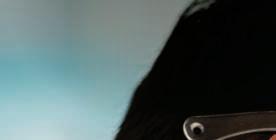



































FOCUS ON St Dunstan’s College

INSPIRING EDUCATION FOR TOMORROW’S WORLD


























































FOCUS ON St Dunstan’s College

INSPIRING EDUCATION FOR TOMORROW’S WORLD

















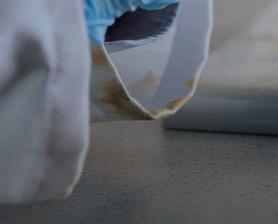













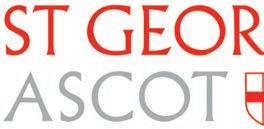
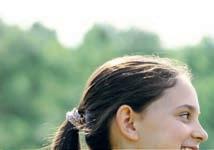


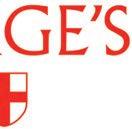








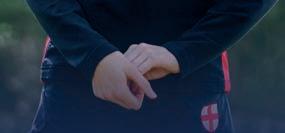









Emma Watson joined St Catherine’s in September, having previously led Berkhamsted Girls. With a First in Aerospace Engineering and an MBA with Distinction, her early experience included spells at Sandhurst and the Army Air Corps as a Lynx pilot and Flight Commander. In this issue, she discusses the importance of helping young people to to not only do well academically, but to do good through their actions and choices.








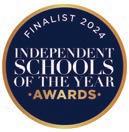



Danny Robins began his career doing stand-up in Newcastle, and at Bristol University he was part of comedy trio Club Seals, with Marcus Brigstocke and Dan Tetsell. His writing credits include Ruby's Rare Records and The Cold Swedish Winter for Radio 4. He has been labelled 'go-to spook guy', with the spectacular radio, TV and stage success of Uncanny, as well as his gripping podcasts. In this issue, he talks about his new children's book, and the fun of becoming a ghost detective.

As ladies' maid Phyllis Baxter in Downton Abbey, Raquel Cassidy is part of the ensemble cast that won a Screen Actors Guild Award in 2015, also appearing in the three Downton films. Other roles include Miss Hardbroom in The Worst Witch and Frankie Martin in The Good Karma Hospital . She studied languages at Cambridge and embarked on an anthropology PhD before being lured away by stage lights. In 'Making of Me', she recalls convent school days in Hampshire and discovering her love of drama through old movies.

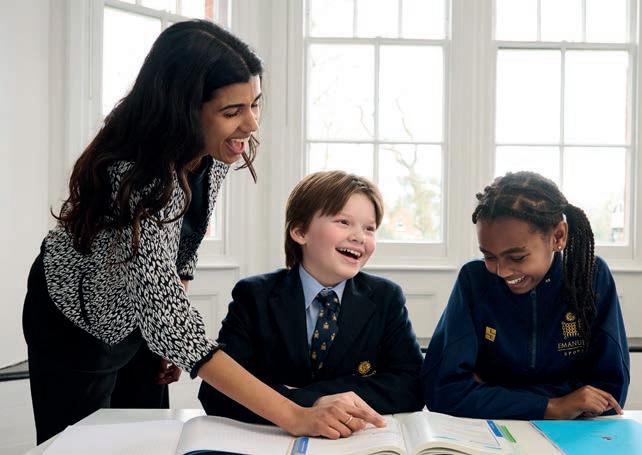

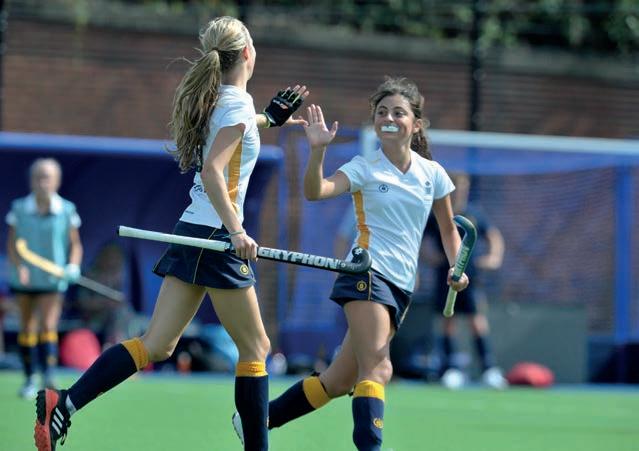








Irfan Latif took up his role at Royal Hospital School in September 2024. Previously Principal of DLD College London, he has worked across the sector, including as Head of Sexey's and Deputy Head (Academic) at Bedford. Educated at Emanuel School and UCL, he serves on the board of the Boarding Schools’ Association (BSA) and the Independent Schools’ Association (ISA). In this issue's '60 Seconds With', he discusses his background and educational philosophy – and what makes a great school.

Author and podcaster
As host of the podcast Everything Under the Sun Molly Oldfield answers tough questions from children everywhere. A fortuitous meeting with John Lloyd while she was a student at Oxford led on to her role as the original QI Elf – and that's where she cut her teeth as a fact finder extraordinaire. She writes a weekly Guardian column and is author of several factual children's books. In this issue, she talks about her latest, answering 366 questions sent in from all around the world.

Director of Student Recruitment and Admissions, TASIS England
Joshua Clark grew up in Arizona and, a er studying Political Science and Philosophy at Purdue, and then a Master's of Education at the University of Southern California, he returned to home turf to work at an Arizona boarding school. He moved on to schools in Maine and then Hawaii before relocating to the UK to join TASIS England in 2020. In this issue, he explores how technology can be a valuable tool to support personal learning journeys at international schools.


Headteacher, Slindon College
With over a decade working in special education, Sotiria Vlahodimou became Head of Slindon College in 2022. Her first degree was in Medical Microbiology, and she gained an MSc while working in pharmaceuticals. She studied for her PGCE at Chichester, working at a West Sussex school while gaining her SENCo qualification. In this issue, she discusses how we can best manage the growing demand for SEN education and share specialist resources and expertise.

Author
Nat Harrison was born on Ascension and the rest of her childhood was divided between the West Country and Hong Kong. Her career has seen her earn her stripes as burger flipper, bingo caller and ice-cream whipper, but also work for some of the most illustrious tech companies in the US, Asia and Europe. She's a graduate of Bath Spa's Writing for Young People MA – where she finally developed a long-imagined plot. In this issue, she talks about the inspirations for her gripping first novel.

Global Director, MPW Group
James Barton studied Archaeology and Ancient History at Warwick University, followed by an MA in Performance Philosophy. Working in education for more than 15 years, he has authored Trotman Getting Into.. guides across a range of academic subject areas, as well as giving talks to, among others, TEDx and 'How To Academy'. In this issue, he talks about how artificial intelligence (AI) has potential to be a powerful force for good in education – but always in a supporting role to the teacher.


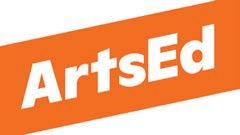


“Attending ArtsEd has been one of the greatest privileges of my life, a truly life changing experience that has shaped me into the person I am today. Thank you ArtsEd!”
Sixth Form Student


Day School
Year 7 - 9
GCSE

Sixth Form A-Level BTEC
Welcome
With the new academic year in full flow, education is rising up the agenda in wider public discourse. Challenges around mental health, SEN provision and the impact of VAT on school finances are ‘hot button’ topics. But equally pressing challenges are exercising minds, not least the rapidly evolving university and careers landscape. Graduates are facing the toughest job market in decades and, necessarily, this is leading to soul searching about what kind of future we need to prepare children for.
This is certainly something that St Dunstan’s College, this issue’s Focus feature
cheat’s best friend if not managed well, but it also seems certain to revolutionise personalised learning – providing extra stretch or support for students. I like the assessment by James Barton of MPW, that AI remains a tool – even a co-pilot – but it can never replace human interaction and the wisdom of teachers (page 41).
I’m rather envious of the students thinking global for their university years. Where once it was anglophone options only, now there are accessible choices across Europe, the Middle East and even further afield. ‘Beyond the Big Four’ is a fascinating exploration of regions and universities that are worth putting on your map (page 142).
So many wonderful creatives have contributed this time. Danny Robins talks
“AI MAY BE A CHEAT’S BEST FRIEND, BUT IT SEEMS CERTAIN TO REVOLUTIONISE PERSONALISED LEARNING – PROVIDING EXTRA STRETCH OR SUPPORT FOR STUDENTS”
(from page 28), has front of mind. Forward thinking from its inception, it is a truly inspiring school to visit, and with a keen grasp not only on exam grades (which are excellent) but also on those vital extra elements that help young people enter the adult world with confidence and purpose. Head of Senior School Jade McLellan says the school is not afraid to talk about leadership – about putting the advantages a first-class education provides to good use by giving back.
Every school is keenly aware of the impact of AI, and you will find many insights in this issue on how it may reshape education, exams and – ultimately – jobs. There are positives. AI may become a
ghosts (page 72), Molly Oldfield discusses her work answering questions from children everywhere (page 176) and debut author Nat Harrison describes the inspiration for Racing the World, her take on Jules Verne’s classic (page 180). And it was a huge pleasure to talk to two pantomime greats about this uniquely British entertainment (page 192). The wall of sound from children in the audience is, for both of them, the magic ingredient in a great panto. I reckon we’d all benefit from a spot of madcap humour and mayhem to mark the turning of this year.
Libby Norman EDITOR
16 SCHOOL NEWS
What’s going on in the world of education
23 VALUE-ADDED MUSIC
How British orchestras are working to keep music going in our schools
25 POETRY IN MOTION
Poetry by Heart is back, and with a new film showcasing the impact of verse FOCUS
28 PROGRESSIVE VISION
St Dunstan's College has never been afraid to be di erent, and its vision of progressive education for the 21st century is paying dividends
35 ADMISSIONS PLANNER
Pointers from the Master of Dulwich College on the admissions process
43 INCLUSIVE EDUCATION
Slindon College on how children with SEN are being supported PREP
46 MAKING SENSE OF SCIENCE
How schools embed key scientific principles –and a sense of wonder – in the prep years
72 SPIRIT GUIDE
Danny Robins on why children today love ghostly mysteries just as much as he did



senior
90 MUSIC MATTERS
Music delivers skills for life, and a sense of community – two schools share their philosophy
102 RIGOUR AND CREATIVITY
ArtsEd on why academic rigour and creative energy belong together in education
112 WHATEVER HAPPENED TO SATURDAY JOBS?
Today's teenagers may be missing out on a rite of passage – and valuable career skills
120 GIRL GOALS
Investing in girls' football brings major wellbeing and education benefits
129 ASK THE EXPERTS
Your education questions answered
137 BRITISH IS BEST?
A Sevenoaks alumnus considers if British education remains the gold standard
Sixth form
142 BEYOND THE 'BIG FOUR'
New destination countries may be better value for international students
150 LATTICE PATHWAYS
The Head of St George's Ascot on 'wiggly' career journeys


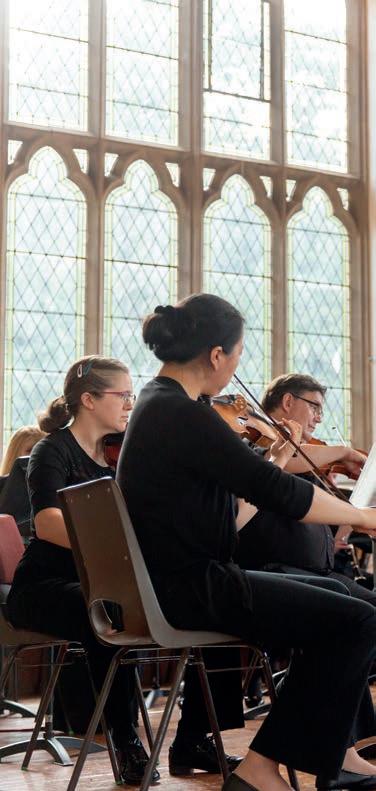
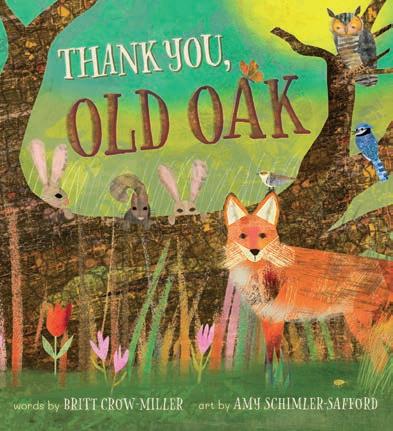













Henry Price will be Principal of Rugby School United Arab Emirates from August 2026. The Headmaster of Oakham School since 2019, and of Wellington, Somerset before that, he was Head of Classics and a Housemaster at Rugby School in Derbyshire from 2001-14. Rugby’s UAE opening will be co-ed, welcoming students from 3 to 18.
“Taunton pupils trained for two years before their Channel challenge – some couldn’t even swim at the outset”

Millfield Prep School has been named the UK’s Best Sports School for 11 years. Recently, Millfield swimmers were crowned IAPS National Champions for a record 37th (girls) and 23rd (boys) consecutive year, while U12 boys’ cricket were named county champions and pupils made the podium at an IAPS tennis tournament.


WWF’s Happy by Nature initiative aims to tackle what it calls ‘green space inequality’ in primary schools. It highlights the absence of natural features such as grass and trees in many playgrounds, replaced by hard surfaces and fixed play equipment. WWF will provide funding, expertise and free toolkits to help schools improve nature-based play.
Berkhamsted Boys’ and Girls’ first teams in rugby and lacrosse played Northampton School for Boys and Moreton Hall at Saracens’ StoneX stadium in early October. Thrilling games ended in losses for Berkhamsted, with neither match defined by final score. “I’m just really proud of how we came out there and fought back,” says lacrosse captain Ella W.
Nine 13-year-old pupils and four staff from Taunton School swam the English Channel recently, raising almost £8,000 for military charity Scotty’s Little Soldiers. This was the culmination of two years’ training – some pupils couldn’t swim at all at the outset. They are Taunton’s ninth team to achieve this Channel feat.
“It is what you read when you don’t have to that determines what you will be when you can’t help it”
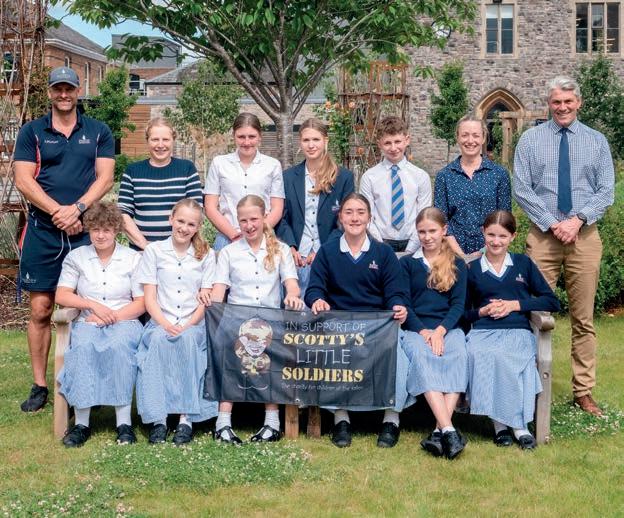
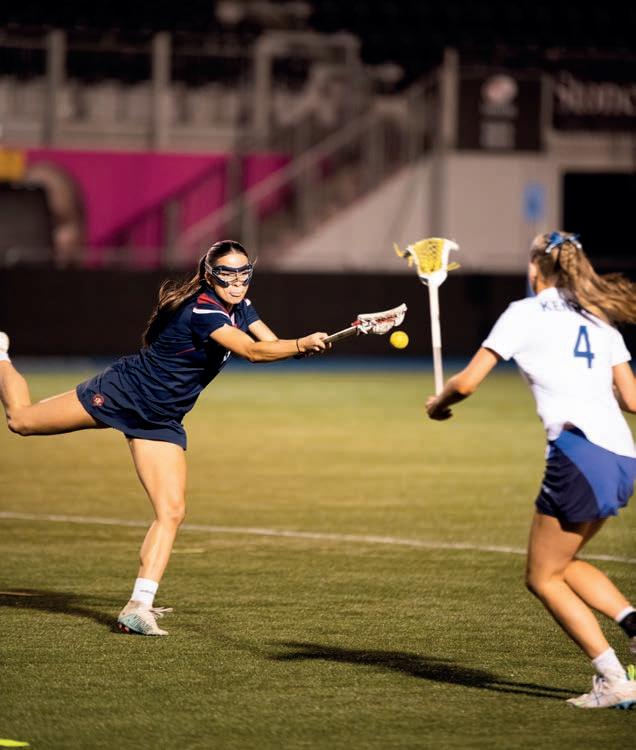
Wymondham College, Norfolk has a new Principal, Emma Arrand, who joined at the start of the academic year. She was formerly Senior Deputy Head at Monmouth School. Wymondham is the largest state boarding and day school in the UK – the team say this appointment marks an exciting new chapter in its history.
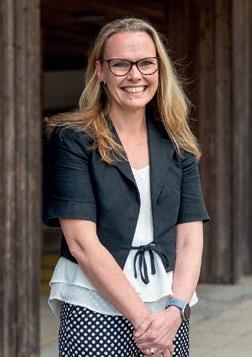
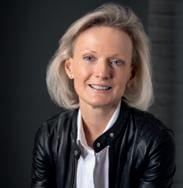
Simply Learning Tuition has appointed Alison Melrose as Director of Client Services, taking up the role in January.
She has three decades of experience in leadership roles across independent schools.
“I look forward to working with the team to ensure families receive the very highest level of personalised support,” she says.

CO-ED SIXTH
Heathfi eld School in Ascot will welcome boys into its sixth form next September. The school, part of Mill Hill Education Group, opened its Cadogan Sixth Form Centre in 2022. Headmaster Jonathan Williams says the move brings benefits for all students, with small A-level classes, broad subject choices and diverse perspectives.




The Princess Royal Training Awards in August recognised 57 organisations for commitment to learning and development. They range from construction and education to media and heritage cra sectors. Over the decade that the awards have been running, winners have trained almost a million people in the UK and Ireland.

Students from Cottesmore School have become published authors. Chosen from pupils nationwide, 22 young poets from the Sussex prep earned a place in Wonder Verse, a poetry anthology that celebrates creativity, imagination, and literary talent among children.














“Music
should be front and centre in education... It opens a door in a child’s mind”
ALISON BALSOM
“The fascination of any search after truth lies not in the attainment...but in the pursuit, where all the powers of the mind and character are brought into play”
FLORENCE BASCOM

Clare Ives is the new Head of The Leys in Cambridge, joining in its 150th-anniversary year. She was previously Senior Deputy at Sevenoaks School and held senior roles at Canford. Dr Ives studied History at University of St Andrews, also completing a PhD, and moved into education from the Civil Service.
“WorldSkills’ Team UK have reached a training milestone in preparing for next year’s major event in Shanghai”








Old Buckenham Hall School, Suff olk joins Rugby School Group from January 2026.
The two schools have always enjoyed a strong relationship, with many of the co-ed prep’s pupils joining Rugby for their senior years.
“We are delighted by the opportunities the merger represents for our children,” says OBH Headmaster James Large.

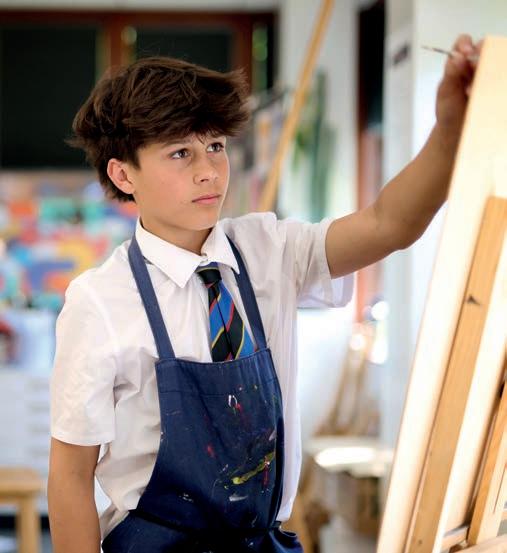
St Albans School has enhanced its scholarships programme, adding Creative and Technical to its existing options – Academic, Music, Choral, Sport, Drama – from September 2026. At 11+ and 13+, students can apply for a scholarship in Art, Creative Writing, Computer Science or Design & Technology. The school also welcomes Year 7 girls from next September.
The Big Bang Research Project is a seven-year exploration of the benefi ts of off ering woodwork in education settings to children aged from three to eight. Over 30 countries are gathering data. Peter Moorhouse, Honorary Research Fellow at University of Bristol, is UK contact and the survey is running until the end of December.



At EuroSkills Herning 2025, Team UK reached a milestone in its journey of skills development in preparation for next year’s ‘skills olympics’ in Shanghai. Trained by WorldSkills UK, in partnership with Pearson, Team UK received a Bronze medal and fi ve Medallions for Excellence in categories including engineering, restaurant services and hairdressing.
“Challenges that come up from time to time in life are our little learning tools, our little steppingstones. If we didn’t have those things in our life, how would we learn anything?”


Caolan Wukics is the new Head of Boarding at Holmewood House School, and he and his partner Isobel are also Houseparents. Together, their role is to create a home-from-home at the Kent prep. “Watching children fi nd their feet, their voice and their independence makes this the best job in the world,” he says.
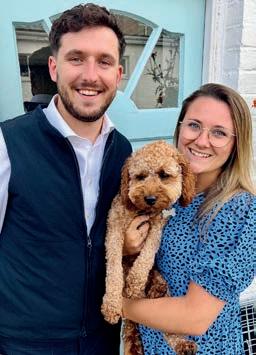

In his keynote to the Downe House Conference in June, Michael Gove called upon schools to return to handwritten exams and more oral assessments to tackle AI-enabled cheating. The Spectator editor and former Education Secretary was speaking to an audience of 200 invited guests from independent and state schools at this annual summer meeting of education minds.
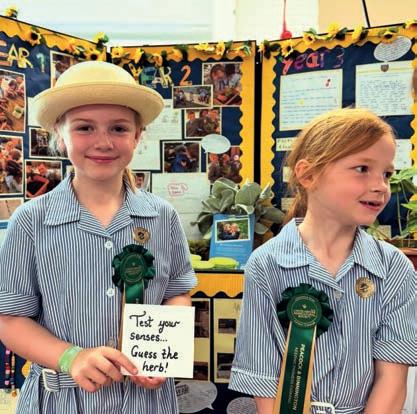
St Martin’s Prep in Grimsby has been named Independent School of the Year by SuperKind as part of its annual Social Impact Awards. Pupils earned 1,384 Social Action Badges through the initiative for volunteering, event organising and fundraising – the highest average number of registered social actions per student nationally among independent peers.




Frensham Heights is celebrating the approach that made the school so radical when it opened in 1925. Its female founders set out to educate the whole child in an atmosphere of mutual respect. Centenary celebrations started with 1925 Student Day and included 500+ students dancing the Charleston.

Haywards Heath Prep Cumnor House Sussex has not only unveiled an extensive playground redevelopment but has also welcomed Sarah Gibson, previously with Dulwich College, as Head of Pre-Prep & Nursery. “It is a privilege to be leading a setting where children feel confi dent, curious and happy,” she says.















“My idea is that there is music in the air, music all around us; the world is full of it, and you simply take as much as you require”
“The illiterate of the future will not be the person who cannot read. It will be the person who does not know how to learn”
ALVIN TOFFLER

Naomi Atkins is Founding Principal of Bedford School Mohali, which opens in April 2026. Her career includes leadership roles at Dulwich College in China, The British School Jakarta and The Stephen Perse Foundation. “This is an exciting opportunity to create a school community that combines academic excellence with exceptional pastoral care,” she says.
Schools with swimming pools are being called on to help support swimming. By providing scheduled access as community pool partner with local Turtle Tots franchisees, they can address the chronic shortage of facilities and earn extra revenue. Turtle Tots classes currently get over 15,000 babies and preschoolers swimming each week.
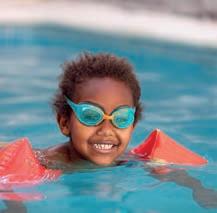
A new Sixth Form Centre has opened at Pangbourne College, providing a dedicated space for students to prepare for life beyond school. Designed to enrich the student experience, it includes areas for independent study, collaborative work and social time, encouraging a balance of academic focus and growing independence.
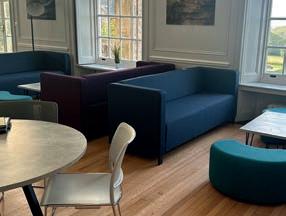

Elizabeth Knight is the new Head of Wycliffe College Prep in Gloucestershire. She was previously Head of Strategy at IAPS, leading on key initiatives across the prep sector. Prior to that, she held senior leadership roles at several independents. “Wycliffe is clearly a very special place and it will be a privilege to build on its many strengths,” she says.
St Edmund’s College & Prep in Ware, Hertfordshire welcomed Cardinal Vincent Nichols, Archbishop of Westminster, to celebrate Mass on the Feast of Saint John Henry Newman. The Archbishop’s visit marked the Prep’s 150th anniversary and the rededication of its Chapel, St Hugh’s, celebrating faith, learning and community.


Eltham College has announced a partnership with Super League netball franchise (and reigning champions) London Pulse. The partnership gives students across its family of schools access to top-flight training and coaching. Eltham also becomes a Pulse ‘hub’, opening up further great opportunities for talented netball players across the local community.
“As a Pulse ‘hub’ Eltham now offers access to top-flight netball training for its schools and community”
Head of Framlingham College Prep Simon Roche made a 24-hour run from Lord’s back to the school to help raise money for a new cricket pavilion. His ultramarathon took him through Camden, Epping Forest, Essex countryside and back home to Suffolk. Many pupils and parents joined him on the last 10km, 3.5km, and victory lap.
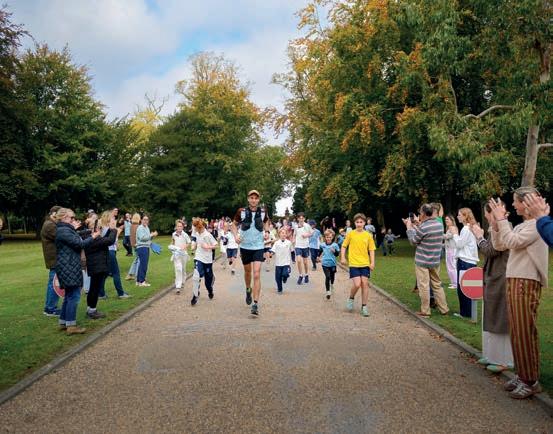
“THE WORLD WE BUILD TOMORROW IS BORN IN THE STORIES WE TELL OUR CHILDREN TODAY. POLITICS MOVES THE PIECES. EDUCATION CHANGES THE GAME”
JONATHAN SACKS


The
Association of
British Orchestras is highlighting the lifelong value of music education, whatever young people’s future pathway
The Association of British Orchestras (ABO) is highlighting the value of studying music at school – and its positive impact in diverse careers. The aim is to raise awareness of the social and economic impact this has on the UK and its industries. Linking to its ‘An Orchestra in Every School’ initiative, the ABO is targeting young people choosing GCSE and A-level subjects for the 2026 academic year and beyond. The aim is to emphasise how live music making delivers a diverse skillset and benefits wellbeing and work-life balance.
A recent survey of adults who make music in their leisure time found that transferable skills, including practice and perseverance (89%), focus and concentration (87%) and teamwork and collaboration (85%) proved vital in
respondents’ career paths. The survey, conducted by Making Music in collaboration with the ABO, also revealed that for almost 80% of respondents, music education developed performance and presentation skills transferable to their working life.
Almost half of respondents have used these skills in non-music or nonSTEM professions and over a quarter cite a direct skills benefit in their STEM career. Respondents find music helps with areas such as social skills, physical awareness and proprioception. The most common professions which respondents work in are financial services, medicine, emergency services and religion.
More than a fifth work in education.
Almost 80% of respondents play in an ensemble, orchestra or band and listen to music at home in their leisure time.
Respondents noted how live music helps them balance home and working life.
“Live music making in all its forms

develops a range of skills that can be utilised in any career path,” says Sophie Lewis, Chair of the ABO. “There are numerous benefits to having access to live music-making experiences from a young age, whether that is academic achievements, developing confidence, creativity or improvements to mental and physical wellbeing.”
Laura Baxter, Creative Learning Director of Scottish Chamber Orchestra (SCO), says: “Access to high-quality music education, and all the knowledge, joy and connection that brings, opens doors that help children and young people move from school into the world around them and to do so confidently, creatively and in community with others”.
While there has been some growth in the number of GCSE Music entries over the past two years, a lack of school resources across many parts of the state sector means some young people rely on alternate approaches to develop their music-making skills – including online tutorials and self-study.
The ABO and its members pledged to deliver over 1,000 live music-making opportunities this year, with the aim of giving over a million young people the opportunity to experience live music. These activities take the form of workshops, training sessions and live performances.
Find out more about An Orchestra in Every School (#AnOrchestraInEverySchool) and ABO’s work at abo.org.uk



The
annual poetry competition Poetry By Heart
is open, and there’s a
forthcoming documentary about
this
transformative experience
Poetry by Heart, the national poetry speaking competition for young people, opened on National Poetry Day in early October with a call to all schools to sign up. It has also released a preview of Poetry By Heart: the Movie, a feature film documentary following schools as they enter the competition.

The film details the impact that Poetry By Heart has on young people – from poetry being used to create unity in challenging environments to encouraging children to explore and manage their emotions. It was filmed in schools across the country, from Newcastle to the Scilly Isles and Great Yarmouth to Barrow, and features freestyle entries, poetry clubs and sessions where teachers and pupils work on poems, run competitions and fine-tune video submissions.
The full documentary will be released next year. “Poetry belongs everywhere,” says Dr Julie Blake, co-founder and co-director of Poetry

By Heart. “But it has a special place in schools. As revealed in our movie, teachers and the young people who take part in Poetry By Heart understand the joy, satisfaction and deep learning that comes from knowing a poem by heart.
“We can’t wait to release our film on a big screen in 2026 and in the meantime, we urge all schools to sign up now,” she adds. “It doesn’t have to be a big undertaking but however you choose to take part, the impact will be huge.”
Poetry By Heart is open to all schools and colleges in England and invites young people to choose a poem they love, learn it by heart, and perform it out loud. Schools hold internal competitions to select their own winners, with the best from each region then invited to a Grand Finale at Shakespeare’s Globe Theatre, London next summer to compete for the title of national champion. This year, over 1,600 schools across England took part, with 128,000 performances and 4,300 finalists.
Find out more about Poetry By Heart, with information about age groups and how to enter, at poetrybyheart.org.uk
Watch a preview of the forthcoming documentary at vimeo.com/112314 3489/16dc5f46f6?share=copy
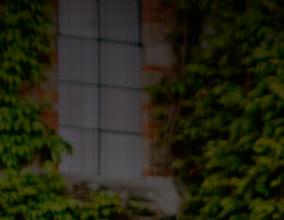




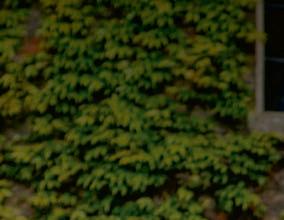


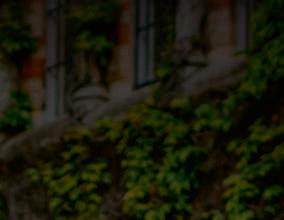

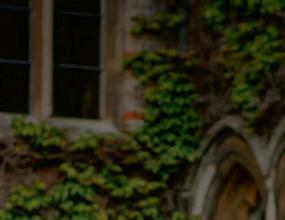

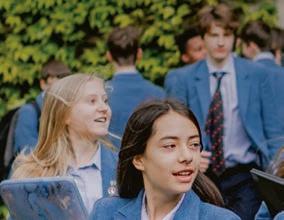


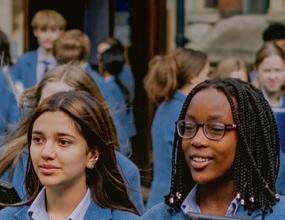
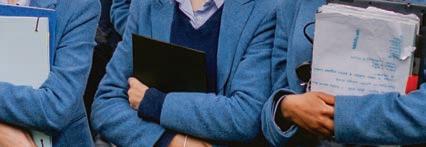



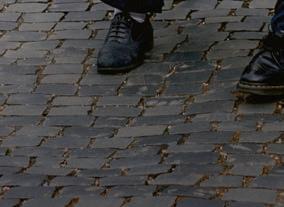



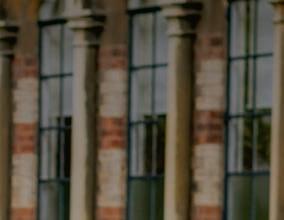
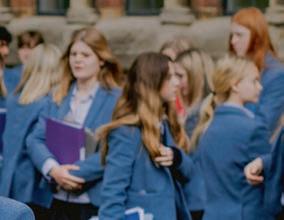


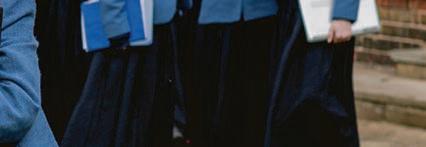
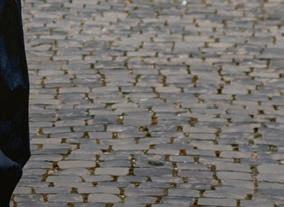





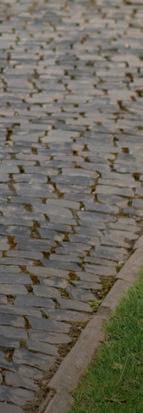


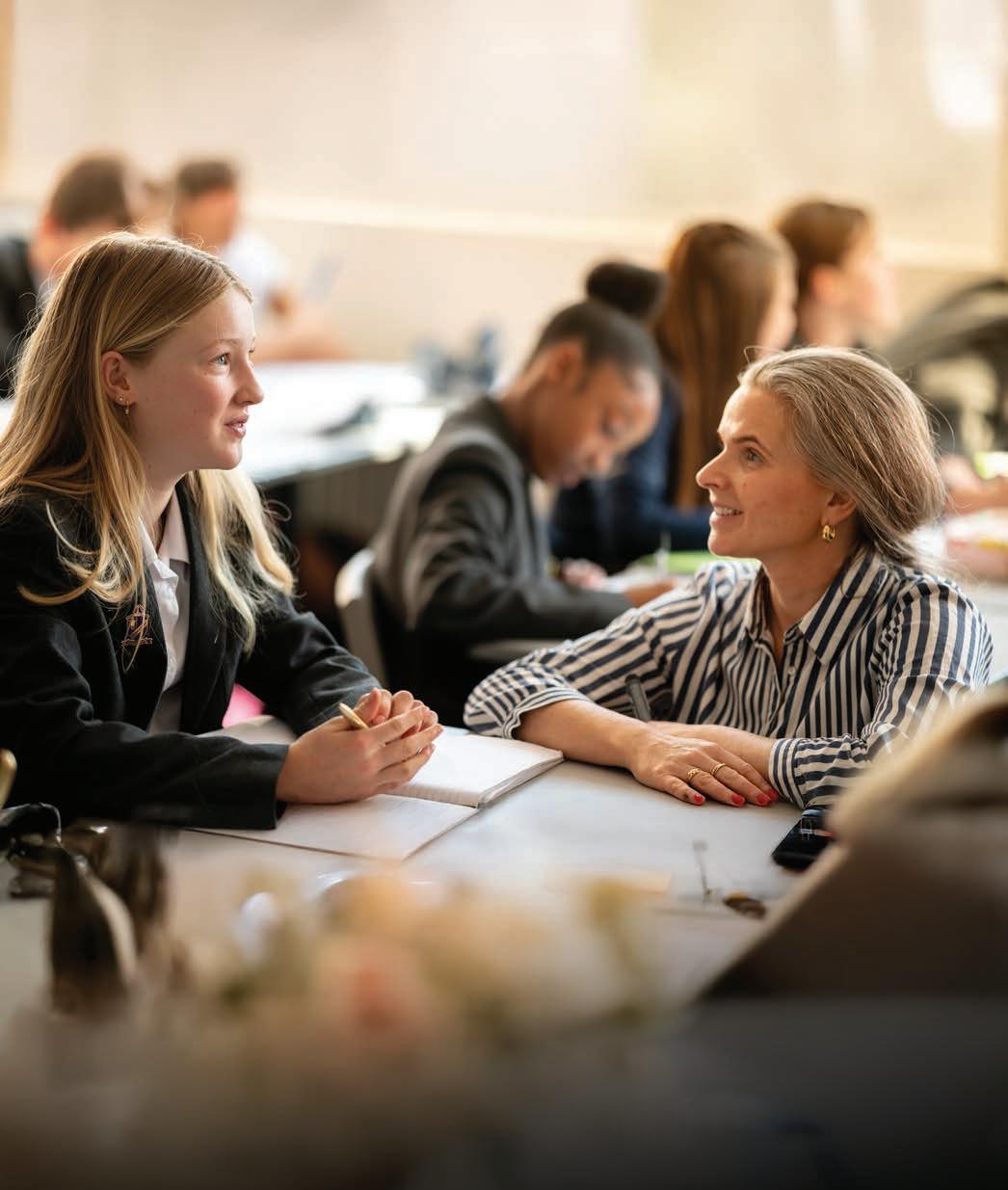
OPENING MINDS
Page 28
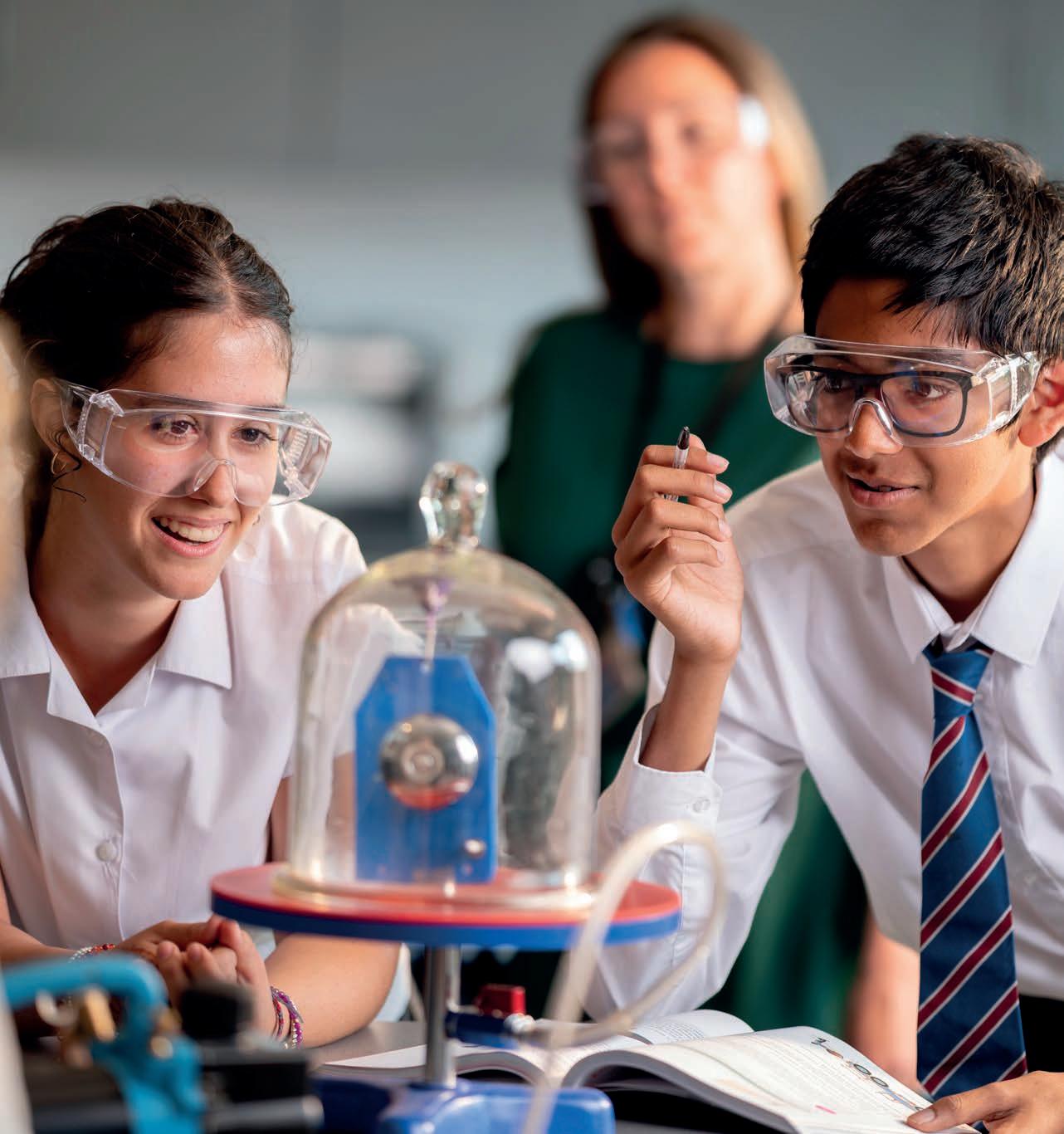
“One of our biggest successes last year got into Oxford to read Music. He is a brilliant jazz musician. That’s what we like. We want the children to go out and be somebody”


St Dunstan’s College has never been afraid to be different, and its model of a progressive education for the 21st century is paying dividends. Absolutely Education finds out more about its far-sighted approach

SLIBBY NORMAN
t Dunstan’s College is a school with a bold approach – a willingness to be different. But then, over the course of its history, it has form in this regard. It opened in 1888 in then leafy Catford (rebirth of a medieval school associated with St Dunstan’s-in-the-East). The founding vision was radical at a time when classical education ruled – here was a place setting out to prepare pupils for the modern industrial age.
The grand Victorian Gothic main building designed by E.M. Barry may have harked back to the medieval, but St Dunstan’s had the very first school laboratories in the country, a chemist for its founding headmaster and it favoured a heuristic (hands on and investigative) education. Learned educators travelled from far and wide to see what the new school in Catford was doing.
South London grew and green spaces shrank, although St Dunstan’s still had its grand building and 40acre site. Somewhere around the late 1990s, St Dunstan’s began to look out of kilter with its urban setting.
When Nick Hewlett took up the reins as Head in 2014, he came with a clear vision – to revitalise the school’s founding principles in a way that worked for the 21st century. He saw much to celebrate, and work to do on academics and facilities. But, more than that, the school lacked a clear sense of place. And so he pivoted to make a strength of its very location.
“I felt there was a huge opportunity to flip the Catford narrative and say, ‘look, we’re in the most dynamic, diverse, socioeconomically interesting borough of London – we have an enormous asset here’,” he says. He also saw something coming through in the independent-school landscape – what he describes as:
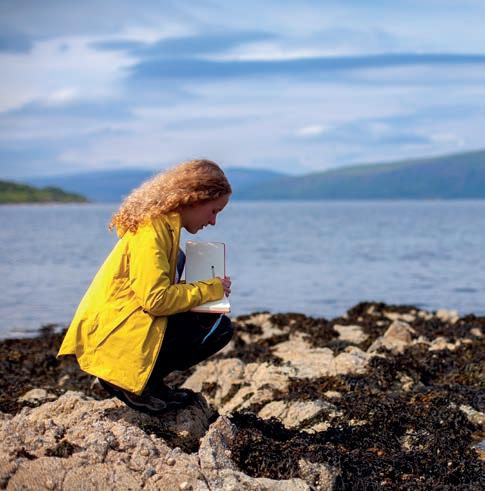
“a changing Millennial purchaser for independent education”.
“They wanted the best for their children, but they just felt as though there was a values disconnect between the traditional private school and what they wanted as a family, and what they wanted for their children.”
Just over a decade on, Nick Hewlett is CEO of St Dunstan’s Education Group – leading a family of schools that comprises not only St Dunstan’s Senior and Junior, but also nearby preps Rosemead and St Christopher’s The Hall. There are now some 1,800 pupils across four schools on seven sites. “I am proud of it because we’ve worked really hard,” he says. Along the way, St Dunstan’s has transformed its facilities. Additions include a superb £25m STEM Centre, a theatre and performing arts space and a thoroughly modern learning resource centre.
Central to this success, and to Nick Hewlett’s original vision, is that St Dunstan’s College has re-emerged as a heavy hitter on academics. It has picked up a whole cabinet full of awards in recent times, including
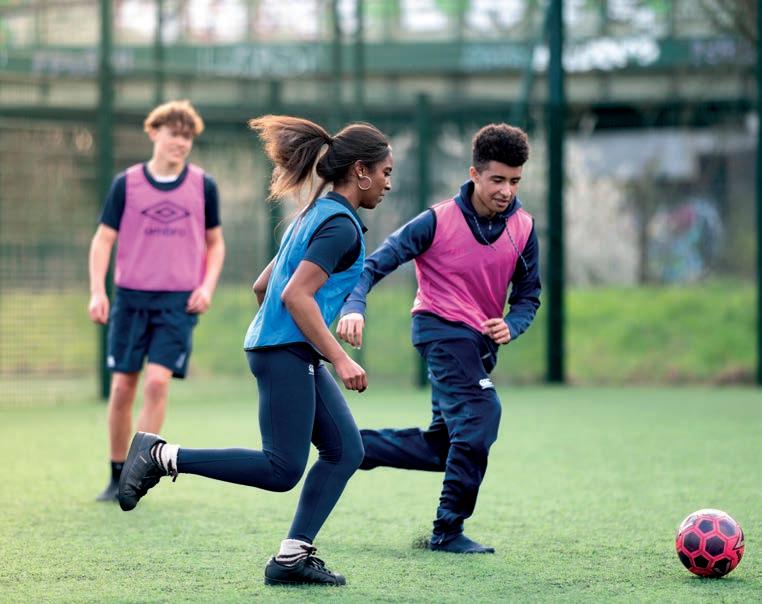
the big one – TES Independent Senior School of the Year. Last summer, the school celebrated its best ever A-level results (89% A*-B with 64% of students awarded A -A*). It was a similar story at GCSE, where 55% of all grades were awarded at 9–8 (A*).
Jade McLellan, Head of St Dunstan’s Senior School, has been integral to this bold vision for renewal, as have many others on the Senior Leadership Team. “ I started in 2016,” she says.
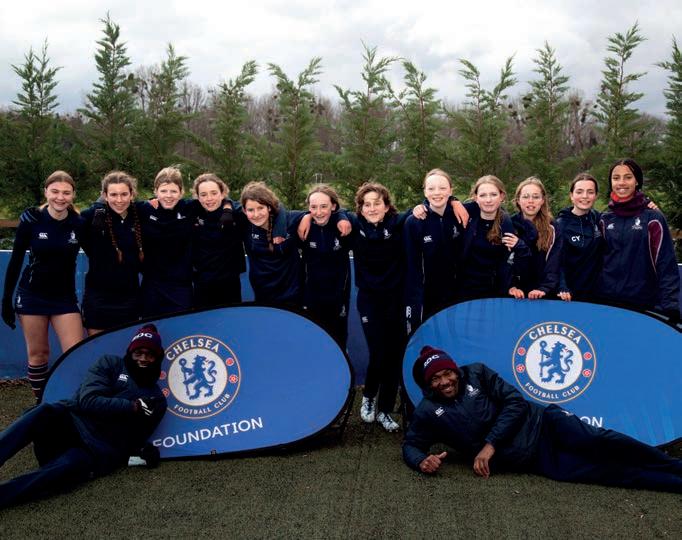
“We’ve all been part of the journey for a really long time. It lives in us, which is helpful for the continuity of the school.”
Such longevity among an independent school leadership team is unusual. Another distinctive thing about St Dunstan’s is the diversity of staff backgrounds. Jade McLellan went to a state school before studying French at Oxford. She, like many of the team, has garnered broad experience across state and independent sectors. She says it’s important to understand the wider landscape – and that goes for students as much as staff. “For our children to be able to move between different environments and feel comfortable is important,” she says. “People in our community understand that there are lots of different lives being lived in London.”
This is, of course, a salient point for any London-educated child. They travel across different parts of the capital and see those different lives. So who are the students of St Dunstan’s?
It’s a question Jade McLellan gets asked a lot by prospective parents. “They are quite local. A slight stretch into the City and south, but it is mostly between Dulwich and Blackheath, taking in areas such as Forest Heath and Honor Oak – that swing around

the South Circular is the majority.
“In terms of the type of families, they want the progressive, forward-thinking approach to education. In terms of the type of child, we generally say you have to be up for trying things and being quite an all-rounder.” There’s an even split of boys and girls and up to 150 in each year group – not a huge cohort.
“So it’s not enough for you to be on the football team and nothing else,” she adds. “You can’t hide. Everyone has to be willing to join in and try new things.”
Joining in, yes, but certainly not fitting in to an identikit student profile.
“Individuality is something we really stress,” says Jade McLellan. “There are lots of ways to be a boy here and there are lots of ways to be a girl here.
When you look around you see boys and girls who are all quite different.”
St Dunstan’s loves individuals, but they do have to get down to work.
“Academic selection is what we want to offer. Academics is what we offer best.” The school’s ascent up the school rankings has been dramatic. It was somewhere around 200 when she joined in 2016. “We’re now in the 60s, which is a huge, huge change in ten years.”
St Dunstan’s is generous with scholarships and bursaries, giving many gifted children life-changing opportunities, but these are proper scholarships. “Your child has to be able to keep up with the pace, so that’s really important, but equally there is such a menu of choice. The academic
drive and the scholarship drive are not about, ‘well you need to be an engineer, lawyer or banker’. If you want to go to art foundation school or drama school, brilliant – let’s prepare you for the best in the country,” says Jade McLellan.
“One of our biggest successes last year is a student who got into Oxford, but to read Music. He is a brilliant jazz musician. That’s what we like. We want the children to go out and change the world and be somebody.”
Leadership is talked about openly in discussions with students, and this year it sits alongside school-wide academic themes of respect and integrity. St Dunstan’s Head has a strong background in school pastoral care and she says we adults do have
“For our children to be able to move between different environments and feel comfortable is important – there are lots of different lives being lived in London”

to be careful how much we load on young shoulders. “I talk to them in assembly about this – what are appropriate things they can do at their age, versus making them feel it’s their responsibility to fix the problems that we’ve created.”
There is much good work in support of local and London charities. “Start local, start with what you can do, and learn to make a difference that way.” But as students grow, the conversations grow with them – particularly around responsibility to give back to community. “We do think carefully about leadership. With Gen Z, and now Gen Alpha, there’s been a little bit of resistance about leadership and hierarchy, and we’re trying to push back on that,” she says. “You can’t have a leg up in society and not try and use that leg up to
give back. It’s not really fair.”
Academic stretch is all part of this – helping students to fulfil their potential – and St Dunstan’s invests in teaching and learning methodology, using scholarly research from organisations such as the Educational Endowment Foundation. There’s a Director of Teaching and Learning and a team around her who help children work smarter and work to their strengths. Academic selection does not exclude SEND children. “We’re trying to challenge the narrative that neurodiversity is some sort of deficit, says Jade McLellan. “Some of our brightest and best students in the school are on the SEND register because it brings huge, huge talents and strengths.” Positive messaging around diversity and

“Individuality is something we really stress – when you look around you see boys and girls who are all quite different”

inclusion is delivered through the Usherwood Programme. There’s also support through the Wellness Centre (established here very early), a calm space in the grounds which also provides peer mentoring, chaplaincy and reflection.
Academics sit alongside the timetabled co-curricular Forder Programme – 40 minutes every day after lunch. With over 250 activities, there’s every opportunity to develop passions and talents. Before and after-school clubs are plentiful and CCF is really strong – something that Jade McLellan says some prospective parents find puzzling. She then explains that the school sees no opposition between progressive education and traditions of service. But then, St Dunstan’s lost a quarter of its pupils in World War I. Their names are written on the walls of the magnificent Great Hall and their stories are told during Remembrance Day activities. Many Catford residents come to stand outside the school gates on that day – an annual reminder of the school’s deep local roots.
Sport is a big deal here – girls and boys are coached separately, but all
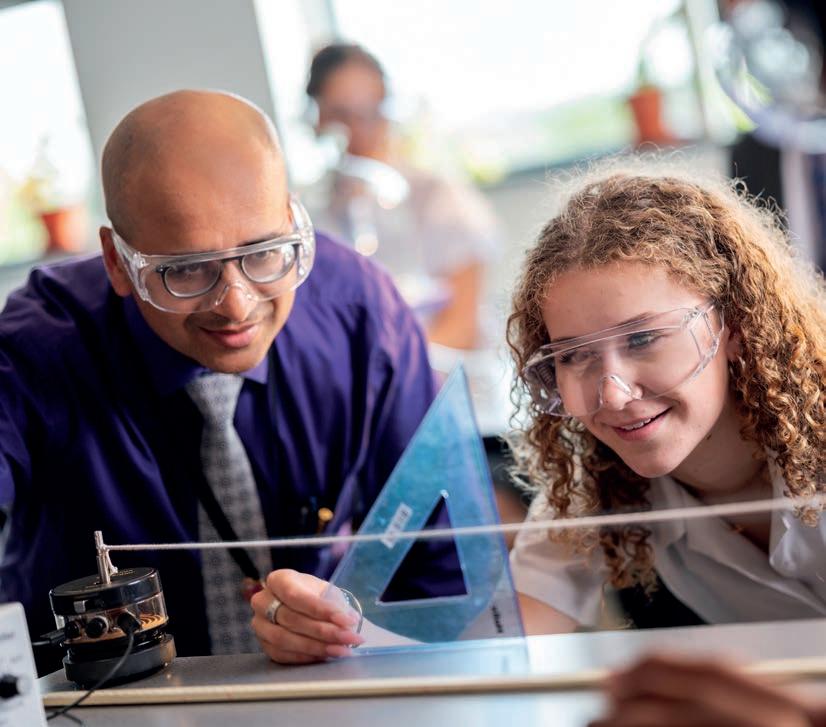
sports run on an equal opportunities basis. Football replaced rugby a few years back and the school has not looked back. “It has just been transformative – it appeals to our students so much more.” This year, two girls’ teams reached the ISFA national finals in football, and there’s a big investment to raise their game still further – and draw in more girl talent from the local community. A thriving partnership with Chelsea FC Foundation is ensuring top quality coaching for students, also benefiting the local community.

In Sixth Form, students embark on the St Dunstan’s Diploma alongside their A levels. This is a multi-strand programme of practical, creative and real-world experiences. Sixth Formers are told that more will be required in the world of work than A* grades – they need to have the character to put knowledge to good use.
“We have got to make sure they that they understand how to lead, how to communicate with people, how to have good values, how to have integrity,” says Jade McLellan.
In fact, character development and individuality have been cherished from the start. Students are reminded daily on the school badge – a blank white shield with the words Albam Exorna (adorn the white). This could have been dreamed up by a hip 21st-century ad agency, but no, it is authentic – as old as the school itself. “I consider myself so lucky that I inherited that school with the blank shield; what a beautiful thing,” says Nick Hewlett. “In 1888 they decided that they wanted each child to be themselves.”
That seems to sum up St Dunstan’s – a school confident in its progressive identity, and in celebrating its unique Catford traditions.
St Dunstan’s College, Stanstead Road, London SE6 4TY stdunstans.org.uk
Robert Milne, Master of Dulwich College, gives timely pointers on managing the complexities of the school admissions process

With admissions’ season underway, families and young people are getting to know schools and preparing for visits, tests and interviews. Every school knows how emotional this experience can be and works really hard to make it as positive as possible for prospective pupils and their families.
The most important point to keep in mind is that these admissions experiences are not about measuring someone’s value or talent, but everyone working together to feel confident that a young person will be happy and thrive at school over the coming years. It is made harder because decisions are made at a specific age for each child and there is no failsafe way to know how they may develop in the coming years. Time and again, I am amazed, in a good way, by the strides a young person makes over
time, given the right environment. By this, I mean a place where they feel they truly belong, are known, welltaught, encouraged and looked after. However, there are some key points to keep in mind during the admissions process and, regardless of the final outcomes, I hope that they prove useful.
• While it is hard to avoid looking at a school through the lens of your child’s age now, try to consider how a school might suit them in the years ahead. School years may well be the most concentrated period of positive development in their lives. Their needs alter, just like their character, year to year.
• Get beyond the publicity material, ask your questions and really listen to what senior leaders and teachers are saying. Connected to this point is
“This is not about measuring talent, but everyone working together to feel confident a young person will be happy and thrive”
the importance of shared values – what schools stand for, how they act, what they celebrate. If school qualities and values align with your family’s, that is a good way to start a positive relationship. Also think carefully about how you are made to feel during the process. Above all, do you feel welcomed, valued and heard?
• Speak to other families with pupils in the school. Of course, everyone’s views are shaped by personal experience, so getting a range of thoughts, often from those who may not naturally wish to ‘post’ but who you believe will offer a measured and clear perspective, is advised. Some schools offer a chance to chat with current families – I strongly recommend this opportunity if it arises.
• Discuss scholarships and funded places. There are usually opportunities to help young people gain entry and schools really do want to offer support if they can. Many schools, Dulwich College included, have social mobility embedded in their values and operations, so asking about funded places is always sensible.

• Finally, listen to current pupils, and – if the chance arises –those who have been through the school. In my experience, pupils are disarmingly honest in what they say.




Knowledge acquisition sits at the heart of education, says Head of Rugby School Gareth Parker-Jones –but learning how to use knowledge matters much more
Acquiring knowledge is not straightforward – it is a subtle and personal experience for every child. It requires patient and imaginative teachers, and a variety of sources and approaches.
For example, in subjects such as science, technology and maths, there are often right and wrong answers (the right ones are more usefully arrived at if you know how you got there). Arts subjects, on the other hand, require a process of interpretation, and students need to gain the confidence to express and defend their personal evaluations. What is the most important aspect of acquiring knowledge? Knowing how to use it! As children absorb information, they should also be learning how to think critically, to challenge what they have read and heard – to think for themselves.
Generative AI is an accepted (some say disruptive) factor in education. We cannot ignore it. Like many schools, Rugby has introduced a course to help students engage with AI, understanding what a powerful tool it is, while alerting them to its limitations and the need for careful navigation, especially with regard to referencing and plagiarism.
Students need to be firmly reminded that their thinking should not be outsourced to their computers.
How do we help students to learn to think for themselves? They undertake independent study to prepare for lessons. They read. The advent of technology and the growth of social media must
“As children absorb information, they should be learning how to challenge what they have read and heard –to think for themselves”

not eclipse the pleasure and intellectual benefit of reading a book. Reading is slow and solitary – a gear change in a student’s busy day. It requires concentration and encourages reflection, in which thoughts are examined and opinions formed.
Our students are expected to arrive at lessons with a sense of curiosity sparked by new insights based on their own study (and, of course, having mastered the necessary facts).
Our lessons are not tests. They are collaborative – as are most workplaces (and we remind our students of this). Teachers provoke questions and discussion to ensure each student’s understanding. We know that the ‘I’ve told you, you know it’ approach does not work. A sense of fun and mutual support is encouraged, as students learn to marshal their thoughts, test their memories, express their views and deal with challenges. They take ownership of their own learning.
Just as important as lessons and prep are opportunities for academic enrichment outside the formal curriculum timetable. Younger students
take part in cross-curricular sessions, which help break down the arbitrary boundaries between subjects. The English department collaborates with Music and Dance; Classics works with Drama and History; Computer Science joins History and Mathematics to look at cracking codes.
Older students can choose from a wide range of clubs and societies to develop their interests or find new ones. Our Sixth Form scientists are collaborating with Stanford University, using CRISPR gene editing to study mutations in fruit flies. Some of our humanities students are carrying out university-level research through the award-winning Schools of Empire project. Those with a passion for creative writing work alongside internationally renowned poets and attend an annual residential course with professional authors.

Why do we teach this way at Rugby? Because we believe that intellectual curiosity, nurtured in a spirit of collaboration, is the best way to acquire the knowledge, skills and confidence required for living in an unpredictable world. And for passing exams, too.
Mill on the Brue on the evolution of its outdoor education centre and the profound impact on both visitors and natural landscape

Over 40 years ago, a Victorian house and barn with 13 acres of fields and river valley were purchased with the intention of turning it into an outdoor activity centre. At the time, it was advertised as a nine-hole golf course but presented as chemically sprayed land – a green ‘desert’ with little wildlife, few trees and no hedgerows.
Now, all these years on, and with more land increasing the acreage to 25, Mill on the Brue Outdoor Activity Centre has been transformed into a beautiful and flourishing haven. With over 7,500 trees, hundreds of metres of hedgerows, organically grown flower gardens and large vegetable beds, the wildlife has returned.
We have deer, badgers, foxes, squirrels, bats, slow worms, grass snakes and many
species of birds – including buzzards and woodpeckers, house martins and swallows. There are insects such as solitary bees, the rugged oil beetle, plus many wildflowers and plants.
Our aim has always been for children and adults alike to experience nature which they can appreciate and learn from. Any building work undertaken has the environment very much in mind. This is reflected in materials used for insulation and heating – and with rainwater harvesting, a 49kw solar array and solar and thermal on all buildings.
Additionally, we have a food composter for any leftovers. This is eventually used as compost on the vegetables and fruit which are organically grown for our customers. This environmental ethos is a way of life, and we share Mill on the Brue with resident chickens, goats, pigs, sheep, a donkey and Shetland pony, bees – and our centre’s two cats.
Our major customers are school groups, usually primary in Years 5 and 6, who stay for either residential or day trips. We also welcome adult apprentices who come with their companies.
There has been much research to prove that experiencing nature in the outdoors has huge benefits in terms of mental health. Our many fun and challenging activities can also contribute to feelings of achievement, self-worth and satisfaction. They also build students’ understanding of how teams work, and the vital importance of communication.
For our young visitors, this is experiential learning at its best – whether this is being encouraged by your team mates to go that metre further on the high ropes, learning how vegetables are grown, abseiling down a tower, lighting a fire, or solving a problem which at first seemed overwhelming. We believe reviewing by
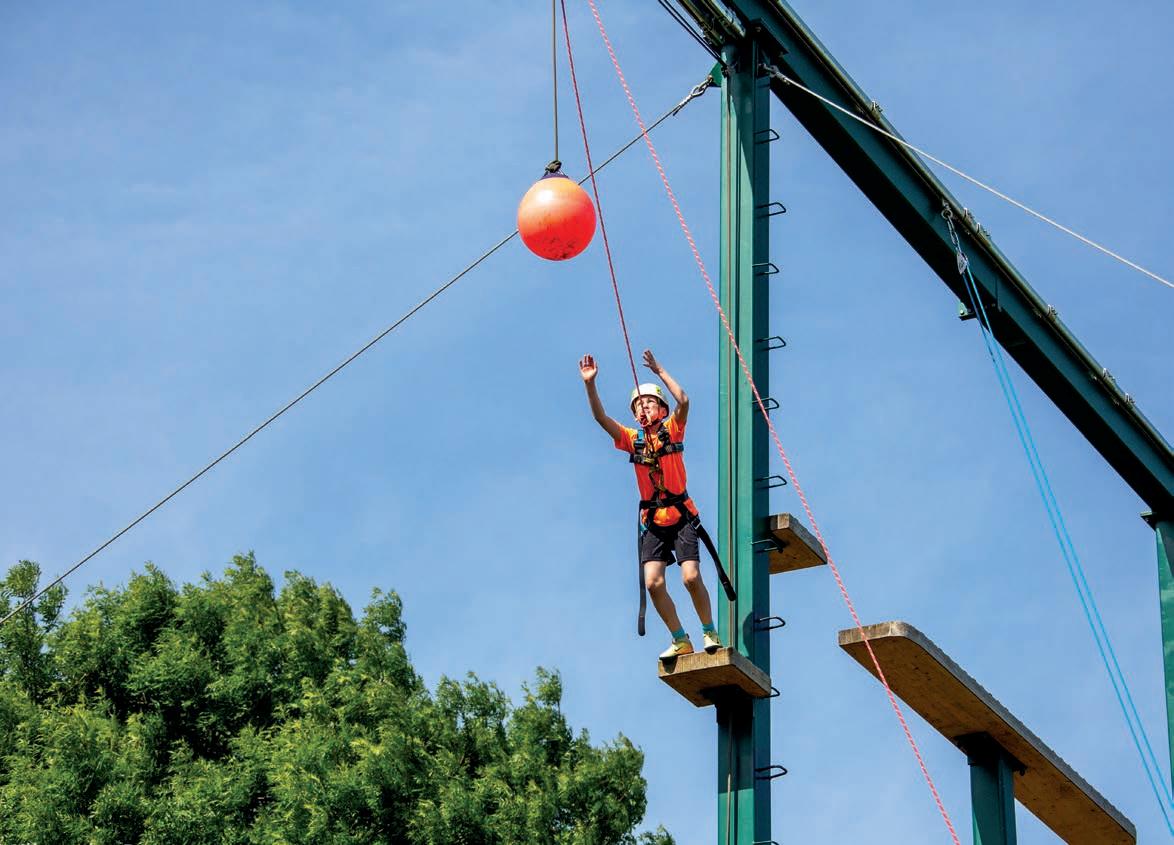
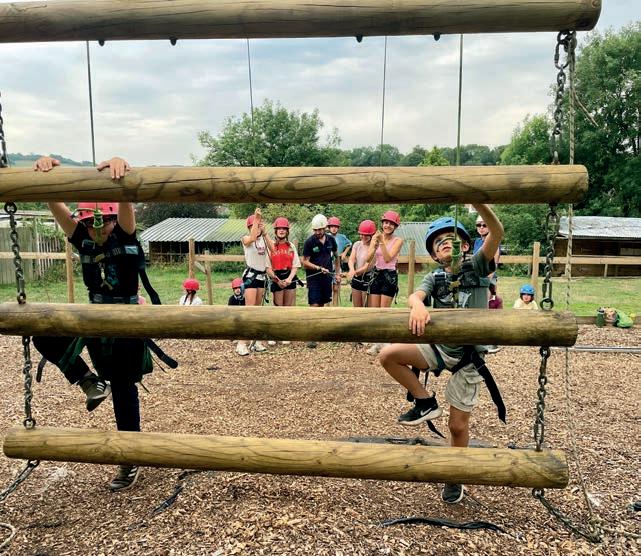
“Children are able to do so much more than we adults often expect – unexpected leaders emerge and teams begin to work together”
the group at the completion of a task is vital because so many learning points are revealed. And sometimes participants experience failure, which again furthers their learning and understanding of themselves and others.
Children are able to do so much more than we adults often expect – as long as they are given the opportunity. They show determination and resilience, whatever the weather. Unexpected leaders emerge and, after a while, the teams begin to work together. The experience they have here at our centre becomes a lifelong lesson.

Many children who visit us from more deprived areas have never been in the countryside before. They have never stroked a sheep, sat by an open fire or contributed to solving a task as a valued member of a team.
The activities offered here are exciting and varied – from high ropes and abseiling to canoeing and archery. But it is what the children experience in themselves which can be life changing.
Many who come to us have little confidence. They may find school difficult, have few social skills and no real understanding of nature. If you
have never achieved, there is no feeling of self-worth.
And the results? The children change over their stay with us. They become more responsive, resilient and enthusiastic. They gain understanding of the environmental aspects of our work and what they can do themselves to change attitudes. They leave as our ambassadors, returning home ready to educate family and friends.
TRICIA RAWLINGSON PLANT
Founding Director Mill on the Brue Outdoor Activity Centre
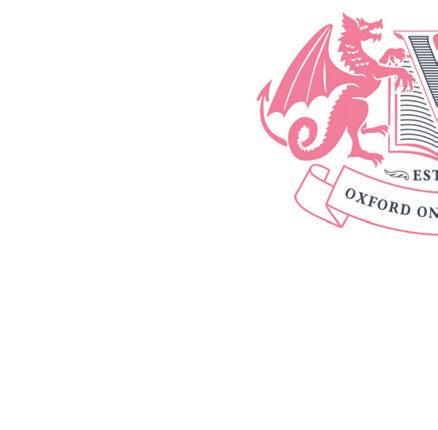

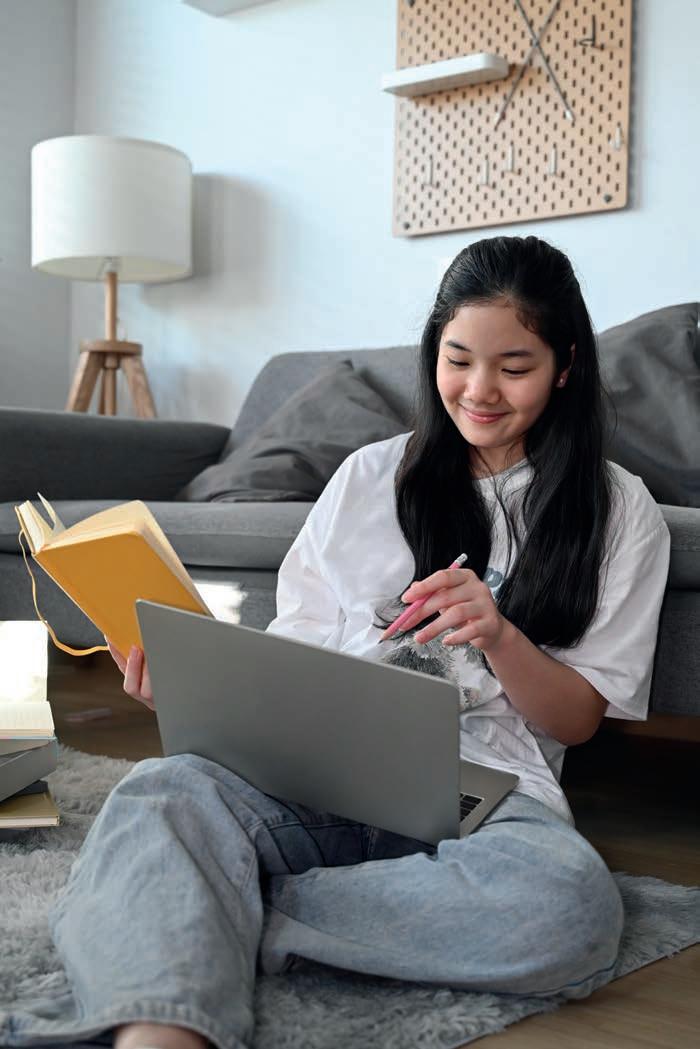
Shapingmindsforaglobalfuture. AgenuineBritisheducationonlineforpupilsaged8–18. Live,teacher-ledlessonsinsmallclasses,personalisedsupport, andflexibletimetablesthatfitfamilylife—whereveryouare.
www.oxfordonlineschool.org|admissions@oxfordonlineschool.org
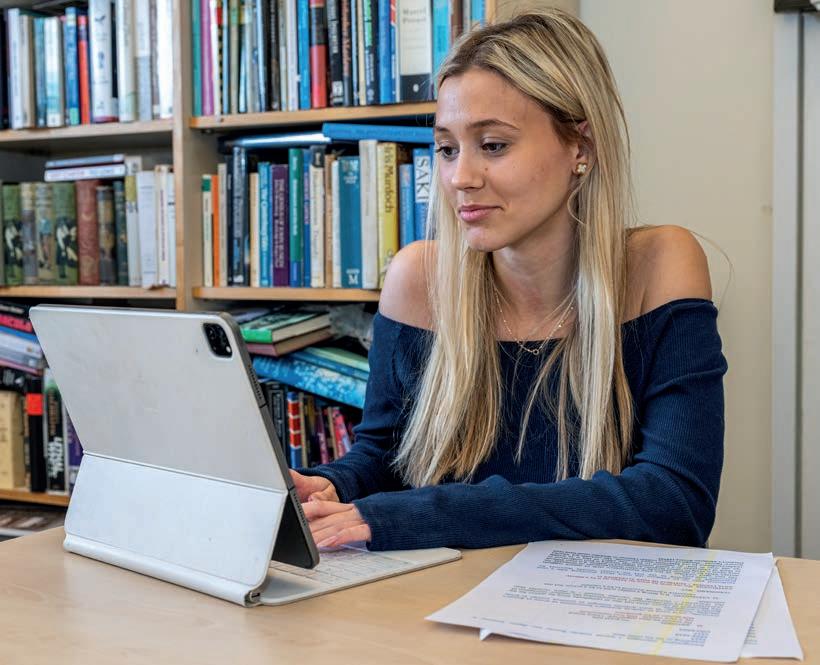
James Barton of MPW Group on why AI is a powerful and positive force in education, but always in a supporting role
Would Shakespeare have been more or less powerful with an AI copilot? Would his output have multiplied, or would the poetry have thinned? To prompt or not to prompt is not the point – the question is whether the tool serves learning or takes over.
From the Jacquard loom to Babbage and Lovelace, from Mary Shelley’s laboratory to Turing’s conversational test, we’ve seen radical technologies since before the Bard. In education it feels novel because the AI rollout is happening now. The present twist is scale. Large language models can draft, summarise and simulate at speed.
The parental voice of concern is justifiable. If a machine performs the heavy lifting, does our own intelligence slacken? Struggle is part of learning and the temptation to outsource that struggle is real. Institutions harbour their own fears. What if AI becomes so fluent that erroneous or inauthentic
submissions slip past detection, eroding trust in assessment? These risks are not imaginary but call for design, not drama.
Education is not the e cient production of tidy answers, but the formation of curiosity, integrity and judgement. Keep that in view and AI remains a tool, and even a co-pilot, but not the tutor. Ring-fence its use through transparent prompts, declared outputs and clear limits. Build assessments that prize process as well as end product – more in-class writing, viva-style orals, iterative portfolios and applied tasks that require students to show their working as well as their results. Good design makes misuse harder and learning stickier. Used well, AI is genuine value-added. In secondary schools, it can generate retrieval practice, adapt reading levels and o er immediate, low-stakes feedback. For pupils learning in another language, it can clarify instructions without lowering the bar. In universities, it can annotate articles, propose code comments, draft lab pre-work and produce alternative explanations for stubborn concepts. Think
“No model reads a room and spots the student who hides brilliance behind quietness or turns a near-miss into an ‘aha’ moment”
of AI as rehearsal room – a place to try an argument, hear it back and refine it before the performance that counts.
AI will certainly replace tasks. Marking routine quizzes, preparing di erentiated materials and providing first-pass feedback are jobs machines already handle well. But no model reads a room and spots the student who hides brilliance behind quietness or turns a near-miss into an ‘aha’ moment. This means the teacher role shifts from solo lecturer to conductor of attention and designer of practice – teacher-led, now tool-enabled. Prospero keeps command of the stage not because he owns the book but because he understands the play.
In the workplace, large firms now deploy secure, white-labelled models to cut drudgery and raise quality. Graduates will meet such systems on day one. Failing to teach AI literacy would leave them under-prepared. If Shakespeare had an AI co-pilot, the task would still be his – he would choose the question, test the line and own the judgement.
At MPW we learned during the pandemic that technology can preserve momentum, but teachers sustain learning. That lesson now shapes a clear approach. We use AI where it demonstrably adds value –personalising practice, widening timely feedback and supporting EAL learners –while keeping authorship, fairness and the teacher-student relationship at the centre. Tools extend us, teachers transform us. Keep the craft in charge and Shakespeare’s co-pilot earns a seat but not the quill.





The Head of Slindon College in West Sussex considers how we manage the growing demand for specialist education for children with SEN

In recent years, the increase in diagnoses of neurodevelopmental disorders, such as autism and ADHD, has highlighted the urgent need for more inclusive educational settings. Many state schools struggle to accommodate these students adequately. In response, independent specialist schools are broadening their o erings, collaborating with local authorities and working alongside mainstream schools to create a more inclusive educational landscape.
Slindon College has an extensive and successful history in supporting many local authorities to meet children’s needs. By sharing our expertise and o ering individualised learning, we can help state schools better support their students with SEN. Our goal is to create a seamless transition, ensuring they receive the best possible education tailored to their needs.
In addition to this collaboration, Slindon College is expanding its physical provisions. We have extended our provision to include
pupils from Year 4. We have also created extra small-group teaching places in order to meet the increasing demand for specialist placements nationally. By opening our doors to more children, we’re not only alleviating pressure on the education system but also enriching our own community.
The collaborative approach adopted by specialist independent schools is also paving the way for tailored learning programmes. Many schools – and we are among them –are now developing bespoke curricula that align with the needs of neurodivergent children. These programmes often incorporate sensoryfriendly spaces, individualised learning plans and therapies that can cater to varying learning styles.
Slindon College o ers a variety of di erent academic and vocational pathways. We provide in-house occupational
“By sharing our expertise and o ering individualised learning, we can help state schools better support their students with SEN”
and speech and language therapy and a range of di erent regulation spaces, all of which focus on capitalising on our pupils’ strengths, abilities and interests while looking after their mental health and wellbeing.
However, the journey for children, their families, and the education sector as a whole, is not without its challenges. Funding remains a significant barrier. Many families struggle to secure support such as EHCPs and, most importantly, find a suitable school which can meet their child’s needs. Advocacy for increased government support is crucial to ensure that collaborative and support initiatives can continue to flourish.
As the landscape of education evolves, the partnership between independent schools, mainstream schools and local authorities represents a beacon of hope for the future. By working together, we can create an inclusive environment where every child – whatever their learning needs – has the opportunity to succeed.

The commitment to this goal of supporting young people to fulfil their potential shown by schools such as Slindon College is important. It not only addresses the immediate shortfall of places but also sets a precedent for a more responsive educational framework across the nation that would support all our young people.
























Scientific knowledge delivered early can become a thrilling journey for children, as they discover the world through practical experiments and hands-on investigation. We speak to four prep schools to find out how they develop young scientists


Our science programme is designed to nurture curiosity, develop critical thinking, and build strong foundations in scientific understanding from the earliest years," says Head of JAGS Junior School Victoria Goodson.
"Pupils learn to ask meaningful questions, test hypotheses, and communicate their findings clearly –essential skills for future study"
"We offer specialist science teaching from Year 3 onwards, with most lessons taking place in a fully equipped science classroom that allows pupils to engage in hands-on investigations using real scientific equipment." This specialist setting and practical approach not only sparks enthusiasm but also helps pupils develop knowledge and enquiry skills that grow in complexity as they progress through the school.
Science teaching in Years 3 to 6 focuses on delivering a varied curriculum to spark curiosity and get children involved in practical (sometimes messy) experiments. "A standout feature at JAGS is our Forest School programme," adds Victoria Goodson. "Our extensive grounds are a rare luxury so close to central London and
include the Botany Gardens and The Copse, providing a rich environment where science is brought vividly to life."
It’s a space where pupils investigate animal habitats, plant life cycles and see sustainability in action. Activities range from shelter building and knot tying to weaving with wool and twigs, helping children develop both scientific knowledge and essential life skills. Children explore biodiversity through bird and insect identification, investigate seasonal changes through tree and leaf studies, and examine plant life cycles by analysing seed pods. "Printmaking with leaves and organic matter from the forest floor adds a creative dimension, blending art with environmental science," says Victoria Goodson. JAGS chooses this immersive approach to help reinforce key scientific concepts but also nurture a lasting appreciation of the interconnectedness of living things. "Forest School continues to be a highlight of the Prep experience, where curiosity thrives and learning is rooted in the real world."
The school ensures that each year builds increasing depth and challenge. For example, in Year 3, pupils explore topics such as rocks,
"The home-based project 'Adaptation', tasked children to make a model and fact file about either an animal they love or one they have invented"
the human body, forces and magnets, and light, while developing skills such as making observations, recording data, and drawing conclusions. By Year 6, they are planning their own investigations, analysing results and using scientific evidence to support their ideas. They also tackle more advanced topics, such as chemical reactions, evolution and inheritance, and the circulatory system.
"The ‘Working Scientifically’ module is a constant throughout, anchoring the work we do and ensuring that pupils not only learn scientific facts but, crucially, also understand how science works. They learn to ask meaningful questions, test hypotheses, and communicate their findings clearly – essential skills for future study and for life beyond the classroom," says Victoria Goodson.
Science happens outside the curriculum, with a wide range of extracurricular opportunities – from eco and science clubs to national competitions and CREST Awards. There's a big focus on playing to individual strengths and learning needs to ensure all children feel inspired to take learning further. "Ultimately, our science programme is about more than simply recalling facts, it’s about genuinely nurturing inquisitive minds, building resilience, and empowering our young people to make sense of the world around them."
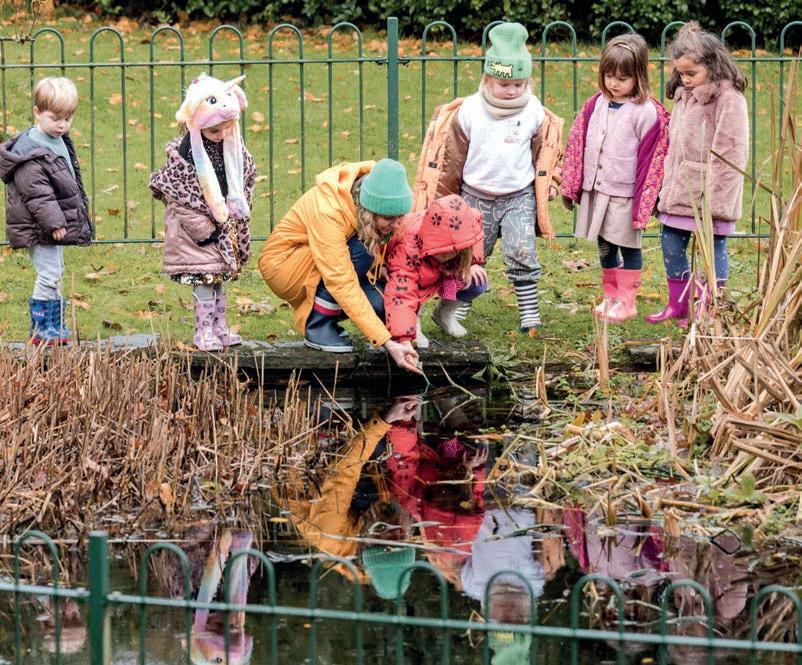
The science programme in Lower School is woven within and around our five curriculum lenses: Being Human, Continuity and Change, Living Planet, Culture and Community, and Communication," says The King Alfred School Head of Lower School Karen Thomas. "Enquiry-based learning is our dominant pedagogy and this lends itself perfectly to developing children’s scientific thinking."
There's a stepped approach here that helps children put down solid foundations with the right approaches and then build knowledge in increments. "First we gain the necessary knowledge about a particular area of science and then we help the children to play with

their new understandings to create and test the hypotheses they make," adds Karen Thomas.
She says that since not too many people are inspired by worksheets, the aim is always to make early science explorations as hands-on and playful as possible to keep children engaged – and ensure they keep asking questions. ‘I wonder if’ and ‘show me how’ are often the starting points for science explorations at King Alfred. The school covers National Curriculum study areas – but is not limited by them. Karen Thomas says there's a focus on "our continuum of science skills". She adds that it's important to equip the Lower School's young scientists with the vocabulary, tools and methodology to take scientific exploration further and also think more deeply about where their discoveries could go next.
"We often draw from our community to bring another exciting dimension to our science offering, bringing in parents, friends, and teachers with a particular passion for science. We learn about scientists present and past, paying particular attention to challenge any existing stereotypes as we do so," she says. Children are also tasked to think about what makes a great scientist – a good way to consider transferable skillsets and identify what makes a good learner. There's an annual STEM week involving the whole community. Visiting speakers run workshops and children (and their families) also get involved in a home-based project. "When these are brought into school, we organise for the children to visit one another’s classes and share what has been made." Fun recent examples of this have included 'Adaptation', tasking children to make a model and fact file about either an animal
"Headline initiatives, including Enterprise Club, Eco Warriors and Sustainability Champions let pupils lead investigations into realworld issues"

they love or one they have invented. Children have also designed arcade games based on 'Caine's Arcade' and been asked to come up with a whole new experiment and be prepared to share it with everyone. "These events create an extra buzz about science for children, teachers and parents alike," adds Karen Thomas.
The school's location, in leafy northwest London, also ensures science can head out of the classroom. As well as trips to the capital's major and more local museums, outside space becomes a learning lab – especially useful for environmental science. The aim is to help children recognise both the beauty of the earth and the positive and negative impacts human development can have. "We hope that, by doing this, our scientists of the future will have a respect for the environment and will make ethical and planet-friendly decisions when they enter the workforce."

the curriculum becomes increasingly specialised, introducing key concepts in biology, chemistry and physics, while nurturing those same analytical thinking and investigative skills first sparked through play. "By Year 6, pupils are confidently engaging with complex ideas and applying their knowledge in meaningful contexts."
At Francis Holland Prep, science is far more than a subject; it is a journey of discovery that we harness from the Early Years, evolving into a rigorous, specialist curriculum by Year 6," says Deputy Head Andrew Hart. Over the course of the last academic year, the school has engaged in a comprehensive curriculum review, with a progressive approach to ensure clear pathways for deepening both understanding and skill in these formative years.
"From the outset, our pupils are immersed in hands-on science. In the Early Years, pupils explore through play, and we harness children’s natural capacity for experimentation, laying the foundations for deeper scientific thinking," adds Andrew Hart. As they move through the school,
Project-based learning and citizen science are central to the approach here. "Through headline initiatives, including Enterprise Club, Eco Warriors and Sustainability Champions, pupils lead investigations into real-world issues." These range from climate change to biodiversity, and Francis Holland Prep pupils get busy doing everything from designing eco-friendly inventions to promoting sustainable practices and analysing environmental data. "Our children take ownership of their learning and see the impact of their scientific achievements, both at school and out in the wider community," says Andrew Hart.
Practical science is the cornerstone and is designed to surprise and inspire. "Pupils create edible water pods, build solar ovens and make glow-in-the-dark slime. They test bioplastics, design magnetic mazes and monitor air quality, linking science with sustainability and innovation." He adds that these hands-on experiences help to embed scientific thinking – so that pupils see science as a subject they can achieve in and lead in. "Our STEAM Room (Science, Technology, Engineering, Arts and Maths) is alive with excitement. These immersive experiences not only reinforce key concepts but also create lasting memories that fuel a lifelong love of learning."
Francis Holland Prep's Chelsea location means a wealth of opportunities right on the doorstep for enrichment. Trips are an intrinsic element of the curriculum and, with the Science Museum, Natural History Museum and so many other national treasures so close, learning is brought to life

as part of the school day. There are regular visiting speakers from across the science and innovation sectors – many drawn from the school community – and this connects classroom learning to the wider world and helps pupils see themselves as future scientists and changemakers.
The co-curricular provision has expanded significantly recently, with dedicated coding and robotics clubs providing opportunities to explore the intersections of science and technology. The Inventors and Practical Science clubs develop creativity and problemsolving skills. All age groups are welcomed, giving valuable space for experimentation and collaboration on challenges. "Ultimately, our STEAM programmes provide pupils with the knowledge, curiosity and confidence to explore, innovate and never stop questioning." says Andrew Hart. "Our pupils are equipped with a lifelong passion for science and an appreciation of their power to change the world."
At Ballard, pupils think like scientists from the earliest years. “We start with the end in mind – we achieve exceptional outcomes in GCSE,” says Head of Science Aaron Markar. “However, it's not all about grades, pupils leave with a real-world understanding of science and its practical applications." This journey begins in Prep, with access to specialist science teaching. “We are about making science accessible for all children while retaining the challenge, excitement and inspiration. Early training to ‘think like a scientist’ is combined with very hands-on practical science – learning how to use the scientific process to test, investigate and experiment," adds Aaron Markar.
There's a strong emphasis on practical work. “Building on basic skills each year and using correct vocabulary from a young age ensures that science is always relevant

"Building on basic skills each year and using correct vocabulary from a young age ensures that science is always relevant and engaging”
and engaging,” says Ballard Prep Science Teacher Abigail Greaves. And this provision extends well beyond the classroom, with science clubs across both the Prep and Senior schools. “Pupils get to experiment, use equipment and participate in science activities far beyond our already broad curriculum. Science club favourites include copper plating nails, chromatography, and secret writing with invisible inks."
As you'd expect, given the school's glorious New Forest location, conservation and environmental stewardship are central elements of science teaching, with pupils regularly engaging in ecology initiatives.
“As an Eco School, we make full use of our site – grasslands, multiple Forest School areas, our stream and Ballard Pond – to bring ecology to life. Pupils can ‘pop’ outside and have lessons out of the labs, and we’ve noticed an increasing affinity for the outdoors and the ecological aspects of the curriculum,” says Aaron Markar.
Project-based learning is another key strand, using the CREST Award framework to help children develop knowledge and research skills. “In Year 7, pupils take on a ‘Why’ project – choosing a question to research and present at a mini science fair,” says Abigail Greaves. The Ballard science team relish creating memorable moments. “Pupils always love anything with flames, popping and fizzing.
"We often use food in experiments to bring complex ideas to life – jelly models of cells, Oreo biscuits for moon phases, fruit as planets to show size and distance in space. We measure crater size with marbles and sand, simulate digestion using tights, and create ‘alien soup’ to consolidate knowledge of separating mixtures.”
Plenty more real-world science is provided with trips to local museums and multiple Science Week events. Guest lectures – including from alumni working in the science and technology sectors – help pupils see future careers that could await them. “It’s often said that you have to 'see it to be it’ – and we take that seriously,” adds Aaron Markar
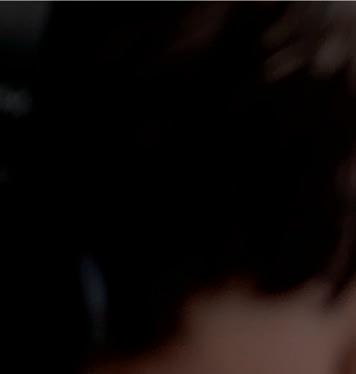



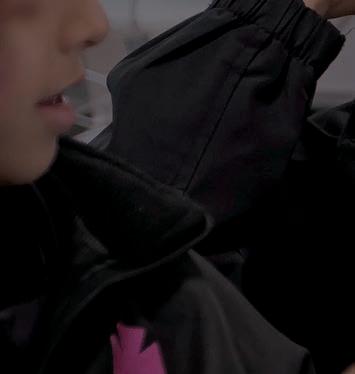





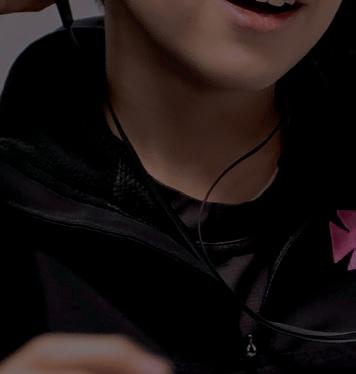

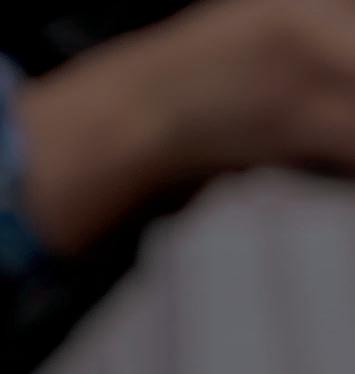










Fiona Read, Head of Bedales Pre-prep, on delivering early education that ignites curiosity and sets children up for lifelong learning in an interconnected world
So often the all-important early years of education are sidelined by discussions of exam systems and transition to work. Having seen the ebb and flow of policies and initiatives over the last 25 years of teaching in the UK and internationally, I feel now is the time to ask fundamental questions about how we educate our youngest learners to foster a genuine love of learning.
Many of today’s classroom practices were shaped by the Industrial Revolution, when education was designed to prepare children for a hierarchical, conformist workforce. Rows of children seated passively, absorbing knowledge dictated by an authoritative figure at the front of the classroom, are relics of this era.
Today, the education pendulum has swung too far in favour of testing. A preoccupation with preparation for the next stage means young children face a plethora of standardised
“Even the youngest students are active participants in shaping a rounded education deeply connected with the world”
tests, such as SATs, throughout primary school, narrowing the curriculum by directing teaching towards preparing for assessments.
This rigid focus continues with a GCSE curriculum discredited by many educationalists, including the Rethinking Assessment group and former education secretaries across the political divide. Like SATs, GCSEs have become too restrictive and fail to nurture 21st-century skills increasingly valued by employers – notably flexibility, resilience and critical thinking.
The National Curriculum in England was last reformed in 2014, but its roots lie further back. Much of the content is outdated, failing
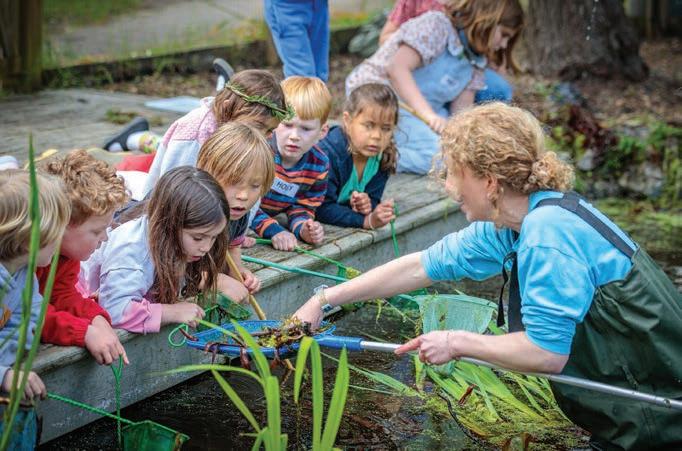
to reflect the latest developments in science and technology and stifling young people’s creativity. Too often, students are confined to traditional classrooms, with four walls and teacherled instruction. Nature, imaginative play and hands-on exploration are relegated to the periphery of learning as occasional outdoor lessons or extracurricular activities.
There is much to learn from overseas, combining the best of the National Curriculum with global pedagogies to create a meaningful and engaging educational experience. We need a curriculum that focuses on concepts and skills that encourage independence, creative thinking and interdisciplinary connections. Embracing inquiry-based approaches would ensure that what we teach is not only academically rigorous, but also culturally responsive and globally minded, preparing our children to thrive in an interconnected world.
At Bedales, curiosity is nurtured at every stage of the learning journey. From the very youngest years, students are active participants in shaping a rounded education


that is personal, purposeful and deeply connected with the world. An inquiry-based approach enables children to explore topics in a hands-on, integrated way – extending understanding through questions and scenarios that lay the foundation for a lifetime of learning.
Unbound by the Common Entrance syllabus, Bedales Prep’s broad, balanced curriculum also gives children the space to think, ask questions and pursue ideas – encouraging them to take ownership of their learning without fear of failure and the pressure of unnecessary testing.
At the Senior School, many GCSEs are replaced by Bedales Assessed Courses (BACs), UCAS-recognised qualifications that prioritise broader assessment methods and focus on learning with realworld relevance.


Children aren’t passive vessels to fill with knowledge, but inquisitive, social beings who thrive on collaboration and discovery. To truly revolutionise education, we must move from decades of talk to decisive action – rethinking how we teach, the environments we create and the relationships we nurture.






The Head of Early Years at Kew College Prep on why excellent education at the outset is a springboard for lifelong learning
When it comes to a child’s future success in education, the early years are more than just a beginning, they are the foundation. Designed well, early years education doesn’t just prepare children for school but cultivates the critical skills, confidence, and curiosity that fuel lifelong learning.

Decades of research, including the Best Start in Life report by Ofsted, confirm that children who hit key developmental milestones in the early years are far more likely to thrive academically later on. From developing early language and communication skills to mastering basic numeracy and social-emotional awareness, formative experiences shape how children think, learn and engage with the world.
High quality early years provision is often talked about, but what does it entail, and what should parents look for?
The factors that di erentiate adequate from exceptional lie in three core pillars.
The first is experienced teachers who understand child development. Second is a nurturing and stimulating environment to foster individual growth. And finally, the setting should provide play-based, outdoor and experiential learning opportunities.
The approach taken at Kew College Prep Nursery is all based around providing children with a springboard. We achieve this by laying strong academic and emotional foundations through play and outdoor learning. Led by teachers and supported by teaching assistants, our
“Muddy knees and wide smiles are a daily occurrence here because we believe learning doesn’t stop at the classroom door”
team have expert knowledge of the EYFS framework and ensure that each day is carefully planned. Learning opportunities are provided through both indoor and outdoor play. This includes twice weekly visits to the local Priory Park, where a full afternoon of outdoor learning takes place.
The high sta to child ratio mean every child is known and their strengths and areas for development are understood and supported. Children benefit from regular lessons in Music, Sport, Dance and French – all led by subject specialists who tailor material to this age group.
Our outdoor spaces become dynamic classrooms where children investigate nature, develop gross motor skills and engage in imaginative play. Muddy knees and wide smiles are a daily occurrence here because we believe learning doesn’t stop at the classroom door.
While academic readiness is important, resilience, social skills and independence are of equal importance. Through a carefully designed mix of structured learning and child-led exploration, children leave us not only ready for Reception but excited about the journey ahead. Since the vast majority move up through Kew College Prep together, this creates a wonderful community until it’s time to move on to senior schools – and our 11+ results speak for themselves.
With a deep commitment to joyful, purposeful learning, our Nursery is designed to show what high-quality early years education provides.
And we know that this first chapter in every child’s educational story holds the power to influence everything that follows.





The Founder of Phileas Fox Nursery School on why bilingual early education delivers both communication skills and vital human connections
As real-time translation technology becomes commonplace, one might question whether investing in bilingual education for our children remains worthwhile. At Phileas Fox Nursery School, we witness daily why the answer is a definite yes. In fact, the rise of artificial intelligence makes authentic bilingual competence more valuable.
The critical distinction lies in deeper understanding. While AI can convert words from one language to another with impressive accuracy, it cannot replicate the native cultural fluency and emotional intelligence acquired while learning languages during formative years. When a three-year-old switches between English and French to comfort a crying friend, they are not just translating –they are demonstrating cognitive empathy that transcends linguistic boundaries.
Research consistently shows that bilingual children develop enhanced executive function, improved problem-solving skills, and greater cognitive flexibility. These advantages stem from constantly navigating between linguistic systems, strengthening the brain’s ability to switch between di erent concepts and perspectives. In our increasingly complex world, these metacognitive skills prove invaluable and go far beyond language learning.
Perhaps most importantly, early bilingual exposure cultivates genuine cultural immersion. Children who learn languages in associated contexts develop authentic understanding that no technology can
“Children who learn languages in associated contexts develop authentic understanding that no technology can replicate”

replicate. They adapt di erent ways of thinking, relating and being in the world. This cultural fluency becomes increasingly precious at a time when our global society grapples with polarisation and misunderstanding.
The neurological advantages of early bilingual education are equally compelling. Young children’s brains possess remarkable plasticity, allowing them to acquire multiple languages with native-like proficiency when exposure begins early enough. This window of optimal language acquisition narrows progressively as children grow, making early years learning so beneficial.
Another great benefit in our experience, working with families across London’s diverse backgrounds, is the enhanced family connection. Children strengthen relationships with extended family members who speak heritage languages, maintaining cultural ties across generations. This linguistic bridge preserves family narratives and cultural wealth, enriching children’s identity formation.


The collaborative nature of multilingual learning fosters exceptional social skills. Children often act as interpreters, building empathy and leadership capabilities. They learn that communication extends beyond words to include gesture, tone, humour and the subtle emotional cues that native speakers navigate instinctively. We always recommend extending language learning outside of the classroom through books, media, food, family and friends and, of course, travelling.


The question facing parents and educators isn’t whether technology will continue advancing – it undoubtedly will. Rather, we must consider what uniquely human capabilities we want to cultivate in our children. Bilingualism in early years develops cultural empathy, cognitive flexibility, and authentic human connection that no algorithm can replicate. Investing in this is more than just a desirable enrichment, it is preparing children for a future where our human skills will remain superior to AI.
With more than 20 home languages among students, International School of London (ISL) is a model of a modern, multilingual education
From the start of this academic year, Japanese has joined English, French, Spanish and Mandarin as an International School of London (ISL) acquisition language – in other words, one of the languages children can learn alongside their home language when they join the school. The reasoning was simple, says the school’s Head of Multilingualism Zack Ekert. “We have a huge Japanese native community, whose language and culture already enriches the entire school.”
The school’s Japanese families are right behind this plan. “The Japanese natives – both parents and students – will be involved in the learning journey of those Japanese learners.”
Here, in a nutshell, is what sets ISL apart in its method of language teaching. It was founded in 1972 with a mission to enable children to retain and develop fluency in their home language within a strong academic framework. As an IB school, languages are always going to be an important element, but here the approach goes beyond the already rigorous IB framework.
Home languages spoken across the school –currently 24 – range from Arabic and Danish to Hebrew, Hungarian, Russian and Turkish. Of course, deciding on a child’s home language is not always straightforward. “You might have
five languages spoken within a family but not all of them fluently, so we need to find out these language stories,” says Zack Ekert. “The first thing I do with every family is interview them. There we pull out all the information to see where they’ve lived, their future plans, aspirations and language background.
“Sometimes, especially in families that speak four or more languages, parents have to think about what language should have priority at school, but the emphasis is always on encouraging them to provide children with as much exposure as possible to the family’s languages at home.”
Many children who arrive at the school do not speak English with the fluency of natives, so their acquisition of English alongside their home language is carefully planned.
“Standardised English language phonics doesn’t work when you have a child who is still developing their own Arabic or Japanese,” says Zack Ekert. “It assumes a fluency in the language. So, we’ve created our own customised phonics, which is really exciting.”
Alongside this, children build reading and writing skills in small groups – sometimes one to one, and typically up to six, based on needs and learning profile. And, as a young child acquires English, they are also building their home language. This means close liaison

between the teacher of English and teacher of the home language so that content is complementary. “Consequently, we do focus on the nitty-gritty in the home language because it is an academic course, not a cultural course. We need students to have a confident understanding of their own grammar in language one, language two, and so on.”
The school refers to these as language A and B. Indeed, it uses very specific terminology.

“It’s rewarding when students stop me in the corridor and start speaking in the language I’ve been teaching them”
It considers ‘foreign’ (as within MFL) unhelpful. And the acronym EAL (English as an Additional Language) is replaced with English Language Learning (ELL). “It’s all about inclusion,” says Zack Ekert. It’s a bespoke approach, with a passionate commitment to ensuring great teaching. It took Zak Ekert two years to find the right Dutch teacher, and ISL will always try to source specialist provision for home languages not currently supported. The goal is to ensure that children retain their home language, as well as building fluency and ease with English.
This multilingual approach is not easy – learning languages can be hard – and Zack Ekert says they never minimise the challenge, but it’s amazing is just how well
students respond. Parents have an important role to play. The school understands the natural pull of English, and also parents’ natural desire to ensure fluency so that children thrive. “There’s nothing wrong with the child speaking whatever language they want to speak, but we don’t want to encourage a superiority of English. The more you speak of one language the more priority you give it,” he says. “So it’s about making home and school safe spaces where children are encouraged to speak or discover things in all their languages. It’s also about having a constant respect for one’s home language.”
Once children join the Middle Years Programme, they learn up to three languages. Zack Ekert believes this exposure leads to greater maturity, and children really value the communication skills they acquire. That traditional teacher-student back and forth and the dry textbook describing an imaginary family on a picnic don’t happen here. Conversation and real-world relevance are prioritised, particularly with language B. “We’ve been collaborating with Goldsmiths over the past year and the head of teacher training there showed us this new approach. It’s all about delivering a genuine need to communicate,” says Zack Ekert. “We’ve already seen a real change in how students

come to the lessons – they will ask for the actual language that they need there and then. It’s so powerful and it sticks in the memory.”
He sees this translate into fluent, easy communication. “One of the most rewarding moments is when students stop me in the corridor and start speaking in the language I’ve been teaching them. I teach French here, and it’s not just a quick ‘Bonjour’ – it often turns into a real conversation about their day.”
He’s looking forward to how Japanese embeds itself as the fifth acquisition language at ISL – a living and dynamic example of curriculum-embedded exchange. “That’s what multilingualism is for me. It’s not about speaking lots of languages or teaching lots of languages, it’s about this constant exchange between cultures.”

With the forthcoming opening of its Pre-School, Kimbolton Prep Head Claire Petrie reflects on why education is as much about character as knowledge
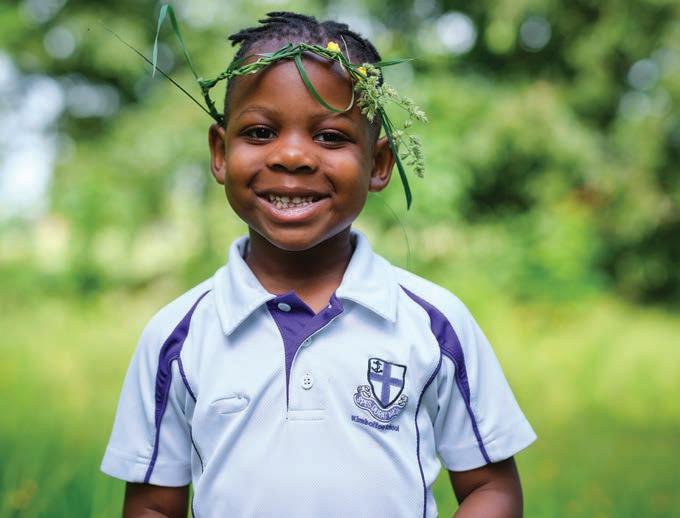
When parents talk about what they most want for their children, they often speak about kindness, confidence and resilience – the qualities that help children thrive long after they have left school. At Kimbolton Prep, we believe that developing character is as important as developing knowledge. This begins the moment a child steps through the school gate. And soon, that will include our very youngest pupils when our new Pre-School opens next January.
In the earliest years, children are natural imitators. They watch closely how adults react to challenges, how friends take turns and how teachers encourage e ort. Every small interaction becomes a lesson in empathy and integrity.
That’s why we see character education not as an ‘add-on’, but as something woven into daily life. It’s evident in the way we greet each other in the morning, solve a playground disagreement or celebrate a moment of courage in assembly.
Formal curriculum will always matter, but a purely academic focus can overlook the subtle learning that happens through play, teamwork and conversation. In our Pre-School, play will form the foundation for character development. When a building block tower topples, it isn’t a failure but an introduction to perseverance. A disagreement over paint colours becomes a lesson in negotiation.
These early experiences give children the emotional language to manage frustration, take responsibility and keep trying – the very qualities that underpin both wellbeing and later academic success.
As children move up through our Prep School, those early lessons deepen. Our pupils are encouraged to reflect on what our five school values –Curiosity, Kindness, Integrity, Courage, Endeavour – mean in practice. These are not just words on a wall, but reference
“Character education is evident in the way we greet each other, solve a playground disagreement or celebrate a moment of courage”
points for everyday decisions. Whether on the sports field, in the choir or during outdoor learning, pupils learn that courage can mean trying something new as much as standing up for a friend, and that kindness often involves quiet acts of inclusion rather than grand gestures.
Educators and parents sometimes ask how character can be measured. The truth is that character reveals itself in small, consistent ways – in the child who stays behind to help tidy, the one who admits a mistake or the one who perseveres when a project feels impossible. These are the moments that tell us education is working.
At a time when young people face increasing pressure to perform, schools have a duty to safeguard childhood and promote moral as well as intellectual growth. Teaching values explicitly – and modelling them daily –equips pupils to make wise choices and build strong relationships. It also lays a foundation for citizenship: for understanding others’ perspectives, showing compassion and leading with integrity.

Character cannot be taught in isolation. It grows through community and through feeling seen, trusted and valued. That is why the culture we create here in our Prep School, and soon in our new Pre-School, matters so much. When children learn that who they are is as important as what they know, they develop not only confidence but purpose. And that, ultimately, is what education should be about.
London'soneofakindmultilingualnurserygiveschildrena headstartinmasteringlanguagesfromearlychildhood.







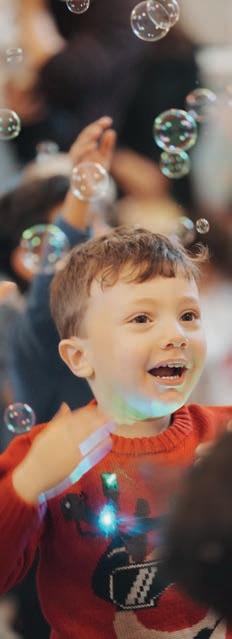

PhileasFoxNurserySchoolspecialisesinEarlyYearsmultilingualeducation, offeringchildrentheopportunitytolearnEnglish,French,Mandarin,and Russianlanguagesandcultures.
ThroughamodernEarlyYearscurriculum,wecreatetheperfectbalanceof holisticeducationandlinguisticimmersion.Ournurturing,stimulating,and play-focusedenvironmentensureschildrenthrivewhiledevelopingalovefor learning,languagesandaglobalperspective.


Louise North, Principal of Framlingham College in Su olk, on how the school is using AI’s power to enhance teaching and learning
Since the launch of ChatGPT in 2022, the misconception that Artificial Intelligence (AI) will replace teachers or write pupils’ essays for them has been set in the past. It is crucial that schools now embrace, adapt and balance the use of AI in their classrooms to avoid the risk of falling behind with modern schooling and depriving young people of innovative learning, vital technology awareness and life skills.
At Framlingham College, we are continuously adapting learning techniques and developing our educational approach to meet the needs of our pupils and ensure they thrive in an ever-changing world.
Our use of AI is expanding across our curriculum and beyond after numerous success stories during this last academic year. There are programmes to support pupils with dyslexia and enhance creativity with descriptive writing. We have movement tracking apps in sport that accurately analyse and finesse performance techniques, while other technology assists teachers with planning lessons. There are also translation apps for our UK and international pupils to help them communicate and forge friendships.
Talking about our use of AI in classrooms, our Assistant Head of Teaching and Learning, Lucy Manning says: “AI platforms like Sparx Maths and Spelling Shared allow us to tailor education for the needs of individual children. Text-to-talk
“There are programmes to support pupils with dyslexia, and movement tracking apps in sport that accurately analyse and finesse performance techniques”

programmes are incredibly beneficial, particularly for our pupils with dyslexia.
“At the Prep School, we use creative art tools for pupils to practise using descriptive words, verbs and adjectives – for instance, writing descriptions of dragons and wizards and using AI to bring those images to life. At GCSE level, we use AI to create logos for the pupils’ projects, alongside teaching them the ethics of AI so that they can identify when AI is assisting in the process of learning and when it is just doing it all.”
Looking ahead to how we continue to adapt and balance our use of AI, it’s imperative that all our schools prepare young people for an AIinfused world. Whether we like it or not, we can’t deny its existence – it’s out there – but it’s not something to fear when used correctly and responsibly in the classroom.
Of course, we don’t want pupils to use ChatGPT to


write their essays because that takes away the opportunity to learn, and children relish in the chance to learn and research, but AI platforms like ChatGPT can certainly help pupils with planning projects, taking notes and structuring revision.
At Framlingham College, we are introducing AI steadily throughout our curriculum across both Prep and Senior schools. It is a bit like a garden –planting the seeds, watering them and gradually watching them flourish.


We are working closely with our teaching sta to see what works, what doesn’t and what areas we need to be wary of when it comes to the use of AI. We absolutely understand that there needs to be a careful balance in the use of this powerful technology. Our approach is that it’s not about replacing but rather enhancing the teaching and the learning experience for all our pupils.

John Chapman’s Jonnie Rocket adventures capture his own dreams and escapism as a boy, and also his part in movie history
John Chapman made it to the stars. As a young man, he fancied doing some acting so he went to Pinewood to see if he could get a job. They told him he really needed an agent, so he went to London, found an extras agency, did a few acting exercises and a week later he was on the cast of a production happening over at Elstree called Star Wars. “We were all told it was going to be a TV series,” he says. Of course, it was to be much more than that, and he counts himself privileged to have been
part of film history as the X-Wing pilot Red 12 Drifter in a movie franchise that is lodged deep in the imaginations of three generations now.
While he’s proud to have been part of that moment, looking to the stars was something John Chapman also did a lot as a boy. He had what was identified (years later) as dyslexia. “I did feel a bit of a dunce,” he says. “The only thing that got me through my school days was fashion and music, so I could keep some sort of credibility.
“The other thing that I did, especially when I was very young, was that my bike was a complete fantasy for me – escapism.
Lying in the garden in my parents’ house and staring at the stars I would think, ‘there’s got to be something better out there than what I’m trying to deal with at the moment’.”
Jonnie Rocket came to life as part of that childhood memory of his great bike expeditions. First dreamed up by John Chapman in the late 1990s during conversations with his family, the four books in the series centre on a boy whose bike has magic powers and takes him far into the universe. Bringing the books to life was a labour of love. Chapman wanted them to be imaginative and with educational

“My bike was a complete fantasy for me – escapism. Lying in the garden and staring at the stars I would think, ‘there’s got to be something better out there”
value – but also fun and accessible, even to reluctant or struggling readers.
“The font is cursive form which teachers and educationalists like for dyslexia,” he says. “And I’ve made the speech bubbles a creamy yellowy background in the Sagas that follow on from the first book. From my perspective, if I read on a yellow background the words stay where they are and don’t jump around.” Just as important, the books are big and bold, packed with colour and vivid illustrations to fire imagination.
Bringing this young superhero to life was critical. “I had a vision of what I wanted Jonnie to look like, and it was quite a retro look – an iconic look.” He sat down with Anthony Williams (now well known for his work with Marvel) who got the look just right.
In the first book, Jonnie decides to head off on his bike, with his mother’s reminder about his grandma’s birthday forgotten when the bike lifts off and takes him far into space. There, he encounters villains, but also friendly aliens who help him pick some very weird flowers. When he gets home, the exotic bouquet delights his grandma, and he realises that in earth time he’s only been away for ten minutes. The three books that follow see even more ambitious adventures on far off planets.
Now Jonnie Rocket has taken to the airwaves with a new podcast available on GoKidGo. This features Jonnie and introduces some fun new characters and, with 15 in the series, it’s another way for

children to access the adventures. As with the books, John Chapman hopes to inspire children with positive messages – and help them make a transition from listening to stories to becoming readers.
As a dyslexic himself, he’s well aware of the barriers to reading, but comic books and podcasts have the benefit of letting children use their imagination and build stories beyond what they hear and see. And, despite the barriers of his own childhood, John Chapman’s dyslexia didn’t stop him. After Star Wars, he went on to build a successful family business – occasionally dipping his toe in the water of the vibrant Star Wars fan scene by attending conventions in Japan, the US and across Europe. “The
people are wonderful who turn up there. There’s so much camaraderie. They are taking their grandchildren along now.”
He’s grateful for the youthful chutzpah that got him a role on Star Wars, and for the whole experience of finding his way into a galaxy far, far away. “It feels like it was yesterday,” he says. “I thought that if I could do some acting I could be someone that I’m not in real life – I could be that cowboy and ride off into the desert!” And in Jonnie Rocket, he’s returned to that superhero idea, hoping to inspire a new generation to dream of wild adventures in a wide-open universe.
Jonnie Rocket books are available at jonnierocket.com and the podcasts are on gokidgo.com
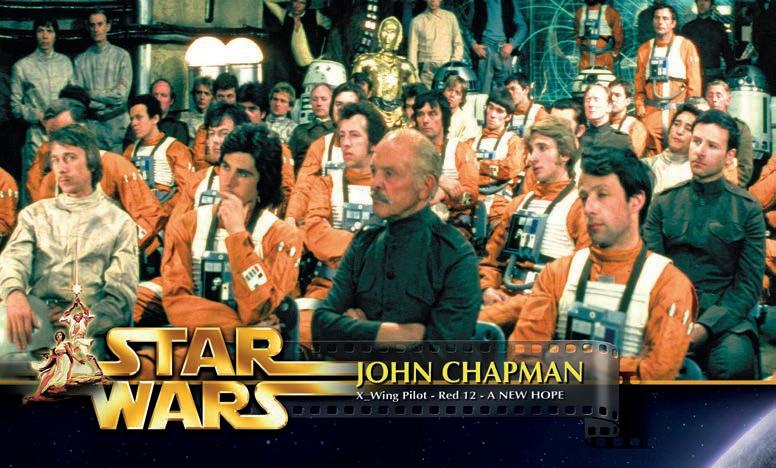



































Tom Neilson of The Grange School in Cheshire on how to inspire even the most reluctant child to read for pleasure
Reading starts as an academic skill taught from the earliest years of education, but it is far more than that. It is a gateway to imagination, inspiration, empathy and lifelong learning. Yet, as any teacher, parent or librarian knows, getting young people – particularly boys – truly engaged with books can be a challenge. The good news is that, when the right conditions are created, even the most reluctant child can be transformed into an enthusiastic reader.
I still remember one Year 9 boy who stomped into the library, clearly under orders. ‘My Mum says I need to borrow a book’, he muttered, reluctance radiating from every word. After a few monosyllabic exchanges, I recommended Rook by Anthony McGowan, a short, sharp and deeply engaging novel that respects older readers while remaining accessible. He left with little enthusiasm, admitting he would only read it because his mum insisted. Two weeks later he returned and said: ‘I actually really enjoyed that’. It made my day. Moments like this show the potential power of the right book at the right time. So how do we grow more young readers like him? At The Grange, we see three key ingredients – expectation, knowledge, access.
In a world of quick-release dopamine –scrolling feeds, gaming levels and bingewatching – it’s easy for young people to overlook the slower but richer rewards of sustained reading. Unlike digital media, books require patience before they give
“Once we made reading an everyday expectation during form time, borrowing numbers soared”

back, yet the payo is deeper, with improved focus, imagination and emotional insight. Once we made reading an everyday expectation during form time here at The Grange, borrowing numbers soared. Children still enjoy stories; they sometimes just need encouragement to persist long enough to find the magic.
For parents, the greatest advantage lies in knowing your child. Do they follow football or Marvel films? Do they prefer building models or tinkering with tech? Personal interests are gateways that will hook them in. Boys, in particular, often thrive when reading aligns with their passions – whether it’s a sports biography, a fast-paced graphic novel or a survival story. By listening, observing, and drawing on what excites them, we can steer them toward stories that feel relevant and rewarding.
The children’s and young adult book world is wonderfully diverse and goes far beyond the familiar shelves of Harry Potter or Diary of a Wimpy Kid. Sites such as Love Reading 4 Kids or Books for Keeps showcase hidden gems that can
captivate the most hesitant child. And, of course, one of the best resources is right here in school. Our librarians live and breathe children’s literature and delight in matching students with books that make them want to turn the page.
Ultimately, growing young readers is not about forcing children into someone else’s idea of what counts as ‘proper’ literature. It’s about opening doors and making reading an adventure rather than a chore. When even reluctant boys see something connected to their interests, when they encounter role models who read, and when they are given permission to choose books that excite them, they often surprise us with their enthusiasm.
At The Grange, we are proud to nurture not only strong learners but also passionate readers because we know that every story started in youth can echo for a lifetime


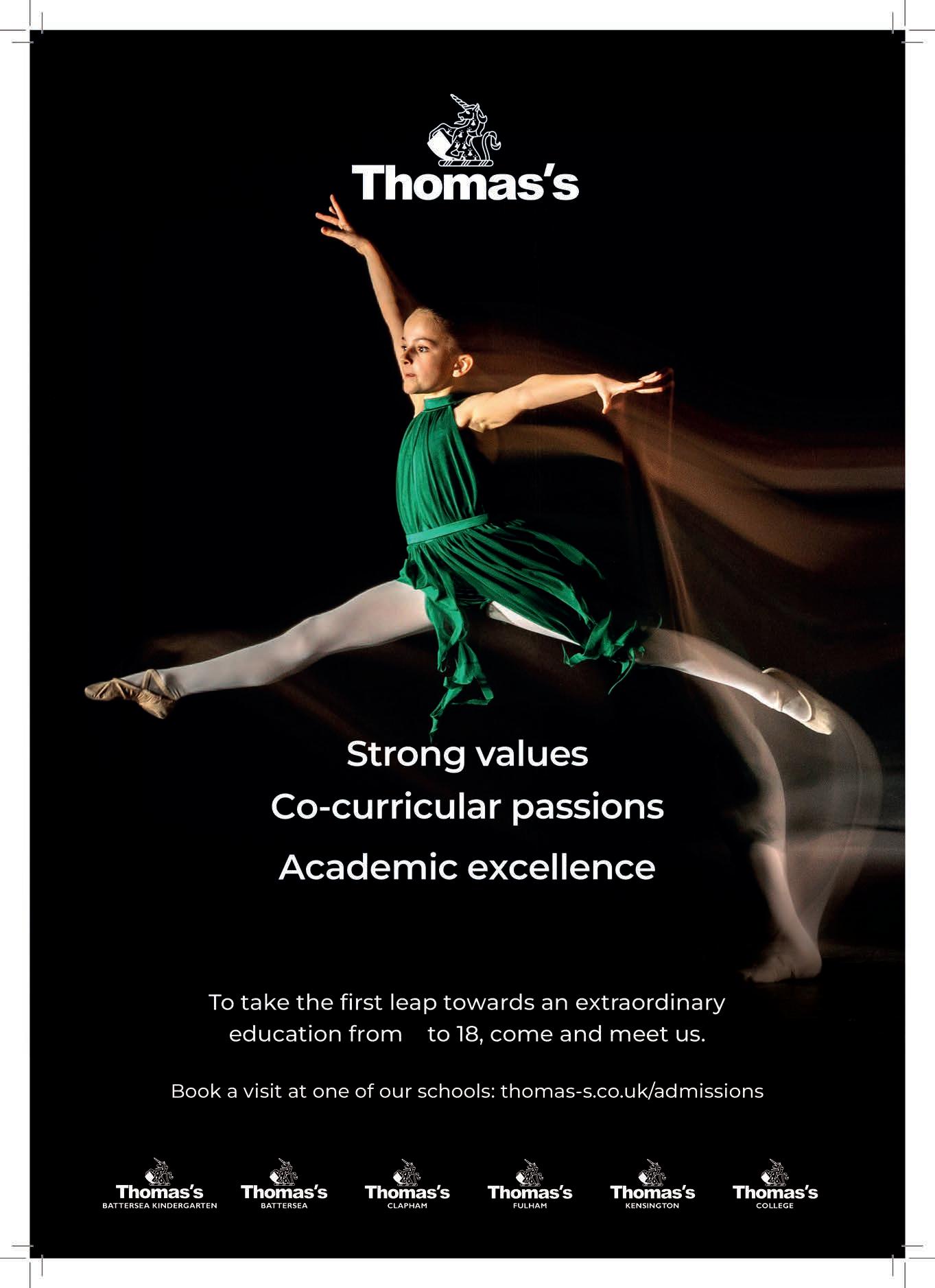

Annette Dobson, Head of Thomas’s Fulham, on the academic value and wider enrichment provided by music education in our schools
The power of music in schools hit me more than ever at a recent event. We brought our academic year to a close in July with a joyous summer concert, the Big Chill. At the end, the entire school – over 400 pupils, staff and families – joined in with a rendition of Earth, Wind and Fire’s ‘September’, complete with a spontaneous conga line. Celebrating Thomas’s Fulham’s 20th anniversary, the sense of community was palpable.
The opportunity to collaborate, to sing and share musicianship with peers and a broader audience, brings about a sense of satisfaction – often at the end of a period of rehearsals and practice. We see this time and again in our school communities and when collaborating and performing externally. We should hold dear the joyful moments of belonging that music provides.
“We must be broadminded about the styles of music we introduce to our pupils – music serves as a key to the door of cultural and societal awareness”
The benefits of music, alongside other arts, extend far beyond the ability to play an instrument or read sheet music. Research consistently demonstrates music’s profound effects on brain development and academic performance. It has been linked to enhanced neuroplasticity –positively impacting cognitive, emotional, physical and social wellbeing.
The intricate processes involved in music acquisition – such as pattern recognition, memory recall, and fine motor skills – lay a strong foundation for learning across all

subjects. Music offers proof of the value of specialist teaching from the earliest days.
A comprehensive music curriculum, which promotes performance, composition, and production, is a powerful tool. It can help us to tackle and transcend many of the social and cultural barriers prevalent in our society. To maximise this impact, we must be broad-minded about the styles of music we introduce to our pupils. Music serves as a key to the door of cultural and societal awareness – meticulously harnessed within the music curriculum at Thomas’s Fulham by our longstanding Director of Music Françoise Ogier, her colleague Hilarie Gordine, and their team.
Beginning units of work with a ‘big’ question enables pupils to think deeply, and build links in learning. One example of this is ‘who was the greater Mozart?’, during which our Year 4 pupils discover the legacy of female composers against a backdrop of societal expectations
and their determination to have their music heard. These include Maria Anna, sister of Wolfgang Amadeus.
Similarly, ‘where did the Blues come from?’ is answered by Year 5, as they explore the profound impact of spirituals among enslaved people. Pupils learn the musical and historical connections between African American spirituals and Blues music, and the backdrop they created for contemporary musical styles.
Music is at the heart of our school – and not simply because it’s usually the first thing you hear when you arrive due to the location of some of our music rooms. It is a facilitator of the metacognition pillar of our full curriculum. It is the focus of our celebratory moments, also what we turn to in more challenging times.

As Stevie Wonder sang in ‘Sir Duke’, Music is a world within itself, with a language we all understand. The sense of joy and community which music fosters should be to the fore in all our schools.

The Deputy Head of Walhampton School on how well-designed exams in prep years build solid foundations for independent learning and resilience
Ask anyone outside of education what school is for, and the word 'exams' is never far from the answer. It makes sense – exam results are quantifiable. They catch the headlines, are easy to digest and serve as tangible milestones. But to reduce education to exam results is to misunderstand its deeper purpose.
Exams condense an entire year’s learning into a single percentage, and these numbers or grades can significantly influence future paths and opportunities. But in a prep school, their purpose is different. At Walhampton, we believe that school is about developing curiosity, confidence and a meaningful understanding of each subject.
A good prep school approach has the opportunity to lay solid foundations before the pressures of senior school set in. The GCSE conveyor belt begins early, and prep schools have the privilege of insulating children from this pressure. We can take the time to build children’s exam craft, ensuring they plan revision that suits their needs, adapt techniques to different subjects or learning preferences, and apply knowledge under timed conditions as their adrenaline rises and papers are opened. We have a responsibility to prepare children – not just academically, but emotionally and strategically, for what’s ahead.
There is good reason to think more broadly about how children approach exams. Research into learning suggests that gradually increasing independence and challenge helps build confidence, resilience and long-term memory. These qualities go beyond exams – they are vital life skills. When children are supported in taking ownership of their learning, they become more reflective, adaptable and better prepared for the unexpected.
With this in mind, our strategy across year groups reflects a progression in responsibility and experience. In Year 5, assessments are introduced gently. The focus is less on scores and more on understanding what it feels like to sit an

exam – working in silence, organising resources, arriving prepared, managing your time. Lessons include consolidation of topic learning to help children feel prepared without pressure.
By Year 6, revision becomes part of the expectation. Pupils receive guidance on managing their preparation. Parents are also given advice on how to support their child from home. As children move into Year 7, more independence is encouraged. They are given choices in how to revise and reflect on what works best for them.
Sample questions from Common Entrance or scholarship papers familiarise them with more formal exam types.
In Year 8, pupils take on greater autonomy. Through mock exams and ongoing conversations with teachers, they develop a clearer understanding of their strengths and areas to develop. Our Pre-Senior Baccalaureate (PSB) model includes extended geography and history projects that build research, writing and presentation skills, providing valuable preparation for future coursework.
The key takeaway? Exams, while important, are a small part of the overall picture of a child’s knowledge or passion for a subject. They are tools – opportunities to demonstrate learning and develop skills like organisation, reflection and perseverance. A healthy, well-sequenced introduction to the exam process helps prevent anxiety and supports deeper, long-term understanding.
As a teacher, every so often you get that magical moment: a Year 8 child coming out of an exam, beaming with pride, saying, 'I think I smashed it'. That’s when you know the process is working.

With a new book and hit stage show, writer Danny Robins believes today's children are every bit as keen on ghost stories as he was
LIBBY NORMAN

He’s been compared to Hitchcock and Van Helsing and called the UK’s ‘go-to spook guy’, but Danny Robins wears his official badge lightly. And there’s not a hint of mystic aura about him. He never expected The Battersea Poltergeist and Uncanny to cause such a stir.
“It happened in that strange, alien landscape of lockdown. I think it was a point where a lot of people were cooped up in their houses feeling slightly haunted by their houses,” he says. “I sometimes think I was the paranormal Joe Wicks. I was the beneficiary of that era, in that there were a lot of people who wanted to be entertained.”
The ripple spread way wider than he could have conceived. “I couldn’t in a million years have anticipated The Battersea Poltergeist being talked about on Australian breakfast television and fielding calls from Hollywood producers asking about film rights.” Looking back now, Danny Robins wonders if he had stumbled across a collective desire to explore the out-of-body world. “Those strange, chaotic, uncertain times spawned an interest in the paranormal.”
The Battersea Poltergeist – a podcast first aired in 2021 – retold the tale of the 1956 alleged haunting of 63 Wycliffe Road in an utterly riveting way, while Uncanny, beginning later that year, delivered a rich brew of paranormal and haunting true-life tales examined in forensic depth through a believer’s and a sceptic’s lens. Uncanny passed to the other side, with a BBC Two series beginning in 2023 (we’re now two series in) and has also become a hit touring show. Somewhere in there, Robins also found time to write 2:22 A Ghost Story, which was one of the first plays to open on the London stage after lockdown. It picked up three Olivier nominations and won three WhatsOnStage Awards, including Best New Play.
It’s worth noting that Robins’ interest in the paranormal is not recent – among his many writing credits is Young Dracula, the comedy that ran for five seasons on CBBC from 2006.
“This is the subject that keeps on giving. You can go anywhere in the world and ask that question, ‘do you think ghosts exist?’ and come up with a really exciting, colourful debate.”
This, then, is the backdrop for Do You Believe in Ghosts?, his new book aimed squarely at curious young minds keen to find out more about the supernatural. In designing

the book, Danny Robins has drawn on his own childhood passion. He was, he says, that kid in the school library reading everything he could find on a subject that gripped him. He still recalls the Usborne World of the Unknown, the Collins Gem Ghosts and even a Hamlyn guide. “There was an era of real fascination with this subject that spawned quite a lot of lurid books full of pictures of ghosts and monsters and demon dogs,” he says.
“Combined with the fact I was brought up as an atheist, and I didn’t have belief in my life, I think I was just really interested in the idea of what made people believe.” Or not, for in the introduction to Do You Believe in Ghosts? Robins nails his colours to the mast as ‘a sceptic who really wants to believe’. In








“I sometimes think I was the paranormal Joe Wicks – there were a lot of people who wanted to be entertained”


similar vein, he invites readers to align themselves with either #TeamBeliever or #TeamSceptic, also voting on each of the accounts they read in the book to see if they’ve been swayed one way or the other.



It’s an approach that gives children agency and also encourages them to get thinking behind the stories and listening to di erent theories. “If you are from #TeamSceptic you can look at it from a psychological, environmental, scientific perspective, and if you are #TeamBeliever you are digging into the history of the house, who might have lived there and who might be the ghost,” he says. “All the kids I meet, they are little agency and also encourages them #TeamBeliever you are digging into the



















































































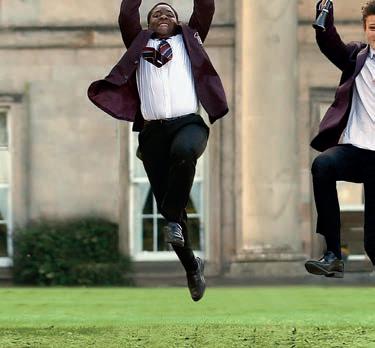












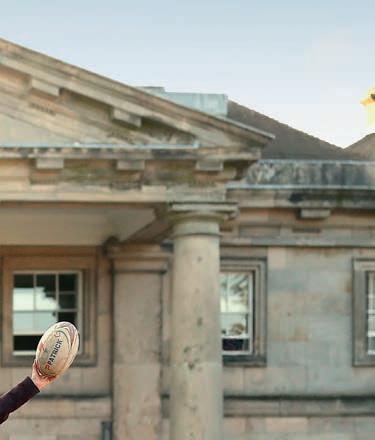








• A

•A leading selective state grammar school
•Co-educational with boarding for boys
• Co-educational

• Stunning

•Stunning boarding house set in 100 acres
• Extensive
•Extensive sport and extra-curricular activities
• Strong
•Strong pupil welfare system


•Affordable boarding from £5,094 per term
•Fees exempt from VAT
•Outstanding alternative to the independent sector

+44 1952 953810







“There's something important for a kid about being scared within very safe boundaries”

and cognitive bias – also, impressively, an evolutionary psychology explanation for why we humans are pre-programmed to be scared of the dark. “Explaining them in a kid-friendly way opens up this amazing debate they can have,” says Robins.
He hopes that these explanations serve a useful purpose in helping children rationalise other fears. “Once you understand that, you can start to feel, ‘well maybe some of the other things I feel scared about I don’t need to feel scared about’, I think there’s quite an empowering message behind all of this – that the world isn’t quite as scary a place as it might sometimes seem.”
detectives. They love exploring stu . They love trying to make sense of science and history –this is a subject that allows you to do that.”
Of course, ghost stories give children a thrill, a frisson, but this is as old as storytelling itself. “There’s something important for a kid – which is when you first come across this idea of ghosts – about being scared within very safe boundaries. It’s why we watch Dr Who or enjoy doing something like Go Ape. It’s us testing our world, testing the parameters of our world.”

Do You Believe in Ghosts? tests parameters but sits firmly on the side of spooky, rather than scary, with jokes and asides, and plenty of comic illustrations. In fact, illustrator Ellen Walker wrote to him first as an Uncanny fan and plays a key role here as a part of the ghost-hunting team. The tales cover familiar spooky ground to many adults. We read about the disturbances at 284 Green Street (aka The Enfield Poltergeist), the thrilling haunting of RAF Lossiemouth, a cellar in York where Roman Legionnaires were spotted by a hapless boiler fitter and even head back to 19thcentury New York State to meet the famous spiritualist Fox sisters.
There’s plenty of history in the mix, but also clear and age-appropriate explanations of concepts such as Stone Tape Theory, telekinesis


Adults reading along with their children may expect more questions than they can answer. “I definitely think any sort of fear within a ghost story has in equal measures that dose of optimism. It suddenly opens up the possibility that those that we’ve loved and lost still might be out there,” he says. “That potential optimism is a really powerful thing in terms of processing those moments – whether it’s a pet that you’ve lost or a grandparent.”
One of the things that has struck Danny Robins is that the audience for ghosts spans all ages. “What I’ve noticed a lot on my tour, and just generally meeting people who listen to the show or watch the show, is that there are loads of kids who are Uncanny fans,” he says. “It feels like a family-safe subject. You can approach it in di erent ways. You have the adult level where you’re consuming stu that might make you feel a bit scared, or you can have the kids’ stu where you’re loving the fact that it’s a detective hunt and that you’re learning a bit about science and history and having a bit of fun.”
With the book, plus a season of stage shows, Danny Robins is looking forward to hearing from many more fans who share his enthusiasm for considering mysteries beyond our rational world. “Detective stories normally stop when you find out whodunnit, but ghost stories just keep on unfolding,” he says. “I really like the idea that we haven’t discovered everything there is to discover about our world. What’s not to love about the idea of hunting for that?”
Do You Believe in Ghosts? by Danny Robins, illustrated by Ellen Walker, is published by Pu n Books (£8.99). The ‘Uncanny: Fear of the Dark’ stage show is on tour until March 2026. For dates and venues, visit uncannylive.com
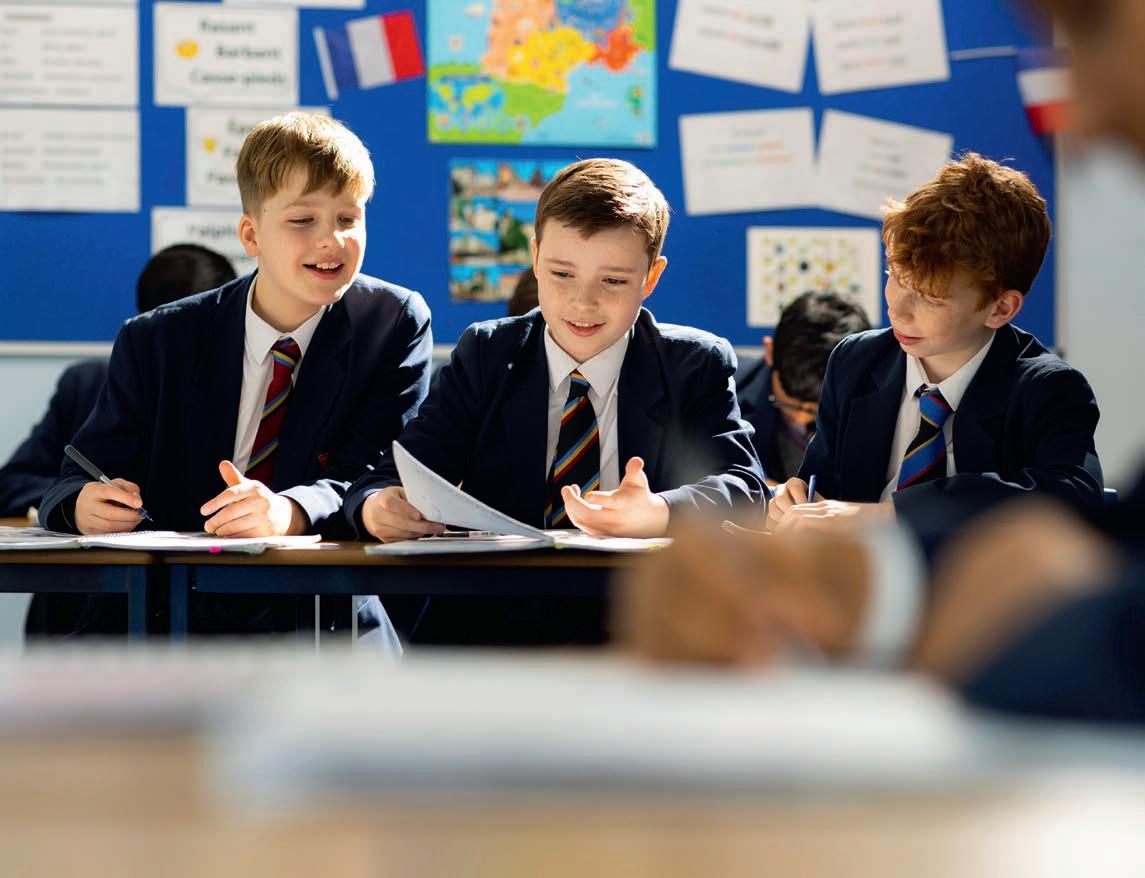
The Deputy Head of St Albans School on the vital importance of building strategies to enable human skills to develop
in an increasingly digital world
As Artificial Intelligence (AI) becomes increasingly embedded in education and everyday life, a growing concern is emerging in some circles about the readiness of young people to enter the workforce. Do they possess the soft skills needed to succeed in a world beyond school? For parents and schools, this presents both a challenge and an opportunity to impact the lives of the young people within our community in a positive way.
The rise of AI has streamlined learning for young people, but this efficiency sometimes comes at the cost of human interaction. With more time spent engaging with devices than with peers, young people are at risk
of missing out on the informal, face-to-face experiences that teach them about empathy, communication and teamwork.
In classrooms that are increasingly reliant on technology, students may excel academically but struggle with collaboration, emotional regulation and taking on leadership roles – skills that are best developed through real-world social engagement.
There is no doubt that technology has also reshaped communication styles. Social media and messaging apps favour brevity and swift reactions over depth and considered dialogue.
This can hinder the development of active listening and nuanced expression, as well as the ability to disagree agreeably –all, of course, are core competencies in any workplace setting.
The instant gratification of the digital era has, in many cases, reduced resilience and patience. Some young adults are so unaccustomed to managing delayed outcomes, constructive criticism or working through interpersonal challenges that they enter the world of work with an inclination to quit before they have even attempted to grapple with any of the challenges that are commonplace in professional situations.
That is not to make a sweeping generalisation about the behavioural tendencies of a whole generation, but rather it is to acknowledge that the skills needed to succeed are, in some cases, lacking. This is because of the environment in which young people have grown up.
With this in mind, schools must work hard to support students’ emotional intelligence in
“Schools and parents must provide adequate opportunities for young people to take the initiative and to collaborate”
the real world beyond digital devices. They do this with a specific focus on soft skills and on supporting young people –helping to counterbalance the negatives of the digital landscape.
A good place for schools to start is to remove some of young people's devices. Storing phones in Yondr pouches (or similar) before registration begins and until the end of the day is particularly helpful for restoring an element of digital/real world balance.
Encouraging collaborative learning through group projects, debates and peer mentoring is also a great way to focus on those allimportant soft skills. This gives students opportunities to work in teams and develop as good listeners and communicators.
Like many other schools, we offer a rich co-curricular programme – from drama, music and sport to Model United Nations, debating, Warhammer Society and faith groups. All of these activities help to foster leadership and empathy, as well as building friendships through shared interests.
When teaching staff model emotional intelligence this helps students learn how to navigate relationships and challenges with maturity. Such an approach also means teachers build positive and supportive relationships with students in the classroom and within tutor groups. Modelling strategies set an example that supports students in developing the emotional and interpersonal skills that AI and digital
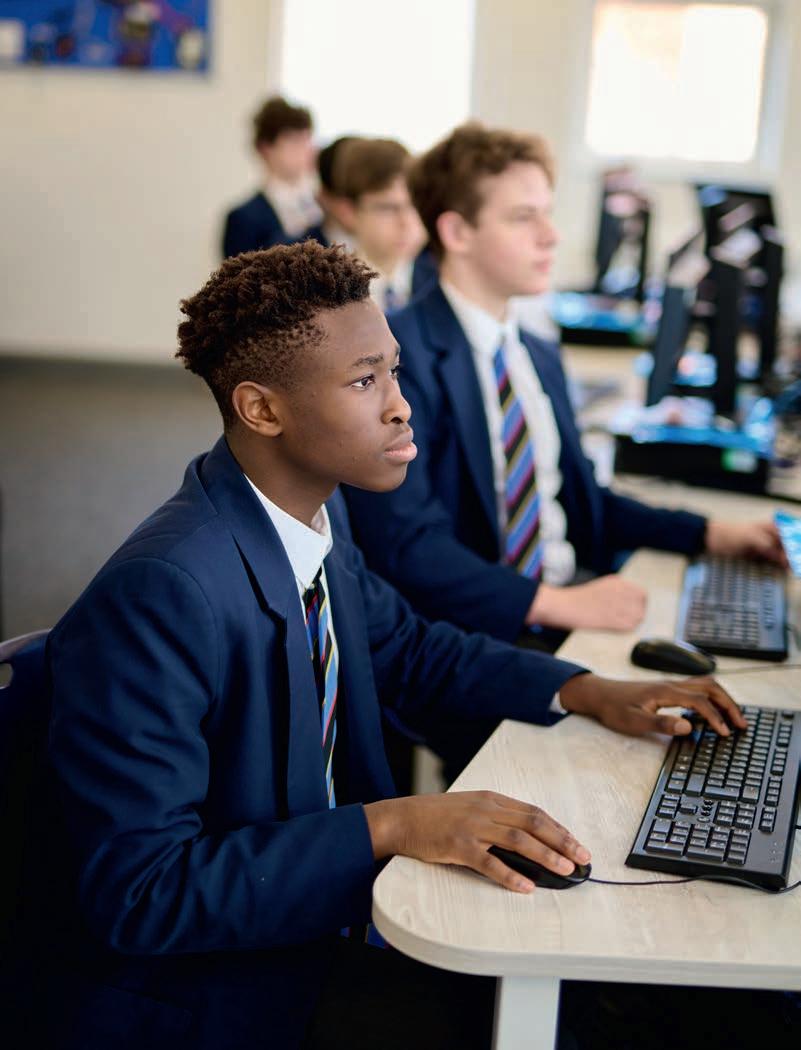
media simply cannot replicate.
Most importantly, schools need to nurture young leaders and to ensure that students leave school as confident and tolerant team players. Yet leadership and teamwork are not taught, they are experienced. Schools and parents must provide adequate opportunities for young people to take the initiative, to collaborate, and to work towards common goals.
For example, taking on leadership roles in student councils, clubs or on community projects enables young people to build both self-confidence and a sense of responsibility.
Public speaking and presentation opportunities encourage students to articulate ideas and develop poise, and it's important to celebrate and promote this method of working across teaching, learning and assessment. This is something that our school is embedding, adapting some of our assessments in the Lower School (Year 7 and 8) to include non-written, verbal assessments, such as speeches, debates or projects with a viva element.
Experimenting with mixed-age and diverse group activities is another excellent way to develop adaptability and inclusive thinking. Likewise, more formal mentorship programmes – whether with older pupils, teachers, alumni, or professionals – offer further guidance and inspiration to support young people's social development and ability to interact with different groups of people.
Our own Middle School Leaders are a brilliant example of the positive impact this
approach can have, with our Fifth Form (Year 11) students mentoring members of the school community in the Lower School (Years 7 and 8).
At home, parents have an important role to play in helping to reinforce these approaches. They do this by encouraging open communication and listening, by sharing out responsibilities and by participating in family and group activities.
While there's no doubt technology is transforming education and the workplace, soft skills remain irreplaceable. Young people need much more than technical proficiency to thrive. Emotional intelligence, resilience, and the ability to work well with others – including people with different backgrounds and perspectives – are critical.
By working together and championing human skills, parents and schools ensure that students leave education not only prepared for the future, but prepared to lead it.

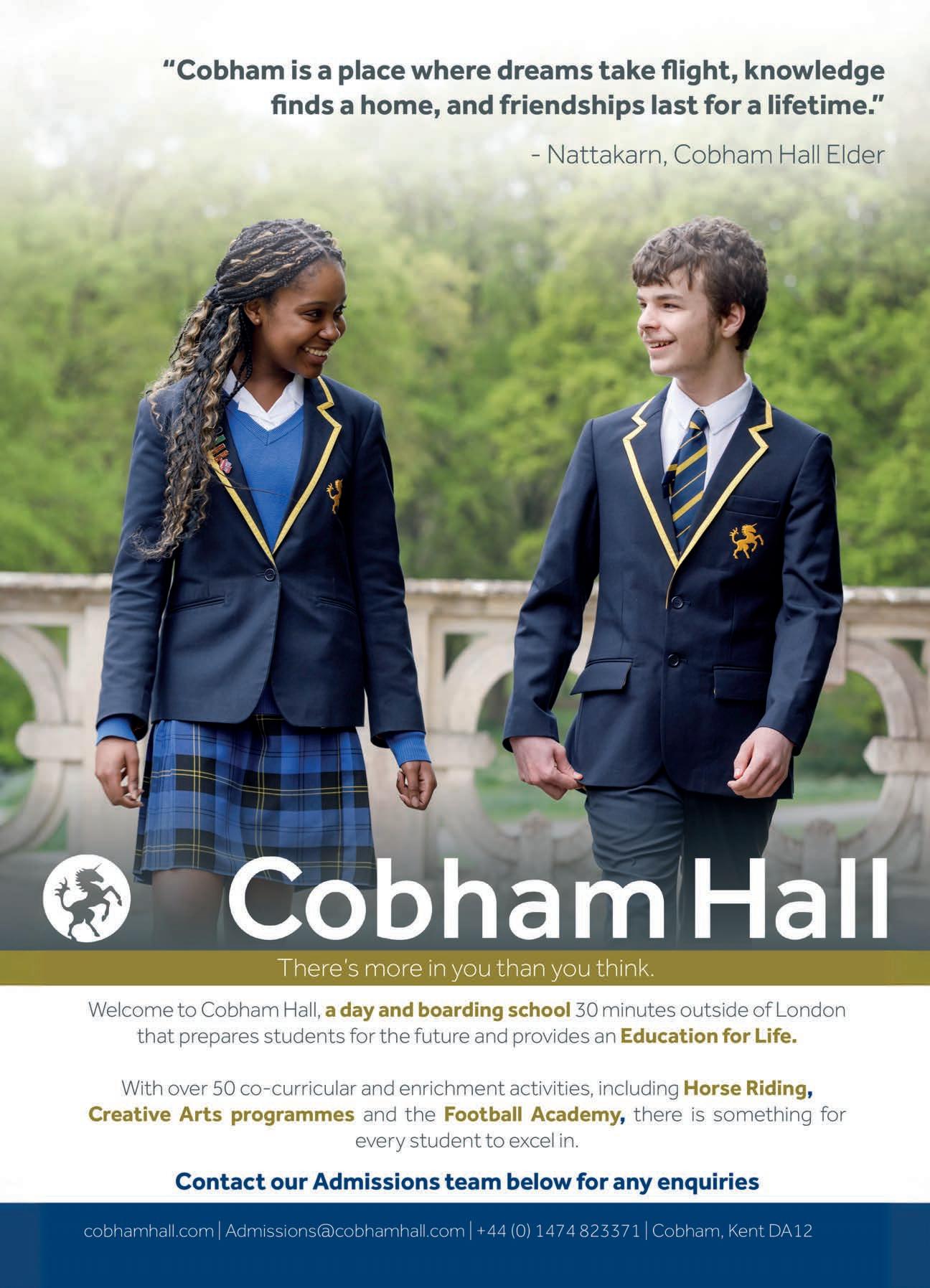
The Head of Admissions at Streatham & Clapham High School on how to approach the 11+ and assessment-day journey

It’s an early February morning and families across London are waking up to decision letters from senior schools. For parents, it’s been a long journey – printing past papers at midnight, Googling ‘net of a cuboid’, waiting in coffee shops during assessments, and decoding their child’s post-test ‘I think it went OK’ feedback. Some even manage to squeeze in a reasoning test over breakfast the next day. At the centre of all this is a child quietly carrying the weight of expectation. How the child feels – confident, anxious, motivated or discouraged – can shape not only their academic performance but also their sense of self as they step into secondary life. This is where pupil wellbeing must take centre stage. The 11+ is often framed around academic preparation, but it’s easy to forget what it feels like to be ten years old in the middle of this process. Nurturing confidence, balance and perspective is just as crucial as any revision schedule.
Schools have a responsibility to champion candidates and bring out the best in
“The admissions experience offers families insights into whether a school is the right environment for their child”
each child. A school’s admissions process should reflect its core values – kindness in how children are welcomed, compassion in listening to their stories, integrity in ensuring fairness, and respect in treating each child as an individual. Even before results arrive, the admissions experience offers families insights into whether a school is the right environment for their child. Beyond asking pupil tour guides about their lived experiences, the nature of the admissions process and interactions with staff are powerful indicators of school
culture. Before applying, it’s worth asking yourself: ‘does this process allow my child to feel seen and supported, not just assessed?’.
Parents often ask how best to prepare their child for assessment days. My advice is simple: ensure they are well rested and have had a nourishing breakfast and, most importantly, reassure them that the day is about curiosity and enjoyment and not perfection. The goal is for pupils to feel confident that the assessment is not a test, but an opportunity to explore, collaborate, and express themselves in an environment rooted in kindness and respect. When assessments are framed in this way, they become less about pressure and more about giving every child the chance to be themselves. This supports a diverse community and reflects the values that underpin education.
Our aim is for every pupil to leave the day feeling proud of who they are, valued for their individuality and excited about the next chapter, whatever the outcome. Small acts of encouragement, like a handwritten note from the Head commenting on a child’s creative writing, can make a lasting impact. These gestures matter because at the heart of this process is a young person beginning a life-changing journey of navigating friendships, discovering passions, and developing a sense of self.
So, instead of asking your child how the test went on the journey home, try asking if the staff were kind, they made any friends and whether someone was there to help when they got stuck. The answers to those questions tell you more than a test score and offer the clearest sense of whether your child will thrive in that school.

ANATOLY REEVES Head of Admissions

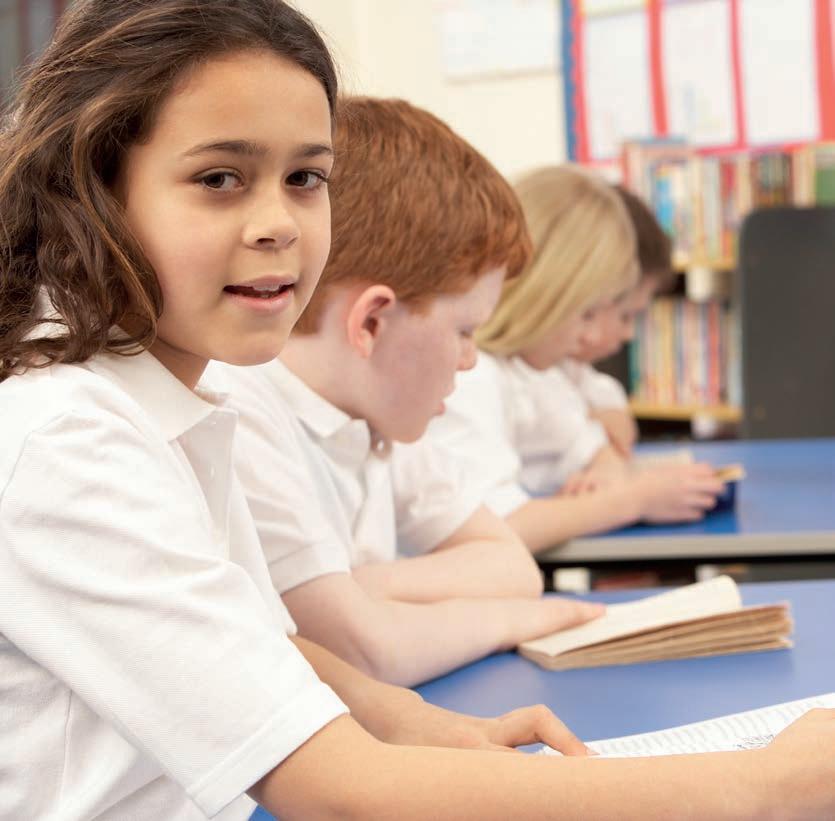
Being prepared for the 11+ takes practice – and that’s where trusted guides come in, reducing stress and building confidence and familiarity
Parents often dread the 11+ more than their children.
Little wonder, since it’s the first exam milestone, often determining secondary school options and all that follows. There’s no getting round that fact, but it can be greatly relieved for the exam taker with measured preparation and practice well ahead of time.
That’s certainly the approach many parents take, says Clare Souza, Associate Publisher at Collins and steward of its 11+ portfolio. “It’s pretty standard to buy a year ahead but some people are preparing way in advance of that.” Collins even has an activity puzzle book to familiarise much younger children with the approaches and themes of the 11+.
This is one of the great challenges with the exam – it places big demands on children, and a lot of that is down to its
unfamiliarity. Getting to know questioning styles, what is being tested, and the timemanagement requirements can make a huge difference – which is where study guides come in. “For instance, the nonverbal reasoning is pretty specialist,” says Clare Souza. “It’s a particularly tricky one to grasp for those that are sitting the 11+.”
Collins is a tried and tested name, with guides from KS1 up to A level. Many parents will have used its books in their own journey through school (sometimes under the Letts name, which came into the Collins fold a few years back).
Parents like the fact that the 11+ material is comprehensive – and with extra elements such as flash cards.
“These are a physical thing that’s really portable,” says Clare Souza. A paper-based method of practice is popular with most, who don’t want to add yet more screen time to their child’s day. And, of course,
“Getting to know questioning styles and the timemanagement requirements can make a huge difference”
writing down answers with pencil and paper supports information retention.
The Collins range for the 11+ covers all the exam components – Maths, English, Verbal Reasoning and Non-Verbal Reasoning – in each case with revision, practice and test-style papers in one book. Both GL (more common) and CEM 11+ tests are covered in different books. There is ongoing expert input to keep material current. Collins works with a team of specialist tutors and teachers.
Material is designed to be as accessible as possible – friendly fonts for this age group, laid out with plenty of space to help children digest and understand material. Practice papers are, of necessity, different. Clare Souza says that familiarity with the look of the actual test papers is really important. “A lot is getting used to the timings – a snappy answer within a set timeframe. Practice papers are mimicking real tests.”
While 11+ is a big milestone, all that preparation is not time wasted – developing thinking skills and the ability to assess what information a question is looking for. There are much tougher exams down the line. And the best support parents can provide is to empower their child by giving them tools and tactics to help them succeed. “Let them have all the confidence they can have ahead of the exam,” adds Clare Souza.

Established in 2017, Premier League Primary Stars uses football to inspire academic engagement, wellbeing and positive values

Let’s be honest, football doesn’t always get a good press. Over the years, column feet have called out the tribalism and, from time to time, dreadful behaviour among fans and players. But the ‘beautiful game’ is, most certainly, a powerful force for good in our schools, clubs and homes through the work of Premier League Primary Stars. This programme has capitalised on an advantage – football
is wildly popular with this age group. That enthusiasm is used to engage boys and girls with sport, with academic subjects (especially all-important English and maths) and with life lessons about resilience, confidence, kindness and fairness.
Premier League Primary Stars was first established in 2017 and has been a consistent presence ever since in delivering resources and ideas for primary education. It is accessible to everyone, and with particular focus on delivering age-
appropriate, practical, curriculum-aligned material. This is used by teachers, educators in settings such as out-of-school clubs, and by home schoolers (parents are more than welcome on its website).
With football as the hook, subject specialists and heavyweight partners, such as the National Literacy Trust, have helped develop accessible and engaging resources that support children’s learning. There are great initiatives in areas that don’t instantly seem a natural match – poetry, for example –

to inspire creativity and help children get in touch with their feelings.
It’s now widely accessed – used in over 20,000 primary schools across England and Wales – and with some 18 million attendances at club-led sessions delivered by 103 professional football club community organisations. More than 70,000 teachers are registered for its free downloadable lesson plans. Premier League Primary Stars estimates it reaches 1.1 million children every year through digital resources.
The data is impressive, so too the fact that its resources are attuned to the issues of our time. There is a big bank of teaching resources supporting children’s mental health, confidence and ability to bounce back from setbacks. For instance, this autumn term kicked off with an academic planner to highlight special events, including World Mindfulness Day. Similarly, after that great defence of their Euro title earlier this year, there was a Resilience Pack featuring stories and insights from the Lionesses (plus Harry Kane) on themes such as learning from mistakes and adopting a can-do approach even when you fear failure.
There has been some especially timely material on allyship – called
Active Allies – to help children overcome stereotypes and outdated attitudes and encourage girls to be more confident playing sport alongside boys. And there’s a wealth of material to keep playground play clean through the Play the Right Way theme. With many initiatives, downloadable material includes inspiring short films and assembly plans, as well as suggested classroom activities.
There is also specific targeted support for children facing difficulties such as anxiety around school attendance. This is delivered through more than 100 professional football club charities, spanning both National and Premier leagues.
Of course, nothing the greatest teacher prepares for a lesson plan could come close to beating a surprise school visit from a hero of the game. Coming face to face with Theo Walcott and having his motivational support during a lesson is something that ensures lessons are taken to heart. Walcott, who helped launch Premier League Primary Stars back in 2017, visited a primary school with his former club Arsenal in February for the launch of resources for Children’s Mental Health Week. There have been other similar club-led visits by great names –
“Nothing the greatest teacher prepares for a lesson plan could come close to beating a surprise school visit from a hero of the game”
including Chloe Kelly, who visited schools to support the launch of allyship resources. Premier League Primary Stars is funded by its charitable arm, Premier League Charitable Fund, one of the largest sports charities in the world, and works alongside professional football club charities. It’s good to see the Premier League, and clubs at every pro level, investing in young people. Even better that their objective is not only to grow the next generation of players and fans but also to support children’s academic success, confidence and wellbeing.
* Premier League Primary Stars plprimarystars.com

Mark Loveday of Frewen College on new dyslexia understanding and the importance of timely professional diagnosis and support

The question: ‘what is dyslexia?’ has been debated for nearly 150 years, with the first case being identified in 1877. In England, the first recorded case occurred in 1896 in Sussex, the home county of Frewen College, when a physician diagnosed a boy named Percy. The physician described him as being a bright and able child with normal intelligence, but who experienced significant difficulties with reading. Labelled as having ‘word blindness,’ Percy represents the first documented case in England of what we now call dyslexia. Fast forward to the start of 2025, and we saw the launch of the long-awaited outcomes from the Delphi Dyslexia Study and associated updated diagnostic definition. This update places greater emphasis on co-occurring needs – fluency, background, and orthographic skills –representing a significant step forward in how dyslexia is understood and supported. Frewen College is considered to be
the oldest dyslexia school in the world, and we are proud to be at the forefront of this national development. Our involvement has come about through my position as a Board Director for the SpLD Assessment Standards Committee (SASC), helping to define the future of dyslexia support across the UK.
Learning to read and spell is a complex process, beginning with accurate graphemephoneme (letter-sound) correspondence, progressing to the recognition of sight words, and, finally, extending to the ability to manipulate elements within words. Although difficulties with literacy are central to dyslexia, its impact often extends beyond reading and spelling. Memory and processing difficulties mean that many individuals also experience difficulties with organisational skills, further adding to the challenges they face.
Early dyslexia identification is vital, with better outcomes for children where this has taken place. Additionally, children with poor reading are at increased risk of a range of emotional and behavioural difficulties.
“Although difficulties with literacy are central to dyslexia, its impact often extends beyond reading and spelling”
As part of its commitment, Frewen College has introduce Prep Plus+, an initiative which opens the doors of our small and nurturing Prep to students with literacy difficulties – even in the absence of a formal dyslexia diagnosis. We also provide a vital diagnostic pathway, offering assessments for dyslexia and co-occurring needs through our onsite multi-disciplinary team. Our team includes specialist teacher assessors, occupational therapists, and speech and language therapists.
The use of screening tools can play an important part in gathering background information, with the data often supporting evidence for onward referrals. But they do not provide a definitive diagnostic outcome. Where dyslexia is suspected, and an onward referral made or recommendations given to parents, it is important to ensure that professionals are suitably qualified. In the UK, these professionals are either registered Educational Psychologists or registered Specialist Teacher Assessors. Information can be found via the SpLD Assessment Standards Committee (SASC) or The Health and Care Professions Council (HCPC) websites.
Our outreach service – the Frewen Advisory Support Team (FAST) – further supports schools and parents, by providing specialist advice, support and assessments.
Frewen College remains committed to leading the way in dyslexia education, championing inclusion, early intervention, and specialist support which transforms lives.
MARK LOVEDAY Headmaster Frewen College
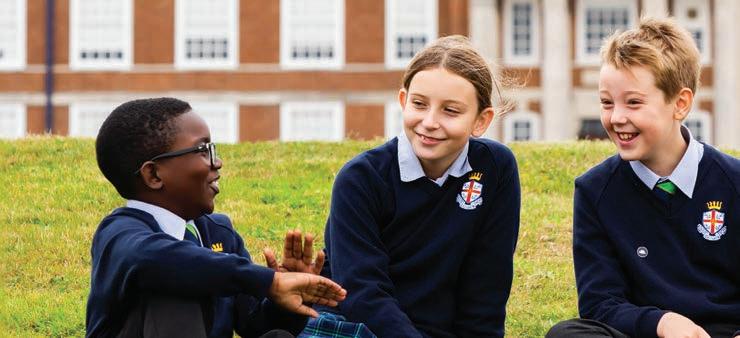




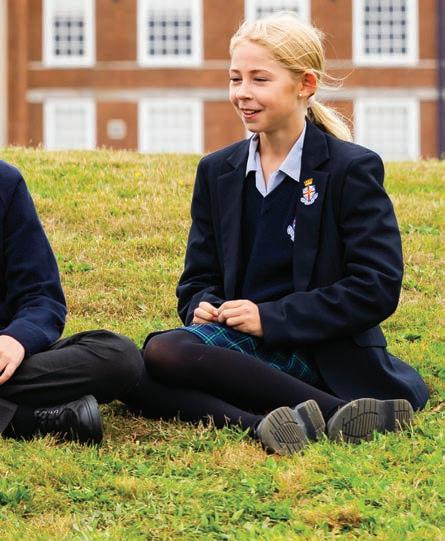

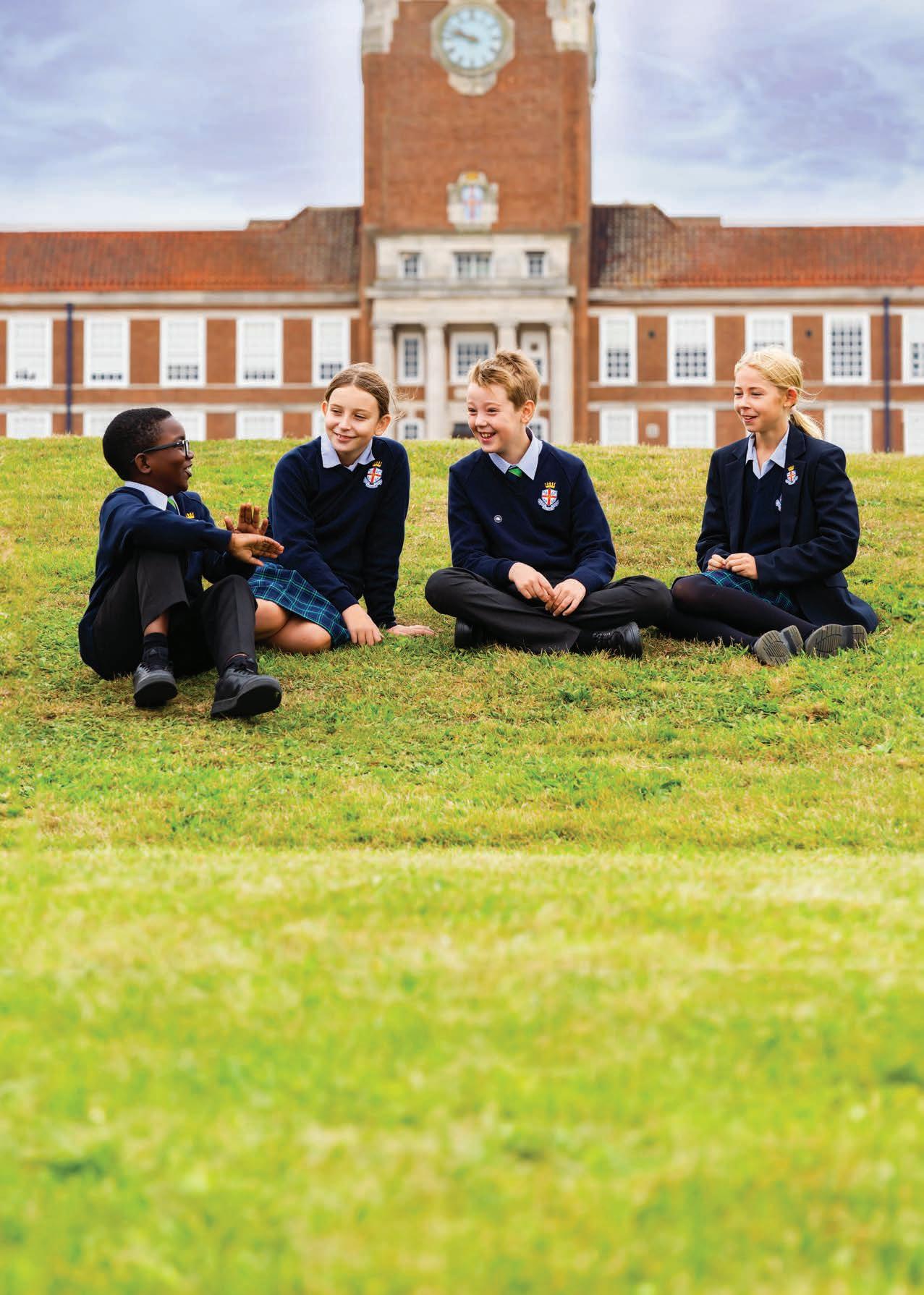






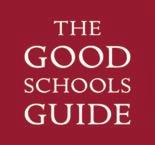


Jon Gray, Head of York House School in Hertfordshire, on what makes standalone prep schools unique – and how we preserve that education choice
The population of standalone prep schools in this country has been in decline for several years. Diseconomies of scale are a challenge, as are the growing bureaucratic demands on a sector that has experienced eroded independence for decades. This has led to a growing trend of prep schools looking to secure their futures within larger educational groups or senior schools. It’s no secret that the current economy is not a friend to the smaller business and so the idea of collaborating with an organisation that is better equipped to weather the storm can understandably be an attractive proposition. This trend is occurring at a time when independent schools need more complex sta expertise – whether that be in diversity and inclusion, mental health, safeguarding or technology. The list is long and still growing. Prep schools of 25 years ago did

“Prep schools are traditionally all about preserving childhood. They are about safety, playing with friends and building emotional resilience”
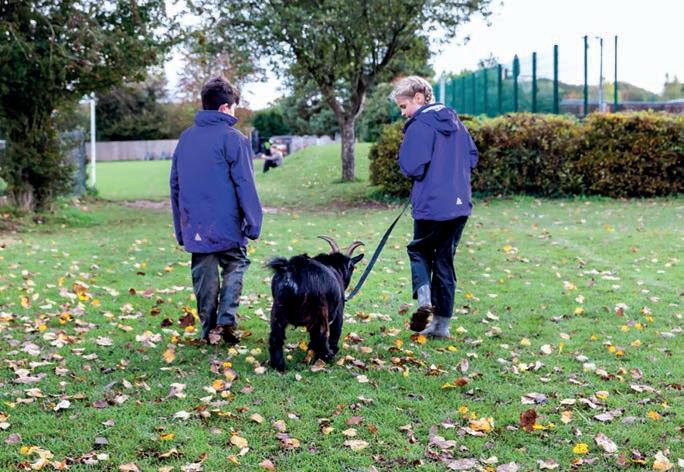
not need compliance o cers, HR managers or, indeed, a finance team capable of coping with the imposition of VAT on school fees. If you also consider the landscape today, the number of pupils going from prep to senior boarding is decreasing, as is the distance that families expect to commute to and from school. The typical prep school of yesterday was in the countryside, had boarders, was often single sex and with provision up to 13 years. The modern prep may be more likely to meet with success as a co-educational day school, close to an urban centre catering for children up to age 11. Prep schools need to consider how they fit into that new marketplace. This is not just about weathering the current storm but choosing a path that is right for the future of the school. Preps set out to deliver a unique and child-centred approach. The value of this education is in its point of di erence. Some prep schools are all about adventure and the
outdoors, while others push their incredible pastoral care, diverse co-curricular o ering or the specific personality of the school – what it is ‘known’ for delivering.
The central point is that prep schools are traditionally all about preserving childhood. They are about safety, playing with friends, nurturing happiness and building emotional resilience. Standalone prep schools are also unique in their ability to give credible advice to families on the best onward destination – based on years of knowledge of both children taught and di erent senior school approaches.

All prep schools must look to build multiple revenue streams, achieve economies and modernise processes. Strong communication is also vital to justify existence and preserve prep school uniqueness. This is important so that children can continue to enjoy a happy, genuine childhood – and parents can still exercise a choice about the education environment best suited to their children.

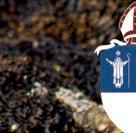




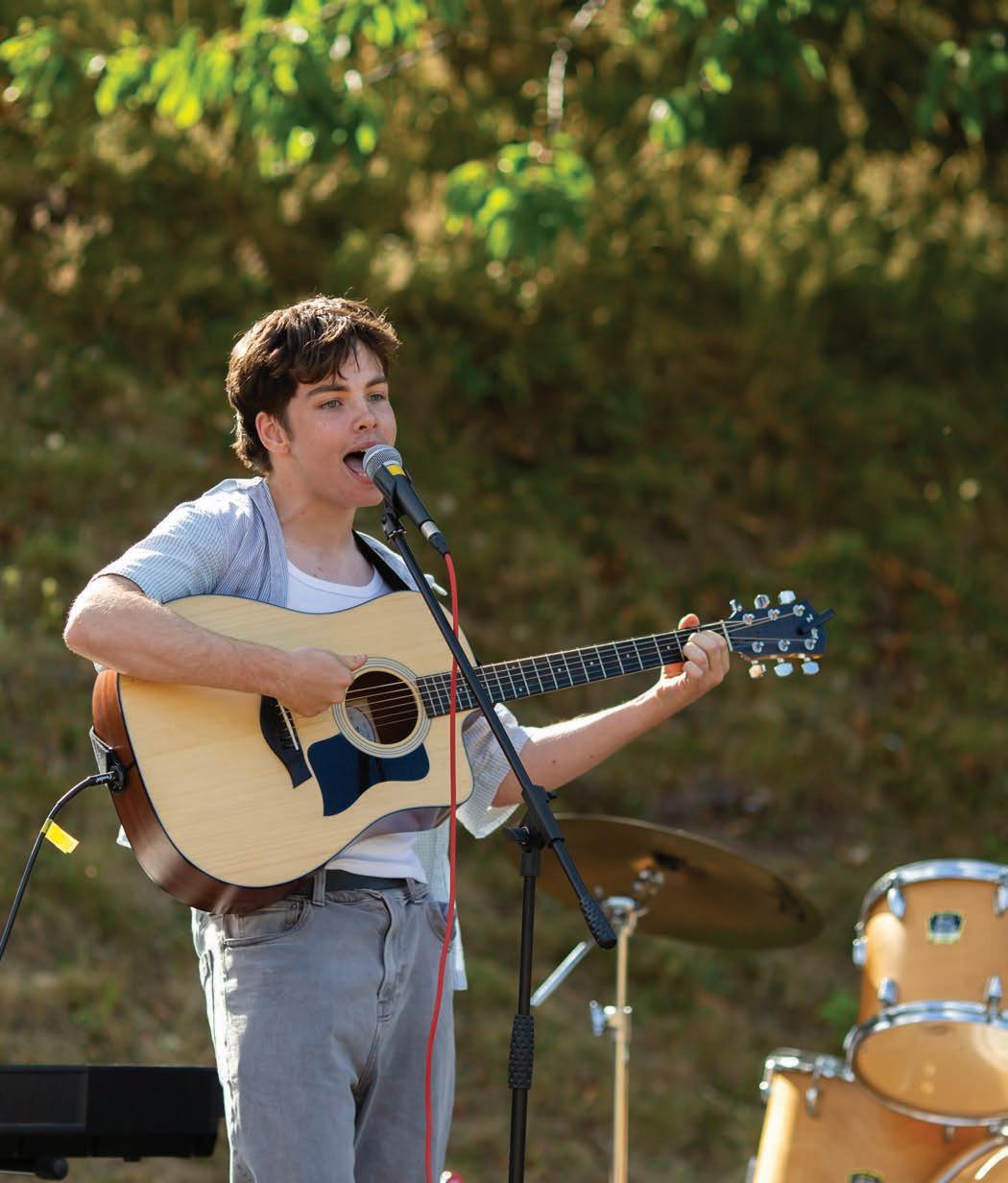
Page 90
Music is part of the creative landscape of our schools, but feeds into so much more – from academic skills to wellbeing, confidence and community spirit. We talk to two schools that passionately believe in its transformative power
At The Duke of York’s Royal Military School (DOYRMS) in Kent, music is a defining part of school life that grows with every student and supports their interests and ambitions. From their first day, students are encouraged to explore and express themselves through music, with a programme designed to evolve in a way that matches individual aspirations.
With exceptional facilities and a deep belief in the power of performance, the school says that music remains an intrinsic part of education, bringing academic, social, and creative benefits – a natural and everyday part of school life. Every Year 7 student receives free music lessons, offering a foundation for musical discovery and building confidence.
As students move through the school, the music programme becomes more specialised. Options range from tailored tuition and ensemble opportunities to performance pathways.
DOYRMS’ Performing Arts Centre stands at the heart of this creative journey. It provides a professional stage for concerts, recitals, and the school’s much anticipated annual musical. These events bring together students from across year groups, whether they study music formally
or simply wish to take part in a shared creative experience. While this supports a vibrant musical life, so does the school Chapel – home to whole-school weekly hymn practice and to the Chapel Choir. Opportunities extend beyond classroom and other formal spaces. Keyboards and instruments are available in every boarding house and also in the school’s coffee shop for impromptu
performances. This means that students can practise or perform at any time. A culture of informal music making reflects the school’s belief that creativity should be encouraged and be accessible to all.
One important aspect of life at DOYRMS is the tradition of a Military Marching Band, which remains a source of great pride. Performing regularly at school and community events – as well

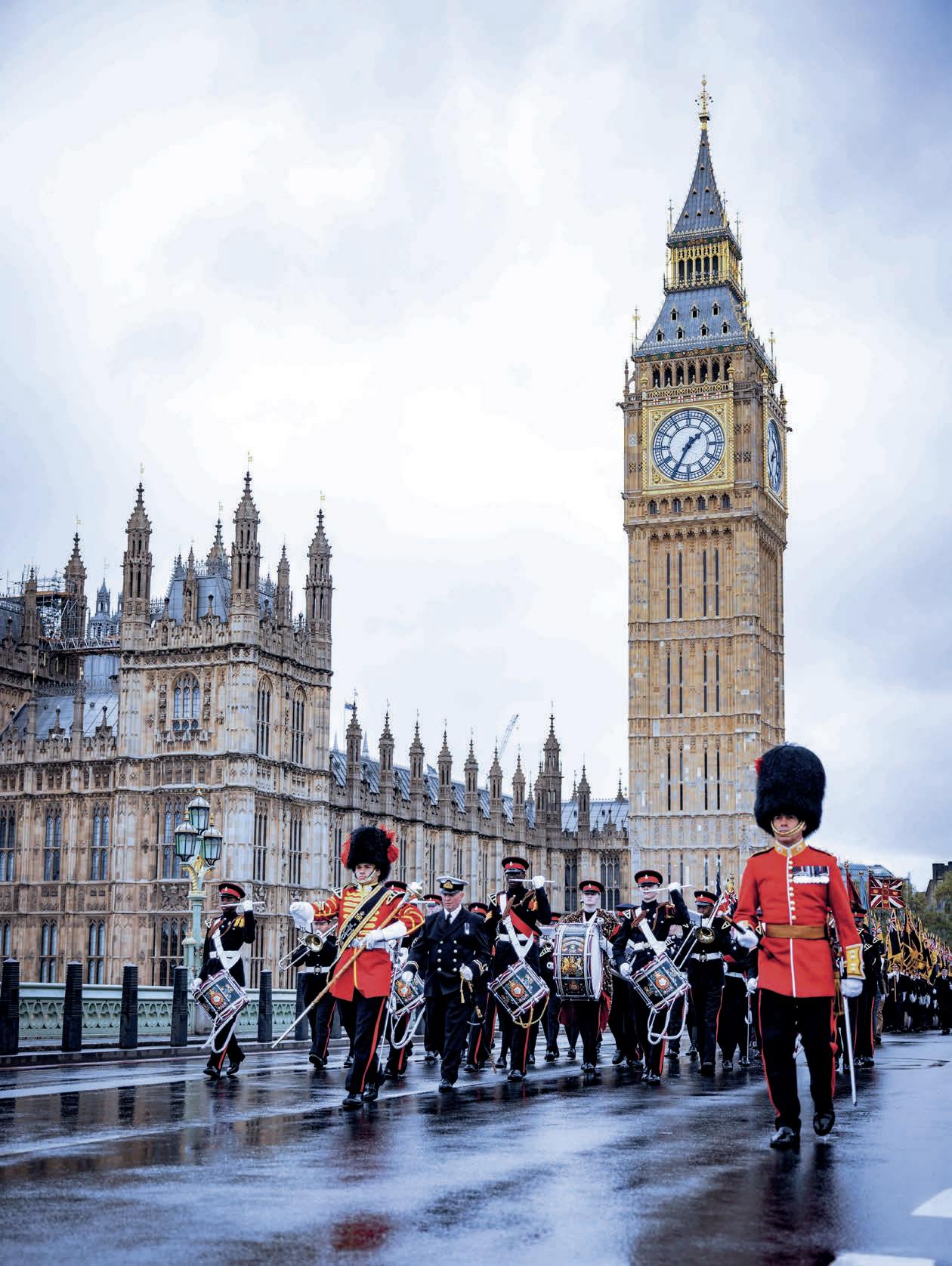

“DOYRMS’ tradition of a Military Marching Band remains a source of great pride – even performing at the King’s Coronation”
































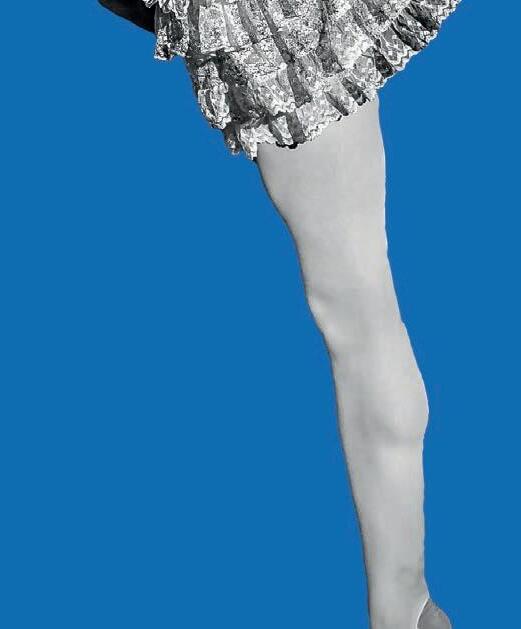















as important national events such as the King’s Coronation – the band represents the discipline, teamwork, and heritage that underpin the school’s history and ethos. Through these performances, students not only develop musicianship but also a deep sense of service and connection to the wider community.
“Music enriches every aspect of life at DOYRMS. It builds confidence, fosters teamwork, and brings joy to our community,” says Principal Alex Foreman. “From the classroom to the stage, and everywhere in between, music truly matters here.”
At Malvern College in Worcestershire, the focus is on education beyond academics.
Malvern considers it vital to develop not only academic strength, but also EQ (emotional intelligence) and CQ (cultural intelligence). The team say that music is a perfect reflection of why this approach is important. Under the leadership of recently arrived Director of Music, James Ramm, it is making a big impact on students and the whole school community.
Malvern College says that learning music sharpens IQ. It also builds focus, discipline and creativity – whether mastering an instrument, composing, or experimenting with digital recording. But music also does something more profound in developing students’ emotional skills (EQ). Playing or singing together demands empathy, listening and respect. Director of Music James Ramm says is not about being the loudest voice but about finding balance and harmony within a group – life skills

“From informal ‘Live Lounge’ sets to the Concerto Concert, the aim at Malvern College is to provide opportunities for every kind of musician”
every bit as valuable as the ability to solve an equation or compose an essay.
Cultural understanding (CQ) is also seen as a vital part of the mix. Malvern is a diverse, global boarding community, where pupils bring different backgrounds, cultures and perspectives. The team here believe music is one of the most powerful ways of bridging those cultural differences. A choir, jazz group or Live Lounge performance is not just a showcase of talent, but an expression of cultural exchange and shared experience. In a world that can sometimes feel divided, this is giving students something in common and something to celebrate.
While music education has been in decline across the UK, it remains a central part of school life here in the Malvern Hills. “We believe music is not an optional extra, but a vital thread in building confidence, wellbeing and community. Music helps young people find their voice and, just as importantly, to listen to others. At a time when the world feels increasingly polarised, those are lessons that extend far beyond the classroom,” says James Ramm.
This ethos is seen in action every day, he adds. From relaxed ‘Live Lounge’ sets at The Grub café, where pupils build confidence in a relaxed setting, to largescale showcases such as the Concerto Concert, the aim is to provide rich opportunities for every kind of musician.
As an All-Steinway School, Malvern also ensures pupils who want to take their musical ambitions further have access to the very best instruments, matching their persistence and enthusiasm with
world-class resources and tuition. That commitment is now reflected in the transformation of the Music School into a vibrant new space, with specialist teaching and rehearsal rooms, a purposebuilt performance area, and a stateof-the-art digital recording studio.
Whether a pupil is picking up an instrument for the first time or preparing for conservatoire, this setting is designed to nurture talent. Initiatives like the Young Malvern Musician of the Year competition highlight the school’s commitment to both excellence and inclusion. The event inspires beginners and advanced performers alike to share their music, says James Ramm.
This event also supports the school’s boarding ethos. When young people are living and learning together, community spirit is vitally important. Music at Malvern provides shared opportunities and a sense of connection – both of which help to support young people’s confidence, resilience and sense of belonging.


Charles Janz, Director of Music at Emanuel School, on how a DJing outreach programme in local primaries is transforming music access
Nearly 80% of our pupils are on free school meals, and many rarely leave the estate where they live. Without the few initiatives the school provides, most would have no access to music at all.' Hearing those words from a headteacher, on the day I visited to discuss a possible music outreach partnership, brought home how fragile access to music can be for children. It also highlighted a broader truth. In some communities, barriers such as cost, access, language and confidence make it incredibly di cult for pupils to engage with the arts. Music is often the first thing to fall away.
Every Monday, I visit state primary schools across south London to teach a DJ course that introduces pupils to the fundamentals of electronic music performance. Using Pioneer DDJ-200 controllers and Rekordbox software, they learn how to beat match, loop, use EQ and filters, set hot cues, identify track structure, build playlists and understand the basics of digital sound. At the end of the course, they take those skills to XOYO, one of London’s most iconic nightclubs, where they perform a live DJ set to an audience of parents, peers and teachers. Teaching DJ skills in these schools feels very di erent from working in traditional classroom or instrumental settings. Normally, we build



on foundations already in place – notation, aural training or experience with rhythm and melody. Here, pupils are often encountering these concepts for the first time, which challenges us as teachers to adapt quickly.
Concepts that might be familiar to trained young musicians – keeping time, recognising patterns, listening critically – sometimes need to be introduced from scratch. That means stripping back technical language, modelling skills, and giving pupils time to practise and refine through repetition and peer learning. The process is slower but also more responsive. It reminds us that music education is as much about opening doors as it is about developing expertise.
And it all comes to life on stage. There is always a moment, during the final soundcheck at XOYO, when you see a pupil go from tentative learner to confident performer. They have curated their own set, learned the skills to deliver it live and now find themselves standing behind the decks facing an audience. That shift in selfperception, and in how others perceive them, is where the real power of this project lies.
Their journey doesn’t end in XOYO’s DJ booth. After the performance, I return to the school to support each pupil in recording their individual mix, which is then
submitted for the new ABRSM DJ exam. These children are among the first in the world to gain this DJ qualification, and the pride they feel in doing so is immense.
This is, of course, a music project, but it is also about identity, aspiration and access. DJing gives pupils a way into music through a cultural language they already connect with. It builds transferable skills. Most importantly, it creates a bridge between school and the professional world, helping pupils see themselves not only as musicians but as confident young people with something to say. At a time when the arts are being squeezed in so many schools, projects like this show what is possible when we give children creative spaces to explore who they are and what they might become.



Holland Park Gate by Lodha is Kensington’s favourite family development, preferred by parents for its proximity to many of London’s top schools as well as Holland Park’s 54 green acres. Enjoy a joyful, balanced and fulfilling family life with additional household amenities including:
• Kids’ club for fun & education
• Dedicated house car for school runs
• Weekly school uniform laundry services
• Partnership with leading educational consultancy



Emma Watson, new Head of St Catherine’s, Bramley, on why we must show young people the importance of not just doing well academically, but doing good through their choices

As teachers, parents, and school leaders, we often think about the importance of raising healthy, successful, independent young people who can reach their potential through determination and effort, and who are respectful, honest, and kind. These are essential traits and form the foundation of strong character. But perhaps we should go a step further, because in today’s world, it’s not enough to focus on doing well. To help our children live fulfilling lives, we must teach them how to do good..
Character education is not just about instilling values, it’s about empowering our students to act. This means helping students understand that their integrity, empathy, and courage must be lived out in the real world and online, where their choices can uplift others, challenge
injustice, and create lasting change.
Take Sir Tim Berners-Lee as an example. He created the World Wide Web in 1989, but rather than monetising his creation, Berners-Lee made a different choice – he gave it away. No patents or royalties, just a gift to humankind. As a professor at Oxford and MIT, he was committed to openness and universal standards, ensuring the web served humanity. At the 2012 London Olympics opening ceremony, Berners-Lee typed a simple, powerful message: ‘This is for everyone’. The lights across the stadium reflected the sentiment, acknowledging the millions of lives already changed by the web and the man who gave it freely.
At St Catherine’s, character education is not a bolt-on –it’s at the core of everything. Whether it’s through community service, House
“Integrity, empathy, and courage must be lived out in the real world and online, where choices can create lasting change”
events, student mentorship or simply encouraging students to look after each other, we are committed to nurturing not just ‘good students’, but active citizens –students who do well and do good. We want our students to understand that kindness is more than politeness. It’s stepping in when someone is being hurt, bullied or insulted. That integrity is more than honesty, it’s speaking out when something is wrong or unjust. And that leadership is more than popularity, it’s using your influence to make positive change.
We need a generation that doesn’t just hope for a better future but builds it. And that starts here – in our classrooms, on our sports fields and in our homes. Our children watch how we adults treat others and use our voices. It’s vital we show them that doing well isn’t just about accomplishments, but daily choices.

EMMA WATSON
AI will only get more sophisticated. None of us know what that will look like, only that it will bring with it both good and bad. Our students need to be able to participate ethically and make wise decisions. AI won’t replace schools, but as educators we need to embrace our role. That means prioritising human connection, character development, an ethical mindset and the courage to do good, alongside the capability to use an increasingly powerful technology.

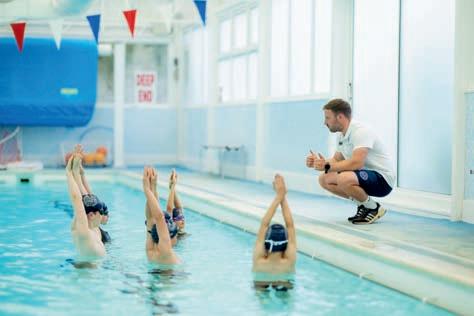


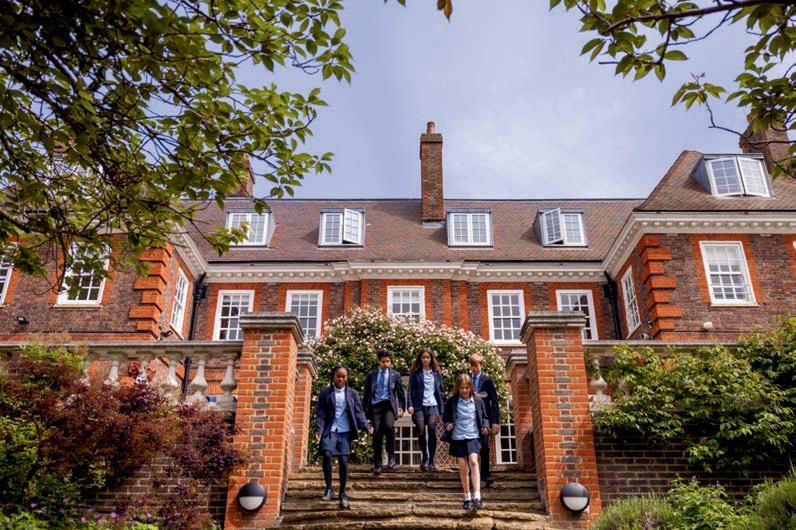
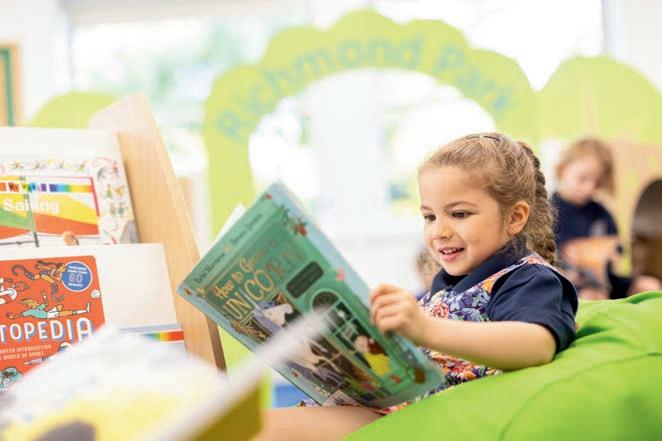

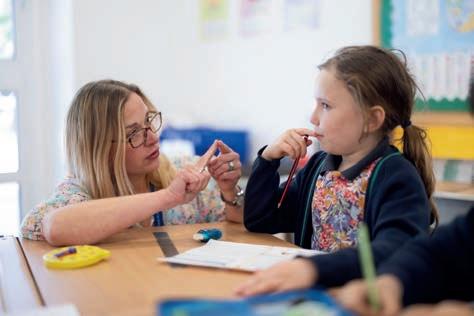


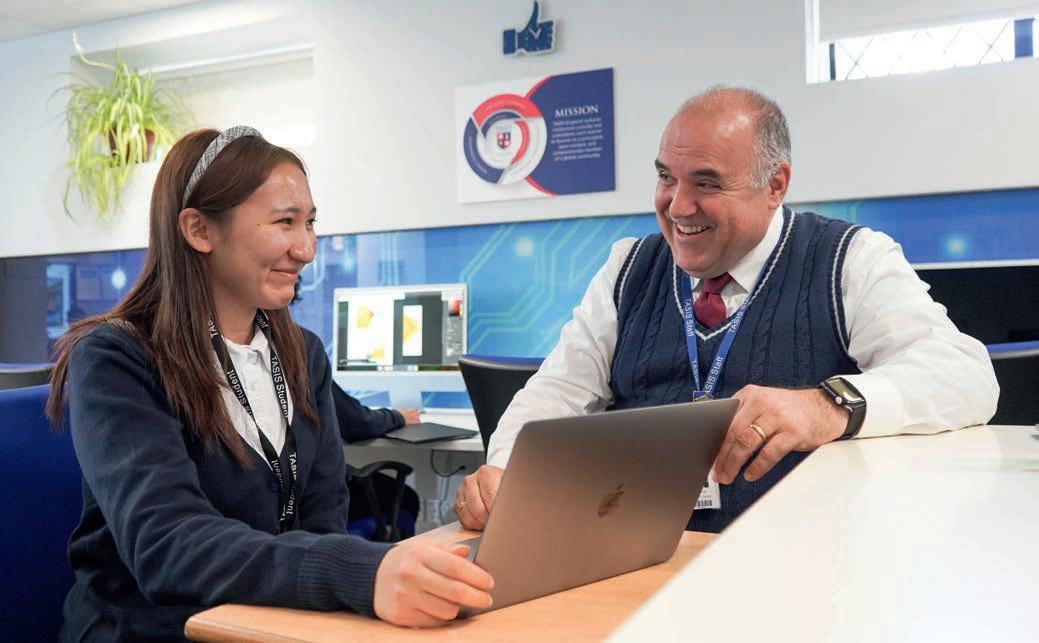
Joshua Clark of TASIS England on how schools can use technology to turn learning into a personal journey for every student
Education has always evolved with technology – from the humble abacus and chalkboard to the rise of artificial intelligence (AI) and virtual reality (VR). Today, schools are focusing on how to provide personalised learning while still maintaining rigorous academic standards. For international schools, technology supports learning for students from diverse cultural, linguistic and academic backgrounds. Schools with students from all over the world must consider different levels of academic preparation, cultural perspectives and language proficiency. In these settings, personalisation becomes a critical focus to ensure every learner is both challenged and supported. One student may arrive excelling in mathematics but still developing confidence in English. Another could come with strong language skills but limited experience in inquiry-based science. Technology allows teachers to adapt accordingly. It also creates opportunities for students to work at their maximum level of interest, ability and pace. Personalised learning gives more ownership, as students shape their education through
“Technology creates opportunities for students to work at their maximum level of interest, ability and pace”
elective choices, interdisciplinary projects and inquiry-driven coursework. Technology also provides pathways to adapt pace or explore interests. Adaptive platforms adjust tasks to suit each learner’s level, while STEM labs, maker spaces and robotics programs encourage students to test ideas, design solutions, and express creativity in ways that align with their personal strengths. As personalisation increases, the role of the teacher becomes more critical. Teachers curate resources and delivery methods to ensure learning standards are met while considering how to differentiate based on the learning opportunities and needs in the classroom. They guide students in using
resources and offer feedback instantaneously as well as over time. Most importantly, teachers help students discern when technology should be used and when more traditional methods – discussion, reflection or hands-on activities – are more effective. When technology is implemented thoughtfully, it can unlock opportunities. Adaptive software provides tailored modules and exams can triangulate the edge of a student’s understanding. Robotics, coding and 3D printing allow students to be curious and develop essential problemsolving skills, while interactive displays make abstract concepts more concrete. Technology is not a panacea and overreliance on devices risks limiting human interaction. Students may have differing levels of prior exposure to technology, creating inequities in skill and confidence. Data privacy and ethical questions around AI demand careful consideration, too. Every learning community must consider its own goals, resources and needs. Clear guidelines around device use and a common understanding of the role of technology ensure that it enhances rather than overwhelms the learning process. Ultimately, personalisation works best when innovation is balanced with the human connections – it is in that balance that the most meaningful teaching and learning takes place.

JOSHUA CLARK Director of Student Recruitment and Admissions

The Headmistress of Marymount London on how the IB helps to shape students academically and develop them as well-rounded young adults
With SATS, GCSEs, A levels, MYP, IB, it sometimes feels like education is just one long string of acronyms. And with every new option comes a fresh wave of questions.
What’s the di erence? Which one is right for me? How will any of this actually help me in the future? It can feel overwhelming. Apprenticeship, university, college – there are so many di erent doors to choose from. And, of course, behind every door is a di erent pathway, a di erent workload and a di erent outcome. The big issue that lingers for students (and for parents, too) is: what is our best choice?
If you want the shortest answer: there isn’t a one-size-fits-all path. But if you want a choice that is recognised globally, admired by universities, and respected for both its academic depth and its ability to form wellrounded young adults, then you’re probably looking at the IB Diploma Programme.
“Our students are learning how to think critically, act compassionately, and engage with the world”
The International Baccalaureate, often called the IB, is more than just a qualification. It’s a philosophy of education that values breadth as much as depth. While A levels, for example, ask students to specialise and narrow down, the IB keeps the doors open. Students study six subjects, ranging from languages and sciences to mathematics and the arts. Subjects sit alongside three core elements: Theory of Knowledge (a course in critical thinking), the Extended Essay (a piece of independent research), and CAS (Creativity,

Activity, Service – ensuring students develop beyond the classroom).
This mix is what makes the IB so special. It’s rigorous, yes, but it’s also holistic. It doesn’t just prepare students to pass exams but to think, to question, to collaborate, to understand the bigger picture, and to explore the world around them. That’s why it’s sometimes referred to as a gold standard of education. From Oxbridge to the Ivy League, admissions o cers respect the IB because it signals that a student hasn’t just passed exams but has developed independence, resilience and a genuine love of learning.
At Marymount, we’re proud to be the only all-girls, IB-only school in the UK. For us, the IB isn’t just an option, it’s our entire focus. And that focus delivers results. In 2025, our students achieved a 100% pass rate
with an average score of 37 points, well above the global average of 31. These aren’t just numbers – they represent real young women achieving their potential and ready to step into the next stage of life with confidence.


But beyond the grades, we believe what sets our IB journey apart is the experience. Our students aren’t here simply preparing for exams they are learning how to think critically, act compassionately, and engage with the world around them. They leave not only with a diploma, but with the mindset and skills to thrive in any university, career or community they choose to join. So, if you’ve ever wondered what the IB is and why it matters here’s the short version: it’s an education that challenges, supports and transforms you. And here at Marymount, it’s what we do best.











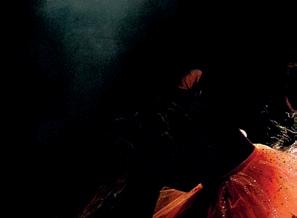



Education has too often framed the performing arts and academic rigour as competing priorities.
In an era of league tables and accountability, the performing arts are sometimes perceived as enrichment rather than essentials –enjoyable but dispensable when pressures mount. My own experience at ArtsEd convinces me that this is a false opposition. When academic excellence and performing arts are woven together, both thrive.
As Headteacher of ArtsEd Day School and Sixth Form in Chiswick, I see this every day. Our students commit themselves not just to traditional academic




subjects, but also to high-level vocational training in acting, dance and musical theatre. The result is not a compromise between academic and artistic learning but a fusion that creates outstanding results in both.
One of the common misconceptions about performing arts education is that it is less rigorous than academic study. In fact, the opposite is true. To perform well on stage or in the studio demands discipline, resilience, teamwork and the ability to respond quickly under pressure. These are qualities that transfer directly into the classroom.
From an early stage, students at ArtsEd learn professional etiquette that mirrors





industry standards: punctuality, preparation and mutual respect. This ethos sharpens their attention and focus. When they enter their Maths or English lessons after a demanding rehearsal, they bring with them the same commitment to excellence.
Rigour in the performing arts also builds self-confidence. Students accustomed to performing in front of an audience are better equipped to contribute to lessons, present ideas and think on their feet. In my experience, this confidence is not limited to the extrovert or naturally gregarious. The quietest of students can flourish through performance, discovering a voice that then strengthens their academic work.

Here, academic achievement sits alongside training in the performing arts, not behind it. Our recent recognition by the Independent Schools Inspectorate as having a ‘significant strength’ in the performing arts, and the ISA National Award for Excellence, testify to this. However, the real proof lies in the outcomes for students, with excellent grades (the best GCSE results since these exams were reformed), outstanding university and conservatoire destinations and the skills to succeed in demanding professions – both within and beyond the performing arts.
Creativity also enhances cognition. When our Geography students construct three-dimensional models of landforms or when History students make films to explore events, they are engaging both analytically and imaginatively. This dual approach deepens their understanding and retention of knowledge. It is not

about replacing rigour with play; it is about using creative processes to reinforce intellectual challenge.
In English lessons, as another example, texts are often brought to life through enactment. This not only encourages a richer appreciation of literature, but also helps students to grasp themes, subtext and characterisation in a way that sits alongside close reading and critical analysis. Similarly, in French, musical integration strengthens language acquisition, showing how cross-disciplinary methods enrich and enhance learning.
Of course, not every school can replicate the intensity of ArtsEd’s curriculum. We are fortunate in being a specialist performing arts school, but the underlying principle – that academic rigour and creative endeavour reinforce each other –can be applied in any educational setting.
At a time when curriculum pressures can lead to a narrowing of subject choices, the risk is that the performing arts are squeezed out. Yet research consistently shows that participation in music, drama and dance enhances cognitive development, executive function and problemsolving ability. Even small opportunities for performance, collaboration or creative expression within lessons can yield significant benefits.
In my view, the challenge for education today is not simply to produce excellent exam results, but to prepare young people for a future
“Students learn professional etiquette that mirrors industry standards: punctuality, preparation and mutual respect”
that will demand adaptability, resilience and imagination. A curriculum that integrates rigour and creativity o ers precisely that. The performing arts exemplify this integration, but the philosophy can be adopted more broadly – whether through project-based learning, cross-curricular tasks or embedding performance and presentation into academic subjects.
What unites our students here is not just a set of qualifications, but a toolkit of qualities: discipline, creativity, empathy and confidence. These are forged in the interplay between demanding academic study and equally demanding training in the performing arts.

Far from diluting academic rigour, the performing arts sharpen it. When young people are challenged both intellectually and creatively, they are not made to choose between academic success and artistic fulfilment. They can, and should, have both. That is not only our belief at ArtsEd, but also a message for education more widely.

Chris Rothwell of Wellington College Education says we can worry about the future of AI, but we need to take action in the here and now

Artificial intelligence (AI) is one of the most discussed topics today, and no more so than in education. This beguiling combination of technological wizardry and rapidly changing capabilities is now impacting every aspect of our lives. It is causing us to ask deep questions about what it means to be human, with much debate about the exciting and much needed benefits as well as the very serious risks. There is, rightly, substantial focus on the risks that the technology presents for schools. Will AI destroy our ability to think independently; will it create generations of socially isolated adults? Also, what kind of jobs will be needed, and how will we keep children safe from new AI threats?
Given the scale of the risks, you would be forgiven for thinking it a good idea to remove AI from schools, but there are two major reasons why that cannot be the path we choose. First, AI is in the world – the genie is out of the bottle. Pupils,
parents and teachers are all using it, as are employers and the companies we interact with every day. This is impacting education, whether we choose to engage or not.
Secondly, the potential benefits of AI are too significant to ignore. Schools face a myriad of challenges every day that prevent them from giving every child the very best education. We know a lot about how people learn, and what it takes to help every pupil achieve their full potential. AI has the potential to genuinely transform outcomes by supporting a brilliant and tailored education for every pupil, while making teaching a more rewarding and less exhausting career.
We are being pushed by the relentless pace of AI evolution and the need to navigate to an uncertain future, while also avoiding known and unknown pitfalls. Despite the uncertainty, we must respond to the impact AI is already having in schools. Here are the priorities.
• Strengthen governance and strategy. Set a clear vision with roles and accountability and back it up with leadership and policy to give clear guardrails and guidance on how AI can support the delivery of school priorities.
“The genie is out of the bottle. Pupils, parents and teachers are all using AI, as are employers and companies we interact with every day”
• Treat AI-related risks as safeguarding issues not IT problems – including issues around data, privacy, filtering and monitoring, hallucinations, deepfakes and persuasive chatbots.
• Train every member of staff on the safe and effective use of AI. Build confidence to use tools safely and productively, and raise awareness of the risks of bias and misuse. Also prepare staff to support positive pupil use.
• Re-think assessment to ensure continued academic integrity, with explicit expectations and guidance, transparency and adjustments. Teach pupils to use AI to support effective learning, not just efficient task completion.
The future is brought about by the thinking, choices, and actions we all take. We cannot control the future of artificial intelligence, but we can control how we adopt the tools to better serve education and maximise positive impact across the education sector. This is why it’s essential that we spend time thinking deeply about the future of AI and take action today.

CHRIS ROTHWELL Director of

Nadia Carella of Abingdon House Senior – part of the Cavendish Group – on the huge therapeutic value of supporting students using co-regulation approaches
Abingdon House is a specialist school offering an integrated therapeutic approach to education for students with learning differences. We support pupils who may struggle to fulfil their potential in mainstream environments by helping them overcome barriers to learning, build confidence, and thrive both academically and personally.
Our central priority is preparing students to face challenges with resilience, equipping them with the skills they need for life beyond school. At the heart of this lies regulation – the ability to manage emotions and levels of alertness in order to engage fully with learning and daily life. Yet regulation is not always easy to achieve independently. Many young people benefit from the guidance, presence and consistency of trusted adults. This is where co-regulation becomes essential.
When students can expect calm responses, clear guidance and steady support from the adults around them, they develop trust and a sense of security. A predictable foundation allows them to focus on learning, manage challenges with greater confidence, and gradually build the capacity for self-regulation. Co-regulation is, at its core, one individual helping another to navigate stress and emotion through connection, modelling and guidance. It provides children with the support needed to move from a heightened emotional state into a calmer, more balanced one.
Regulation itself can be understood across three areas: high alertness, low alertness and what we call the 'wonder zone' – that optimal state where students are calm, focused and ready to learn. For some, high alertness means their threshold for sensory input is low, making everyday events feel overwhelming. This might look like restlessness, fast movements, fidgeting, talking off-topic or struggling to maintain focus. Others may experience low alertness, where the brain is slow to register

sensory input. These students may appear lethargic or zoned out, sometimes missing instructions altogether.
Recognising and responding to these states with the right strategies is key. High alertness can be supported through calming activities such as wall push exercises, bubble blowing or gentle rolling on a peanut ball, reducing intensity and restoring balance.
Low alertness, on the other hand, benefits from alerting strategies that boost energy and focus, including star jumps, hopping, short sprints or rhythmic movement games. By tailoring responses in this way, staff help students return to the 'wonder zone', where meaningful learning and growth can take place.
At Abingdon House School, a traumainformed approach to behaviour places co-regulation at its core. Guided by the principles of Protect, Relate, Regulate and Reflect, it ensures students feel safe and connected while developing the resilience needed to manage challenges effectively.
Regulation is not only reactive – it is about sustaining the 'wonder zone' throughout the day. Regular movement, learning breaks, environmental adaptations and other proactive strategies help students stay engaged and ready to learn,
reducing dysregulation and enabling more meaningful reflection when needed.
Emotional resilience is a cornerstone of lifelong success. It enables young people to recover from setbacks, adapt to new situations and face challenges with confidence. Co-regulation plays a vital role in building this resilience. Before students can manage difficulties independently, they first need to experience safety and connection with adults.
Through consistent co-regulation, students gradually develop the capacity for self-regulation – an essential skill that underpins not just academic achievement but also the ability to build strong relationships, succeed in employment and flourish in life beyond school.


The Head of Abbot’s Hill School in Hertfordshire discusses the pros and cons of selective and non-selective schools
Top-performing independent schools are, in many cases, selective. This route is chosen in order to maintain high academic standards and ensure students are wellsuited to a fast-paced and highly focused environment. Selectivity allows schools to curate a student body with a consistent academic profile. This can foster a culture of achievement, stretch the most able and encourage high levels of performance across the board.
For non-selective schools, the picture is di erent – but equally compelling. They welcome students from a broad spectrum of academic ability. While non-selective schools still uphold strong academic expectations, the learning environment allows for a more measured pace and a broader definition of success. For some children, this can mean developing confidence without the constant pressure of competing for top grades. For others, it allows them to

“Neither is inherently ‘better’, it is about which environment supports a child’s wellbeing alongside their academic growth”

explore subjects in greater depth or pursue wider interests alongside their studies.
For some highly academic children, attending a non-selective school means being among the most able in their class. This can bring opportunities to take on leadership roles in learning – mentoring peers, setting a strong example, and being stretched in more individualised ways. They also gain valuable life skills from working alongside classmates with di erent strengths and challenges, developing the ability to explain ideas clearly, adapt their communication and collaborate e ectively.
Both selective and non-selective schools have high expectations for each student’s progress, but the way these expectations are experienced can di er significantly. Neither approach is inherently ‘better’, it is about which environment supports an individual’s wellbeing and personal development alongside their academic growth.
It is also important to recognise that a diversity of learning needs exists in every school. For example, if a dyslexic student needs additional time to process information from the




board, a teacher might slow the pace, give alternative formats for the material or incorporate more discussion. These adaptations benefit other children, including those who simply learn better through auditory or practical approaches. Many academically able students join non-selective schools after attending selective ones. The reasons are varied, but a common factor is the e ect of constant competition on emotional wellbeing and mental health. For some children, the absence of a feeling of pressure allows them to flourish as they rediscover enjoyment in learning. This change of environment can be especially important for perfectionist or highly self-critical children. That said, it’s equally true that some personalities thrive in selective schools, relishing the camaraderie of working alongside equally high-achieving peers and finding motivation in aiming for the very top.
In the end, the choice between selective and nonselective schooling should rest on one question: where will my child feel most at home, most inspired, and most able to be themselves while achieving their full potential?




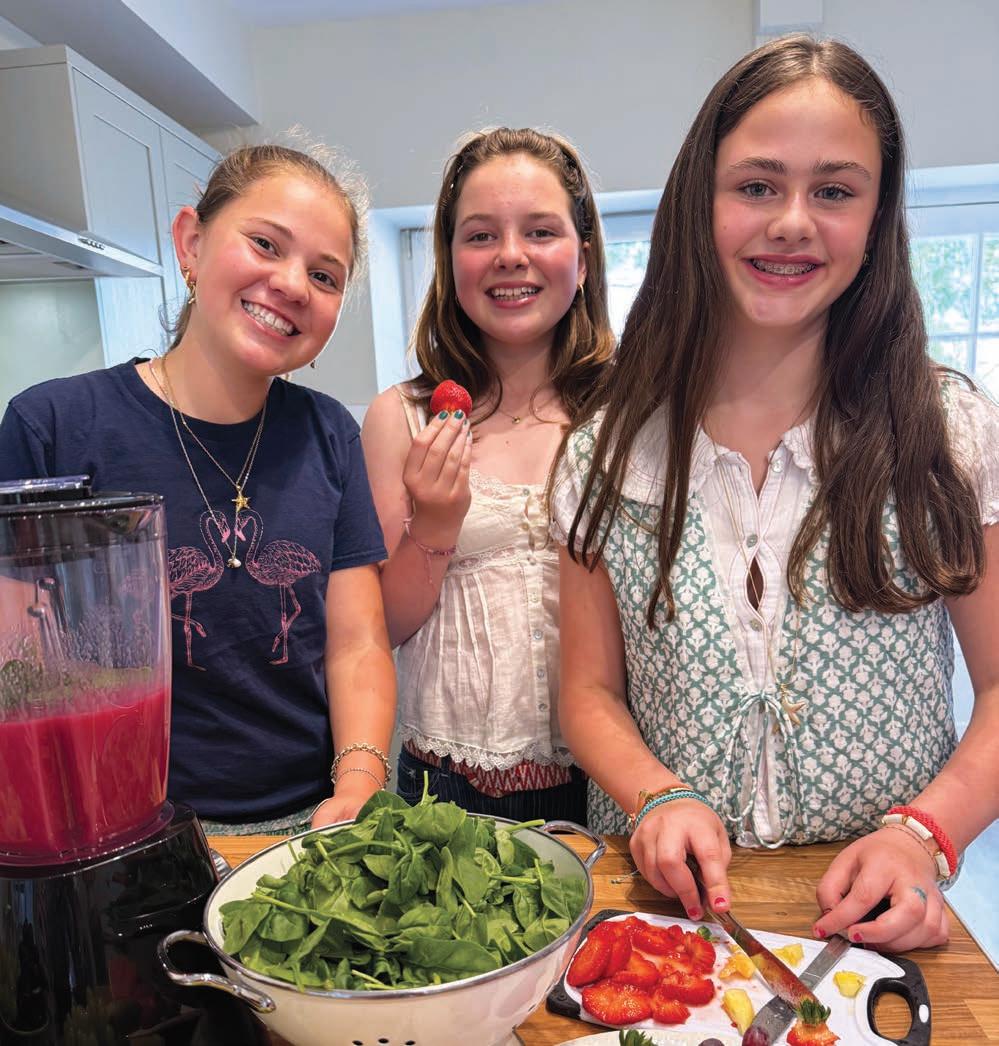






Antoine Rogeon of Queen Anne’s School on why Mandarin is opening doors for its students, and the enriching experiences offered as part of learning
The British Council’s latest report has highlighted the gap between student demand and provision for Mandarin in the UK. While more than a third of young people say they would like the chance to study it, only a small proportion currently have the opportunity.
At Queen Anne’s School, we are proud to offer Mandarin as a core part of our curriculum. First introduced in September 2009, Mandarin has grown into a wellestablished subject here – we ensure that every student in Lower 4 (Year 7) begins their school journey with the language.
This early exposure allows pupils to build a strong foundation and then choose to continue through to GCSE, where many go on to achieve outstanding results. We are delighted that this year, Mandarin GCSE candidates at our school achieved 100% A*/A grades.
Mandarin at Queen Anne’s is about more than learning vocabulary and grammar. Students are encouraged to engage with the language in a cultural and creative context. Each year, our Chinese New Year assembly brings the whole school together to celebrate. We include performances from students and staff, featuring music, drama, singing, and dancing. These

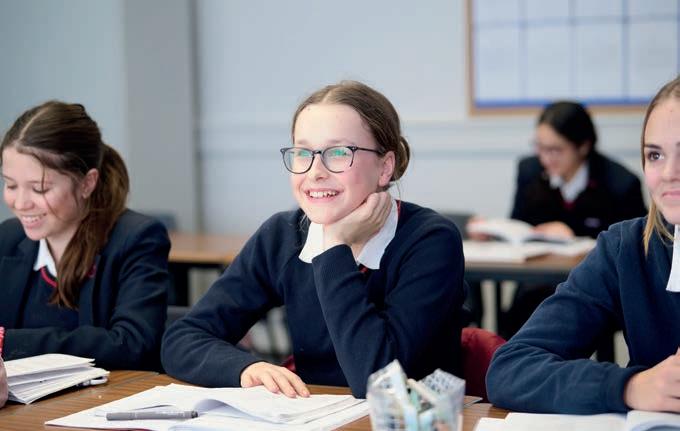
“Students at Queen Anne’s are encouraged to engage with the language in a cultural and creative context”
showcase not only the language but also the vibrancy of Chinese culture and traditions.
Learning Mandarin extends far beyond the classroom. Pupils take part in a rich programme of cultural activities that deepen their understanding of Chinese heritage.
Notable activities include cookery lessons each October, where our students learn how to make traditional mooncakes. Then, in June, we offer dragon boat activities – giving a taste of one of China’s most famous and exciting festivals. Learning goes further still as we host an end-of-year trip to a Chinese restaurant and the British Museum, connecting language to real-world cultural experiences.
MANDARIN GOALS
The opportunity to study Mandarin is there for all students, and those who choose to take it further consistently
excel in their academic studies. Year after year, our Mandarin learners demonstrate exceptional progress, reflecting both their commitment and the support of our specialist teaching provision.
We are looking ahead in offering this within our curriculum. By embedding Mandarin into the first year of secondary study and then providing a clear route through to GCSE, Queen Anne’s ensures that students have the chance to develop skills and also broader understanding of one of the world’s most valuable languages.
The skills they gain – from linguistic precision to cultural awareness – stay with them long after their exams.
Our goal is to equip them for the professional challenges and opportunities of a global future.

Saturday and holiday jobs used to be a rite of passage for teenagers, so what has happened? Absolutely Education investigates
LIBBY NORMAN
Rather like Monty Python’s ‘Four Yorkshiremen’ sketch, get adults of a certain age together and they wax lyrical about the hardships of their Saturday and holiday jobs. There was the permafrost of early morning paper rounds, that long hot summer in the bowels of a factory, and the travails of working a till that didn’t even tell you how much change to hand back.
And, in another parallel with the famous sketch, that first foray into employment – however menial – made teenagers feel lucky. Earning cash meant a measure of independence, a sense of making their own way. Parents, meanwhile, saw jobs as a useful way to encourage self-discipline (getting up, turning up, taking orders). Also, perhaps, a salutary reminder to slacking teens of the importance of studying to open up career opportunities beyond shop or factory floor.
But something has happened to the teenage jobs market – the statistics are dramatic, especially in recent times. The number of teenagers with Saturday jobs halved between 2010 and 2020, according to data from the Resolution Foundation, with only a quarter of young people having some paid employment. Look back to the turn of the Millennium and almost half (48%) of young people aged 16 and 17 had some form of conventional paid work. It’s a similar story for holiday jobs. Last December, a report in the Daily Telegraph highlighted that only a little over 20% of 16- and 17-year-olds in education had held down a summer job. The article pointed to a potential shift in attitudes among many young people. One employer suggested they are far less motivated by money and see such employment as something to help them earn the cash they want for a specific goal, not a routine to stick with. This, the article suggested, has reduced the supply of suitable jobs, as employers have looked elsewhere to
fill roles that used to be filled by teenagers. Statistics don’t tell the whole story. Paper rounds and retail work are less abundant now that so many people get their news and their shopping online. And summer factory jobs for older teens have dwindled in line with our shrinking manufacturing base. There is also more legislation, and issues such as insurance have made employing teenagers harder (see What’s the law?). Many young people – especially boarders and those who have Saturday school or weekend sports fixtures – are written out of the employment market on a Saturday. Their parents may also consider a holiday job to be a bad idea because, after a full-on academic year packed with extracurricular activities, time o to recharge with family is top priority. Parents can reasonably argue that there are opportunities to pick up job experience later – borne out by the fact that well over half of university undergraduates work alongside their studies, according to NUS (National Union of Students) surveys.





“The number of young teenagers with Saturday jobs halved between 2010 and 2020, with only a quarter having some paid employment”


Still, among some parents, there’s a niggling worry about the fact children don’t have the same opportunity to earn. Even the lowliest role teaches a lot about the value of money accrued through your own labour. It also gives early lessons about employer expectations – especially on attitude and diligence – helping to avoid career fails down the line.
For teenagers who are keen and available for jobs, there are still opportunities out there. Some retail chains, including supermarkets and clothing stores, accept students for seasonal work or Saturday shifts. Competition tends to be fierce for these roles, which may come with perks such as sta discount. Hospitality roles in the restaurant and pub trade may be easier to find, as sta are often employed less formally on a ‘needs must’ basis during busy times. Working as a pot washer, porter or cleaner is hard, but it’s often an entry point to securing regular seasonal work, perhaps moving up to a front-of-house role once you’ve shown your worth. This is a good ‘banker’ for the longer term for students keen to earn cash if they return home during long university holidays. When applying for Saturday and holiday roles, a face-to-face approach nearly always gets better results. Taking in a CV, however


short on job experience, is important. Being available if a job o er comes in at short notice and accepting conditions such as a trial shift show willing. For more informal roles in, say, dog walking, babysitting or gardening, it’s definitely worth asking around among neighbours and friends as local networks can prove more fruitful than formal applications. If a paid Saturday or seasonal job is impractical, for whatever reason, it’s still possible to start building work experience. Periods volunteering in a local animal rescue or stables or helping out at a foodbank or charity shop are all valuable ways to add something beyond school to the CV. Informal and unpaid assistance at really local level can also evidence ability to ‘muck in’. From volunteering for a local event to fundraising for charity or becoming a care home visitor, it all adds to the skillset. Taking pay out of the equation opens up opportunities that show as much, if not more, of the mindset and people skills that future employers will respect.

• Children can work part-time for up to 12 hours a week from age 14, rising to 25 hours in school holidays.
• There are specifi c restrictions on certain types, hours and places of employment for children.
• At age 15 and 16, children can work up to 35 hours a week in school holidays.
• At 16, employers may have to pay PAYE and at 18 adult employment rights apply.

• Go to gov.uk/child-employment for detailed advice – plus guidance on accessing your local council regulations on child employment.

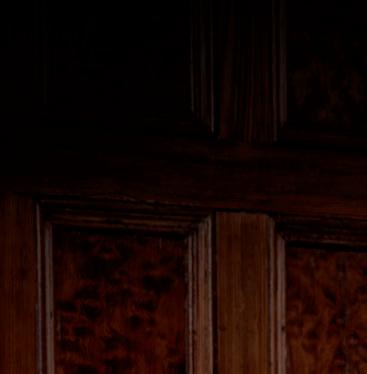
Day and Boarding for Boys aged 11-18 in Belfast, Northern Ireland

Conveniently located just 1 hour by plane from London and other regional airports

Fees from £7,966 per term
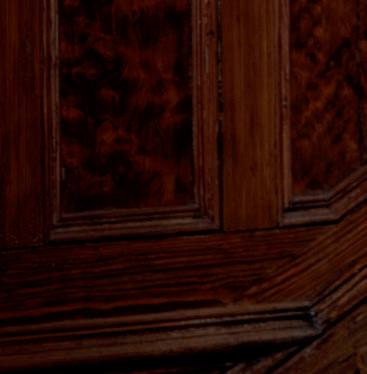




Lauren Blakeley, Head of Queen Ethelburga’s College, on key areas to consider when thinking about options for the final school years
Today’s fast-evolving world of employment and further education requires an innovative approach in schools.
At Queen Ethelburga’s, we are at the forefront of providing a highly personalised and dynamic o ering that prioritises curriculum choice and wellbeing. We do this through our model of three schools on one campus. Our prep and middle schools lead to flexible pathways through our senior school.
From September 2025, QE began the process of combining what were previously known as QE Faculty and QE College into one Year 10 to 13 senior school o ering a range of academic, vocational, sport, performance, creative and co-curricular opportunities – and with a new name, Queen Ethelburga’s College. Our approach is to think of what is best for each child as they progress through sixth form.
Education doesn’t need to be a 'one size fits all'. Depending on the strengths and interests of your child, you should consider whether a traditional academic route or a modern BTEC or mixed route would suit them best. At QE, we provide a variety of flexible pathways. Here, students can take the A-level route and choose traditional academic subjects. Alternatively, there
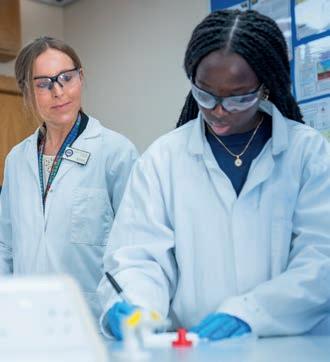
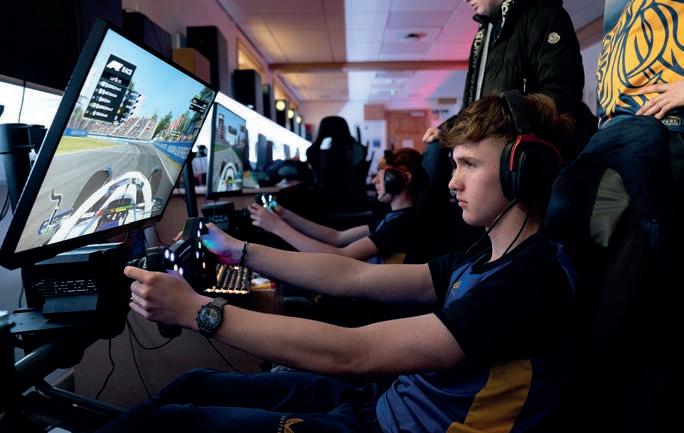
ABOVE Queen Ethelburga's College students
is the opportunity to combine traditional and modern – A-level subjects alongside BTECs. At QE, we are also able to facilitate extra time within the curriculum for performance sports and performing arts.
Whatever direction they are considering, a strong careers department is vital for all students as they embark on their sixthform years. At QE, we provide each student with as much support as needed across areas such as career and subject choices, applications, student recommendations, interviews, work experience, entrance exams and auditions.
Our advice considers the subject combinations and extracurriculars that will be most useful in widening knowledge and boosting applications. Most importantly, this advice always considers the career options available once students have settled on the subjects most suited to their interests.
We know universities and companies are


increasingly looking for a wide range of interests beyond academic grades. At QE, we are proud of the vast array of opportunities available. We have over 100 clubs and activities on site, ranging from CCF to Student Motorsport and Esports teams. We o er regular trips throughout the UK and overseas and have a Stretch and Challenge programme to specifically encourage students to go further via, for instance, national competitions and outside lecture attendance. We also facilitate certification courses in areas such as lifeguarding, gym instruction and mental health.


LAUREN BLAKELEY Head Queen Ethelburga's College
The sixth form you choose is where your child will be not just for the next two years of their life but the two most important years of their academic life. At QE, we know that the right sixth-form environment has such a positive impact on outcomes, determining future destinations and ambitions. This makes it critical to find the experience that suits your child – ensuring their happiness and making sure they will thrive.
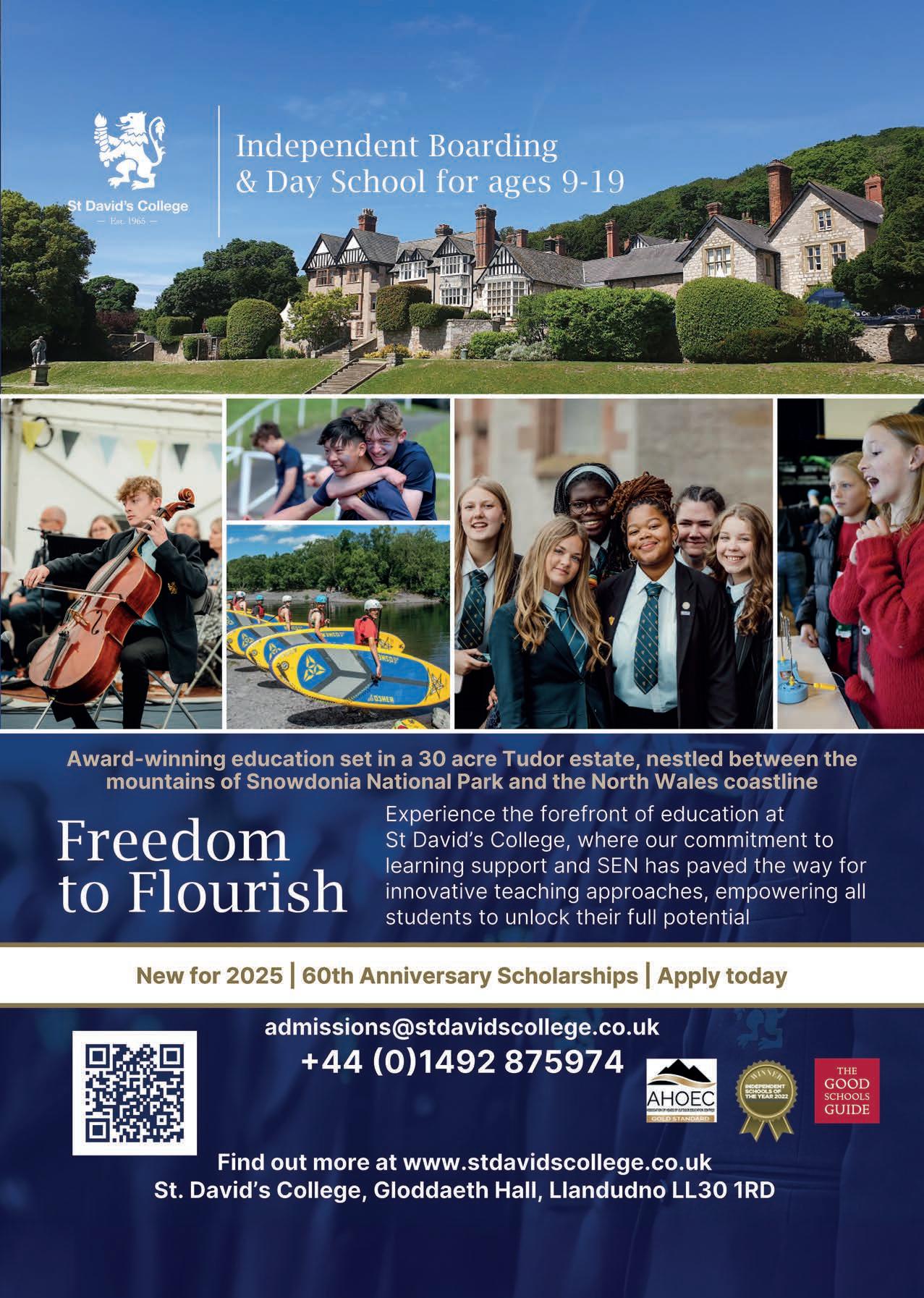

Jo
Blue light streaming out from under bedroom doors, more screens than plates at dinner, tired eyes at the front door as children slug on bags to leave – parents have seen it all. Smartphones are a gift for connecting us to the world, but for children they can also be hugely draining.
King’s College London research published in 2024 suggested that one in four children were addicted to social media. The report also found that teenagers with problematic smartphone use are three times as likely to have depression. Amid serious concerns about online bullying, radicalisation and mental health risks, we at Berkhamsted Schools Group decided that our community needed a change. We call our approach, ‘Pro Tech, Pro Boundaries’. We don’t want to eradicate all technology from our campuses, but we do want to ensure that it doesn’t rule our lives. Multiple parent focus groups, engagement with studies and conversations with leading neuroscientist Dr Sarah Jayne Blakemore culminated in the decision to become a ‘smartphone-free school’.
Pupils in Year 7-11 place their phones in lockable Yondr pouches at first bell and open them after the school day ends. Starting this academic year, each incoming Year 7 cohort were limited to bringing a
“By working together as a parent-teacher team, building digital resilience in the next generation becomes that much easier”
non-smartphone within school grounds.
As this rolls through the school, we aspire to have an entire Senior community who do not feel glued to their smartphone – at least, not during the school day. We support this ban with a scheme of PSHE and tutor sessions that contextualise our decision, as well as guiding discussions about how to be confident digital citizens, set boundaries and build digital literacy.
Pupils have taken surprisingly well to this ban, perhaps energised by rediscovered time to chat with friends and engage in more extracurriculars. The security of Yondr pouches means that teachers don’t spend lunchtimes watching out for phone use. Instead, they’re watching out for flying footballs in the quad or leading clubs themselves.
Focus has improved in classrooms, partly
because the cognitive drain has been eased. The average teen receives 237 smartphone notifications a day, according to Common Sense Media, so there is now space for pupils to be engaged in their learning. When phones disappear, childhood reappears.
We understand that smartphone habits aren’t just formed in school, which is why we want parents to feel supported if they push for further digital boundaries at home. We encourage parents to lean on our policy – to blame the school. By working together as a parent-teacher team, building digital resilience in the next generation becomes that much easier.
We want our pupils to thrive in a digital world, not be ruled by it. With these policies, we hope to build strong, healthy technological boundaries that set up our pupils to be truly remarkable later on in life, not living life on their phones.
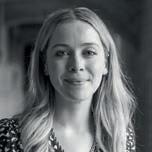

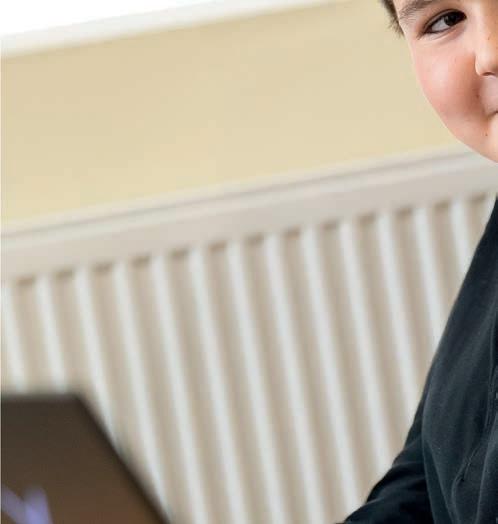







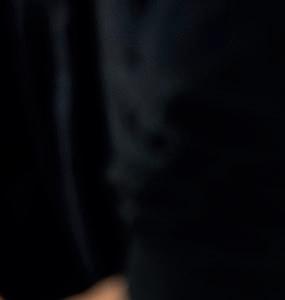




The Head of Pangbourne College on why we need to let young people take ownership of mistakes, and even to fail, so that they develop resilience
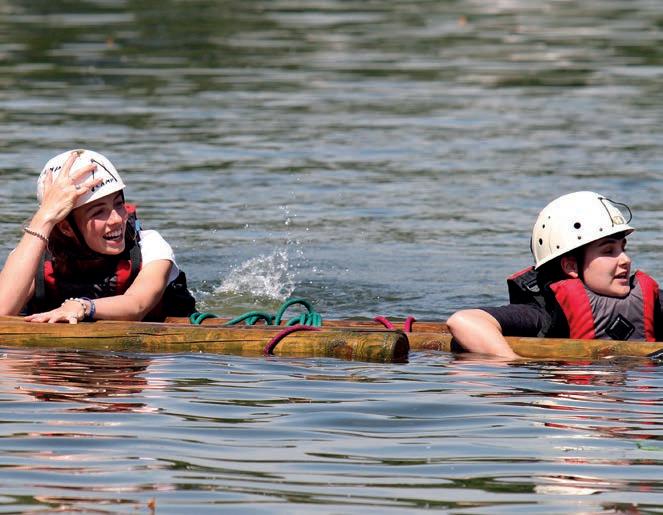
With a new academic year underway, many schools and families are asking the same question: ‘How do we best prepare young people for the world they will inherit?’. At a time of rapid change, digital distraction and growing pressures, one quality consistently marks out those who thrive, and that is resilience. Resilience does not simply appear. It is built, day by day, moment by moment and, very often, failure by failure. At its heart lies ownership. Young people must learn to take responsibility for their actions, decisions and growth if they are to flourish in adulthood. Too often, educational success is measured only by exam results or university entry. Yet many young people who excel academically struggle once they step into higher education or the workplace. The issue is not intelligence but resilience. Without the ability to adapt, manage setbacks and self-regulate, the transition
to independence can be overwhelming. At Pangbourne College, we have made ‘Taking Responsibility and Building Resilience’ a guiding theme for the year. This reflects two powerful ideas: Extreme Ownership, from Jocko Willink’s book of the same name, and Steve Magness’s Do Hard Things, which argues that resilience is not innate but developed through exposure to challenge and difficulty. These are not motivational slogans but practical principles for shaping young people of character, strength and purpose.
Building resilience requires a partnership between schools and families. Teachers can challenge and encourage students, but parents play an equally vital role at home. That is why we are communicating the same message to parents. Rescuing children too often or too quickly can undermine their development. Trusting the process, rather than
“Resilience does not simply appear. It is built, day by day, moment by moment and, very often, failure by failure”
fixing things, is key. Allowing them to experience discomfort, and supporting them in taking ownership, are important.
Consistency matters. Students are quick to spot mixed messages. If they sense that someone will lower the bar, excuse behaviour or quietly tidy up after them, the lessons of responsibility will not stick. Parents and staff must support one another in holding the line – with kindness, yes, but also with conviction.
Let’s acknowledge something openly – this is not easy. Holding students accountable, allowing them to fail, resisting the rescue, goes against many of our instincts. It requires patience, emotional restraint, and a commitment to longterm growth over short-term comfort.
Every time we choose not to intervene, we signal trust in the student’s potential. Every time we allow a consequence to land, we reinforce the belief that actions matter. Every time we step back and coach rather than rescue, we help build the resilience that will carry the young person far beyond school.

Ultimately, the mission is not simply to produce academic excellence. It is to prepare our children to thrive in an imperfect world – to lead, serve and take responsibility for their lives and actions. If we want our young people to flourish, we need to encourage responsibility, normalise challenge and embrace resilience as a gift. Together, parents and schools can ensure students leave not only well-educated but equipped to thrive in life..
Football is cool for girls and can make an enormous difference to their engagement with sport. We speak to two schools reaping the rewards of championing the female game
At Royal Russell School in Croydon, football has been part of the mix for many years.
The 110-acre campus lends itself to the full range of sports in both school and social time. But in the past decade the 'beautiful game' has become a cornerstone of the sports offer, says Head of Girls' Football, Aimee Watson. "The game first gained momentum here because of its inclusivity, as it appealed to pupils across all age groups and abilities."
The school runs a comprehensive programme for boys and girls, competing nationally in ISFA and ESFA competitions, and also offers memorable experiences such as tours of St George’s Park (the English Football Association's national centre) and Spain. "The growth of football has been remarkable, and it reflects both pupil demand and our commitment to giving them the very best opportunities."
While boys' love of playing football has long been evident, it's the rise of girls' football that is so exciting right now. "Our programme has expanded significantly and is now one of the most vibrant parts of school life," says Aimee Watson. "We’ve invested in specialist coaching, competitive fixtures, and development resources to ensure girls at every level can thrive."
And this is more than knockabout stuff, with girls aiming for the top. "Today’s generation of girls want to play football because it is exciting, dynamic, and aspirational – they see it as a sport where they can express themselves, work as a team and compete seriously," adds Aimee Watson. She sees the rise of clear pathways as key to growth at school level. Royal Russell works to support high ambitions by offering a structured programme supported by UEFA A coaches, GPS tracking, VEO video analysis, and strength and conditioning training. Aimee Watson says there's no doubt that the recent successes of the


"It is now seen as completely 'normal' to play as well as watch the game –pupils view it as a women's sport"

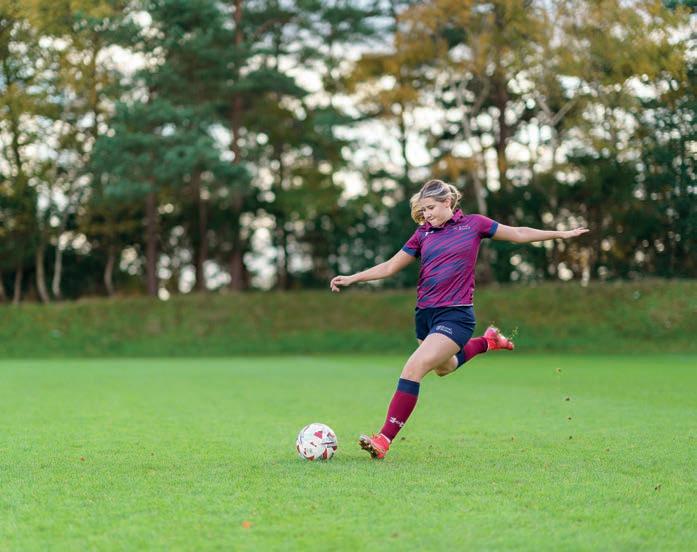
Lionesses have made a huge difference. "The professional women’s game has shown that football is a space where girls can thrive."
The school caters to everything from recreational players to elite performers, focusing on passing football. "Everyone is involved in the play. It mirrors the modern professional game, builds technical skill and decision-making, and fosters a shared sense of achievement."
Royal Russell offers scholarships and bursaries for the most talented, and scholars receive additional support through personalised development plans, mentoring and access to specialist resources, also benefiting from the school's strong links to professional clubs. Football tours, elite fixtures, and tailored training are designed to ensure that gifted players are continually stretched.
Parents are very supportive of Royal Russell's commitment to the sport, and the school is seen as a hub for football development locally. Alongside the success of school teams in local and national fixtures, there are some starry alumni to add team pride. These include Reanna Blades, playing for Sunderland AFC and Jamaica, and Rosie Rowe, now playing with Crystal Palace U21. And in the men's camp, there's Newcastle
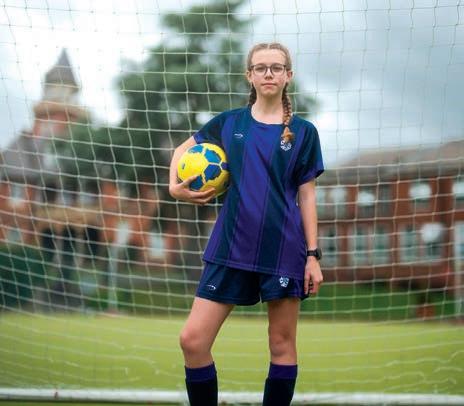
"We’ve invested in specialist coaching and development resources to ensure girls at every level can thrive"
United and England's Tino Livramento, while Rhys Norrington-Davies dons a shirt for QPR and for Wales. "We are especially proud of our alumni," says Aimee Watson. "They embody the legacy of football at Royal Russell and inspire the next generation of pupils to follow in their footsteps."
At Sydenham High School, sport in all its forms is celebrated. But football is coming into its own among the girls, say the Sports Department. It grew exponentially following the Lionesses’ success in 2022. Now, Sydenham runs a full fixture programme, including cups and tournaments, with over 100 girls regularly competing for the school in different teams.
The teaching team at Sydenham say the strengthening profile of women's football continues to be a massive motivator. From international success and media exposure down to grass roots

– many more girls' teams are appearing locally – it's proof of the 'see it to be it' theory. Sydenham High add that it is now seen as completely 'normal' to play as well as watch the game – pupils view it as a women's sport. Girls are excited about opportunities to play and train, and many of their role models are female footballers.
Sydenham offers a year-round programme of after-school fixtures, as well as team training before school. There are inclusive lunchtime clubs to encourage all girls to have a go, whatever their experience level. It's now a core sport on the curriculum and is supported by Girls United Football Club coaches and specialist staff.
Sports Scholars at Sydenham include girls who were chosen for their footballing ability, and other scholars have taken up football since joining the school. MAT & High-Performance Programmes support girls playing at Academy and Club level through access to physiotherapy, nutrition and sports psychology. And girls who show real potential are able to play among older year groups to bring on their talent. While Sydenham High School hasn't carried home any major school football trophies yet, the Sports Department are proud that they won over half of all football fixtures played last year. Capitalising on these results, and the enormous enthusiasm here for the game, there are further investments in the sports ground and in providing even more specialist training. Sydenham High say they are doing the groundwork and enjoying the development path towards that bulging football trophy cabinet!


















































































































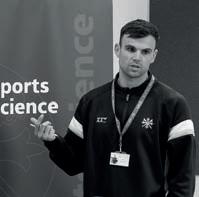
Reed’s School Head of Physical Education (PE), he studied a Sports & Exercise BSc at Cardiff Metropolitan and gained his PGCE at Canterbury Christ Church. He's a keen hockey player and cricketer and has trained young cricket talent in both Australia and Sri Lanka during his career.
Sport and PE study not just how athletes achieve, but the hard science behind performance, teamwork and good health. Two experts in the field give their elevator pitch on why this subject is worth studying – and where it can take you
Eltham College Head of Sports Science, Assistant Director of Sport, and Head of Rugby, he gained his Exercise and Sports Science degree from Exeter and his PGCE from Buckingham. Beyond teaching, he's an avid rugby fan, marathon runner, proud father and keen gardener.
What makes Sport so brilliant?
LS: Studying PE is fascinating because the subject explores the worlds of physical health, human performance and social development. It also promotes physical fitness within students’ own lives, which contributes to the prevention of many health issues now and in the future.
BK: Sports Science blends physical performance with academic rigour, unlocking insights into the human body, psychology, and biomechanics. It’s dynamic, relevant, and opens doors to exciting careers in health, sport, and beyond.
What made you choose it?
LS: Studying Sports Science meant I could combine playing Cricket and Hockey using world class facilities with academic work – exploring anatomy, physiology, psychology, and biomechanics.
BK: I’ve always been fascinated by how science enhances both performance and wellbeing – Sports Science brings that to life.

FAMOUS SPORT STUDENTS Victoria Pendleton (above), Adam Gemili, Sir Clive Woodward, Vitali Klitschko, Tim Noakes
5 TOP SPOTS FOR DEGREES Loughborough, Bath, Glasgow, UEA, Birmingham
WHERE SPORT BRAINS HANG OUT
UK Sports Institute high-performance centres, The Sporting Club

Transferable skills and knowledge acquired?
LS: Through physical sport, students learn teamwork, discipline, and leadership, which can all be applied in many different areas of life. Studying PE also requires you to think analytically.
BK: Students gain high-level analytical thinking, teamwork, leadership, data interpretation and communication skills. They also acquire a deep understanding of important issues around both physical and mental health.
What pathways does Sport open?
LS: Studying Sport opens up various pathways, such as sports science roles at professional clubs, physiotherapy, event management, fitness training, sports psychology, media and many business roles connected to the health and wellness industries.
BK: Sports Science leads to careers in physiotherapy, coaching, sports psychology, teaching, fitness, and rehabilitation. It’s also a strong foundation for medicine and health sciences training and careers.
Two things students may not realise studying Sport covers...
LS: There's an in-depth look into sports psychology and how ever-changing technology is used in professional sport and within the sports industry.
BK: Students look at the psychology behind elite performance, including how data drives decisions in sport. Plus, there's a deep dive into the sociocultural issues surrounding sport and exercise
“Studying PE is fascinating because it explores the worlds of physical health, human performance and social development – it also promotes physical fitness”

Rebecca Pretorius of Crimson Education on why forward-thinking students start university preparation before sixth form
In many schools, structured university planning begins in sixth form, when students start thinking about A-level choices and personal statements. Yet for ambitious families aiming at competitive universities such as Oxford, Cambridge or the Ivy League plus universities, this may be too late.
In today’s admissions landscape, grades alone no longer guarantee a place. Top universities expect academic rigour, subject mastery, intellectual curiosity, leadership and personal impact beyond the classroom. This shift means that with the right preparation and guidance from Year 10 – or even earlier –a student hoping for a top-university place can develop into a highly competitive candidate by the time applications become due.
Top students gaining places at Stanford, Oxford and MIT are undertaking selfauthored, often published, research and independent projects that demonstrate leadership, intellectual depth, and sustained commitment over several years. These sustained projects give students the chance to dive deeply into complex ideas, take real ownership of their learning and show independence and academic rigour.
Admission o cers can quickly see the di erence between something rushed together just before applications and work that reflects genuine growth and long-term curiosity. Beginning early gives students the space to refine ideas, build on their progress and present a clear story of their long-term academic engagement.
These kinds of extracurriculars can feel daunting, of course. They take time, energy and careful planning. This is where having the right team around a student can make all the di erence.
Admissions experience, extensive data and knowledge of what top universities are really looking for is a way to open doors. It also o ers networks that connect students with professors for research and help to guide work towards recognition through




relevant competitions or showcases. At this stage in their school career, students benefit from having the structure and support that helps build depth and consistency in their work.
Exploring from an earlier stage also helps students find direction – and that can be invaluable. They can solidify interests within their chosen field and be much better prepared for the significant step up in academic intensity at university. Applying to top institutions is demanding, but starting preparation early makes the process much less stressful. It also frees up valuable time later on for the fixed-deadline tasks such as standardised testing, essay writing and interview preparation.
Early planning has value beyond specific university applications. It is about drawing out genuine interests and strengths, and ensuring students focus on what they truly enjoy and are willing to invest time in. It helps avoid the temptation to be pulled in

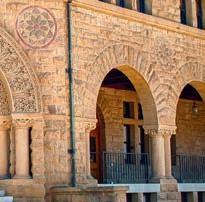

di erent directions by ensuring students focus instead on deepening knowledge and increasing impact. Students build an authentic profile that showcases their individual achievements and their talents.
Parents who understand the longterm value of this earlier preparation for university in their child’s school career provide a wonderful opportunity to let them develop with purpose, grow in confidence and approach university applications and, potentially, future career choices with clarity.



Our experts answer your questions on mindfulness and choosing between state and independent in prep years

QMy son, aged four, is usually happy, but gets quite anxious when things go wrong. A friend has suggested mindfulness. How does this work for young children and what are the benefits?
AMindfulness is a gentle, practical way of supporting children to notice their feelings, and to find calm and confidence when things feel tricky. With young children, it works in two ways – by teaching them tools they can use, and by adults modelling those same skills in everyday life.
The first part is teaching children practical, playful techniques. When

children learn these early, it gives them something that stays with them for life: an ability to understand and manage their feelings, and approach challenges with more kindness, both for themselves and others.
cuddly toy meditation. Placing a soft toy on their tummy and watching it rise and fall with each breath can be really settling, especially at bedtime.
“Because language is still quite abstract, it helps to use pictures and colours to talk about feelings”
Something as simple as ‘rock stars’ – clenching fists tightly and then releasing into open, star-shaped hands – helps children release tension and that calms anxious thoughts. A calming jar is another favourite. When children shake the glitter inside, it’s like their swirling thoughts and feelings, and then they watch it settle as they take slow breaths in through the nose and out through the mouth. It’s a really visual way of showing them how their own minds can settle too. Because language is still quite abstract for young children, it helps to use pictures and colours to talk about feelings. For example, they might say they feel ‘red’ when they’re angry and want to turn ‘green’ to feel calmer. This makes emotions more concrete, also building emotional literacy.
There are also lovely ways to build positive self-talk. Repeating simple phrases like, ‘I am brave, strong, kind, and full of love’, with some fun actions, helps children practise talking to themselves kindly instead of critically. Another gentle tool is
The second part of mindfulness is about what children see in adults. They copy us more than we realise. If, as a parent or carer, we can take a breath, slow down, and show calm during a stressful moment, children learn from that. Even saying out loud, ‘I’m taking a deep breath to help me feel calm’, before responding to a tricky situation can be so powerful. It shows children that these tools actually work.
Mindfulness benefits for children are wide-ranging. They gradually become more able to notice and manage their emotions, bounce back more easily from stressful situations, and feel more confident. They also develop more compassion, towards themselves and others.
At Kalmer Kids, our camps and events focus on teaching children these tools in a playful, engaging way. Alongside that, we support parents through workshops with our KALM framework, so they can use the approaches at home. Mindfulness becomes something children carry with them, helping them feel secure, calm, and confident in who they are.
kalmerkids.com


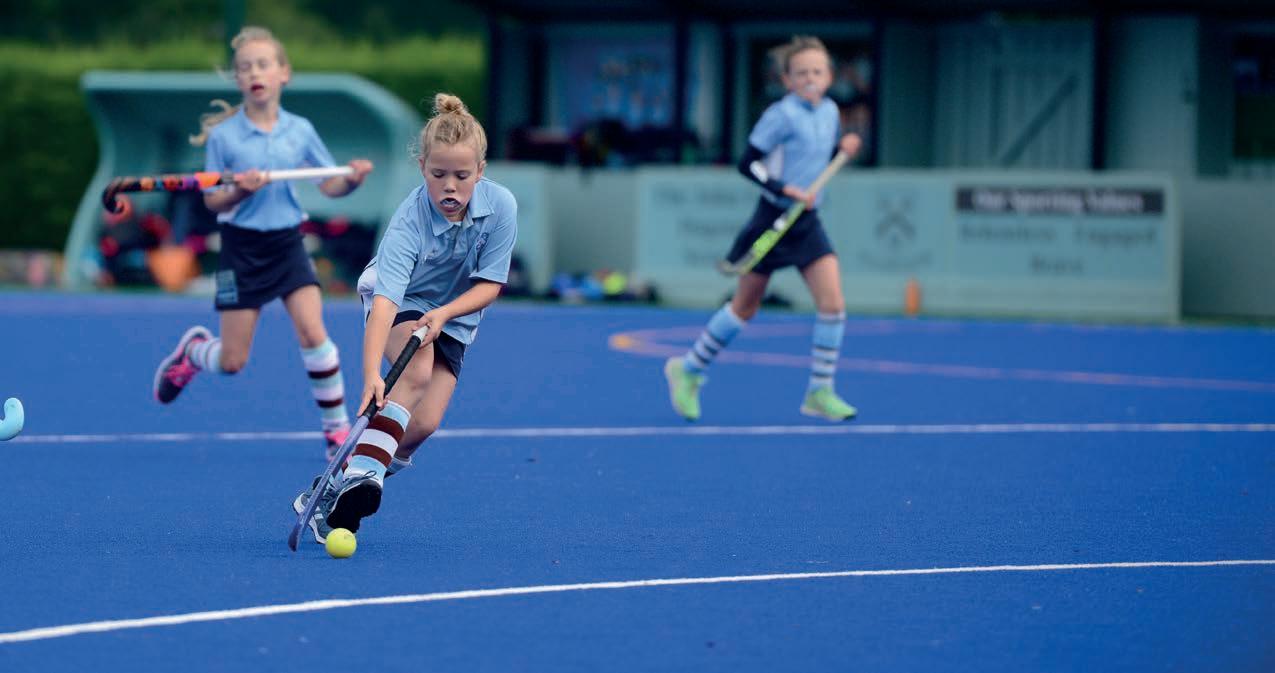



At Framlingham we believe in the individual. There is no typical Framlinghamian, no singular path that we take. Often, we are many things within one. Every pupil is valued for who they are. We are a co-educational day and boarding school for ages 2 to 18 with flexi, weekly and full boarding options. Our extensive bus routes provide convenient transport for our pupils.
START YOUR CHILD’S JOURNEY TODAY
Join us for an Open Day or arrange a personal visit to experience us for yourself.
PREP SCHOOL OPEN MORNING
FRIDAY 06 FEBRUARY 2026
BANK HOLIDAY MONDAY 04 MAY 2026
SENIOR SCHOOL & SIXTH FORM OPEN MORNING SATURDAY 07 FEBRUARY 2026 SATURDAY 16 MAY 2026
To register for an Open Morning, or arrange a private visit, scan the QR Code or visit framlinghamcollege.co.uk/openmornings , email admissions@framlinghamcollege.co.uk or call 01728 727217. Open Mornings run from 10:00 - 13:00.
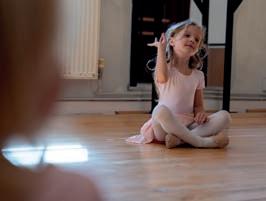
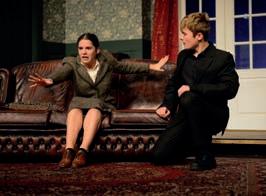
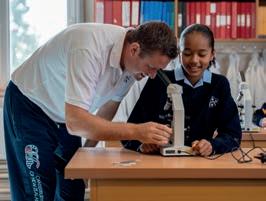

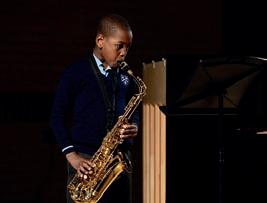









Education Manager, Quintessentially Education
QWe’re weighing up options (and finances) and can’t decide if a state primary or prep is best for our daughter. We hope she will go to an independent senior school and want her to be prepared. Could you advise?
AFirst, I would like to reassure you that you are not alone in making what can feel like a momentous decision. With the introduction of VAT in January, fees have risen by 22% on average. The typical termly fee for a prep day school is now £5,572 according to ISC data, but this varies region by region.
However, if you want your child to go to an academically selective senior, a prep school can be an enormous advantage. In London, in particular, 11+ entrance is hugely competitive. Prep schools will be prepping your child (subtly) for up to three years in advance. Other advantages include the guidance the teaching sta provide around admissions and the links many have forged with senior schools, which can be very helpful.
If your child is heading to a boarding senior, a boarding prep can familiarise them with living away from home, instilling independence and confidence. Academically, prep schools are guided by, but not bound

“There is an argument that the prep system is better, especially for boys, as the extra two years many o er allow them to mature”
to, the National Curriculum and can therefore provide a more ambitious and richer learning experience, particularly as they have a higher teacher to pupil ratio. Many devise their own curriculum for Years 7 and 8 to provide further preparation. There is also an argument that the prep system is better, especially for boys, as the extra two years in Years 7 and 8 many o er can really allow students to mature. This is particularly true for those who have done the ISEB and secured a place in their senior school of choice, as there is more room for personal growth before the transition. It is also worth noting that keeping your child in prep school for two extra years is typically cheaper than sending them to senior school in Year 7.
All that said, a state primary can be a great option – with advantages beyond saving money. Many are excellent academically and form a
focal point in the community, enabling your child to build a network of local friends. The shorter school day is usually mitigated with after-school clubs, while third-party providers o er additional extracurriculars. Just be aware that getting into the most popular primary schools may involve jumping through hoops – including a ording to live in the catchment area.
If you decide on a state primary, you might consider ‘topping up’ for tests such as the ISEB if an independent senior remains the goal. Some state schools, particularly in grammar school-rich areas such as Buckinghamshire and Kent, know something of the 11+ but others don’t understand the process very well. There are knowledgeable private tutors to help your family with these preparations.
quintessentially.com/education
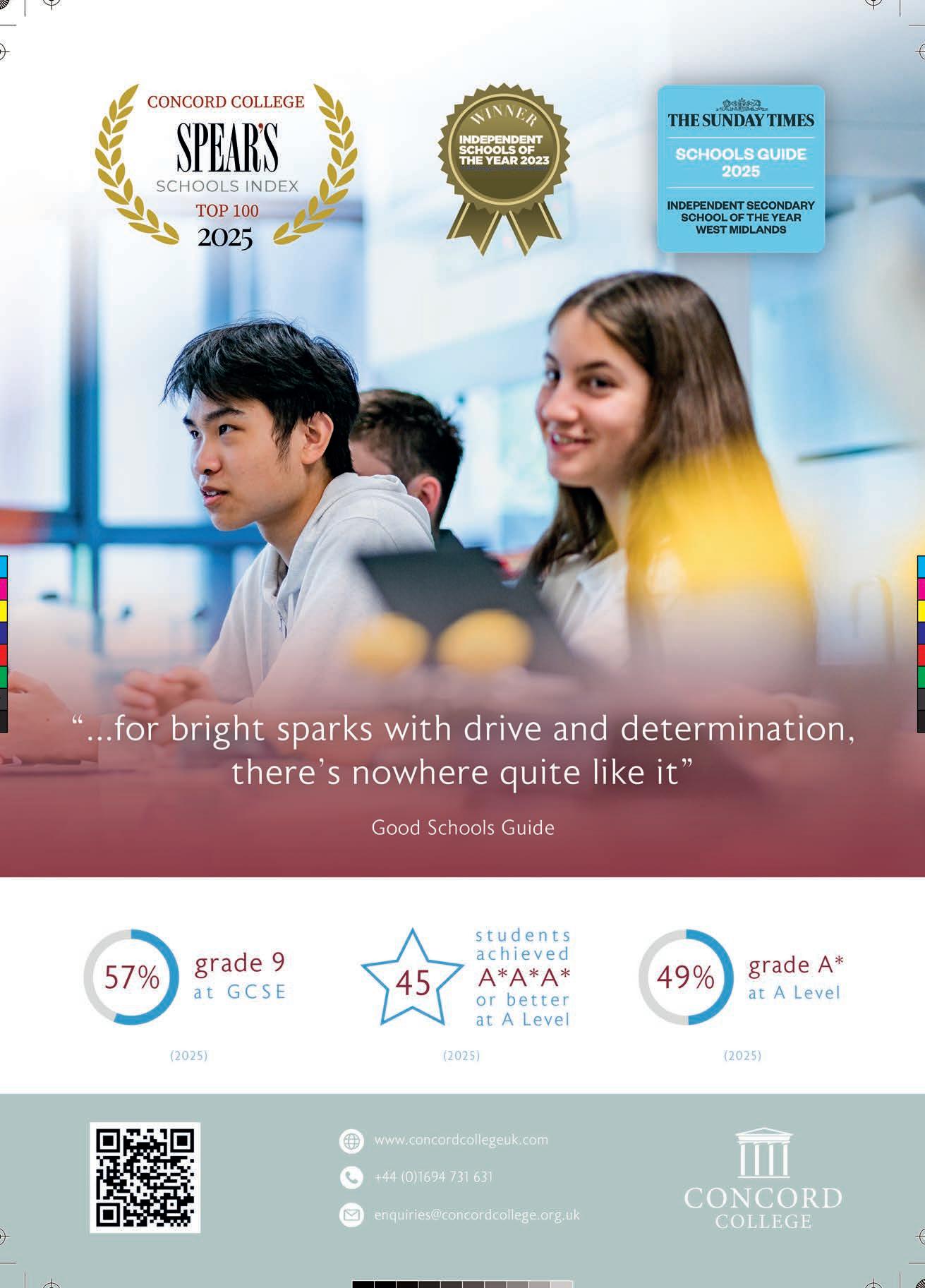
The Heads of Sherborne Girls and Sherborne Boys on delivering the right combination of skills and attitudes to prepare pupils for a changing world
Education is undergoing one of the most profound transformations in living memory. In a world being reshaped by technological disruption, climate challenges, and shifting cultural and geopolitical landscapes, schools face an urgent question. How do we prepare young people to thrive as resilient, ethical leaders who are empowered to create a positive future for themselves and the world around them?
For decades, academic attainment has been the dominant measure of school success. Grades, university places and league table positions have provided clear, if narrow, benchmarks. Yet employers, universities, and pupils themselves are increasingly signalling that this is not enough. Character, wellbeing, adaptability,
“Young people must be equipped not just with knowledge, but with the self-awareness, resilience, and ethical compass to thrive”
teamwork and the capacity to collaborate across disciplines are emerging as equally important currencies in the 21st century.
At Sherborne Schools Group, we believe these are not competing priorities but complementary ones. Academic rigour provides the intellectual foundations, but it must be balanced with intentional character development and the cultivation of wellbeing. If young people are to successfully navigate complexity and uncertainty,

they must be equipped not just with knowledge, but with the self-awareness, resilience and ethical compass to thrive.
This integrated approach requires more than adding a wellbeing lesson to the timetable or running a leadership workshop. It involves embedding these values into the daily fabric of school life – through mentoring, pastoral systems, opportunities for reflection and leadership roles that allow pupils to learn by doing. It means we must ensure that success is defined not only by examination results but also by the capacity to act with integrity, to care for others and to make responsible decisions.
The challenge, of course, is how to achieve this balance while also respecting each pupil’s individuality. Learners are not a homogenous cohort.
This means schools must design flexible, personalised pathways that stretch the most able and inspire and support every learner, whatever their starting point. Interdisciplinary approaches, digital fluency and real-world projects all help to ensure that learning feels meaningful and remains relevant.
Crucially, this balance also positions pupils to become innovators and changemakers. By linking academic study with entrepreneurship, sustainability and community engagement, schools help young people see themselves as active contributors to society, not passive recipients of knowledge.


It requires courage to move towards an integrated model of education. We also need evidence-based evaluation, so that schools can measure progress in character and wellbeing as rigorously as they measure exam performance. And it calls for a culture in which sta are supported to be innovators, modelling the adaptability and creativity we expect from pupils. Despite these challenges, the prize is great. By aligning academic excellence with character and wellbeing, schools prepare young people who are not only knowledgeable but also grounded, empathetic, and future ready. In a rapidly changing world, this is not a luxury – it is an imperative.







































































































































































Handmade, for you.















Merchant Taylors’ is renowned for its outstanding academic education. Our mission is to truly know each pupil. We support them in exploring world-class opportunities, helping them discover and develop their unique talents.








Book your Visit


























The Entrepreneur in Residence at Loretto, Edinburgh, on why building young people’s business savvy is a sound investment in bright futures
Unlike a typical classroom, entrepreneurship education has no heavily bound books or statistical graphs lining the walls. Instead, you’ll likely find Post-it notes, flip chart paper, laptops, and – with the help of marshmallows and spaghetti sticks, as well as real-life experiences – an abundance of creativity, innovation and inspiration. But what exactly is entrepreneurship education and why is it important for young people today?
Over the past 20 years, entrepreneurship and enterprise education have gained traction in higher education across the UK, backed by government bodies, think tanks, businesses and charities. Understanding the importance of such a programme, Loretto embedded an Entrepreneur in Residence initiative within its curriculum, delivering a range of exciting opportunities for pupils throughout the year while also bridging the gap between academia and industry.
One of the first events on the programme is Stop and Startup, where business pupils enjoy a tour of Edinburgh’s hubs of innovation and network with creative entrepreneurs. Over the course of
“Entrepreneurial education builds confidence and knowledge, equipping pupils with the tools to launch a viable business, now or in the future”
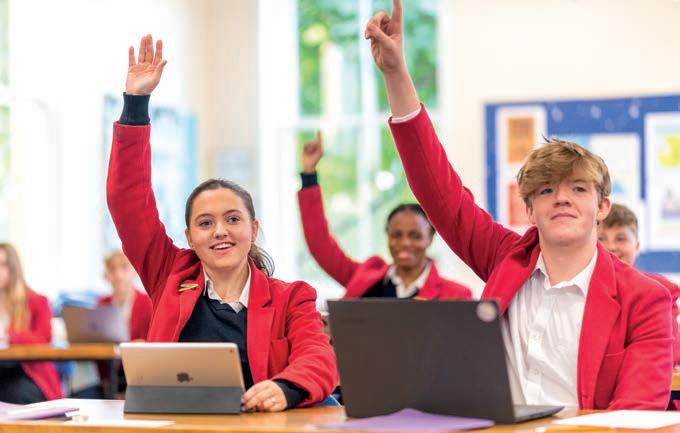
ABOVE
the day, pupils are inspired and then formulate their own business ideas, brainstorming and refining them on the bus journey between stops. At the end of the day, pupils deliver confident and compelling pitches to a panel of judges.
In June, Startup Sprint invites all Lower Sixth pupils to collaborate and develop viable business ideas (or further develop and refine those formulated during Stop and Startup). They share intermediate pitches and gain insight from entrepreneurial mentors, presenting their final pitches on day three.
Through entrepreneurial education, pupils develop teamwork, creativity, originality, problem-solving, curious questioning, and time and risk management skills – all highly valued by employers. These are not exclusively for professional purposes – they are valuable for personal development, too. These skills will maximise what young people are truly capable of in all areas of life.
In addition to developing these competencies, entrepreneurship education develops business approaches.
Ultimately, entrepreneurial education builds confidence and knowledge, equipping pupils with the tools to launch a viable business, now or in the future.
It’s imperative that a safe, nurturing and creative space is cultivated, ensuring pupils have room to make and learn from mistakes – developing their resilience along the way. Engaging in the innovation process helps pupils become self-determined, highly employable and capable of navigating challenges.
Entrepreneurship education prepares pupils for life after school and the opportunities of the modern world. It’s our responsibility to prepare them for the future. No matter which career path they choose to follow, programmes like these ensure that young people can become innovators, who lead rewarding lives and who are competent, active, and responsible members of society. And if we can launch a successful startup along the way, we welcome that too.
NATASHA
Loretto Entrepreneur in Residence

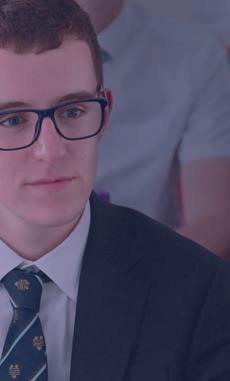














EdTech entrepreneur, IB advocate and Sevenoaks alumnus
Brian Ong on whether a British education still sets the benchmark

When I was growing up, British schools set the benchmark for the gold standard in education. Today, as a father of five and a mentor to families around the world, I’ve witnessed firsthand how British schools are grappling with unprecedented competition. With emerging education markets offering compelling alternatives, and the added pressures of VAT on school fees, British schools are working harder to stand out.
When selecting a school, families previously prioritised the quality of faculty, teaching standards, extracurricular resources, school culture, and the presence of notable alumni. However, priorities have shifted significantly in the post-pandemic era. I’ve seen how families now look for more than just a ‘good academic education’. Schools are expected
to nurture entrepreneurial skills, personal growth, character development and global career opportunities. So, in a world where education is more competitive than ever, does British education still hold its value?
My education in the UK didn’t just teach me how to write essays or solve equations, it taught me how to think globally. The UK’s position at the heart of Western culture also offered me exposure to a rich history of literature, music, and art. I’ve developed critical thinking that is essential for my career in EdTech, as I work with teams from all over the world and constantly face changes within the market.
I often share with my teams that a global mindset transcends exposure to different cultures or languages. It is the ability to comprehend and address issues from diverse cultural, positional and perspectival standpoints. This fosters collaboration across boundaries. When I was at Sevenoaks School, through discussions of topics such as global trade, history and economics with my peers, I
realised the value of seeing the world through multiple lenses. This was a lesson that shaped my approach to investment and innovation.
When providing seed funding and mentorship to startups founded by recent graduates of top universities, I shared the same message – cultivating a global mindset is fundamental. Regardless of career path, the ability to engage in crosscultural collaboration, resolve conflicts and appreciate diverse viewpoints is crucial. When I arrived at Sevenoaks, it felt very different from the schools I had attended back home. I remember my teachers who took the time to discuss the intricacies of chemistry and physics. UK schools provide academic excellence, with smaller class sizes and with a wealth of holistic development opportunities. And they are increasingly accessible, with more scholarships and bursaries available.
As UK schools adapt to evolving expectations, they are finding new ways to offer a high-quality, relevant education that prepares students for the challenges of the 21st century. The traditional model – get into a top school, secure a good job – is less dependable. Families are not just asking about academic results. They want to know: ‘Will this school help my children think creatively – and will they learn to adapt to a fast-changing world?’ And honestly, those are the right questions to ask. In this regard, I strongly align with the philosophy of my alma mater, Sevenoaks, which views every experience – whether academic or extracurricular – as a learning opportunity.

BRIAN ONG EdTech entrepreneur and Sevenoaks School alumnus

Jonathan Anderson, recently arrived Head of Campbell College, on the challenges facing education when society and culture are shifting
What does it mean to lead a school today when the ground beneath us keeps shifting?
That question has shaped my first months as Headmaster at Campbell College, having returned to Northern Ireland after nearly three decades away. The landscape here is distinctive, shaped by its own histories, structures and expectations, but the pressures facing schools are strikingly familiar – financial uncertainty, cultural shifts and political scrutiny.
Across the UK, independent education is undergoing significant change. VAT dominates the headlines, casting uncertainty over the sector’s future. Too often, the debate is reduced to slogans: independent schools as symbols, not communities. But behind the rhetoric are families, sta and young people who will feel any changes directly. Planning strategically in such an environment is challenging, particularly when the ground itself is moving.
Northern Ireland’s educational structure is di erent. Independent schools play a smaller

“Schools remain extraordinary places – living communities where tradition and innovation meet”
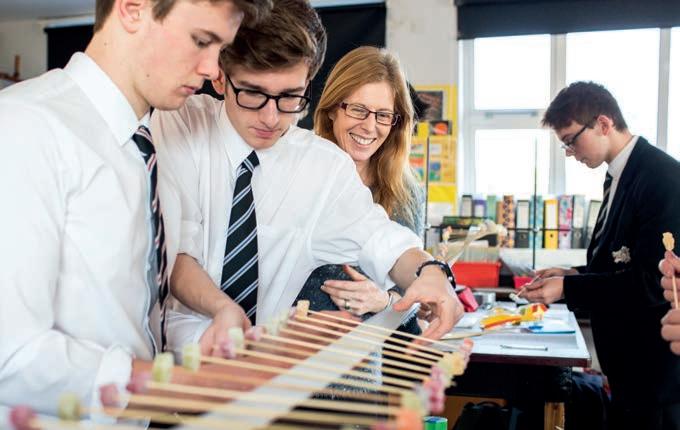
role here, yet they are part of a broader ecosystem under similar strain. The debates may take di erent shapes, but the underlying questions are familiar – what do we value in education? Also, how do we sustain communities in changing times and ensure schools remain places of stability when everything around them seems uncertain?
One issue that crosses every border is technology. The debate over mobile phones in schools has become almost a national obsession. Banning devices can feel like decisive action, and sometimes it is necessary. However, it doesn’t address the deeper challenge of preparing young people to live well in a digital world. There is a striking paradox here – adults worry about children’s screen time while modelling many of the same behaviours. Unless we address that contradiction honestly, school policy alone will never be enough.
At Campbell College, these broader debates are not theoretical – they shape the rhythm of daily school life. What strikes me most in these first months is the potential. Schools remain extraordinary


places – living communities where tradition and innovation meet. In our early strategic conversations, we’ve focused on how schools can remain steady in a shifting landscape, reviewing how we support pupils’ wellbeing, how we communicate with families, and how we ensure our values are reflected in both policy and practice. Strategy cannot be a static document on a shelf; it must be a living response to a rapidly changing world.
The challenge is not to resist change, but to engage with it intelligently. That means listening carefully, thinking clearly and acting with purpose. Coming home after nearly 30 years, I’ve been reminded of Northern Ireland’s educational strengths – strong community ties, deep loyalty, and a sense of shared purpose.


Combined with thoughtful leadership and openness to change, these qualities become powerful assets in a time of national uncertainty.
There are no easy answers. But this moment, unsettling though it may be, o ers a chance to think in fresh ways about what education is for, and what kind of schools we want to build for the future.

LATTICE PATHWAYS P 150 REFRAMING MEDIA P 156 HIGH GOALS P 159 STAND OUT TACTICS P 162

Library at TU Delft – one alternative uni location beyond the 'Big Four' Page 142




















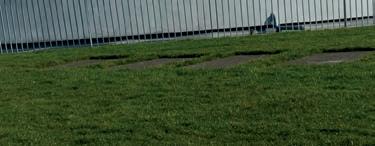




With
rising fees and changes in the university landscape, options beyond the
‘Big Four’ prestige locations are coming into play, says Quintessentially Education
The UK, US, Canada, and Australia have dominated the global education market for decades. This ‘Big Four’ offer both world-renowned institutions and the promise of long-term opportunity for aspirational students. But an unmistakable shift is taking place in international education, opening up competition for global talent like never before.
As a dual UK and US agency, we are supporting increasing numbers of students looking to a broader range of programmes across new regions. While demand for the UK and US remains high, there has been a significant increase in families casting the net wider.
A host of reasons, including migratory pressures, rising tuition fees, demographic shifts, political and regulatory changes, and credibility of post-study pathways, have led ambitious students to question previous assumptions and consider alternative places to study.
Policy and visa shifts can disrupt the best laid plans. Recent changes to student visa processing times and post-study work rules in some countries have created uncertainty. For example, in Australia, visa fees jumped to AUD $1,600 last year, with a further proposed rise for this year. Other policy changes have meant post-study work is now capped at two years. In the US, meanwhile, heightened scrutiny on visa applications, evolving documentation requirements, and
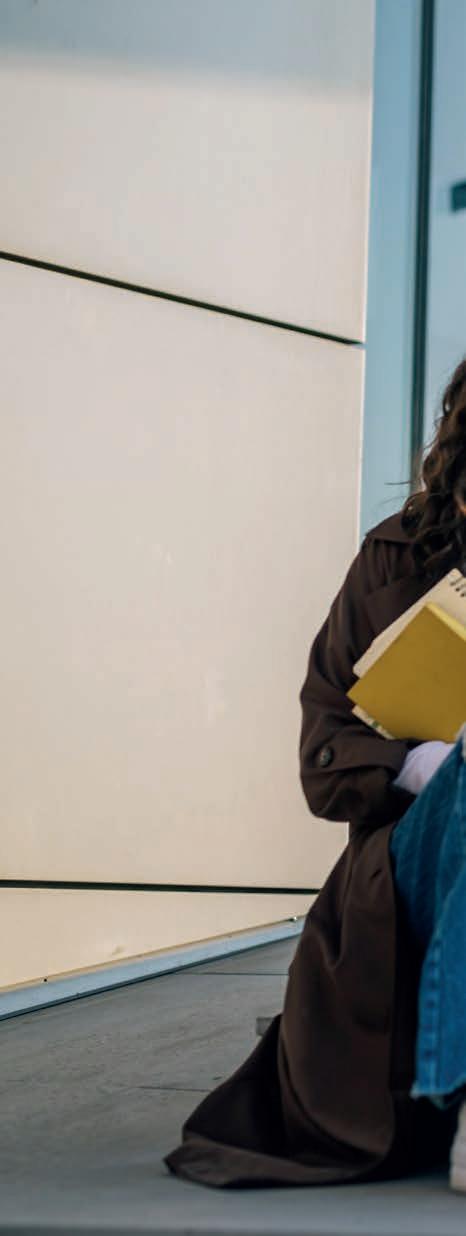
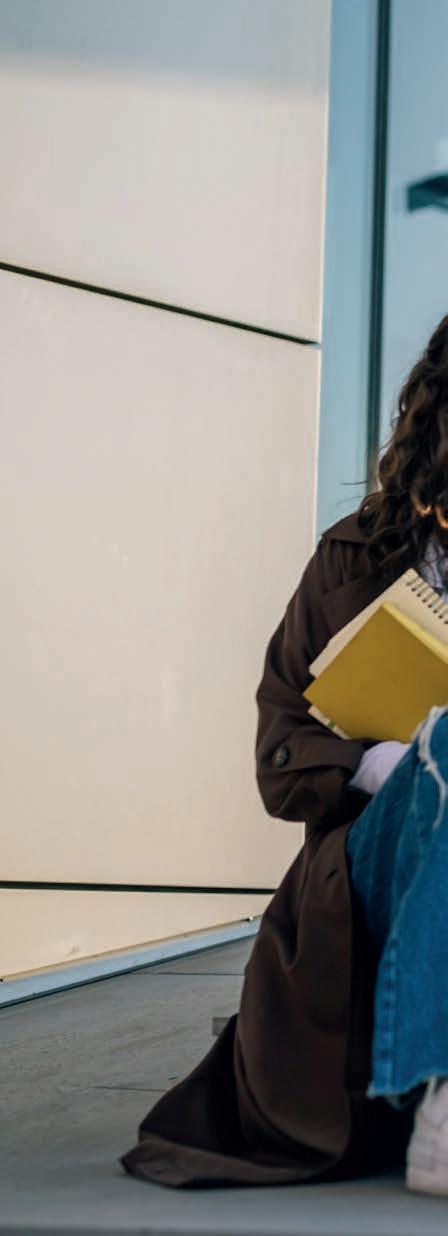
shifting timelines for F-1 processing have made it increasingly important for students to prepare early and remain adaptable. Rising costs across the ‘Big Four’ means students and their families are recognising potentially better value elsewhere. Tuition fees in these four countries can exceed £50,000 per year before living expenses. In countries such as Germany, Austria or the Netherlands, tuition is minimal by comparison, even for international students. In Germany, for example, most public universities charge no tuition fees or request very modest semester contributions of around €250–€350 for undergraduate study. There are exceptions such as BadenWürttemberg, where non-EU students

“Rising costs in the ‘Big Four’ nations means students and their families are recognising potentially better value universities elsewhere”
pay about €1,500 per semester, but that’s still a fraction of UK or US tuition fees. Growing global prestige is another factor influencing students’ desire to consider a broader set of university locations. While the UK and the US continue to dominate the top of the QS World University Rankings, an increasing number of European and Asian institutes such as ETH Zurich and the National University of Singapore (placed seventh and eighth in QS World University Rankings 2025) are appearing. These institutions are attracting worldclass faculty and securing international research partnerships as their prestige becomes more recognised.
Cultural and professional opportunities are also seen as another factor. Studying outside the Big Four can immerse students in dynamic, fast-growing regions – whether it’s joining the tech ecosystem of Singapore, learning in multilingual Brussels or building professional connections in Dubai’s thriving business scene. Such experiences can differentiate graduates in a competitive job market. These locations may also bring flexibility for transfers and postgraduate study. Certainly, a degree from a respected university in Europe or Asia can act as a springboard to postgraduate study in the UK or US, offering an alternative route to the same long-term goals.
From Germany’s tuition-free public universities to the Netherlands’ innovative English-taught programmes, Europe offers an exceptional return on investment. Institutions such as TU Munich, Heidelberg University, and Wageningen University are beginning to really rival their UK/US counterparts in research output and graduate employability.
And for students who coveted Harvard’s government, public policy and economics courses, Sciences Po is an excellent alternative. This prestigious French university, which has long attracted many of Europe’s political elite (President Macron included) has campuses in Paris and a number of historic French towns and teaches many undergraduate courses in English.
For those pursuing a STEM pathway, a great alternative to MIT in Boston or Imperial College in London is the Delft University of Technology in the Netherlands. Also known as TU Delft, this public university is much cheaper than MIT. The annual fees for international students are the equivalent of approximately $18,600 USD per year, compared to MIT’s $57,790 USD, and the town has much lower living costs than Boston. Bocconi University in Milan is a fantastic alternative to both

the University of Pennsylvania and LSE in London – offering a similar range of economics, finance and management courses – while IE University in Madrid has similarly good courses in business, management and international relations.
And for students who want something collegiate and historic with English as the primary language, proximity to the UK, and generous post-study work visas, Ireland’s Trinity College Dublin and University College Dublin offer a seamless cultural transition with strong academic credentials.
Regional hubs such as National University of Singapore and University of Hong Kong combine academic excellence with access to the fastest-growing markets in the world – ideal for future leaders in business, finance, and technology. Meanwhile, Dubai and Abu Dhabi now host an impressive roster of international branch campuses for leading UK, US and Australian universities. This means globally recognised degrees in a strategically located and cosmopolitan environment.


“Learning in multilingual Brussels or building professional connections in Dubai – such experiences differentiate graduates in a competitive job market”
For instance, University of Birmingham Dubai offers the same UK-accredited degrees as its home campus, and with a strong focus on business, engineering and computer science. Heriot-Watt University Dubai is renowned for its business and engineering programmes, while in Abu Dhabi, New York University Abu Dhabi (NYUAD) stands out for its liberal arts approach and strong research profile, combining US academic traditions with an immersive global outlook.
For families who value the prestige of a UK or US education but seek a

warmer climate, dynamic job market, and lower living costs than London or New York, these UAE campuses may be an astute choice – particularly for those students interested in internships and industry connections in the Gulf’s thriving sectors, which include technology, construction, hospitality and renewables.
Exploring beyond the Big Four is about widening possibilities. Students can get expert help in creating shortlists tailored to their academic goals, career aspirations and lifestyle preferences. At Quintessentially Education, our advice to students is to ensure they choose universities that are not just reputable but right for them. So, alongside the tangible values such as tuition costs, living expenses and graduate outcomes, think about the admissions process and the all-important lifestyle components. It can be especially helpful to talk to other students who have attended shortlisted institutions for firsthand feedback.
The good news for students is that a prestigious degree remains within reach, regardless of geopolitics. The key lies in having an informed and flexible strategy that balances ambition with pragmatism. The best higher education plans can evolve if the situation changes by keeping a range of potential options on the table.

Alex Swart-Wilson of Bishop’s Stortford College on giving students careers advice that empowers them in a super-competitive job landscape
Towards the end of last year I asked a colleague how her son was faring now that he had left university and was heading into the world of work. He had a 2:1 Honours Degree from a Russell Group University and I was expecting him to find the job market receptive to the skills and dedication that I had come to know during his school years. The truth was that he was struggling to find employment in his chosen career. It does not take much time to research the bottleneck in graduate recruitment. Statistics vary on the subject, but if you look at the latest set of figures they say that 98.5% of all graduate job applications are rejected. So what can schools do to help students be prepared for this challenge – one that is, for many of them, three to four years away from the end of the school days? Long gone are the days when three A levels were enough, students need more to stand out from their peers.
Employers talk about the need for school leavers and graduates to demonstrate what they have done for themselves, rather than what others have done for them. Gaining paid work at a young age, volunteering and work experience can all demonstrate this in some form. It gives students insight into the workplace, a wider range of suitable skills and demonstrates a commitment to personal growth. If a student has been doing this since they were 16, or even earlier, then the benefit it will bring them by the time they leave university will be significant.
Secondly, it is imperative that students choose the right option for when they leave school. The most obvious example in this regard is choice of degree for those going to university. Well over a quarter of students going to university say they picked the wrong degree. This has a significant, detrimental impact on their outcomes when they leave, (assuming they haven’t dropped out, that is).
Personalised, one-to-one advice from a careers professional can be transformational in empowering
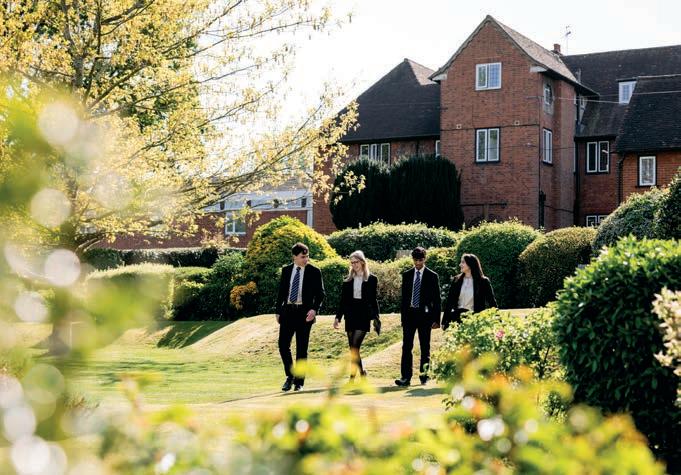
“Employers talk about the need for school leavers to demonstrate what they have done for themselves, rather than what others have done for them”
students with the confidence and skills to identify their own strengths, interests and priorities in life, all of which are the primary focus for the Futures team at Bishop’s Stortford College. With unlimited access to careers guidance, students at the College are supported to take ownership of the process of exploring the options that suit them. This enables informed decision-making, not just for this one important decision but to manage every step of their career. However, what is equally important is that students broaden their horizons around going to
university. Employers are increasingly recruiting straight from school and reducing their graduate intake. Students need to be aware of this, and the potential opportunities this opens up for them.
Lastly, while AI screening has taken a new role in selecting job candidates – and getting through this process is a challenge –the importance of the face-to-face interview should not be overlooked. This is the still the most important part of any interview process for top graduate employers. From the first handshake to the final question the candidate asks, tailored interview preparation from specialists, and up to date advice from real-world professionals on what it takes to impress, will make a profound di erence.




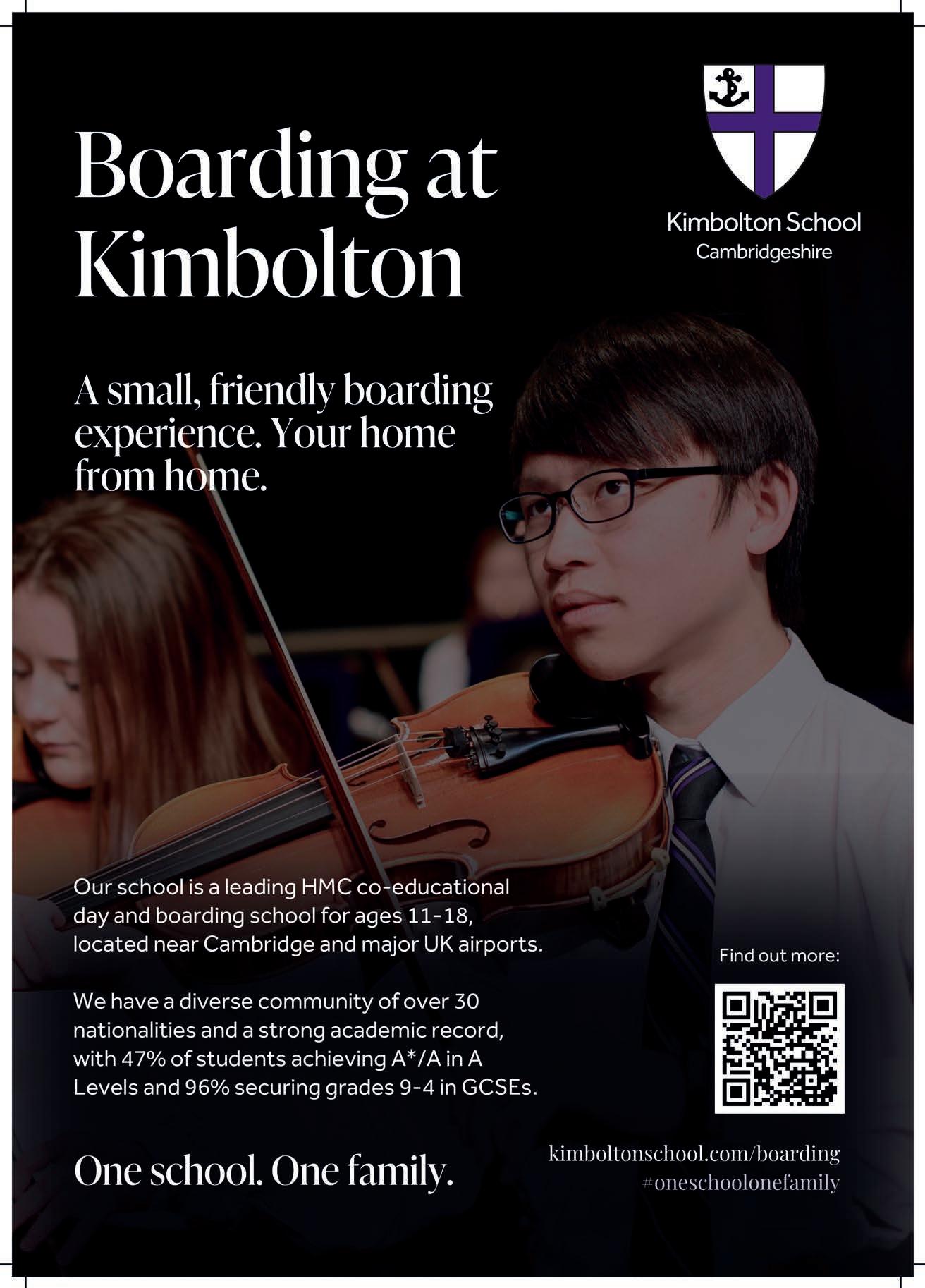
Diane van Dongen on the rising popularity of international university destinations, and how Concord College helps students narrow down choices
At Concord, a large proportion (85%) of our students are international, and so we are accustomed to supporting their applications to university outside of their home country. Many of the things to consider are the same, whether you are applying to a UK university as an overseas student or a British sixth former considering a course abroad.
Fees, visa requirements, and often for international students in the UK, the need for formal proof of language skills are among the first issues that need consideration. University fees, even in the UK, vary between universities and courses for international students. Around the world, costs and the availability of support such as scholarships di er widely. A student’s ideal match in academic terms might be less attainable financially. Particularly for professional courses, we also need to check that qualifications are transferable and would allow the student to work in their home country after they graduate. We also help young people who are required to complete national service,

“Our Futures programme brings together modern careers questionnaires and software, in-person careers advice and meetings with our alumni”
which might require a deferred entry or having support in place to prepare for application a year or two into the future.
Some universities base entry on exam grades, while for others – including many in the USA – extracurricular interests and ‘fit’ might be much more important. Appropriate advice can help students with a global outlook to play to their strengths.
At Concord, we begin exploring career and degree possibilities with our youngest pupils (13+) and from that point on help them to build a portfolio of knowledge about their options, and indeed themselves, ready for the moment they decide where to apply.
Our Futures programme brings together modern careers questionnaires and software, in-person careers advice and meetings with our alumni – from leavers still at university through to senior working professionals. This ensures students have a clear idea of what their future path might entail.
We use a system of university coordinators – sta who have specialist knowledge of options in a particular field of study (for instance, medicine or history). Alongside these are coordinators whose specialist knowledge centres around di erent countries, such as Canada, Hong Kong or Australia. This means students will have advice on both their field of interest and potential destinations.
Many of our students apply to more than one country, using UCAS to make some UK applications alongside perhaps two or three somewhere else. Exciting though choosing
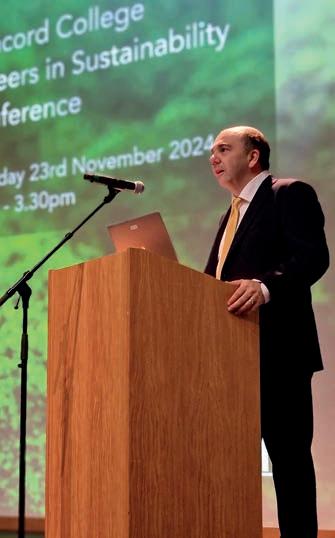
might be, it is important to help students narrow this shortlist. US universities, in particular, need tailored applications.
Many of those who succeed in pursuing professional and business careers to the highest level now find themselves alongside colleagues from around the globe, and so studying abroad or in an international setting can confer distinct advantages. At schools such as Concord, membership of an international community begins young and becomes part of our students’ daily life, but whenever and wherever young people have the chance to be part of such international teams, it is a distinct advantage.




The Head of St George’s Ascot on why pupils are thinking beyond the linear pathways of yesterday to secure rewarding careers in tomorrow’s uncertain world
This year the Gatsby Benchmarks – the framework that underpins strong careers guidance in schools –celebrated its eleventh birthday. A recent review confirmed this remains at the heart of the Department for Education’s statutory guidance. For those of us working in schools, this is welcome recognition of the power that well-timed, personalised careers guidance can have. Creating an environment where individuals are able to make their own mistakes, and learn from them, should be a priority for us
all – an environment where mistakes will not scar for life. To expect a child always to achieve A* grades, be in the first team and have lead protagonist roles in every play is unrealistic and is not going to create the resilient individuals we need – those who can respond to the challenges of our age.
As the 2025 report, ‘Gatsby Good Career Guidance – The Next Ten Years’, puts it: ‘When young people make supported and informed choices about their future study, training and work options, they are better able to maximise their talents and realise their ambitions’.
Education has always been about more than examination results. It is about
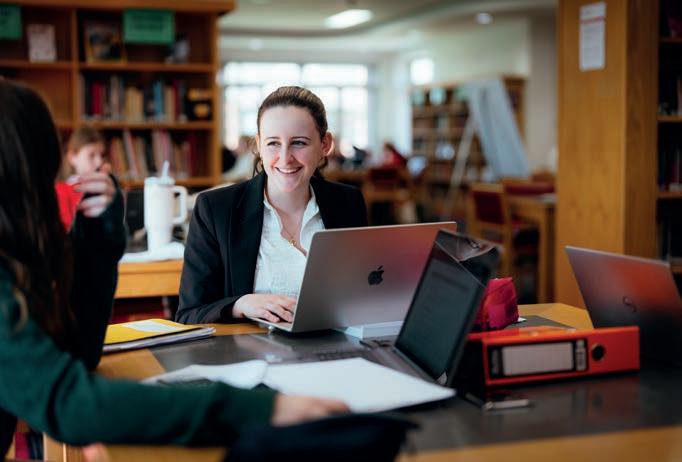
preparing young people for a lifetime of learning, and for a future none of us can fully imagine. Knowledge as the foundation of intellectual growth matters enormously, but it must be coupled with the skills that help it take root and flourish – critical thinking, communication, collaboration, digital literacy, and the confidence to ask difficult questions.
In today’s AI-shaped world, adaptability and curiosity are as essential as subject knowledge. Schools should not be preparing students for one specific job, but instead equipping them with transferable skills and the resilience to thrive in a dynamic and unpredictable marketplace.
A future-focused outlook also broadens higher-education horizons. UK students can access universities across the globe and gain huge cultural wealth. I find in recent years, students are much more open to thinking outside the box and not automatically assuming UCAS is the only way forward.
Some degrees here no longer feel like a clear return on investment, while entry to medicine and its allied courses has become fiercely competitive. As a result, students are exploring Europe and further afield. IE University in Madrid is renowned for its global business programmes, Bocconi in Milan ranks among the best for economics and finance, and EHL in Lausanne is widely recognised as the world’s leading hospitality management school. All teach in English so are accessible to all pupils.
Many pupils are also considering the US, where liberal arts degrees and generous financial aid make study attractive. Others
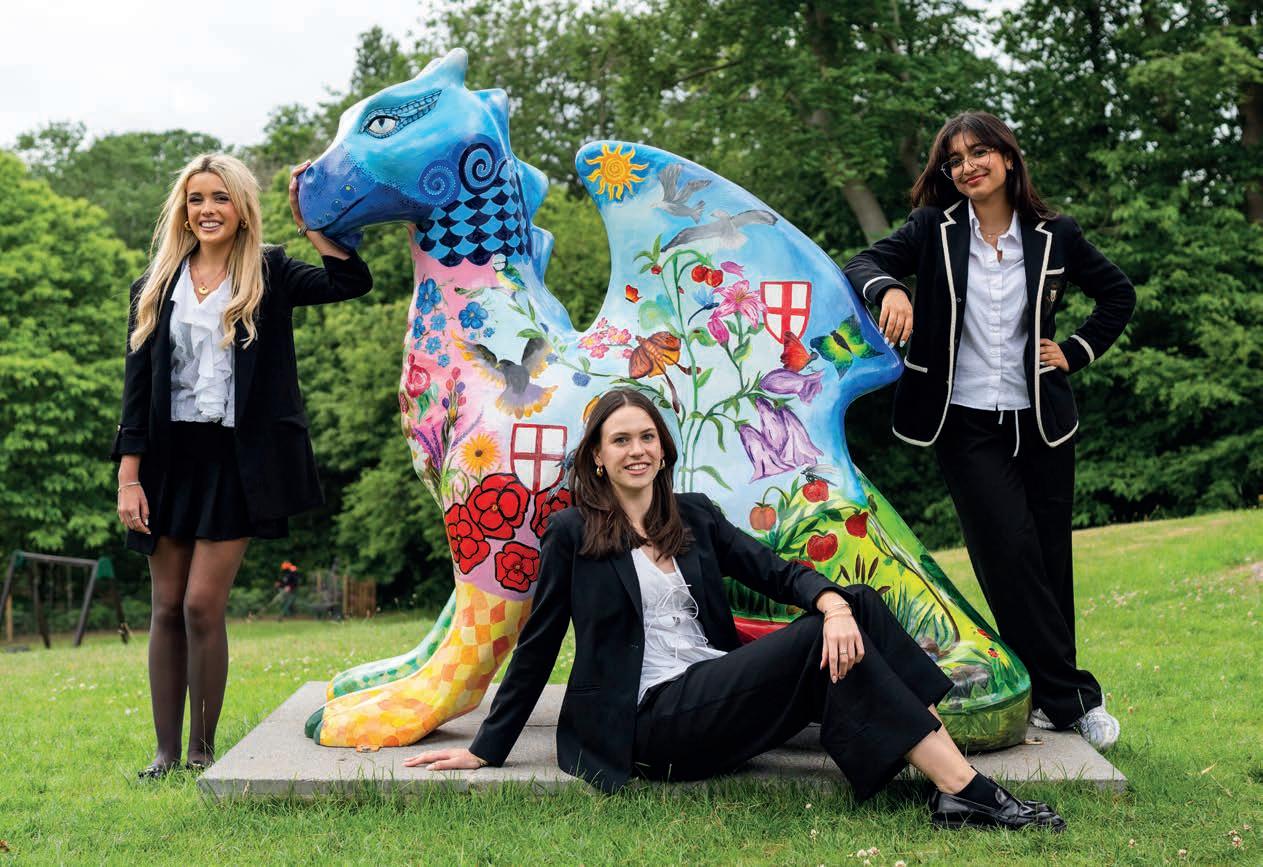
take up degree apprenticeships. This route is super competitive but means you have a guaranteed entry in that workplace, receive a healthy salary, acquire a degree and with no student debt. What’s not to like?
At St George’s Ascot, we see this shift and embrace it wholeheartedly. Our scale allows us to offer genuinely bespoke guidance, woven into the curriculum and led by a hugely experienced and passionate team. We work closely with the girls and parents, drawing on the experience of our Old Georgians alumnae. They regularly return for ‘Working Lunches’ with the Sixth Form and to take part in our whole-school Careers Convention.

Later this term, The University Guys will be visiting with delegates from a dozen or more European universities to open girls’ eyes to options across the Channel. Further on in the year, we shall hold a Degree Apprenticeship workshop.
Alongside all of this, we ensure our girls are aware of the graduate marketplace and also the role of digital testing and gamification in recruitment. These opportunities bring real-world experience into the classroom and give pupils invaluable insights into how different paths can unfold. As part of our STEM Week each academic year, we invite some of our SGA Partners into school to talk to the girls about their chosen pathways.
Academic breadth also plays a key role. Our pupils’ Extended Project Qualification (EPQ) results consistently place us in the top 3% nationally. The EPQ gives pupils the chance to explore an area of interest in depth – whether that’s AI, international law or the psychology of sport – and to develop research, presentation and critical thinking skills that universities and employers value highly. For many, it is the EPQ that directly informs future study and career choices.
Careers education is not a bolt-on but a continuous part of pupils’ school life. It offers touchpoints,
“Some degrees here no longer feel like a clear return on investment – as a result, students are exploring Europe and further afield”

FOX Head St George’s Ascot
conversations and experiences that give young people a clearer sense of who they are and what they might become. Crucially, we also prepare them for the realities of the graduate job market, and the likelihood that their working lives will be a patchwork of different roles rather than a single career. I often say to pupils that education should not be seen as a simple, upward ladder with examinations as the rungs. Instead, it is more like a lattice: sometimes you climb upwards, sometimes across, sometimes in a more winding, wiggly direction. What matters most is that you keep climbing, and that you know there are many different ways to reach a fulfilling, happy and purposeful future.
In the Heart of the Cotswolds — Just 90 minutes from London

At Wycliffe College, we offer a dynamic all-through education for girls and boys aged 3 to 18. Nestled in the stunning Cotswolds, our school combines tradition with innovation, nurturing every pupil to thrive academically, socially, and personally.
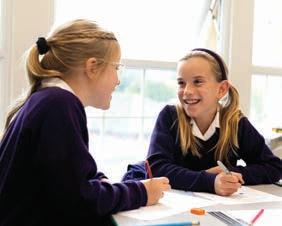
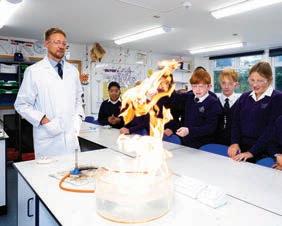


The Wycliffe Way:
» Fostering academic excellence through rigour, challenge, and a spirit of curiosity.
» Inspiring confident humility , generosity, and mutual respect in every interaction.
» Promoting social and environmental awareness , preparing pupils to be thoughtful global citizens.
» Equipping students with resilience, self-knowledge, and essential life skills to embrace their future with confidence.
» Creating a safe, happy, and supportive environment where every pupil feels valued and secure.

Mayfield School discusses why the right Sixth Form environment makes all the difference to girls’ happiness, confidence and achievement
Sixth Form can be both an exciting and overwhelming time. Academic pressures, shifting friendship dynamics, and an online world all influence how young people see themselves. At this stage, the right environment matters more than ever. Smaller class sizes, responsive teaching and strong pastoral care help pupils feel seen, heard and understood. This is especially helpful for girls, who often feel weighed down by the pressure to be ‘perfect’.
At Mayfield School, an independent boarding and day school for girls aged 11 to 18 in East Sussex, girls achieve outstanding results. Close working relationships with staff give girls confidence to discuss their work and ambitions, reflect positively on mistakes and become better learners. Soft
skills are a vital element of developing confidence and at Mayfield, girls speak up, take the lead, mentor younger pupils and engage in real dialogue. These experiences do more than build strong CVs. They help girls recognise themselves as capable, interesting and powerful in their own right.
Sixth Form life at Mayfield brings many opportunities to engage with leadership. From being a Listening or Academic mentor to younger students – a scheme led by the school’s Wellbeing and Academic prefects – to participating in the Sports Leadership Enrichment programme, working with Lower School girls is embedded into the Year 12 Lifeskills programme. A strong Prefect team reflects the student voice, leading on issues such as sustainability, charities, Chaplaincy, events and music.
Focused careers advice and real role models are vital, so having trusted adults
“At Mayfield, speakers and mentors show girls what’s possible in every field – from engineering and politics to sport and the arts”
and strong and inspiring female role models make all the difference. At Mayfield, speakers and mentors show girls what’s possible in every field – from engineering and politics to sport and the arts. This shifts the focus from ‘what should I do?’ to ‘what could I do?’ and encourages girls to follow their passions and talents.
Teenage years bring social pressures, but in a nurturing Sixth Form environment, girls have the space and support to grow at their own pace. Mental health and wellbeing are prioritised at Mayfield, and girls are known and valued. Through creative subjects, sport, community involvement and spiritual development, they are helped to stay grounded and remain connected to what matters most.
At Sixth Form pupils make friendships that can last a lifetime, and at Mayfield, happiness and personal growth are fully supported. Girls are encouraged to achieve of their very best without being overwhelmed. Academic success is just one part of the picture of personal achievement, with a strong focus on spiritual depth and empathetic understanding of others. This helps build a support network through school and into life beyond.
Sixth Form is a launchpad and a time when girls start growing into the young women they want to be. It’s an exciting time to grow in confidence, aim high, and build skills and self-belief. With a clear focus on academic challenge, personal support and real-world preparation, Mayfield girls leave Sixth Form prepared for whatever exciting opportunities come next.
mayfieldgirls.org






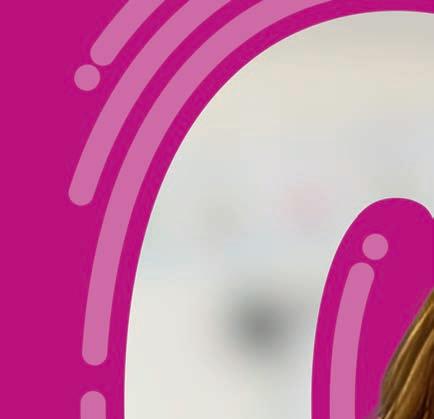



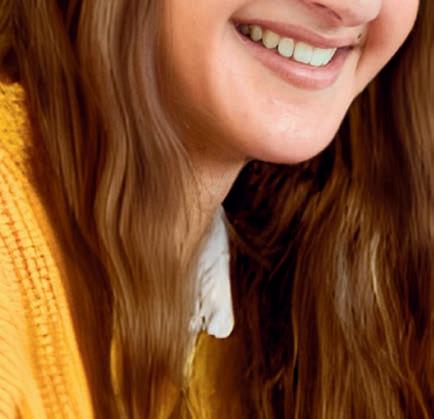











Suzanne
leadership experiences that prepare students for life beyond school
When we think about secondary education, academic achievement usually takes centre stage. Yet one of the most valuable lessons a young person can learn in school is how to lead. Leadership is not simply about holding a title or a formal position, it is something that emerges in everyday moments of listening, collaborating, making thoughtful decisions and taking responsibility.
The qualities that make an e ective leader – communication, empathy, teamwork, resilience – do not develop overnight. They need the right kind of environment, one that challenges students, supports them and gives them space to grow. In my experience, the boarding school setting is uniquely powerful in this respect. Students are not only immersed in their studies but also live alongside peers, navigate diverse relationships and take ownership of their daily routines. This naturally cultivates independence, personal responsibility and interpersonal skills.
At St Clare’s, I see this happening every day. Our community, made up of students from over 50 countries, means that di erences in background become opportunities for dialogue and learning. When students manage their own routines, contribute to shared living and build friendships across cultures, they begin to lead their own lives – and that is an essential foundation for leading others.


Formal opportunities matter too. Our International Student Leadership programme, Learning to Lead, provides a structured way for students to explore the fundamentals. They begin by studying what good leadership looks like, observe it in practice, and finally design and implement their own projects. I’ve seen students launch service initiatives, run conferences and represent their peers through the student council. What impresses me most is the responsibility they take for seeing ideas through – and the creativity they bring to solving problems. Leadership development is also shaped by classroom experiences. Team-based projects, debating and group presentations demand collaboration and diplomacy. Beyond academics, activities such as Model United Nations, Young Enterprise, and TEDx give students the chance to take on roles in real-world contexts. These experiences push them to take risks, to adapt and to build confidence. None of this happens in isolation and the close connections between sta and students are vital. At St Clare’s, this partnership allows us to share in challenges
as well as achievements. True leadership is as much about resilience as it is about moments of triumph. Perhaps most importantly, leadership at school should not be about perfection or prestige. It should be about learning to act with integrity, to work alongside others and to contribute to something greater than oneself. When students discover that, they carry it forward – into university, into careers, and into the communities they will one day help to shape.
At St Clare’s, and in schools everywhere, leadership is not a separate subject to be studied – it is something that is lived and practised, day by day. And when we give young people the trust and the responsibility, they never fail to surprise us with how ready they are to lead.




Media Studies is a subject still sniffed at in some quarters, so who better to provide a reframe than the Head of Media at top-ranked Hurtwood House?
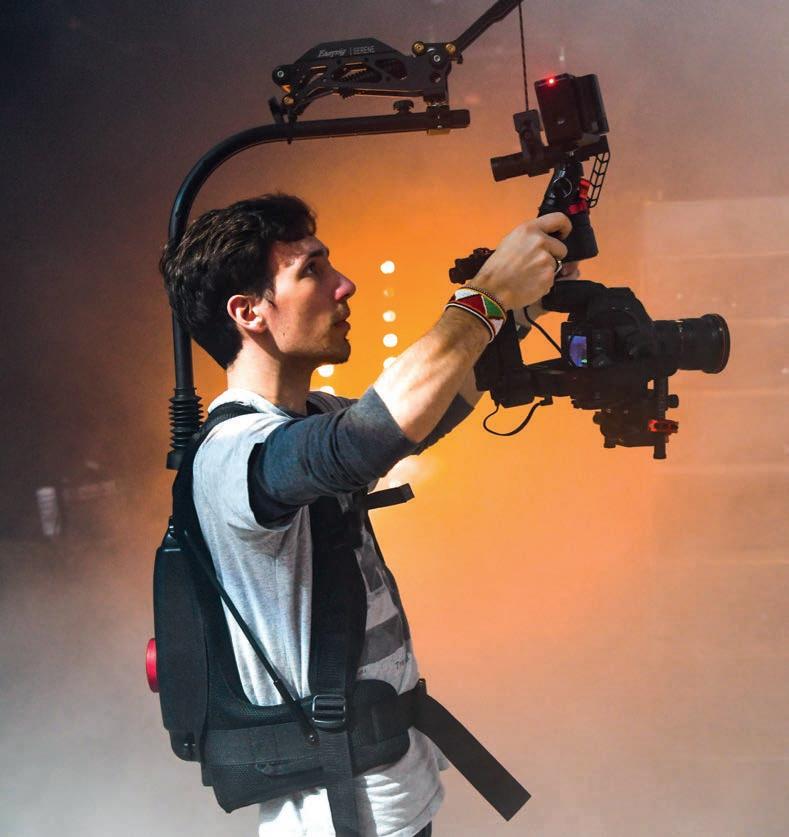
You still hear people question the value of Media Studies – ‘meeja studies’, as some wags call it. Philip Ward, Head of Media at Hurtwood House, is relaxed about the reasons behind this. “There is this legacy of being the butt of jokes. It probably fits in the pattern of traditional subjects versus modern subjects,” he says. So rather like the 1980s ‘ology joke? He adds that English Literature used to get it in the neck in relation to Classics long before that.
Hurtwood has long considered Media a worthy subject – in line with its whole approach. “Creativity is right at the heart of our curriculum,” says Philip Ward. “Creative success is given equal respect with academic success, and that flows through the balance of what students study, the range available to study.”
Media is a star here. The sixth form has been number one in the world for Media Studies A-level grades for the past two years. Last summer, a Hurtwood student achieved top marks in the world (and then moved on to IE Business School, Madrid). This is not unusual, as students regularly move on to top-tier universities with this subject in their portfolio.
Around a third of students here include it among their choices (last academic year that amounted to 70 A-level students, 23 of whom achieved A* grades). Just to dispel another rumour, Media Studies is not a soft touch for A level – 2.3% of students worldwide achieve top grade.
“We’re studying texts that are contemporary. If you tried to list those subjects in a traditional way, there’s no canon. But that ignores the point”
Students here mix Media with subjects you might not think of as natural bedfellows – Maths is the second most popular A level at Hurtwood. No one here sees any problems with combining the subject with sciences, languages or other traditional subjects. “Media Studies is the perfect match – 50% of the assessment is academic exams, looking at subjects like media law, regulation and media industries,” says Philip Ward.
“The other half is what we try to help students excel in – the creative practical side – where they develop a completely di erent set of skills. These are fundamental skills to most of the di erent degrees they go on to, but also the careers they pursue afterwards.”
The skills garnered through that practical side are needed in any workplace. “Communication, cooperation, technical skills, scheduling and organisational skills, planning projects,” he says. In other words, telling a story or getting a project from first idea to execution. “Whether you go into politics, business or the public sector, you are always trying to communicate your ideas and bring people with you – build strategies and think how you execute them.”
Hurtwood creates that landscape of developing an idea in a testbed setting. And it’s a pretty cool testbed. “We’re very lucky. We’ve got a purpose-built film studio and professional standard equipment. They are only as good as the students who use the equipment and the teachers that guide them.”
The teachers here come with industry experience and there’s a great alumni list to call on, along with black books of industry contacts. “We have set designers, lighting co-ordinators, DOPs, editors. For the students, it opens their eyes to all the di erent pathways. We’re really lucky with the contacts we have.”
Recent visitors include Chris Corbauld, special e ects supervisor for a whole host of James Bond films. Also Chris Spinet, who has worked with – among
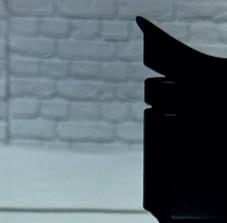





others – Steven Spielberg. While rubbing shoulders with the greats brings excitement for students, it also reminds them of their own potential pathways.
Of course, many students won’t go on to work in the creative industries, but they still take what Philip Ward describes as “cultural capital” into their working life. “Every kind of business now will have a media presence. It’s integral to strategy for getting messages over, bringing in business, maintaining the brand and ensuring its status and standing.”
He thinks one of the issues around those ‘meeja’ jokes has been that it is a ‘live’ subject. “We’re always studying texts that are contemporary. If you tried to list those subjects in a traditional way, there’s no canon. But that ignores the point. It’s learning the language of the texts, how they are produced, the context, and the relationship between
producer, text and audience.”
So, in Media Studies, students are gathering what Ward calls the “grammar” of anything they read, hear or watch. “They can be analytical and consider the texts in every ecosystem and draw a critical view,” he adds.
When it’s framed that way, Media is a subject for the modern age – one in which much more school time is now devoted to helping young people learn the art of critical analysis as they navigate a virtual world.
Hurtwood, and Philp Ward, have absolutely no doubts that this is a subject for any 21st-century student, living large parts of life online. “That’s where all of us are living all of the time now, especially the generation we’re teaching. Their world, their experience, their relationships, their understanding is shaped through that. Coming to it with critical awareness – of context, who has produced it, and its function – is critical.”
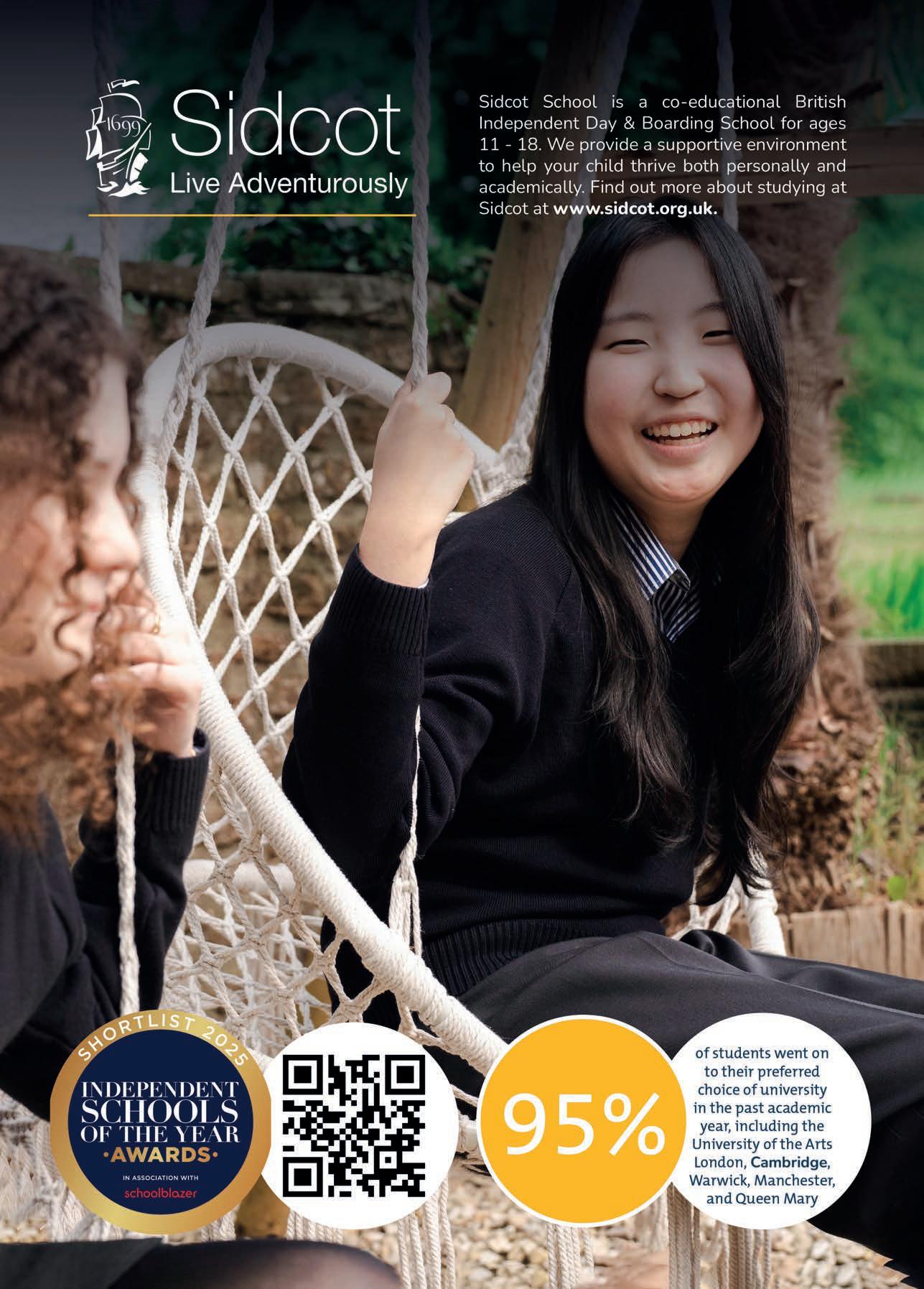
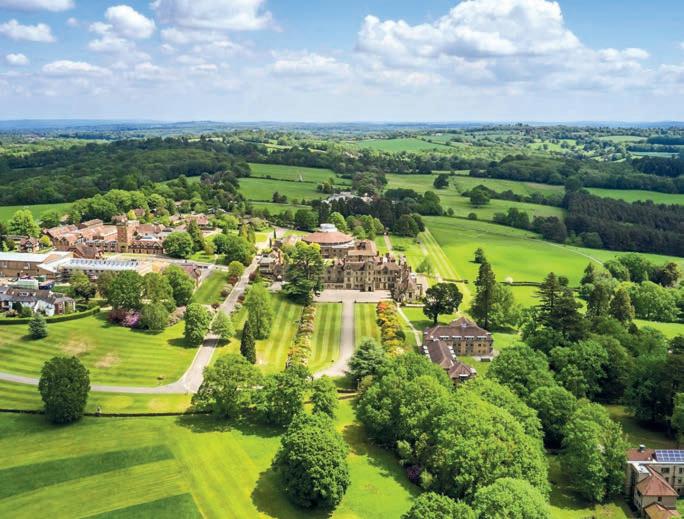
Matthew Doggett of Worth School describes its mission to combine academic rigour with strong values to bring out the very best in students
Whether a student continues their journey with us from Year 11 or joins for a fresh start, they immediately become part of a Sixth Form community that is both close-knit and supported by the wider school. It’s the best of both worlds: independence and leadership opportunities in a setting that still feels like family. As one parent recently put it: ‘My child has never been happier or more motivated. Worth sees the whole person and helps them flourish’.
At the heart of our Sixth Form provision is our belief in education with heart and soul. That means forming not only the intellect but also the person – instilling the values and habits that will last a lifetime. In a world where 16–18-year-olds face enormous social, emotional and academic pressures, this concept has arguably never been more vital. At Worth, Community is not just a buzzword but one of our six Benedictine values, alongside Humility, Silence, Worship, Stewardship, and Service. These values shape every part of
school life and ensure that our young people emerge not only capable but compassionate, grounded and generous of spirit.
A key part of our distinctive Sixth Form experience is the Spencer Building, a dedicated Sixth Form centre designed to support both academic focus and social development. With its spacious study areas, welcoming common room and fully equipped lecture theatre, it provides a grown-up environment where students can thrive. While our Sixth Form students remain closely connected to the wider school, the Spencer Building gives them a space of their own, encouraging independence, selfdiscipline and a mature approach to learning.
One of the most powerful tools we use to foster this outward-looking approach is our innovative Leadership Formation programme. Launched for all Year 12 students, it has been a game-changer. Through workshops, guest speakers, reflection essays and portfolios, students are encouraged to ask what true leadership looks like – and how they can live it. Importantly, this process redefines the idea of what it means to lead. It’s not about popularity, but about integrity,

“Through workshops, guest speakers, reflection essays and portfolios, students are encouraged to ask what true leadership looks like”
responsibility and the desire to serve others. Although not every student will become a prefect, every participant in the Leadership Formation programme is recognised for their growth and contribution, with formal accreditation and real-life skills they will carry far beyond school. More than that, they become servant leaders – young people who understand that leadership is about lifting others, setting an example and building real relationships grounded in respect, empathy and strength of character.
In an age where young people are often encouraged to look inward, we teach them to look outward – to connect, contribute and care. Community and altruism are not add-ons to academic success, they are essential to building fulfilled lives. Here, Sixth Form is where intellect meets heart, and ambition meets service. Our ambition is for a place where young people don’t just achieve – they become.


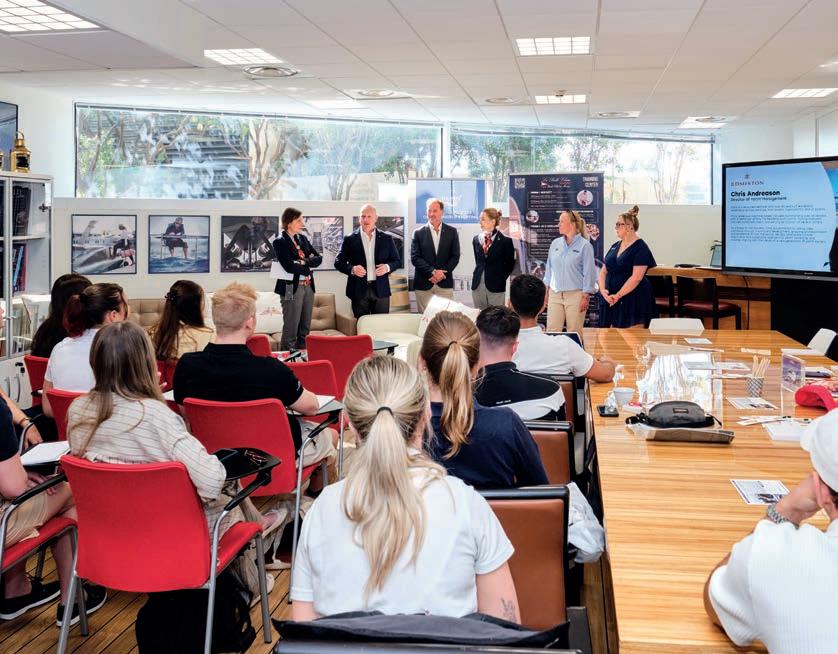
Lauren Saltonstall, Industry and Careers Coordinator at UKSA, on how its lifetime careers support is building resilient leaders for the yachting industry
Starting a career at sea is an exciting prospect, but this is also one of the most demanding environments a young person can step into. The maritime industry requires technical competence, resilience and adaptability. Yet too often, the focus is on qualifications alone. In my experience working with students and graduates across our courses, success at sea relies just as much on welfare support and guidance as it does on classroom learning. Education does not stop when a certificate is issued but evolves across an entire career.
Our training programmes – from the flagship Superyacht Cadetship to our Yachtmaster and Superyacht Hospitality courses – provide essential technical foundations. Navigation, engineering, seamanship and safety skills are nonnegotiable. But what prepares a young person for a long and fulfilling career is the
ability to manage pressures, transitions and the unique lifestyle of working at sea. Life on board can be hugely rewarding, but it also brings isolation, long hours and extended periods away from family and friends. Without preparation and support, these factors can knock confidence and lead to talented seafarers leaving the industry early. A holistic approach, which places welfare alongside education and careers advice, is vital for progression and retention.
At UKSA, we know that support needs to follow our students. Thanks to the support of The Seafarers’ Charity, we are now able to provide on-location guidance in key yachting hubs such as Monaco, Antibes and Palma. This includes one-to-one careers advice, welfare support, onboard mental health training and wellbeing events designed specifically for crew. These touchpoints make a tangible difference. A young graduate who feels
“What prepares a young person for a long and fulfilling career is the ability to manage pressures, transitions and the unique lifestyle of working at sea”
isolated during their first season can have a familiar face to speak to. A crew under pressure can take part in mental health training that provides strategies to cope and to support their peers. Regular wellbeing events create safe spaces for crew to connect, share experiences and feel part of a wider community. This not only helps individuals but also strengthens the industry by encouraging talent to stay and progress. The results speak for themselves. Recently, graduates from our Cadetship, Yachtmaster, and Crew Training courses worked for industry leaders Edmiston and Burgess at the Monaco Yacht Show – testament to the impact of combining training with long-term, holistic support. Training, careers guidance and welfare are part of a continuous journey. At UKSA, we call this ‘lifetime careers support’. It means continuing to mentor, advise and equip graduates as they progress from first placement into senior roles. This benefits the wider industry. By prioritising welfare and professional development, we are helping to build a workforce that is resilient, committed and ready to grow into leadership. Industry partnerships provide the opportunities, but it is careers and welfare support that ensures graduates are ready to seize them. Training is the beginning and the real education at sea is ongoing. When we view careers through the lens of long-term support, we empower young people – not only to succeed in their first role but to thrive throughout their maritime journey.


“There is a fundamental shift taking place in the hiring practices of many firms – more are open to hiring non-graduates”

With more firms hiring on a skills basis and the inexorable rise of AI, degrees are no longer the golden ticket, so graduates need to find their niche to stand out from the crowd
JESS HARRIS
Let’s spare a thought for the graduates of 2025. They are facing the toughest job market in the UK for nearly a decade. Shifting hiring trends appear, at first glance, to be devaluing the degrees they’ve worked so hard for in the first place.
The number of roles advertised for recent graduates is down 33% on last year, according to recent data released by jobs search site Indeed. There are many reasons for this – a sluggish UK economy, rising National Insurance contributions for employers, and more graduates than ever with similar credentials. But the biggest cloud on the horizon is the rise of AI, which is drastically reshaping the world of work.
“AI is dissolving the bottom rung of the corporate ladder, especially in economies and industries where information work dominates,” said Ignacio Palomera, CEO of Web3 professional networking and jobs platform Bondex, speaking to The Times recently.
“This is not a binary story of jobs lost vs jobs gained, but rather an asymmetrical transformation where tasks are being obliterated faster than the market can absorb or reskill the
displaced,” he added. “The first casualties are disproportionately early-career professionals and operational generalists.”
As if to illustrate this point, PWC UK, number one in ‘The Times Top 100 Graduate Employers’ list for nearly 30 years, announced in September it would be hiring 200 fewer graduates this year.
In addition, there is a fundamental shift taking place in the hiring practices of many firms. More are open to hiring nongraduates, sometimes prizing real-world skills and portfolios above grades and academic learning. Companies such as Accenture, Kellogg’s and Kurt Geiger have recently introduced new hiring rules where no degrees are necessary. Neil Clifford, CEO of Kurt Geiger has made no secret of the fact that he wants to rip apart the ‘paper ceiling’ – the longstanding requirement of recruiters for degrees over practical and real-world experience.
“On-the-job learning is often as good, or better than, uni,” says Clifford. “Taking away the paper ceiling is helping bright people get great jobs.”
This doesn’t mean a degree isn’t still worthwhile – it’s just that it is rarely enough on its own. Of course, the upper echelons – Oxbridge, Imperial and the Ivy League – still hold sway, as do vocational

pathways such as Medicine, Dentistry and Veterinary. University also remains a must for experiencing life away from home and expanding intellectual horizons. Independence, a chance to learn for learning’s sake, and a space to make new friends and have fun will remain a rite of passage for many, understandably. What has shifted is the landscape graduates enter.
This means securing a degree should be viewed more as the starting point for your career than a guaranteed door opener. What employers now want is students who can show they have a passion which they have actively pursued – experiences showing they have gone above and beyond.
First, specialise slightly more than your peers. You don’t need a PhD-level niche (unless you wish to continue studying), but when graduating at an undergraduate level, you should be able to evidence passion in something specific. For instance, ‘I’m a PPE graduate who builds data dashboards on elections’ or ‘I’m a soil scientist and
have completed a 10-week summer project with the Royal Horticultural Society’.
You need to show you have used your course as a springboard to convert academic learning into real experience. Choose a small, persistent problem in your field – data cleaning for a charity or cost overruns in student societies, for example – and become the person who solves that problem.
Evidence your passion with examples. Create a portfolio site or deck of slides to present the voluntary work or work experience undertaken. Create a case study of yourself – a problem, action, outcome (for example with the data cleaning for a charity) with numbers where possible as proof points. One excellent project with measurable results beats a dozen vague bullet points with no clear outcome.
Use clubs, competitions and communities as a shortcut to build your experience and network. If you are doing a Politics degree, join the debating society, volunteer with the local branch of a political party and go canvassing during an election. Get to know people in your field of interest and
“Choose a small, persistent problem in your field and become the person who solves that problem”
ask for their recommendations for your next step into work. If you impress them, don’t be afraid to ask for a testimonial. It should go without saying, but be sure to master the tools hiring managers expect along the way. There is no point applying for a job in a particular field and not being able to use the given technology. Gone are the days when you could expect to learn on the job. Finally, get working. Too many graduates leave university having never interacted with a real client or consumer. Take roles at university and offer your time to a local SME, startup, charity or campus department. Do all this pro bono, if necessary, but make sure you keep a record of your work, summarising your professional contributions and gathering results and testimonials where you can. If there isn’t available work in your field, bar or restaurant work is proof of the ability to work – and nothing prepares you for the working world like starting in the service industry in an entry role.
Working with an education consultancy that supports students through choices and the rigours of the UCAS or Common App application, I firmly believe that university provides an excellent foundation for your personal life, and a degree is an excellent foundation for professional life. But there is a growing body of evidence that it will no longer differentiate you enough. That’s why you need to stand out by finding your niche and owning it.
And the good news is that there’s a real renaissance in demand for skills that you will have developed during your education and activities beyond the classroom. Employers are looking to hire problem-solvers with a can-do attitude and great communication skills.
So, if there’s a silver lining in the future landscape of work, it’s that AI may inspire us to reconsider, and value more highly, what makes us human.
* Jess Harris is Head of Quintessentially Education







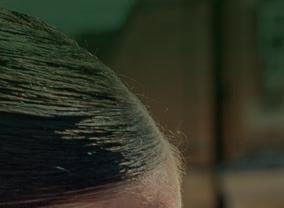












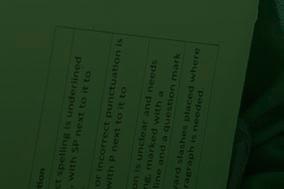





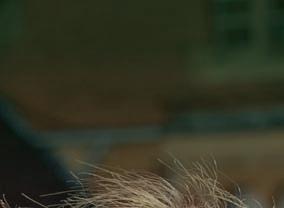

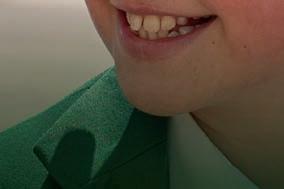










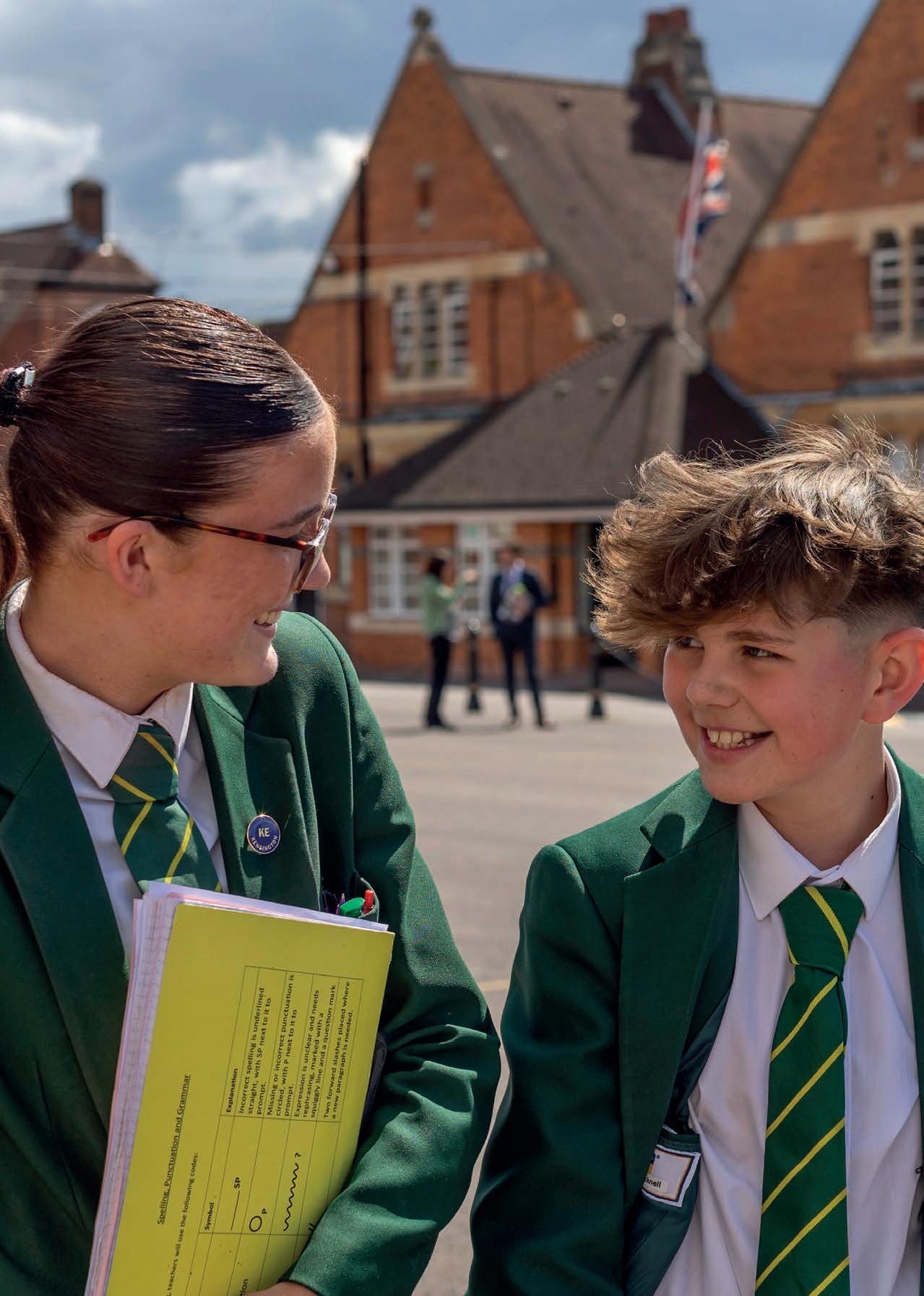
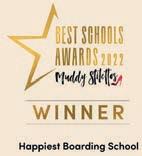



Arrange a personal tour by calling 01283 559200 or email admissions@repton.org.uk A perfectly balanced education in the heart of England
repton.org.uk

Cruschiform illustration from Seeds: Nature's Intrepid Miracles Page 170

Former Irish Children’s Laureate Sarah Crossan brings reassurance – and humour – to managing anxieties that can take over young lives
Sarah Crossan is an old hand at writing, but A Totally Big Umbrella is her very first picture book. Read it and you will wonder what took her so long, for this touching and funny story deftly describes in reassuring language how small worries can mushroom into huge ones that stop us enjoying life.
It’s in the Young Adult (YA) market where Crossan made her literary name. Her first novel, The Weight of Water, has been adapted for the stage four times and she picked up multiple awards and award nominations for One, a novel about conjoined twins. She’s also a former Irish Children’s Laureate and has been translated into some 25 languages. Her novels in verse made her a natural fit for this very young market, said the editorial team at Walker Books when they persuaded her to turn her talents to writing for a much younger audience.
To be fair, she’d had the idea of writing a picture book for many years, really since she was reading fantastic picture books to her own daughter (now a teenager).“Everyone thinks they’ve got a picture book in them because it’s only 500 words. But when I did decide to do this, it was because I had an image of an umbrella in my head, which I wanted repeated in the book. Also, I wanted to write about anxiety.
“The thing about anxiety is that it can start small and just get bigger and bigger,” she says. “I think that’s how fear works, and not just for children.”
Our protagonist, Tallulah, decides she hates the rain for ruining her lovely dress and turning her favourite biscuits soggy. When Grandma gives her an umbrella to keep her dry she feels better, until she starts to think about how one umbrella will never be enough if the rain really comes down. Will she be swept away?
All the way through writing the book Sarah Crossan had imagined characters and settings drawn by Rebecca Cobb – the two had connected at some point on social media – so when she suggested her as illustrator and it was all confirmed, she was, she says,
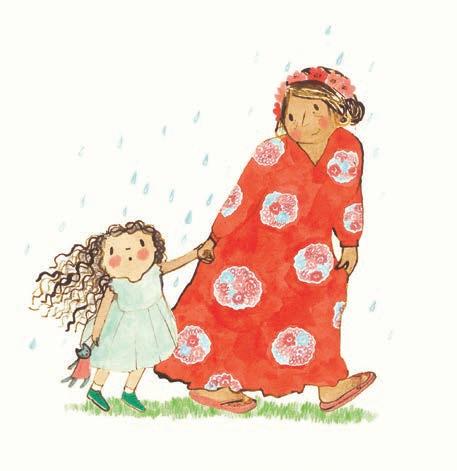

“I loved this idea of an umbrella getting bigger. I think that’s how fear works, and not just for children”
over the moon. “She draws children so well,” adds Crossan. “She shows Tallulah as a very strong girl.” This felt important, because anxiety can affect anyone.
“I wanted the book to be a journey for the child, and also the character was afraid of something that other people might think was quite silly,” she says. “We always think other people’s fear is silly but ours is rational.” By the end of the story, Tallulah has managed to play in the rain, but she still sleeps with an umbrella tucked under her bed, just in case. It was important to show that anxiety doesn’t magically disappear – very often it is about managing our fears to move forward.
She still has vivid memories of the huge impact books had on her own childhood. “Books, when I found them, were a place where I was able to understand things.” Now, she comes at writing from multiple perspectives. “I have so many people in mind. It’s really a dangerous thing when you’re a writer to have so many audience members in mind.
“I’m thinking of the child, I’m thinking of the parent and I’m thinking of the teacher when I write any book. Like, would I teach it, would I give it to my child and, as a child, would I want to read it?”
It was Crossan’s experience as a teacher that inspired her first steps as a writer. After she completed The Weight of Water, she had a hunch that the advice she’d been given about verse novels being a really hard sell was wrong. “I was living in America when I wrote it,” she says. “I knew, because I was teaching a verse novel there called Out of the Dust by Karen Hesse, and the kids really loved it.”
She recalls how the UK teen response to poetry in those days tended to be a groan, whereas in US high schools it was, “OK, cool”.
She suspects this may be to do with the way poetry was framed either side of the Pond. “In the UK, it was either Michael Rosen or Shakespeare,” she says. “But in America there was a huge tradition of slam poetry and rap.” Now, 13 years on, there’s no doubt of the verse novel’s reach and popularity. The good news for Sarah Crossan’s YA fans is there are more novels in the pipeline. And now, very young readers get to join them, enjoying this uplifting tale about how we can move through anxiety and learn to have fun again. As brave Tallulah says, looking out on the world from the safety of her giant umbrella, fear is: “very, very boring and also a bit lonely”.
A Totally Big Umbrella, written by Sarah Crossan and illustrated by Rebecca Cobb, is published by Walker Books (£12.99).
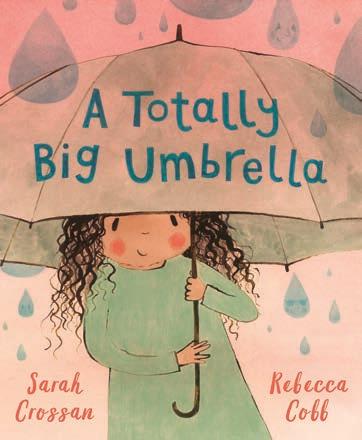

You,
This lovely book by professor of environmental geography and tree advocate Brit Crow-Miller tells the story of Old Oak, who falls down after 400 years. When news spreads, creatures gather to remember the wonderful ways she served her forest community. Crowds of birds sing out their gratitude, squirrels give thanks for her acorns, leaf buds and catkins, while the rabbits remember those cosy burrows her roots provided. She has fallen, but new life is already in motion, with her seedlings growing steadily in the sunny clearing she created when she fell.
From the wonders of seed distribution and fascinating football facts to bug life and a very special animal rescue agency, our pick of brilliant autumn reads
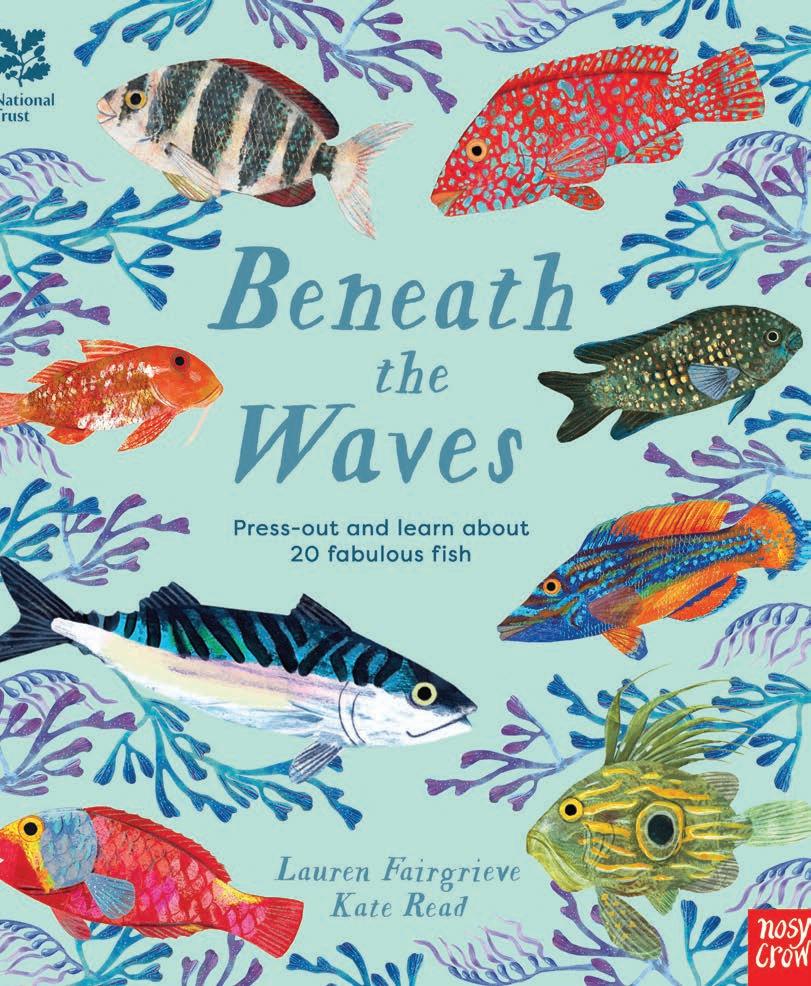
by Lauren Fairgrieve & Kate Read
Part of Nosy Crow's 'Press Out and Learn' series in partnership with the National Trust, this interactive book lets you remove and construct 3D fish. There are 20 in all – enough for a colourful shoal – ranging from bluefin tuna and cuckoo wrasse to pollock, John Dory and red mullet. The fish are delightfully detailed and colourful and can be pressed back to refer to again or used to create hanging decorations. The back of the book contains more lovely marine illustrations, plus descriptions of their habitats and fishy habits.
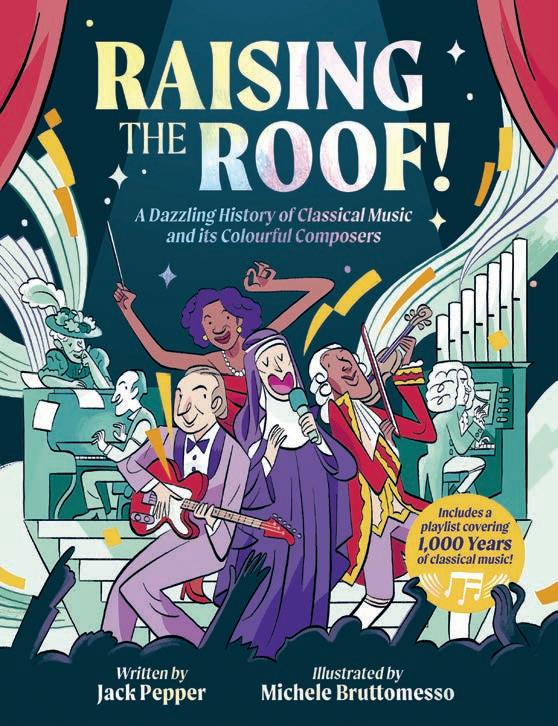
by Louise Pentland PICCADILLY
PRESS, £7.99
Louse Pentland's debut children's novel centres on Lyla, who is fed up after a summer of splitting time between her parents after their divorce. And so she retreats to Lylaland – her dream world where anything is possible. There's a national schools' competition where finalists get to take their families on a weekend away – perfect way to get Mum and Dad back together. But an inspiring and inventive entry eludes her, and even Lylaland stops being her dream place. How can she get it back, and make things go right in real life, too?

by Jack Pepper
Illustrated by Michele Bruttomesso TEMPLAR BOOKS, £10.99
The composer Jack Pepper's introduction to classical music is now available in paperback and makes a great immersion into the colourful characters who have delivered hits and touchpoints in the great history of sound. There are 20 characters, including rockstars of their day such as Bach, Beethoven and Mozart. But you'll also encounter George Gershwin, Shirley Thompson and Hans Zimmer. To bring the music to life, you can listen as you read with the book's playlist. Key forms – including symphony, opera and concerto – are explained, and with a group of 'honourable mentions' in music.
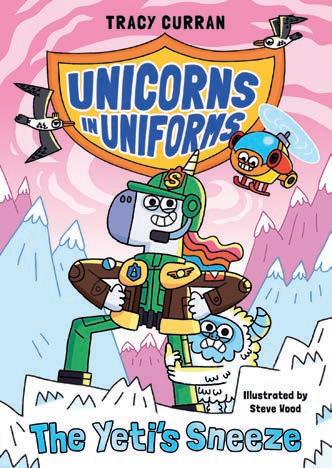
by Tracy Curran Illustrated by Steve Wood UCLAN PUBLISHING, £7.99
This is the second in this fun series following the Air and Mountain Rescue Team. Yan Yeti has a bad case of the sneezes up in the Mystical Mountains and this causes huge snowstorms. One 'Atishoo' triggers an avalanche, after which young Yo-Yo Yeti can't be found. Rescue unicorn Sunny and his unicopter Bee are on the case, setting out on an urgent mission to find Yo-Yo and bring her back to safety. Colourful pictures and reader-friendly large text make this a great choice for young readers who love an adventure.

by Cruschiform PRESTEL, £22.50
This book created by the French creative studio of Cruschiform is a real labour of love and fascinating to children and adults. It tells the story of how plants of all types – from alfalfa to giant redwood – send their seeds out into the world. There are 150 seeds covered in depth, with spare text and detailed illustrations, and the book covers dispersal by wind, water and human and animal interaction. We love the painterly illustrations that introduce each chapter in a book to study, return to and treasure.
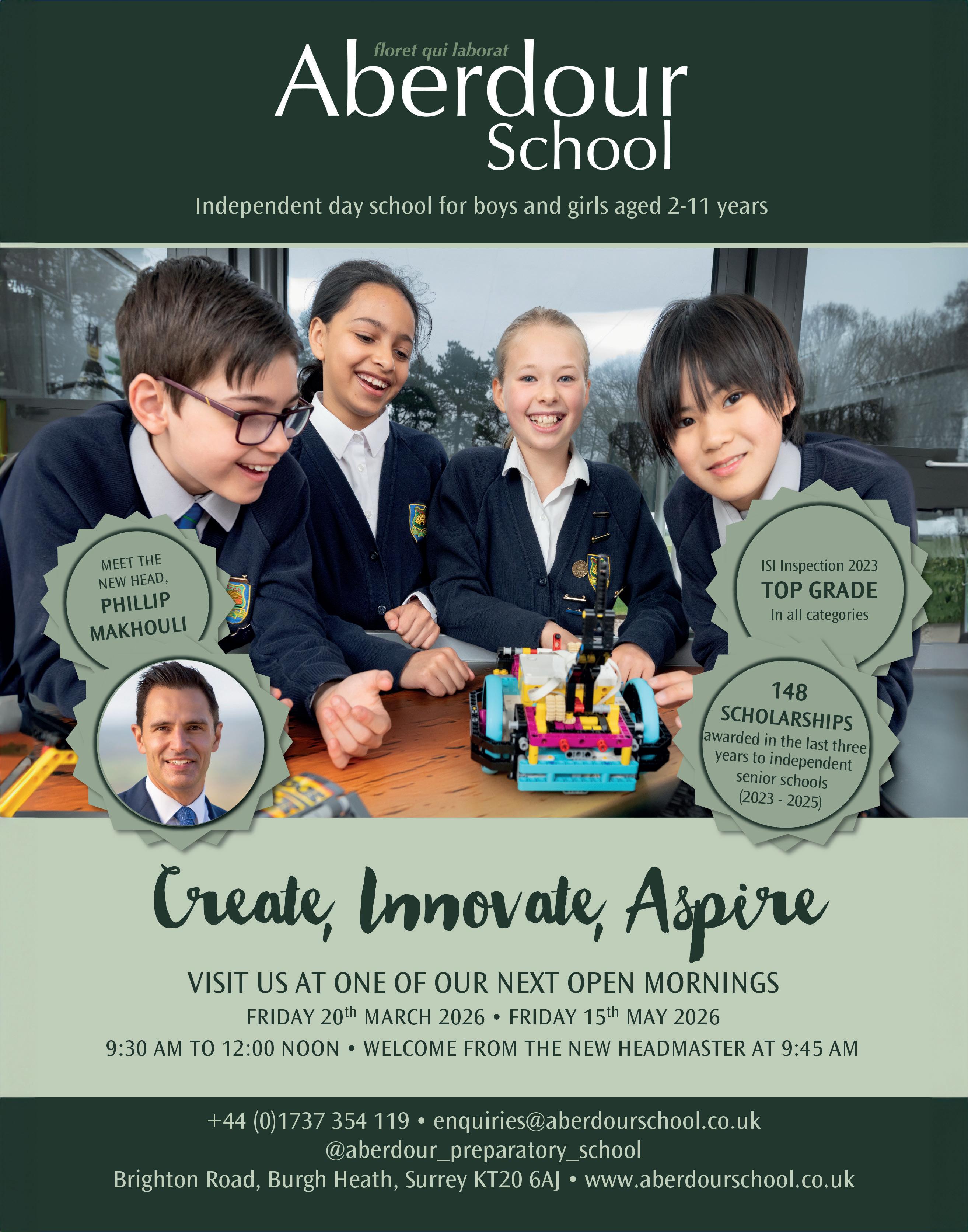




by Alex Bellos and Ben Lyttleton
Illustrated by Spike Gerrell
WALKER BOOKS, £14.99
This latest addition in the bestselling Football School series is a bumper special edition for fans of the game, containing a fact for every single day of the year. Each of the 12 months is introduced by a birthday list of illustrious players. It's then followed up by essential football trivia amassed by the footie-mad Bellos and Lyttleton dream team – all illustrated with fun cartoons from Spike Gerrell of TES and Guardian fame. There are quizzes every month, plus an end-of-year super challenge to test even the most ardent fan.

by Marty Crump & Andy Charrier
Illustrated by Loreto Salinas POST WAVE, £14.99
Subtitled 'Nature's Most Extraordinary Creatures', this book is a great introduction to a diverse and ancient group of tetrapods. There's plenty of scientific information packed in, all described in a clear and compelling way, and with superb illustrations by Loreto Salinas. Alongside an evolutionary tree and 'what is' descriptions of the different classifications, you'll find information on everything from skin, diet, lifecycle and communication to self-defence and conservation. There's a useful glossary at the back, plus links to further reading and resources, making this a great choice for budding zoologists.

9+
by Ross Montgomery WALKER BOOKS, £7.99
The author of I Am Rebel, returns with this adventure about a boy and his horse. Tick lives in a peaceful village with his younger brother Leaf and his white horse Pebble. But peace is shattered by a deadly assassin. Tick has very little time to get to Kings' Keep and warn of the impending invasion. He and Pebble set off across forests and mountains, encountering bandits and rogue knights along the way, and with only his grandfather's last words 'The rest is up to you. Make it count.' to steady him.
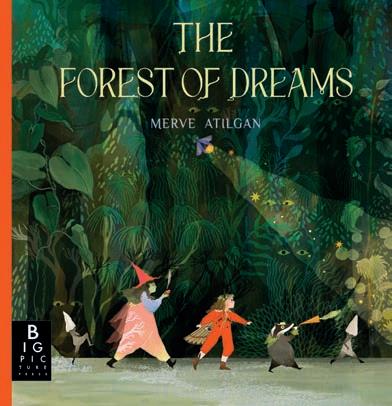
by Merve Atilgan
BIG PICTURE PRESS, £12.99
Istanbul-based authorillustrator Merve Atilgan was inspired by her own childhood to create this enchanting tale. At the end of a long day, a little girl escapes to her magical forest. On some journeys she wanders down new paths and encounters strangers – shy mushrooms or a group of welcoming witches. And on others she meets old friends, including the big brown bear, the anxious white rabbit, the mischievous twin toads and the elusive red fox. There is wonder, dancing and celebration of nature in every whimsical journey she makes in this beautifully drawn bedtime story.





















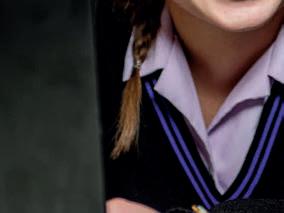



















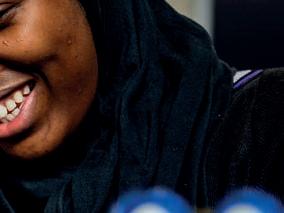
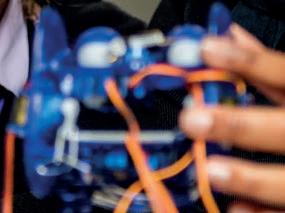


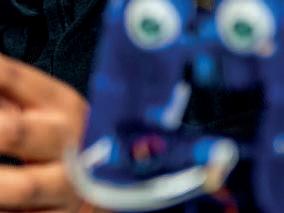







by Carly Gledhill POST WAVE, £12.99
Carly Gledhill's riotous read turns storytelling on its head. Pencil is writing his best ever, starring his friends Peanut and Jelly. But Peanut is less than keen to enter The Super Spooky Forest to meet Jelly. When he does, they are chased by a grizzly bear. Pencil's rewrites happen thick and fast when his hapless friends object to being eaten by the bear or finished off by a crocodile or giant snowball. All's well in the end, although Peanut and Jelly make it clear they aren't keen to appear in the sequel.
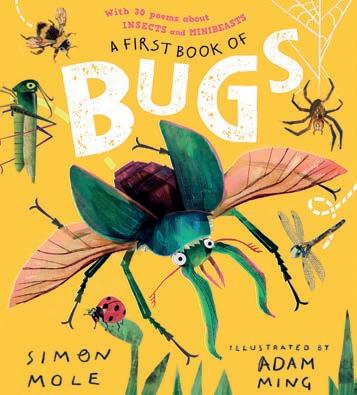

by Katya Balen

by Kirsty Applebaum NOSY CROW, £7.99
3+ by Simon
Mole
by Adam Ming WALKER BOOKS, £16.99
National Poetry Day ambassador, children's writer and performer Simon Mole gets right behind bug life with this celebration designed for young readers. This is a feast of poetry, memorable facts and wild illustrations by Adam Ming. An array of mighty mini beasts are described, from the mayfly and goliath tarantula to African driver ants and monarch butterflies. The four themed sections include one on how small creatures work together. It's an immersive large format read and, if they love this, do check out the sister in the series about dinosaurs.
The second in Katya Balen's series for animal lovers sees Mattie, Zoe and Casper running Appletree Animal Agency – finding homes for animals in need and helping out the village vet Dr Polly. There's a lively three-legged collie called Nimbus who needs loads of training, but his owner just wants cuddles, so he keeps escaping. The team have to follow a three-paw trail through the snow when he disappears again. Thankfully, there are humans in need of animal companionship and so our agency team are ready for a spot of matchmaking.
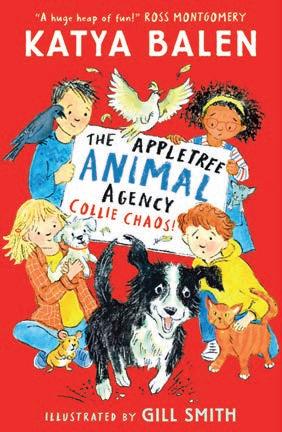
Fran doesn't want to go and stay with her aunt and uncle, and she particularly doesn't want to be around her rude cousin Imogen. But Imogen is missing when she arrives and, creepier still, no one knows where she is or even remembers who she is. Fran feels duty bound to investigate, enlisting Imogen's friend Bex, who has also lost her memory. Fran has no idea what has happened here, but she's certain it has something to do with Stillness Hall, its hidden garden and the 12 statues that belong there.
As the wildly popular podcaster of Everything Under the Sun, Molly Oldfield is on a mission to help children find answers to questions big and small
LIBBY NORMAN
How do frogs jump, why do pandas love bamboo, and why do we work to make money?
These and other burning questions are answered in Molly Oldfield’s latest book Everything Under the Sun: All Around the World. There are 366 queries answered, one for every day of a leap year, and with insights from experts in their field as well as star names. These are genuine questions, and what makes the book rather special is the fact that they come from children from all corners of the world. Molly Oldfield, as factfinder extraordinaire, fields hundreds every year for her weekly podcast Everything Under the Sun. She takes this role extremely seriously and every day wakes up to fresh voice messages from young people. “I love hearing their voices coming from all over the world – ‘I’m in Uruguay’, ‘I’m in New Zealand’,” she says. “It’s such a lovely start to the day.”
Molly Oldfield has a distinguished ‘pedigree’, having been one of the original QI elves. She met John Lloyd – bringer on of



so much talent – just as she was finishing at Oxford and got in at the start of both a show and a whole genre, delving for questions and answers throughout the Stephen Fry years. During that time, she also started writing children’s books. The first was The Secret Museum, and it was a question from a friend’s young daughter who was enjoying that book (‘Can blue whales talk to killer whales?’)
that led on to an answer, and that led on to the podcast. Molly Oldfield now has a raft of books under her belt and her weekly quiz, with questions set by children, also challenges adult minds in the Guardian
While most of her time is spent working in her garden-shed o ce in Oxfordshire, for the past year and a half she has had a complete change of scene, living in Bali so her sons (aged two and five) could experience life at Green School – an amazing jungle setting and immersion into nature. “We just went there for an adventure, pretty much.”
Even in this faraway environment, Molly Oldfield didn’t forget the burning questions waiting for answers. Not only did she host workshops for the Green School’s Year 4s on how to make podcasts and give talks but she also fielded all her usual questions, plus loads from the Green School’s students and children in the neighbourhood.
So, another question – are there variations in the things children ask related to location? Yes, there are regional flavours and preoccupations, is her answer, but that’s often down to the things children see and encounter around them.
“I found in Bali their questions are even more nature based than they are here
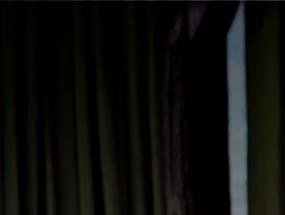

“The more you nurture children’s curiosity and answer their questions, the more they will keep on asking questions”







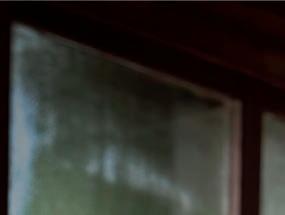

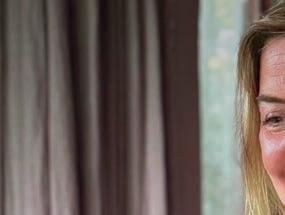
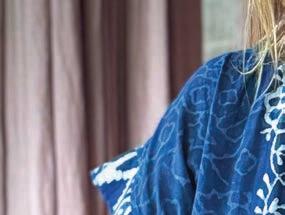




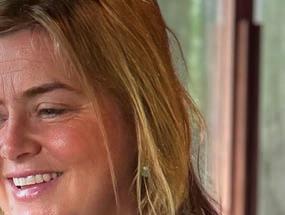




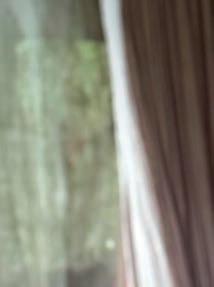
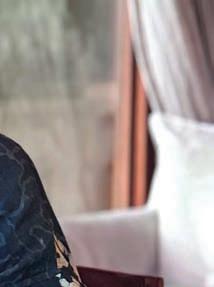



“William Sieghart ponders who wrote the first poem, and Marcus du Sautoy tackles what the biggest number is”


because they are so connected to nature – so they ask about plants and trees, and banyan trees.” Indeed, the banyan is so revered in Bali that a whole raft of fascinating questions came in about that one stately tree.
Similar localism is reflected in other queries she gets from around the world – for instance, children in coastal communities often ask about oceans and waves. But some things are universal, and Molly Oldfield is well used to deeply out-there questions that no one adult can provide a satisfying answer to. “Like who invented the world, and who is god, and who was the first mummy if my mummy had a mummy?” she says. That said, Everything Under the Sun: All Around the World tackles testing themes head on. The book begins with ‘Where’s the happiest place in the world?’ and ends with ‘What is the meaning of life?’. In between, there are scientific and cosmic headscratchers and – as with the podcast – she has called in distinguished help. For instance, Sophie Dahl talks about how magic is made, William Sieghart ponders who wrote the first ever poem, Grayson Perry discusses why clay gets hard and Marcus du Sautoy tackles, rather deftly, what the biggest number is. Expert and insider voices add weight. Even so, Molly Oldfield has made the sensible decision to issue a gentle disclaimer at the front explaining how all answers are the





knowledge we have right now, and facts can change. She thinks this clarifying statement is important. And, of course, it’s always good to remind children that one day they may uncover the truth no one before them ever spotted. “The more you nurture children’s curiosity and answer their questions, the more they will keep on asking,” she says.
She was a deeply curious child. “I was one of those kids who kept on asking questions. I remember getting an edition of the Encyclopaedia Britannica as a child and being so excited – and that so limited the amount of knowledge you could get compared to now.”
Her own boys have caught the same curiosity bug and both have a question included in this book. “My two-year-old asked about the biggest digger in the world. My five-year-old is really into chess – he plays this app on my phone ChessKid, and there’s this coach on there called FunMasterMike, and so I asked him to answer my son’s question. My son was so delighted he took FunMasterMike’s answer to his school chess club.”
a shared information exchange endeavour. “I think one thing they really like is hearing other children’s voices on the podcast,” she says. And they also love using their expertise, even if it’s sometimes at the expense of adults in the room. “At Cheltenham Literary Festival I was asked what sound gira es make and this little kid at the back said, ‘they hum’. And I said, ‘how do you know that?’. And his dad said, ‘because he listens to your podcast’.”
This book has plenty of other nature facts – scatological ones among them, naturally –also complex ideas that will make even the wisest among us pause. How can you store so many things in your mind, and will you ever run out of space? is one. Also, How many ants could you fit in a plane and still take o ? Then there are life’s true mysteries, such as, Why is vanilla ice cream so yummy?
Molly Oldfield is already busy on the next instalment of the Everything Under the Sun book series – it will have more of a bedtime theme. She continues to wake up to those delightful messages from her podcast listeners. And, with such a brilliant band of curious listeners across the world, there’s never going to be a shortage of great questions that need her earnest attention.

Molly Oldfield believes children have always loved being the one in possession of a really obscure fact, but her podcast has also brought them together, wherever they may live, in


Everything Under the Sun: All Around the World is published by Ladybird Books, £25. Children can submit questions for Molly Oldfield’s podcast and books mollyoldfield.co.uk
asked about the biggest digger in the chess – he plays this app on my phone called FunMasterMike, and so I asked him so delighted he took FunMasterMike’s Molly Oldfield believes children at


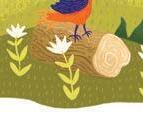





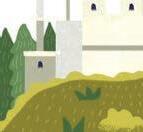



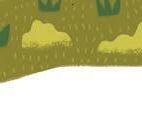


Nat Harrison’s debut novel, The Girl who Raced the World, delivers wild adventures, a heroine with guts and a thrilling global journey in a very different time
LIBBY NORMAN

Taking on the classics is always a challenge, but Nat Harrison’s reimagining of Around the World in Eighty Days is brilliantly original. It delivers the pioneering spirit of Jules Verne’s adventure in a fresh way for a younger audience – and with a central character, Maggie, that we can get behind.
This is a book that’s been a long time in the making – it started with the author’s own peripatetic childhood. Nat Harrison has the distinction of a passport giving place of birth as Ascension Island, and not a lot of people can claim that. “Not many people know where it is,” she adds. “The way I explain it is if you’re looking at a map on the wall it’s usually under a drawing pin or a staple – right there between Africa and Brazil.” Her family came back to the UK when she was six months old, so she has no memories of her exotic start. “For the next ten years I didn’t really leave the south-west of England. All of my adventures were had at my grandparents’, either in Somerset or Dorset.”
Then came a seismic shift. “All of a sudden we packed up all of our belongings and moved halfway round the world to Hong Kong. It was the first time I’d been on a plane so a lot of the excitement and the wonder that
you see from Maggie when she gets on the road is definitely from my own memories of stepping off the plane into a strange, amazing, terrifying, brilliant new world.”
Nat Harrison attended the British Forces school St George’s for three formative years that she remembers as magical. “I had friends who were American, Malay, Burmese, Chinese, Thai – and that just gives you such an interesting perspective when you have so many kids from so many different backgrounds altogether in the same classroom.”
Coming back to the West Country in 1989 was a culture shock. “I was miserably homesick for Hong Kong.” she says. “For me, Hong Kong was home. Three years doesn’t sound a lot to us, but to a ten-yearold it’s a lifetime. I knew Hong Kong – it was my love. I didn’t want to leave.”
The traveller’s spirit stuck, and Nat Harrison ended up in Silicon Valley, working for Motorola, Apple and then, for four-anda-half years, a then smallish startup called Airbnb. Living in California for a decade was exciting, but also full-on. Although she wanted to write, time was against her. “It’s quite hard to be creative when you’re getting up at 4am,” she says. “I tried and tried and tried. I did courses at Stanford and short courses.”
So, when Nat Harrison and her husband planned their return to the UK, she decided
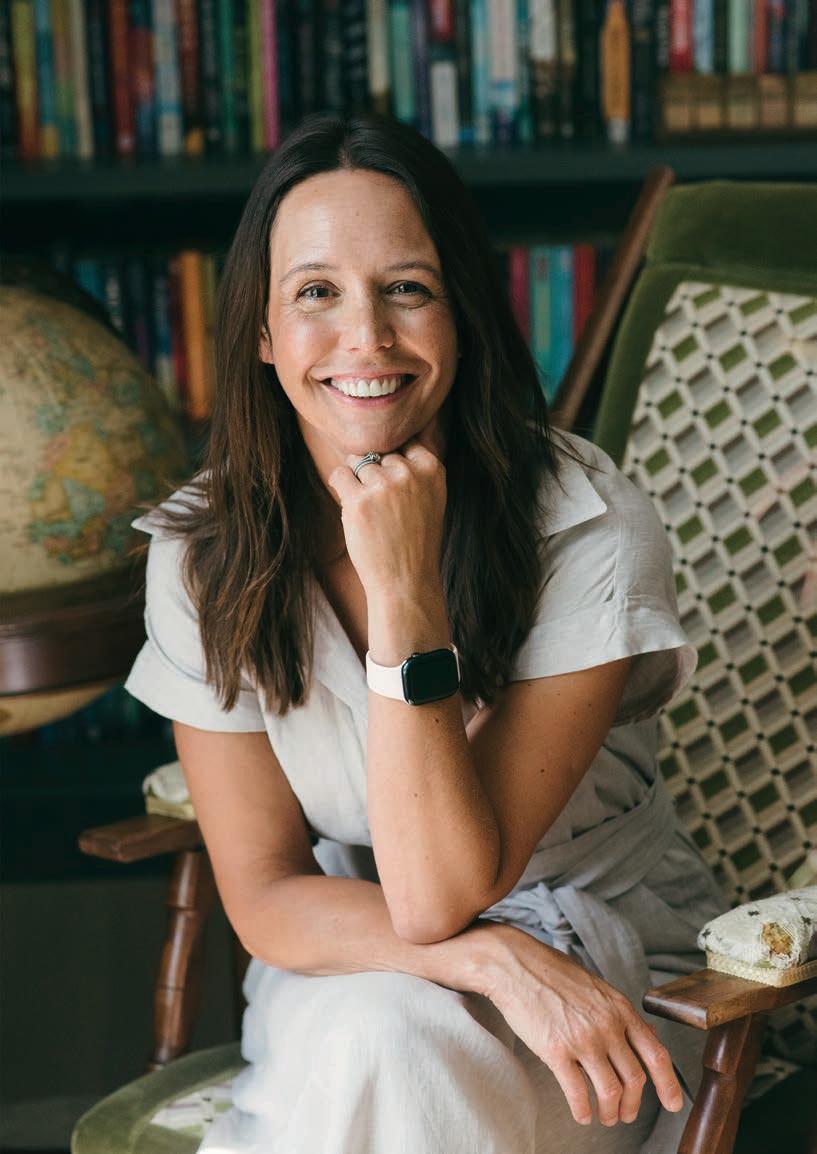
Michael Palin. She and her family sat down to watch the TV one evening soon after their return from Hong Kong, and something magical happened. “Suddenly Hong Kong came into our living room. As a family, we were mesmerised – it took us all back instantly. We probably warped that VHS tape because we watched it so many times.”
“The wonder that you see from Maggie when she gets on the road is definitely from my own memories of stepping off the plane into a strange new world”
lady adventurer Valentine – more than a match for any man, Phileas Fogg included. Time and place are beautifully drawn, and with twists and turns that threaten the journey and their very survival. For young readers used to hopping on a plane, there’s this wonderful unravelling – a sense of how vast and diverse the world is when traversed by land and sea. And, of course, there’s the transport itself. “The world has changed so much in the 150 years since Jules Verne wrote the original. But so many things have stayed the same. There’s still this incredible appeal and nostalgia for steamships and steam trains and ice sleds and wooden dhows.”
The fact that Maggie helps Phileas Fogg win the bet that saves his fortune – and finds her true home – makes this a hugely satisfying read. And, like all the best adventures, there’s an ending hinting that this is not where her story stops. I’ll wager that readers of The Girl who Raced the World will be hoping for more thrilling journeys for our gutsy heroine and her travelling companions.
The Girl who Raced the World, by Nat Harrison, is published by Piccadilly Press (£12.99). it was now or never. She enrolled on an Arvon Foundation short course and, with the encouragement of two of its author-tutors, Steve Voake and Liz Flanagan, another journey began. She had reckoned a week at Arvon would be the decider, and it was. Steve Voake suggested she consider applying for the MA in Creative Writing at Bath Spa. “Moving around between schools, I didn’t learn grammar. I always had a bugbear about having big gaps in my English,” she says. “So I didn’t think I had what it took.” She was wrong. “I got in, passed with a Distinction – which is amazing – and this is the book that got started on the course. So I am forever grateful to Arvon and Steve for giving me the push I needed.”
The initial sketch of The Girl who Raced the World happened in her very first class at Bath. But the idea had been spinning around for years – inspired not by Jules Verne but Around the World in 80 Days with
After watching the TV programme, Nat Harrison read Jules Verne. It could never be as visually immersive as Michael Palin’s journey, but The Girl who Raced the World honours the literary original. Phileas Fogg and Passepartout are both there, as is Inspector Fix, but young Maggie (Magnolia) Appleton is the undisputed star. Orphaned and a runaway from the workhouse, she tries to deliver a letter to Passepartout’s London address from her beloved Maman. This sets in motion her role in that great dash around the globet. New characters add to the fun, notably thrilling




From exploring Iron Age homes to the horrors of the Three Rs or life in a post-war prefab, living history museums are a walk back through time

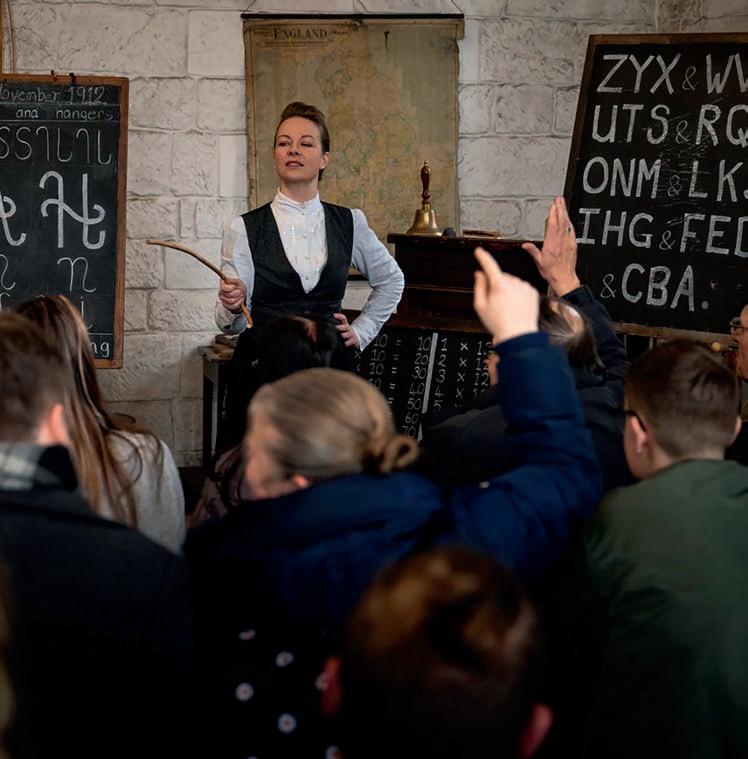
Living history museums bring the past to vivid life, making them a great immersion into the good old (and bad old) days for children and teenagers alike. But they are equally engaging for older visitors, so superb for a multi-generational day out. All our picks are located on large sites, giving space and freedom to break with history to burn off energy. This is also history at its most engaging. From interpretations of ancient rural life to the privations of a Victorian school house, time-honoured craft skills and the hard graft of a mine or factory, it's all designed to fire up ideas and conversations. Here's our pick of living history museums around the country.
Chiltern Open Air Museum has the distinction of featuring in episodes of both Horrible Histories and Downton Abbey, and it exists to tell the story of the Chiltern Hills and a vanished way of life. The 45-acre site is home to a wonderful assortment of humble and ordinary buildings, most of which were at risk of demolition or destruction. As funds are raised, more buildings are added. Current highlights include a reconstructed
Iron Age House, a prefab from Amersham and Henton Mission, a delightful and diminutive chapel rescued from an Oxfordshire village. There's also a traditional working farm with historic barns, stores and other farm buildings – plus child pleasing farm animals. You'll find a wonderful 'Dig for Victory' allotment located close to Nissen Huts from both World Wars, and plenty of other lovingly maintained period-style gardens. Alongside the pastoral is a rescued High Wycombe chair factory, highlighting the town's long tradition of furniture making.
The museum is largely volunteer run and hosts costumed days when interpreters tell stories about the history of the buildings and the people. There's also a programme of rural craft demonstrations, from flint knapping and straw plaiting to spoon carving and blacksmithing. COAM is popular with school groups and it's extremely family friendly, as well as being accessible for people with disabilities and SEN. There's a bonus in the space here – the site includes lovely trails and woodland walks.
• Entry: £14; under 18, £11; under 4, free
• Good to know: Typically open March-October and during school holidays, plus special festive events. Check ahead for opening times. coam.org.uk

One of the most celebrated of its type, justifiably, and recent recipient of a Visit England award, Black Country Living Museum is so atmospheric it has played a memorable role as a backdrop in Peaky Blinders. It inhabits a 29-acre former industrial site in Dudley and focuses on an area that was once the nation's industrial heartland.
Exhibits span 300 years of the region's past, with a strong focus on the period from 1850-1950. It has been an extraordinary labour of love gathering some of these buildings from the local area and rebuilding or recreating them. Visitors are the beneficiaries, as it provides opportunities to explore a whole host of different settings – all enlivened by the characters who bring different time periods to life.
Highlights for younger children include the traditional fairground, the chance to hop on and off (for free) the red vintage double decker that travels round the site, try on vintage military clothing at Langer's Army & Navy Stores, play old-fashioned street games (guidance provided) and participate in an Edwardian school lesson to get a dose of the 'three Rs'.
All ages will enjoy the drift mine, which tells the story of life as an 1850s coal miner. There's also an exceptional collection of industrial heritage – from a recreation of the 1712 Newcomen Engine, a colliery and brickworks to an aluminium foundry. The Canalside Village is a grimy step back in time, while the 1950s Industrial Quarter shows traditional trades at work. There are plenty of cafés and snack stops, including a chippie and a traditional sweet shop and bakery. The museum is a whole-day immersion if you choose, so check out the various trails and pick your must-see spots.
• Entry: £26.95; under 16, £14.95; under 3, free
• Good to know: Special events throughout the year, including half-term and holidays, plus Diwali, Peaky Blinders and Halloween nights. bclm.com
This West Sussex museum was founded thanks, in large part, to the farsightedness of Dulwich College-educated Roy Armstrong MBE. The idea gained momentum in the late 1960s, at a time when many of the area's historic timberframed buildings were being razed to make way for developments. The original seven buildings on site when it opened included a Tudor Kitchen from Sundridge, Kent, a granary from Littlehampton, a treadwheel house from Hampshire and a toll house from West Sussex.
Today, the 40-acre site is home to an impressive selection of homes down the

ages, as well as craft, trade and farm buildings. Public buildings feature, too, ranging from a West Wittering poor school to Titchfield's handsome red brick market hall. Looking at them today, it's hard to imagine how planning authorities let some of these treasures go.
But Weald & Downland is not set in aspic, and its impressive Downland Gridshell


Building (unique in the UK) houses a conservation workshop and artefacts collection, and with free daily tours each afternoon. The Gateway Project, completed in 2017, houses the visitor centre, cafe and community and education spaces.
For children, there are lots of fun activities, including traditional games in Hambrook Barn, cooking demos in the Tudor kitchen and the chance to see a watermill in operation. Costumed volunteer interpreters bring the settings to life, and traditional livestock – including heavy horses – represent pre-mechanised farming. There's a woodland trail and the opportunity to see rural land management practices, such as charcoal burning and a sawpit, in action.
• Entry: £18.75; under 18, £9.75; under 4, free
• Good to know: Special events throughout the year, including craft markets, tree dressing and summer open-air theatre. wealddown.co.uk
Billed as The Living Museum of the North, Beamish recently won the Art Fund Museum of the Year 2025 prize. It has a loyal fan base, welcoming its millionth visitor as
far back as 1978, and offers an immersion into daily life in the North East through different time zones, beginning in 1820s Pockerley and ending with a 1950s town. The site is vast, inhabiting a beautiful 350-acre basin-shaped river valley in County Durham.
There's an eclectic mix of things to see, but highlights include the 1900s pit village and colliery, complete with the last surviving example of the winding engines once common in the area. There's the Edwardian Rowley Railway Station and a wonderful set of vintage trams and buses visitors can use to get around the site.
The most recent additions to Beamish include a 1950s cinema (formerly the Sunderland Grand), where you can watch period newsreels, films and adverts and take behind-the-scenes tours of the projection room. Digital natives can have their eyes opened in the 1950s electrical shop, with record shop upstairs, and there's also a recreation of a 1950s toy shop – all three additions are part of the Remaking Beamish project supported by The National Lottery Heritage Fund.
• Entry: £33; under 16, £20; under 5, free.
Unlimited ticket, valid one year. • Good to know: Lots of events throughout the year, including regular music hall, folk and skiffle music. On-site accommodation available at two bijou selfcatering cottages. beamish.org.uk
This Cardiff gem considers itself an open-air museum as history interpreters are only provided during special events. Nonetheless, it's a wonderful walk back through time to see everyday life in Wales through its vernacular architecture.
There are some 40 buildings gathered in the grounds of the Grade I-listed St Fagans Castle on a 100-acre site that opened in the late 1940s. It was modelled on Scandinavian folk museum Skansen, but while that had transported mostly wooden-framed buildings, Wales had a heftier challenge moving and rebuilding these heirlooms.
Highlights including the imposing Oakdale Workmen's Institute, moved here stone by stone from Caerphilly. You'll also see Cardiff's Vulcan Hotel, brought here and lovingly reconstructed after a long public

campaign to save it from demolition. At the other end of the scale, there's an ingenious urinal that once stood in Llandrindod Railway Station and a beehive-shaped pigsty from a Glamorgan farm.
There are delightful farmhouses, including a fine 17th-century thatched design from a village near Swansea. Industry is represented in a number of period pieces, including reconstructed woollen and corn mills, a pottery and kiln, blacksmith and saddler's workshop. Children will also enjoy the reconstructed Iron Age roundhouses from Bryn Eryr, Anglesey – especially when they know that local schoolchildren were among the volunteers who helped with the impressive Lottery-funded building project.
• Entry: Free, with separate charge for some exhibitions.
• Good to know: A full activities programme for all ages, including regular, and wildly popular, ghost tours. museum.wales/stfagans
Recreating life in a coalfield community in 1900, Blists Hill Victorian Town is part of the Ironbridge complex in Shropshire. One of the joys for children is that it recreates a quite specific moment in time, telling a story of life for ordinary families in a hardworking community during a high point of industrial Britain.
Blists Hill inhabits a site formerly used for workers at the mines, foundries and brickworks. The winding engine and pit wheel are original, and the canal and Hay Inclined Plane are key features of the original site, but many other buildings have been reconstructed here or have authentic
period interiors – some were rehomed here as Telford new town was being developed.
Immersion is the ticket here – children can even change money in the bank branch for tokens representing pre-decimal shillings and pence. They can watch printing presses, candle dipping machinery and steam engines in action, as well as dressing up like a proper Victorian to have a portrait photograph taken.
Traditional shops in Quarry Bank and the newer development on Canal Street (modelled on historic buildings around Telford) include a bakery, chemist and sweetshop, plus there's a fairground with gallopers and lots of wilder and woodland
areas to explore to the north of the site. Interesting period buildings located away from the main town include a squatter cottage and a tin tabernacle (prefabricated church), both relocated from the area. There's also a toll house designed by Thomas Telford himself that used to sit on the Holyhead Road in Shelton, Shrewsbury.
• Entry: £38; student, £22; under 5, free, Annual pass, all Ironbridge Trust museums.
• Good to know: Family tickets available. Workshops and special events take place throughout the year. ironbridge.org.uk
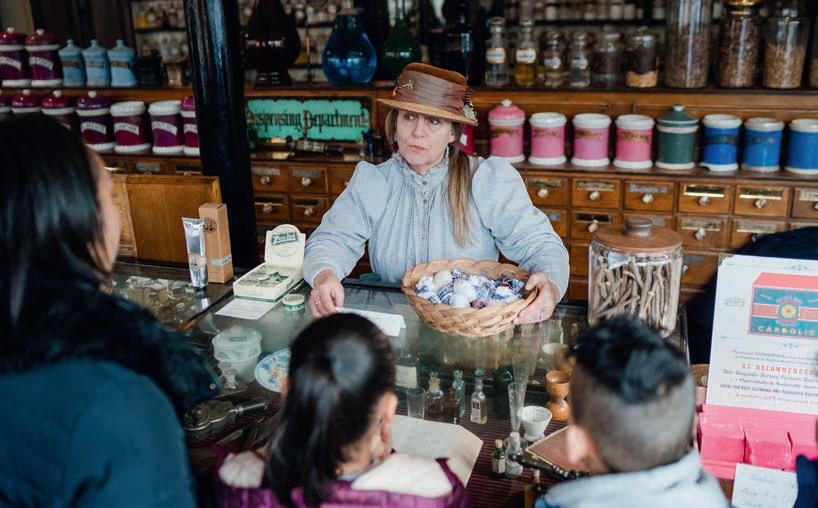
1,341
Offers to Ivy League universities

The world’s leading university admissions consultancy
382
Offers to Oxford & Cambridge
7,400
Offers to the US Top 50 universities

3,500
Offers to the UK Top 10 universities


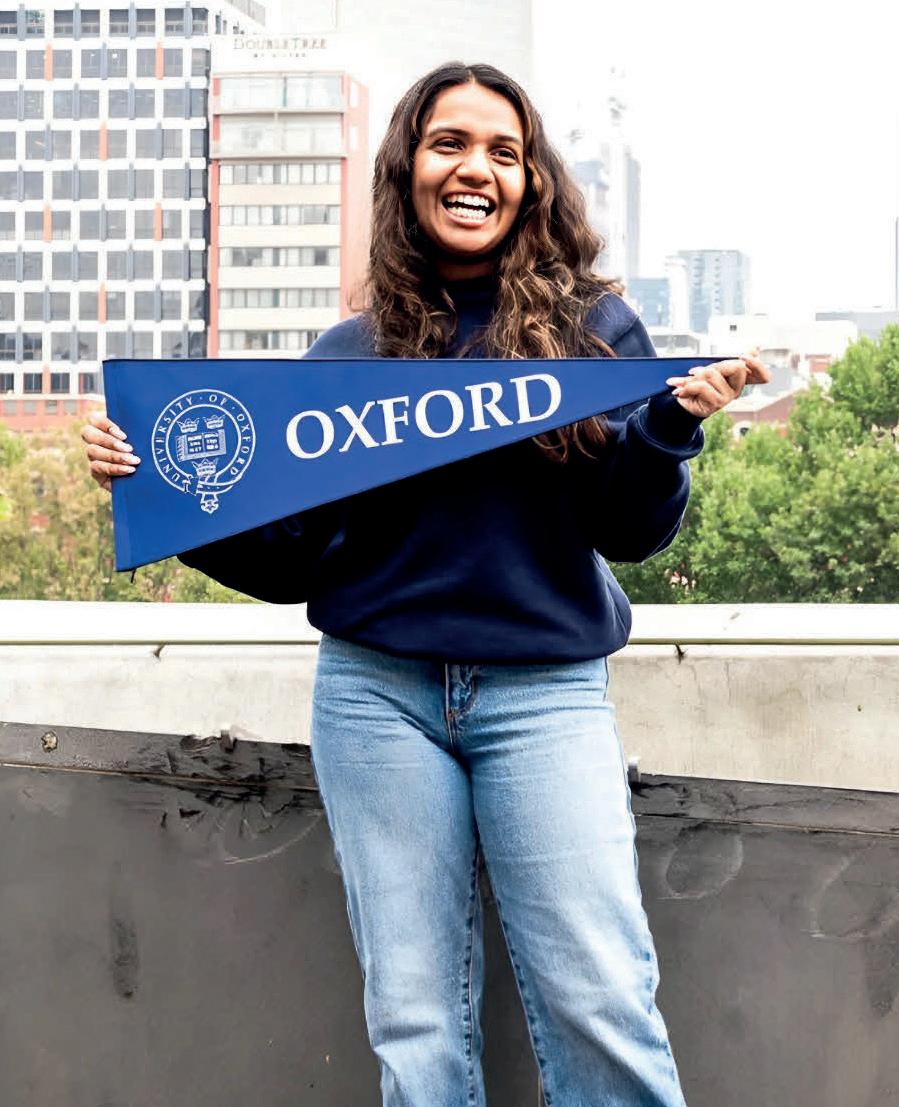
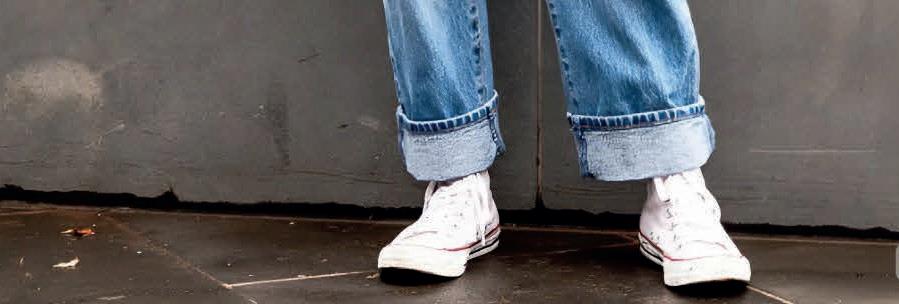
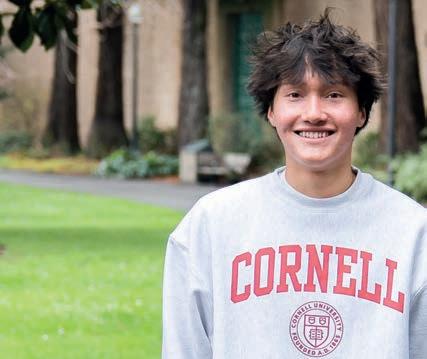




The Downton Abbey star on convent school life in Hampshire and discovering her love for acting watching old black and white films
Where did you go to school and when?
I went to Yateley Hall in Hampshire and then moved on to Farnborough Hill, a convent school for girls.
What were your schools like?
I never really enjoyed school. In primary I got tonsillitis every two weeks so I could stay at home with my mum, until they whipped my tonsils out. Watching afternoon films with her made me want to become an actor. Secondary school was probably a lot better than I thought it was at the time. I don’t think I was designed to sit and be quiet, and I was sent to detention a lot – where I had to practise sitting and being quiet. My gorgeous, health conscious, Spanish mum made me wear sensible shoes while everyone else was wearing winkle pickers, something I have never really recovered from. I have the fashion sense of a peanut. I was an appalling mix of someone who wanted to do well but was a bit of a donkey. Luckily, I fell in with the right crowd, including my friend Paula, who became a special needs teacher. Before our O levels, when we hung out, she would force me to revise. I still remember opening the little brown envelope with the typed-out grades. I had to read them twice because we thought I must have read them out wrong. Even the dog couldn’t believe it. We all barked.
Did you love school, or hate it?
I loved my friends and some of the stuff we

got up to. I really enjoyed sport and drama, but I always felt a bit clueless and kind of unsettled. But when I look back on it, maybe I didn’t do too badly and we were all probably feeling the same.
What were your favourite subjects at school?
I enjoyed biology because I had a great teacher, Dr Day. I also had a great physics teacher, and I always struggled with physics. But she believed in me, which encouraged me to believe in myself, and then I suddenly started improving. Education was a bit wasted on me. I would be much more interested to learn now. I’m better at sitting still too.
Who were your most memorable teachers and how did they influence you?
Sister Mc Cormack was my favourite teacher. She was tiny, Irish and just lovely. We had great French teachers, Mrs Cooke and Mrs Rimmer. I think I did drama despite my drama teachers, a married couple who seemed to want to steer us all away from acting. I also remember there was a very tall history teacher with very broad shoulders called Mr Diskin. He was from the States and I don’t know how he found himself at a girls’ school in Hampshire. I think I made his life a misery in a kind of exuberant, immature, teenage kind of way. If by any chance you’re reading this Mr Diskin, I’m really sorry. I nearly considered a career in sciences, because of my physics and biology teachers. I think it’s all about belief, isn’t it? You really treasure the teachers who believe in you, and it’s taken me a long time, like many people and probably many actors, to get a grip on that belief in myself. An acceptance of self is key to living a good and happy life.
Where was your favourite place at school and what did you do there?
Farnborough Hill was an old building. Emperor Napoleon III’s wife, the Empress Eugénie, lived there at one point. I liked all the old bits of the school that you were forbidden to go into. In Sixth Form, some of us were invited into this club to discuss politics by an ancient teacher called Mrs Brister, and we would get to go up and down the forbidden staircase. In hindsight it was horribly exclusive, and for some reason which I still don’t get, I received an invite.
“BEING AT A GIRLS’ SCHOOL MEANT WE NEVER THOUGHT THAT BEING FEMALE SHOULD LIMIT OUR AGENCY IN THE WORLD”
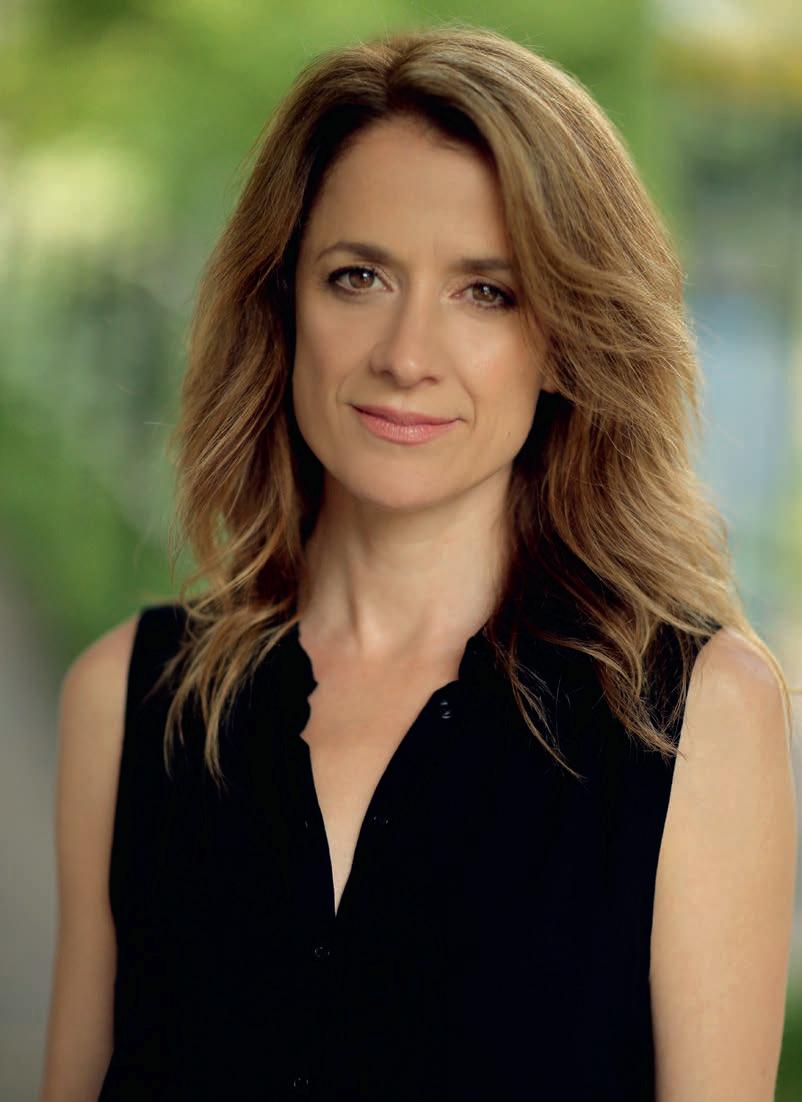
What beliefs did your time at school give you?
I went to a Catholic school run by nuns, so that was obviously a huge thing. Everything was religious, but I was already soaked in Catholicism – my dad was from Irish Catholic stock and my mum was Spanish Catholic. Their first dates involved going to Mass together. But being at a girls’ school meant we never thought that being female should limit our agency in the world: we didn’t question our right to live independent, fulfilling lives.
What was your proudest moment?
Probably singing a solo in the Christmas concert. I had only just joined and my teacher challenged me. I was so nervous, she told me to imagine everyone naked or as cabbages. I went for the latter. I managed the high notes and still remember the words to ‘Silent Night’ in German.
What was the most trouble you ever got into at school?
Once in my whole school life I broke the
rules and left at lunchtime to meet some boys. We were caught on the way back in by Mrs Berry, our formidable PE teacher. She stopped me and asked if we’d left the school grounds. She knew I found it impossible to lie, so I admitted it and got us all detention. I’ve had to get better at lying.
Were you ever ‘too cool for school’?
I think you know the answer to that one. That’s a No. Never. I think everyone’s just trying to survive school, and we all find our way of dealing with it. I know a fair few who didn’t. Bless them.
What is your most vivid memory of school days looking back?
There are two. My beautiful mum paid for extra tennis lessons because she loved tennis, but sadly, despite five years of traipsing down to the tennis courts after school, I still couldn’t hit a ball over the net. Sorry mum. The other was in Sixth Form, when we got to work on the school musical. Me and
my friend Jessica Higgs co-directed Follow The Star, a musical version of the Nativity. She was tall and got to play God, I was short and loud and got Herod. It was my one and only time directing and was great fun. I loved being hissed at and booed. The best song was Mary singing, ‘I’ve Always Wanted a Baby’. Not sure the nuns loved that one.
When and how did your love of acting first begin?
Watching black and white movies with my mum. She would get up early, do loads of housework and then sit and have a siesta, in the afternoon watching a movie, and I would watch with her, only I’d stay awake. They were often Westerns because they were on repeat and mum loved a Western. Watching child stars like Deanna Durbin and Shirley Temple made me want to crawl inside the telly and from that moment I wanted to be on the other side of the screen. It took me ages after that to work out how you do it because I didn’t come from any kind of performing family background, but I was hooked from that point onwards. I was the youngest of three and I was encouraged to perform a bit to get attention and make my Spanish aunties laugh.
What other key influences and passions shaped you growing up?
My Spanish side has really shaped me. My mother’s older sister was a painter and a flamenco dancer. My mum and her were really close, with only a year between them. She was incredibly passionate and was a huge influence. She also painted me – I was her muse for a while – and I’ve got lots of portraits of me as a very young child. She taught me to dance sevillanas one summer. Every moment that she was in my life was a blessing. I used to call her my soul mother. Mum and dad were both great fun and very loving. I miss them terribly, actually. Both were strong and determined. He was an athlete and an adventurer with an indomitable lust for life. I feel there’s a lot of backbone in my family.
What projects and challenges are coming up next for you?
It’s a difficult time in the industry, for all of us, and the challenge as an actor is how to hold yourself through periods of change – whether it’s in the industry, in the world, or yourself. With Downton out now, there are a few different roles coming up, which is a really lucky position to be in.
How would you sum up your school days in three words? Kind of sweet.
* Downton Abbey: The Grand Finale is in cinemas now.









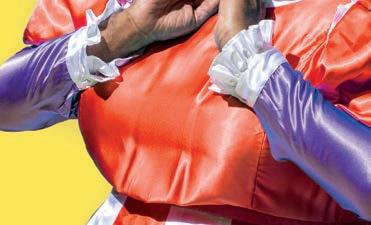








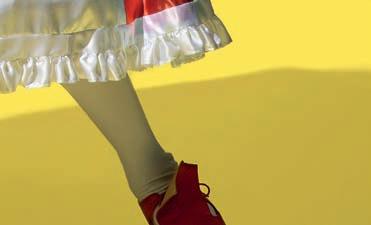






Corny jokes, fairytale favourites and a wall of noise from the audience – pantomime plays for belly laughs, and don't say it isn't drama

LIBBY NORMAN


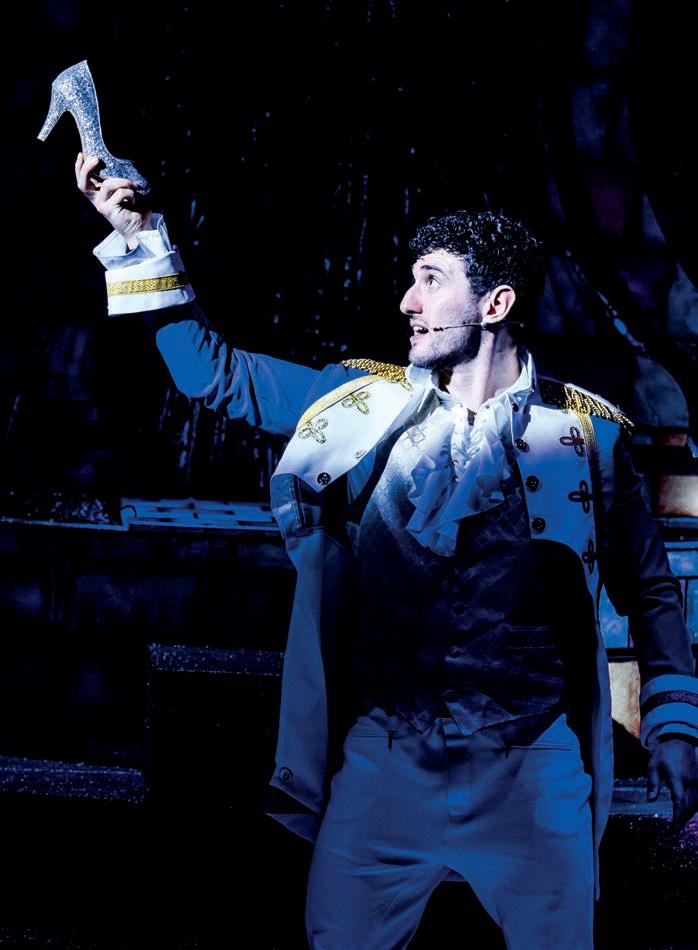
Up and down the country, wigs are being sculpted, giant sateen skirts stitched, crowns and wands polished, while scripts are written and refi ned. Panto season is approaching – mainstay for regional theatres, still a hot ticket in London, and treasured by audiences who return year after year.
But try and explain pantomime to anyone not familiar with its traditions and you'll struggle. The cross-dressing, the jokes on repeat, the line-up of fairytale characters mixing old plots with topical jokes. I mention this to Clive Rowe, Olivier Award winner, and a panto legend (greatest of all modern dames, many say). I suggest that panto is a bit weird. He thinks weird is a strong word – the wrong word.
"It may be a little bit peculiar to the UK," he concedes. He's right there, for panto is a largely homegrown tradition. The roots, most histories tell you, are in Italy's commedia dell'arte, although you don't have to be a theatre historian to spot echoes in Shakespeare's comedies – or go further back to the Lord of Misrule, mummers and even mystery plays. Clive
“It's as difficult to do pantomime as it is doing other forms of theatre – and if people say it isn't, they're not doing it properly”
ABOVE
Rowe sees that historical mash-up, but says panto has its own distinct identity.
"The vital components are comedy, good music, good dancing – entertainment for families, from the youngest to the oldest."

Rowe is returning to Hackney Empire – one of the capital's biggest hitters in panto productions. A familiar lead character there over many years, this time he's in the director's chair for Cinderella, featuring well-known talent and up-and-comers supported by the theatre's creative development programmes. It's already selling out.
Andrew Pollard is another celebrated pantomime dame, and also an in-demand writer and director – hugely experienced in panto creation. He presided over the well-loved pantomime at Greenwich Theatre for 15 years. Now he's back for his second year as writer and director of the King's Head Theatre panto up in Islington, after his smash hit last year. Second time around, he's delivering Jack and the Beanstalk. Once he's steered that to the stage, he will don his wig and head north to be Dame Madeline Marzipan in
the Victoria Theatre, Halifax production of Beauty and the Beast. For that show, he has just a week's rehearsal time.
Like Clive Rowe, he is a huge believer in panto power – its ability to entertain everyone. "I think it's a combination of the fairy stories, which kind of live in our DNA," he says. "But the appeal of the panto is that we do this in its most simplistic form." In other words, with pantomime you know where you are – goodies meet baddies, and good always overcomes evil.
"Not only are the stories in our DNA, but nowadays panto is too. Grandparents will take their grandchildren or parents will take their children because they were taken to panto, too. For some people it's a Christmas ritual." Such was the importance of that ritual at Greenwich that some families returned each year, not only on the same date but also booking the same seats. "By the time I'd fi nished there,
UK BOARDING SCHOOL OF THE YEAR 2025

TOP
CO-EDUCATIONAL SCHOOL IN THE UK
UK SCHOOL OF THE YEAR FOR A-LEVELS 2025
GIRLS AND BOYS AGED 3 TO 18 | JOIN US AT AN OPEN MORNING
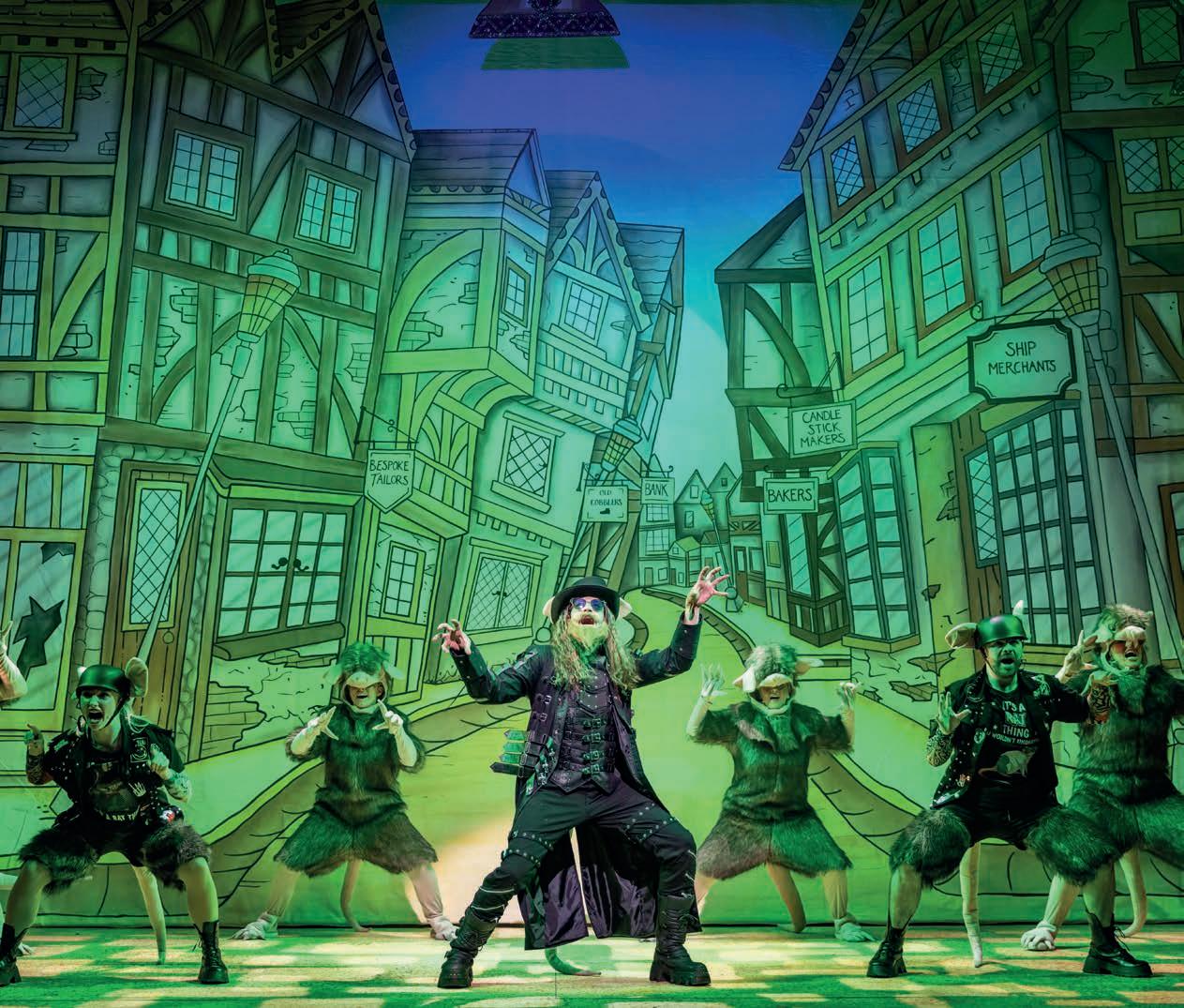
those children were adults. And it was a great pressure to be better every year."
Clive Rowe also feels that responsibility to exceed expectations. He says it's all about staying true to the storyline and ensuring everyone in that audience gets included. "I do pantomimes that appeal to the whole family, to all the generations, so the kids have as much fun as the adults." He and his team of creatives, including writer Will Brenton, refine and sharpen constantly during the intensive rehearsal period. "When you are in the rehearsal room you just try and make it as funny as possible, have as much fun as you possibly can," he says. "The best comedy routines are rehearsed again and again and again. Great comedy is well rehearsed."
Most of the time, Will Brenton gets the jokes spot on, adds Rowe, but you can never be sure until show time. "I don't know what the formula is, I just know that sometimes they make me laugh out loud, and sometimes I know that even if I don't get them the kids will get them or the adults will get them," he says. "The
audience is the last 25% – and the cast work off the audience."
That is the thing about panto – it is so interactive and so dependent on the night (or day, for it's a punishing schedule) that cast and creatives always think on their feet and bounce off the audience response. "It's a skill, and it's as difficult to do pantomime as it is doing other forms of theatre," says Clive Rowe. "And if people say it isn't, they're not doing it properly." Events can change dynamics, even scripts. Andrew Pollard says a new earworm hit song that comes out shortly before the show may get swapped in to please younger members of the audience. Scripts get adapted when that clever word play you spent ages working on doesn't get close to the same roar of laughter as the throwaway line about, say, an errant politician. "That's always the joy of panto," he adds. "It is live as well, and unlike being in a straight play you can play on it if something goes wrong. You can share it with the audience. I love that."



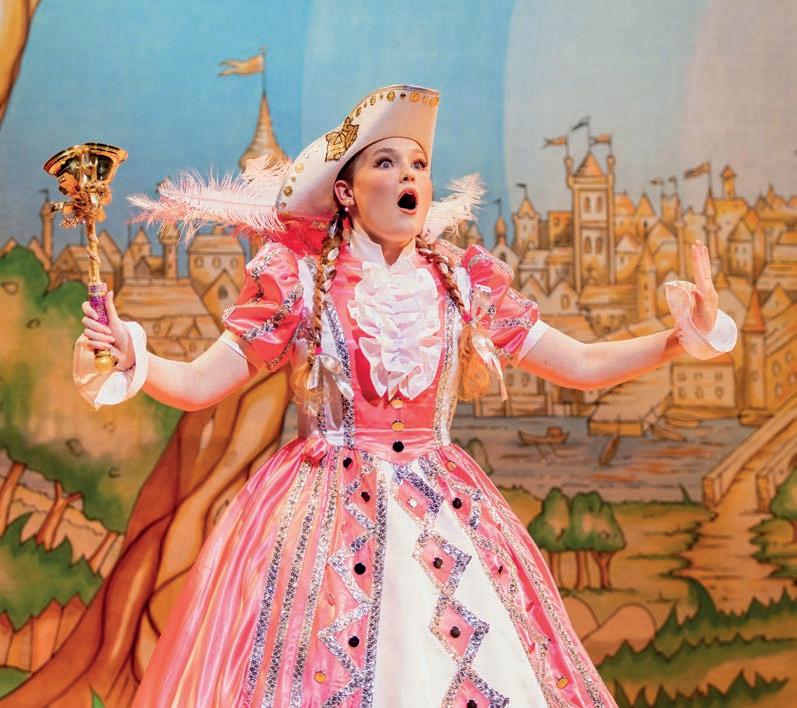
“You get letters if you don't put in terrible, corny old jokes – like the 'behind you' routine”
Audiences have strong expectations around familiarity, though. Over all those years writing the panto for Greenwich Theatre, Andrew Pollard used to try and lose some classic lines, thinking new audiences might be tired of the old faithfuls. "But you get letters if you don't put in terrible, corny old jokes. Like the 'behind you' routine – at Greenwich I'd try and do it once every other year and people would say, 'oh, where was the ghost gag?'."
Familiar stories, old jokes and lavish costumes are woven through the DNA, but pantomime must also have children in the mix. They are the best audience. Andrew Pollard recalls, still with glee, a matinee where a particularly fierce teacher stood up, just before curtain-up, and ordered her excited class to: 'sit down, be quiet and say nothing'. This was too much. "When I came on as Dame I said: 'So what your teacher just said, ignore all that – I want you to shout out and have a good time'," he says. "That's what the kids want. They can let off steam. They participate in the telling of the story."
Clive Rowe agrees that nothing beats the atmosphere of stepping out in front of a very young crowd. "It's fantastic, it's absolutely wonderful. It's like a wall of sound." So, whatever we adults think pantomime is, children definitely get it. Long may that wall of sound continue.
Cinderella , directed by Clive Rowe, is at Hackney Empire from 22 November-31 December. From £10. hackneyempire.co.uk
Jack and the Beanstalk , written and directed by Andrew Pollard, is at King's Head Theatre from 23 November-4 January. From £10. kingsheadtheatre.com

Ages 4 -18
Coastal Location
Fully Boarding
GCSE & A level
1:5 staff to students



of parents agree that the Gordonstoun curriculum will equip their child for life after school




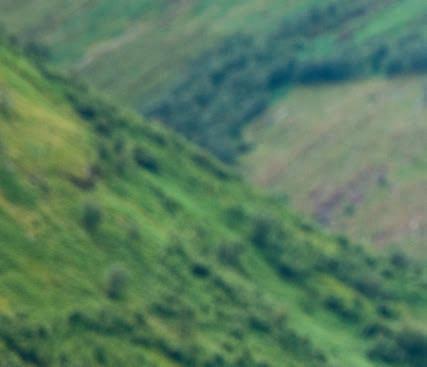

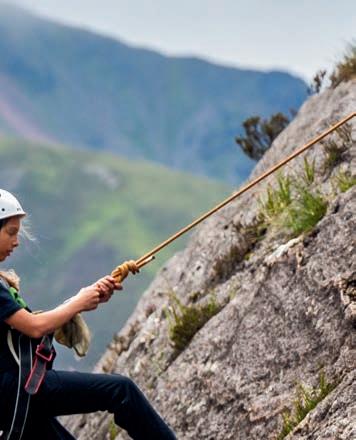






From a West End spectacular to family pantos, six festive shows perfect for holiday season
ROBIN HOOD
New Wimbledon Theatre
Ashley Banjo & Diversity lead the cast as Robin Hood and his band of Merry Men in this annual crowd-pleaser created by Crossroads Pantomimes, so that guarantees cool dance moves. Panto regular Steve Arnott promises to be a wonderfully wicked Sheriff of Nottingham, while Lauren Hampton (The Great Gatsby) plays Maid Marion and Amelia Walker takes on the role of Spirit of Sherwood. It’s a whole-family show with plenty of magic and comedy.
Dates: 6 December-4 January
Prices: from £15 atgtickets.com
The London Palladium
With a cast, led by Catherine Tate,
Julian Clary, Jon Culshaw and Nigel Havers, it is the 10th-anniversary of this starry pantomime at The London Palladium. The show draws in a West End crowd, with lots of group bookings, so expect innuendo aplenty, especially at an evening performance. Tate, a panto first-timer in a seasoned line-up, plays Carabosse, the Wicked Fairy, alongside master of double entendre Julian Clary as King Julian. Big laughs are promised.
Dates: 6 December-11 January
Prices: From £25 lwtheatres.co.uk
Shakespeare’s Globe
One of the most delightful traditional stories comes to Shakespeare’s Globe in the world premiere of this musical directed by the theatre’s Associate Artistic Director
Sean Holmes, and with writing and music by Charlie Josephine and Jim Fortune. There is also wonderful puppetry from Peter O’Rourke. Another treat is attending a family show in the setting of The Globe –adding that extra layer of magic, especially after dark. Associated puppetry and drama workshops are taking place over the festive period to coincide with the show.
Dates: 29 November-4 January
Prices: From £5 shakespearesglobe.com
Stratford East
Classical musician, writer and comedian Vikki Stone is on the creative team at Stratford East this year. Having added clever twists to panto at Lyric Hammersmith and Liverpool Everyman, she knows how to keep the genre fresh. Here, she has joined forces with writer and director Tonderai Munyevu, while music is by Robert Hyman, who has been involved with the Stratford East production for the best part of 30 years. Mama and her golden egg-laying fowl (called Gary) are played by Duane Gooden and Che Walker. Alongside good and bad fairies, there’s a baddie called Tax Man.
Dates: 21 November-3 January
Prices: From £10 stratfordeast.com
Theatre Royal Windsor Windsor’s hugely popular family pantomime returns for its 87th year, and with regular favourites Steven Blakeley, Jeffrey Harmer (Ugly Sisters) and Kevin Cruise (Buttons) on the comedy cast, alongside Michael Praed as Baron Hard-Up. Expect big costumes and the grandest ball in a show that bills itself as the ‘royal pantomime’ – and why not when this year’s story is Cinderella?
Dates: 21 November-11 January
Prices: From £19 theatreroyalwindsor.co.uk
Peacock Theatre, Sadler’s Wells Now in its 28th year, the wonderful stage adaptation of Raymond Briggs’ The Snowman is an introduction to dance for a very young audience – and a delight for all the family. The Birmingham Repertory Theatre production at Sadler’s Wells’ Peacock Theatre is directed by Bill Alexander, with music and lyrics by Howard Blake and choreography by Robert North. With ethereal aerial moments – including for the song ‘Walking in the Air’ – the show also features a live orchestra.
Dates: 22 November-4 January
Prices: From £18 sadlerswells.com

Leave the famous bits of Florida behind and head west to Pensacola for culture, sublime food and fantastic beaches

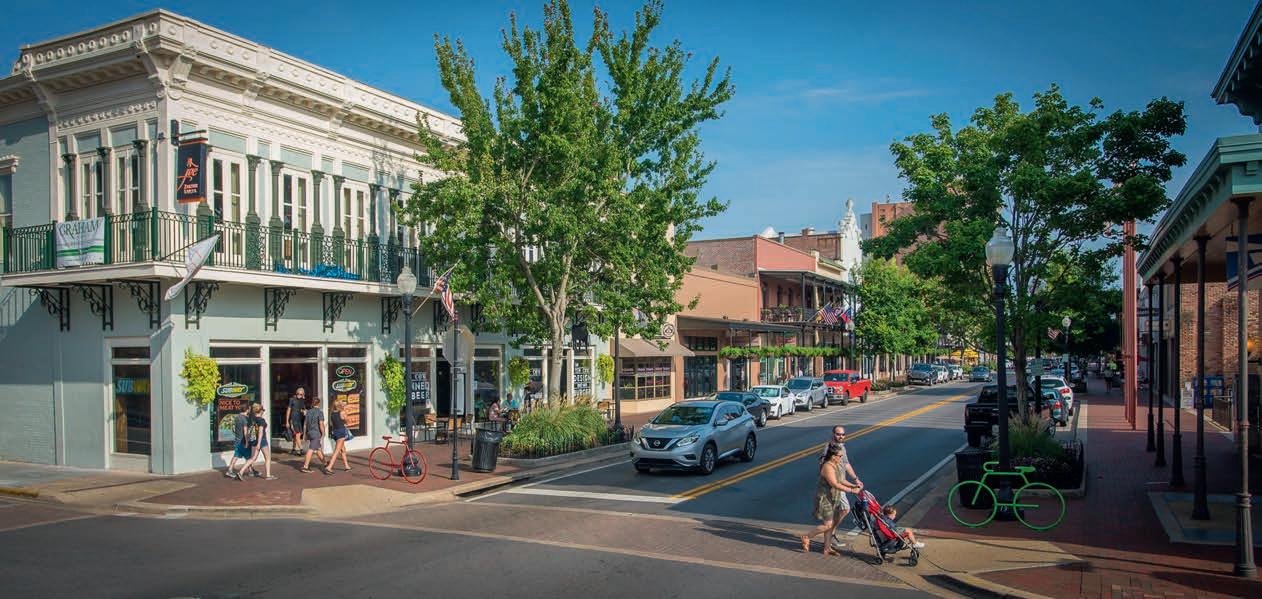
The charming Florida Gulf Coast city of Pensacola boasts a vibrant tapestry woven between sun-kissed shores and historical streets. It’s both the most westerly city in Florida and the first European settlement in the United States – and its past feels everpresent. This is a place with layers, including Spanish, French and Creole, all leaving their own unique imprints.
Here, stately buildings and cobbled lanes whisper tales of old-time settlers and sailors, while colourful galleries, playful pelican sculptures and eclectic shops speak to the city’s flourishing creative spirit. The food scene, too, tells a delicious story.
Glorious Gulf seafood, Southern comfort food and bold international flavours come together on a single plate. And the beaches? They are some of the most breathtaking we have ever laid eyes on.
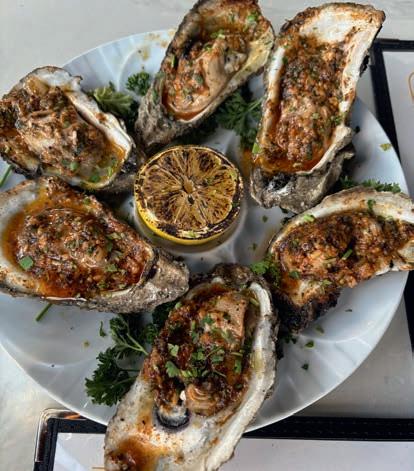
“Winding, scenic trails fringed with trees and swaying grasses lead to untouched beaches”

Our adventure begins, as all the best ones do, by the sea. The moment we arrive at The Pensacola Beach Resort, there’s a gentle exhale. Our room is light and airy, with doors that open out onto a balcony overlooking miles of soft, sugar-white sand and a sea that changes colour with the sun. The blues and greens are so vivid they look brushed on by hand. There’s salt in the air, warmth on our skin, and that rare sense of having nowhere else to be. Not for a while, anyway.
Morning dawns bright and brilliant, and we’re ready to explore. First stop: the Gulf Islands National Seashore, where we
wander through Fort Pickens, a hulking, pre-Civil War fortress once home to Union troops, and later, Apache leader Geronimo. The weight of history hangs thick in the brick walls, and yet just outside, nature is doing its gentle, calming work.
This unspoilt park is full of winding, scenic trails fringed with trees and swaying grasses that lead to untouched beaches. We pause to watch the legendary aerial acrobatic jets, the Blue Angels, cut across the sky in heart-racing, high-speed formation. It’s loud, it’s bold, and it’s pure Pensacola. While we’re talking aviation, the National Naval

Aviation Museum just down the road is one of the largest and most immersive aviation museums in the world and is home to over 150 beautifully restored aircraft.
Pensacola is also the winter training home for American Magic, the US America’s Cup syndicate. So, unsurprisingly, a lot centres around water in this seaside heaven. There are plenty of opportunities to swim in the warmth of the Gulf, snorkel around the reefs or go paddleboarding. We take a slower route, setting sail with Condor Sailing Adventures, an intimate experience on board a rare racing trimaran with room for just six guests. As we glide across the bay enveloped in its tranquility, dolphins play around us and time seems to stand still.
It’s the kind of place that invites you to linger but there’s more to explore beyond the shoreline and it’s time to move Downtown, just a 15-minute drive away. We’re staying at the elegant boutique hotel
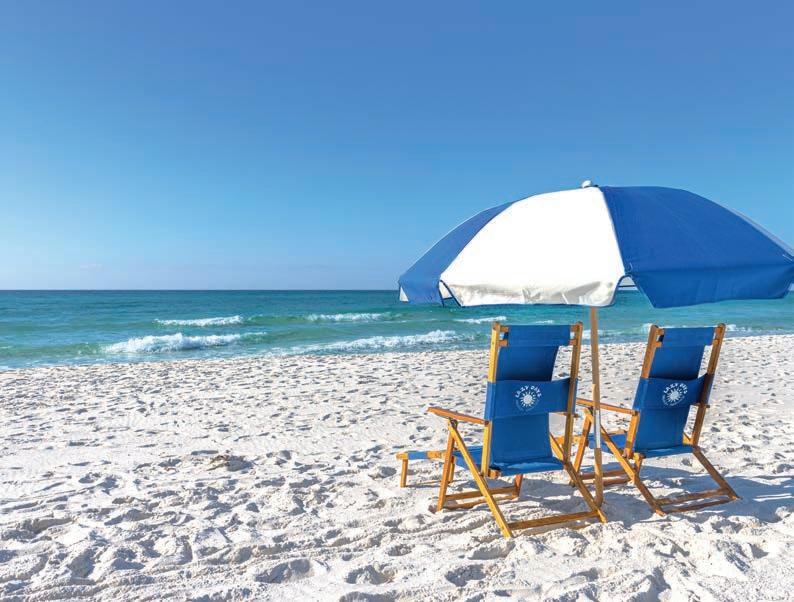
STAY
The Pensacola Beach Resort –thepensacolabeachresort.com Lily Hall – lilyhall.com
SEE Fort Pickens – nps.gov/guis/ planyourvisit/fort-pickens-area.htm
Historic sites – historicpensacola.org Condor Sailing Adventures –condorsailingadventures.com
The Blue Angels – blueangels.navy.mil
DINE
Brother Fox – brotherfoxsisterhen.com
The Grand Marlin – thegrandmarlin.com Flounders – flounderschowderhouse.com Crabs – crabsonthebeach.com
The Wharf Fish and Oyster Company –thewharffishco.com
Jaco’s Bayfront Bar and Grill –jacosbayfrontbarandgrille.com

Lily Hall conveniently located on the edge of the area we want to explore.
Downtown is centred around the beautifully preserved and vibrant Palafox Street (regularly named one of the best in America). Here, the Historic Pensacola Village, America’s First Settlement Trail and the Pensacola Museum of History bring the city’s past to life, while the streets buzz with independent shops, welcoming cafés, buzzing bars and a truly impressive line-up of restaurants. Which is handy, because all this exploring and salty air works up a healthy appetite. Pensacola’s food scene is flourishing – from easy-going beachside bites to sophisticated seafood spots and innovative fine dining. It is one of the unexpected highlights of our trip.
In fact, there are many unexpected high points. One moment we’re strolling the waterfront, sea breeze in our hair, the next we’re tucking into just-caught snapper, the freshest of oysters, blackened shrimp with creamy, cheesy grits and the legendary local crab cakes. We’re drifting through shady lanes lined with oak trees and wrought iron balconies, dipping into shops and cafés filled with local treasures and wondering how this place has managed to stay such a well-kept secret.
Pensacola may not shout about itself like some of Florida’s flashier destinations. But it is authentic, uncrowded, unspoilt and quietly dazzling. There’s history around every corner, soul in every bite, and the kind of warm Southern welcome that stays with you long after you’ve left. And it’s just waiting for you to discover it.
Flights to Pensacola with Virgin Atlantic from £507 per person, including a transfer in Atlanta. virginatlantic.com Find out what to do and see in Pensacola at visitpensacola.com










The Caribbean island of Aruba proudly promotes itself as One Happy Island. Located just o the coast of Venezuela, it’s celebrated for its pictureperfect white-sand beaches, dazzling turquoise waters and year-round sunny weather (it’s located outside the hurricane belt). And the warmth extends beyond the tropical climate to the people's hearts, making for an incredibly welcoming atmosphere. What else could you need in the pursuit of happiness?









Well there’s more. Aruba also o ers a unique blend of natural beauty and cultural richness. Beyond the beaches (rated as some of the best in the world), there’s rugged Arikok National Park, the island’s dramatic, untamed wilderness. For the active at heart there are watersports and hiking opportunities aplenty and foodies will discover an impressive array of restaurants serving surprisingly excellent and diverse cuisine.
Aruba also weaves a rich cultural tapestry reflecting its Dutch heritage intertwined with influences from Africa,
Latin America and the Caribbean and there are myriad colourful festivals to enjoy throughout the year.
Our two-centre break starts in Aruba’s high-rise hotel neighbourhood at the luxurious Marriott Resort & Stellaris Casino. It’s right on beautiful Palm Beach, with multiple pools, bars and restaurants, and proves to be the perfect base for exploring. There’s so much to see.
We sail around the island, snorkelling the colourful coral reefs and swimming in the balmy waters before enjoying an onboard
barbecue. We take to the hills by jeep for a bone-rattling, adrenaline-inducing tour of Arikok National Park. And we enjoy a rejuvenating meditation in the peace and beauty of the Aruba Butterfly Farm.
We take a walk through the charming town of San Nicolas, with streets featuring gorgeous street art, and stock up on restorative locally made aloe products at Royal Aruba Aloe. Of course we also enjoy plenty of beach time at the likes of Baby Beach, Mangel Halto and Eagle Beach. Aruba is home to seriously sigh-inducing beaches.

“it’s everything anyone could dream about from an island escape”
When it’s time to eat, we sample a range of fabulous restaurants across the island and one night we enjoy a private sunset picnic right on the beach. All uniquely special and delicious experiences.
For the second half of our stay we move to all-inclusive Divi & Tamarijn for a different vibe. This charming low-rise hotel has rooms scattered through the garden and overlooking the ocean. Ours is set right on the hotel’s beach and the view from our balcony takes our breath away. We’re just a few steps from that white powdery sand and bluest of blue sea and the characteristic divi trees catch the ocean breeze.
We take it down a gear and spend our days revelling in the luxury and beauty of our surroundings. From beach bed lounging to leisurely walks, dips in the ocean and sunset cocktails, it’s everything anyone could dream about from an island escape. Walking into the sea is like wading through the softest cotton wool: it’s warm and crystal clear and the azure shades are astounding. Pelicans dive for fish around us with speed and majesty.


There are five fine dining restaurants and more casual bars and grills to choose from. And the food is incredible, from Italian to Mediterranean, Mexican to classic international cuisine – and our favourite set-menu tapas with sunset views at Club Margot. We love the Pelican Bar, shaded by the divi trees, and hanging over the sea – the ultimate spot for bare-footed cocktails straight off the beach and early evening vino. We enjoy every facility at our oceanside utopia for four heavenly sunfilled days.
We leave Aruba sun-kissed and sandyfooted with smiles on our faces and that unique Aruban happiness and warmth enveloping mind and body. There’s no doubt this wonderful island lives up to its highly aspirational nickname.
Marriott Resort & Stellaris Casino marriott.com/en-us/hotels/auaar-arubamarriott-resort-and-stellaris-casino/ overview/ Divi & Tamarijn diviandtamarijnaruba.com Monforte Luxury Cruises monfortecruise.com ABC Tours abc-aruba.com Picnic Aruba picnicaruba.com
RESTAURANTS
Bohemian bohemianaruba.com Zeerovers facebook.com/zeerovers Lima Bistro limabistro.com West Deck thewestdeck.com

Scattered across eight idyllic Caribbean islands, discover our 17 breathtaking adults-only resorts. Enjoy creatively crafted cocktails and indulge in mouth-watering cuisine at up to 16 on-resort restaurants, all included within your stay. If you’re looking for a bit of adventure, look no further – we include that too with unlimited land and water sports. For the ultimate relaxation experience enjoy our award-winning Red Lane® Spas - each a tranquil sanctuary to rejuvenate and heighten all your senses. Here at Sandals Resorts we’ve been perfecting our holidays for over 40 years, leaving you to sit back, relax and enjoy all that’s included.



























With stunning sea views and superb dining options, Mayia Exclusive Resort & Spa o ers Rhodes hospitality and high style


LIBBY NORMAN


“We lean in to the stress-free life. There's everything you could want here on resort”

Tucked away on Rhodes' scenic southeast coast, H Hotels' Mayia Exclusive Resort & Spa is a thoroughly modern take on Greek hospitality. It's cleverly designed to catch the sun and sea breezes and deliver stunning views of the Mediterranean from almost every location.
The resort sweeps down the hill to the sea in a bold and futuristic design, although with clever nods to classical Greek architecture. As soon as we arrive in the lofty lobby with shimmering marble floor and lavish arches framing the blue sky and even bluer ocean we can see the attention to detail. It's cool, calm and incredibly restful.
Our Deluxe Room is designed on similar lines, with a muted palate, large and comfortable bed, luxurious bathroom and soft drapes to provide shade from the dazzling sun. Step outside and we are on our own sundeck with views down to the ocean below and a long pool – shared with a select group of neighbours – where we can start the day with an invigorating lap or sip sundowners after a hard day's sunbathing.
While our private spot is delightful, the enormous freshwater twin pools a level below are something else. There's plenty of space if you're a serious swimmer, and with no shortage of loungers and umbrellas if your style is more sedentary. You can walk all the way down the hill to the ocean and private beach from here or ride the super-e cient lift.

This is an adults (16+) super all-inclusive resort, and that means minimal stress and maximum temptation to indulge. And we do. Daytimes are spent lounging by the pool with lunches at either the pool restaurant (superb pizza) or Street Food Corner. There, we tuck in to healthy sandwiches, delicious kebabs and sweet treats from the gelateria and patisserie. It's hard to resist popping back for a midafternoon snack. The pool bar is a popular spot for lunchtime drinks and sundowners but then there are nine watering holes to choose from – ranging from the laidback beach bar to the fantastic Del Mar with its panoramic views of sea and sky – so you will find more than one favourite spot. The bar sta here are fantastic and no cocktail, however obscure, seems too big an ask.
Indulgence continues at evening meals, with five restaurants (three à la carte) to choose from. We love the herb-rich Greek dishes at Thymari and the classic trattoria fare at Al Dente. While we don't get round to making a reservation to the highly rated Wasabi, we do sample the chefs' prowess at the Waterfront main restaurant, where sushi and sashimi are perfectly presented. Far Eastern sits alongside a tempting range of other culinary specialities – from hearty Greek-style roast lamb to pasta and the catch of the day. There's also an excellent selection of international cheeses and a dizzying display of pastries and puddings – including my favourite, morsels of honeyed Baklava.
We lean in to the stress-free life. There's everything you could want here on resort, including a superb spa, and plenty to do in the local area. You can snorkel straight o the beach or book a boat trip from there to the rugged island of Symi. Mayia is within walking distance of Kiotari's main resort area and larger beach and a short taxi ride from the island's most celebrated village,

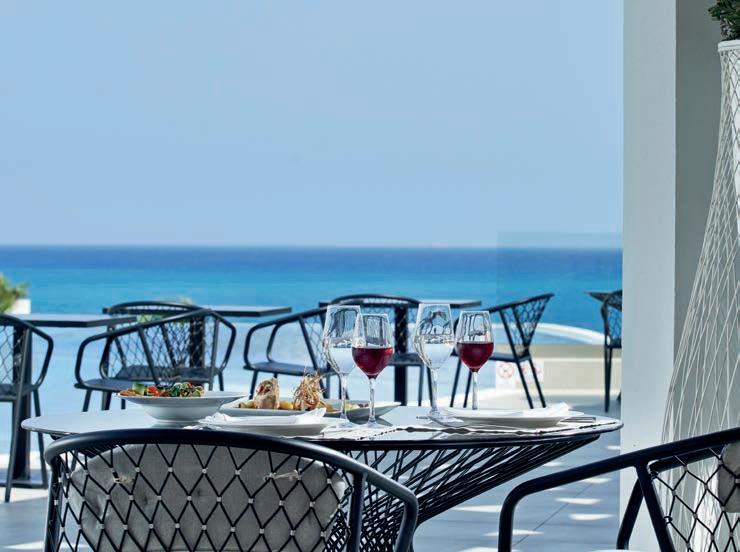
“There are nine watering holes – from the laidback beach bar to Del Mar, with its panoramic views”

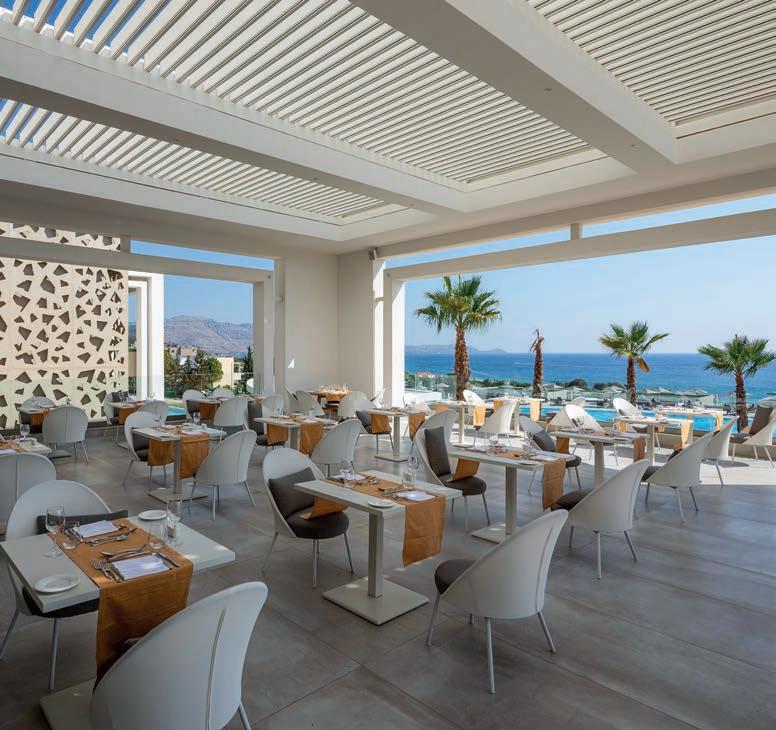
Lindos. Its hilltop acropolis is a climb best done early or late in the day, but you are rewarded with superb views. Lindos' maze of narrow streets are perfect for browsing for crafts and souvenirs, and with delightful rooftop cafés and restaurants.
We love our evenings alfresco on resort, enjoying cooling sea breezes and excellent service and entertainment. Forget cheesy resort singers, we're treated to great sets by young artists in both the main bar and pool bar – one band plays to us and a loyal local following. There's also live entertainment in an open-air amphitheatre and a night club if you want to keep partying into the small hours.
Towards the end of our trip, we're treated to a VIP floating tray breakfast in our room. A tray of table-like proportions is set sail in our pool. Bathers and shades on, and still groggy from sleep, we slide into the water to feast on fresh pastries, local honey, strong Greek coffee, yoghurt and fruit. With the thoughtfully provided champagne, we make a toast to marvellous Mayia – our utterly indulgent Rhodes retreat guaranteed to restore both body and soul.
Mayia Exclusive Resort & Spa hhotels.gr/mayia
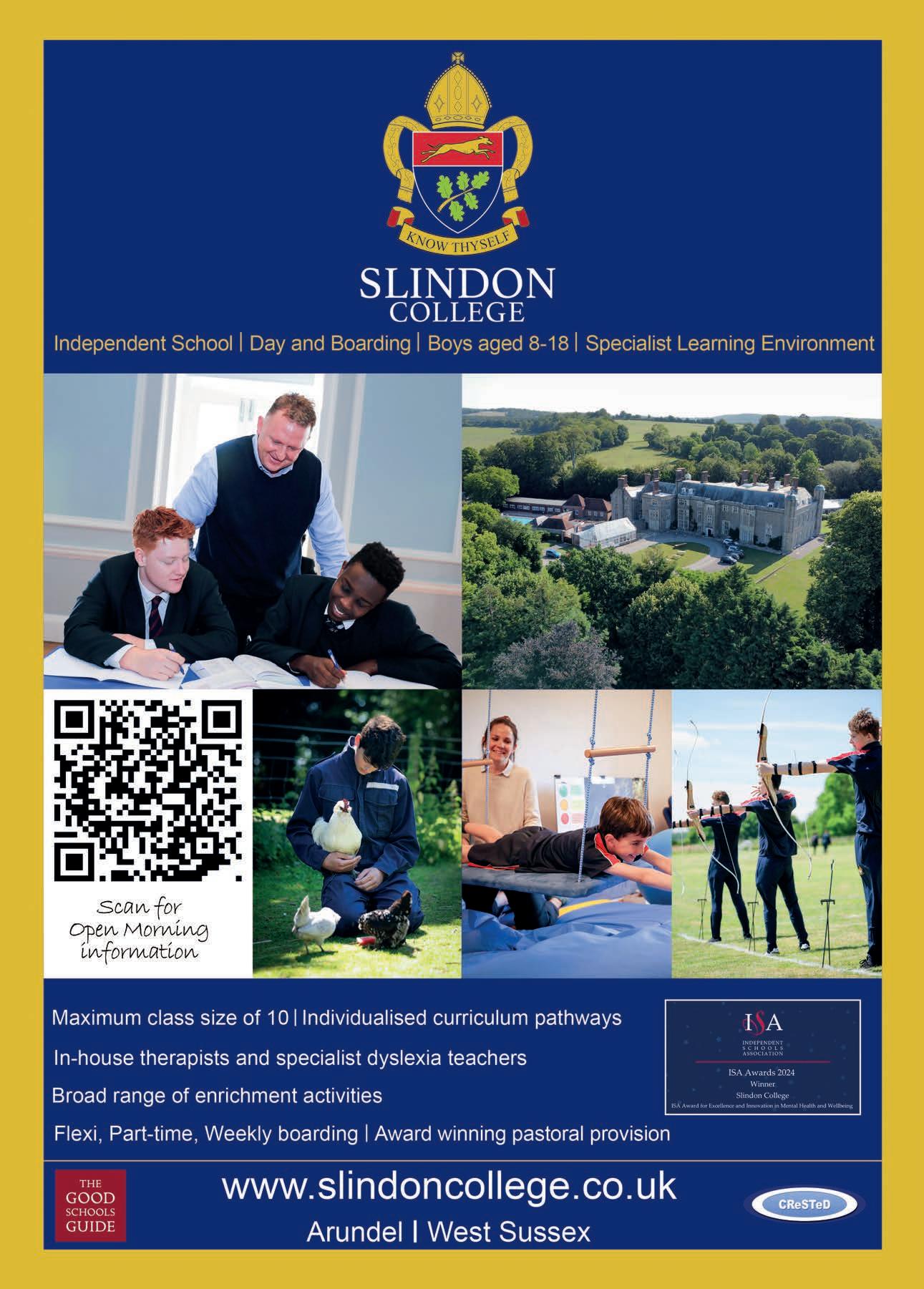

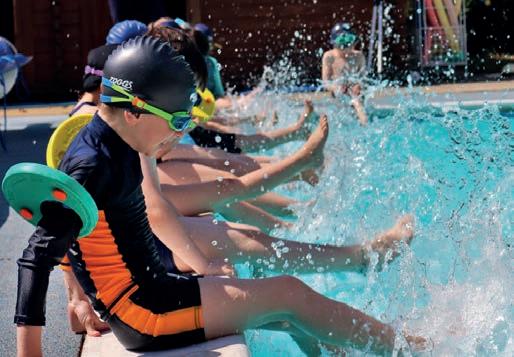

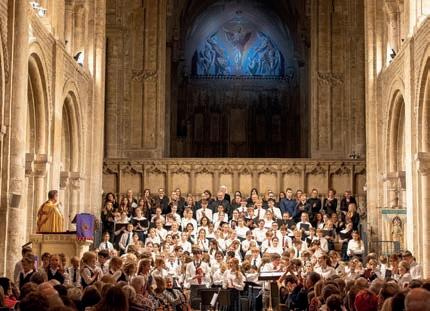
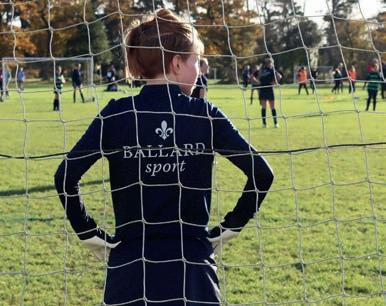
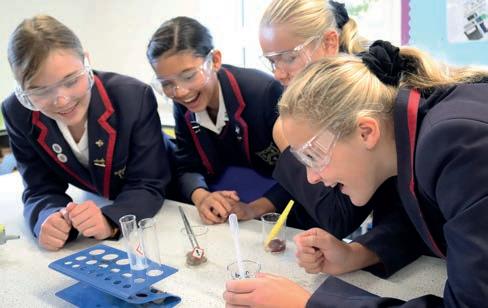



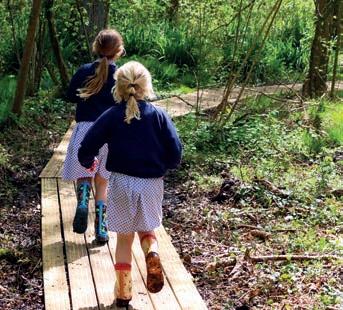






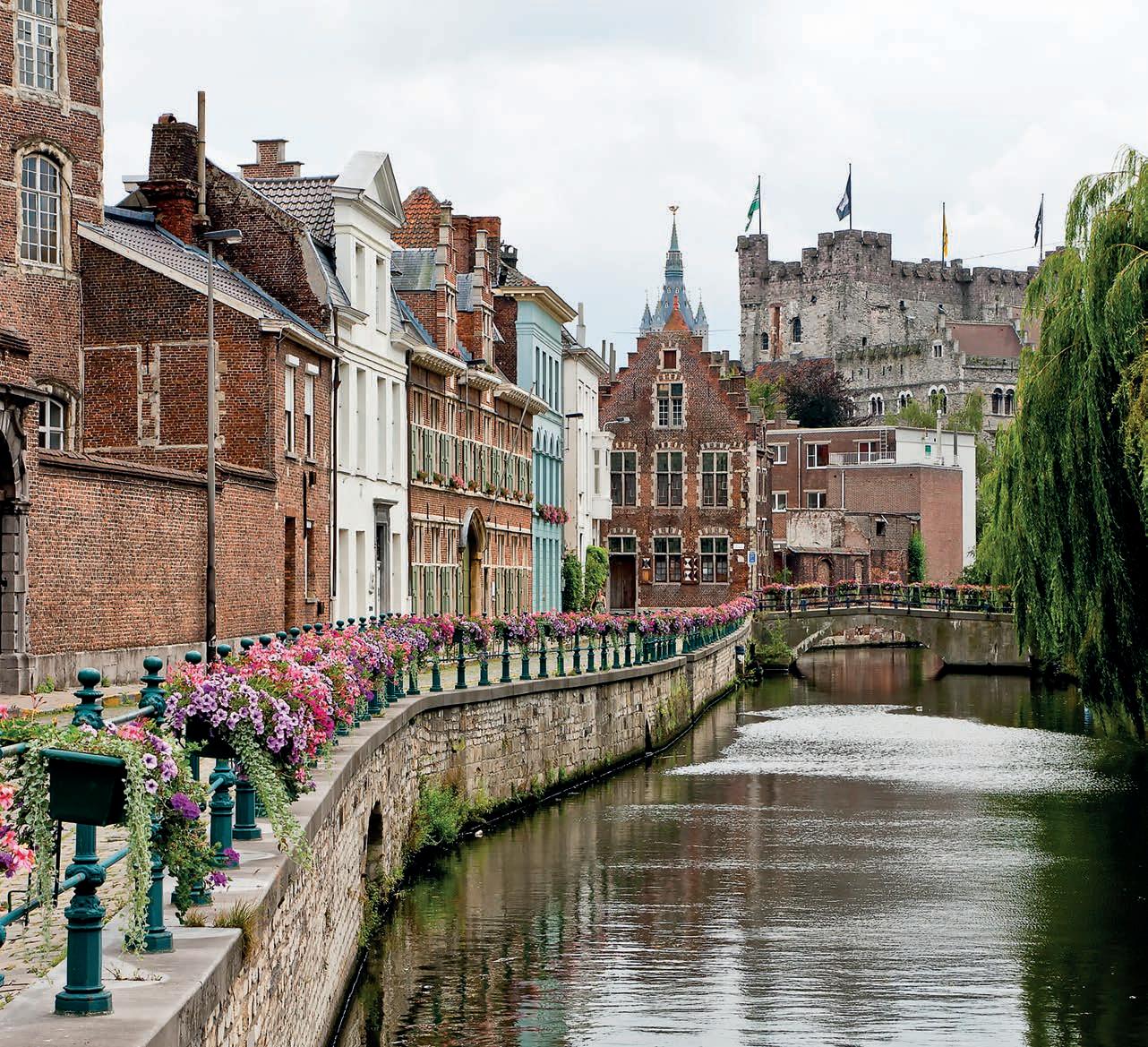
A barge journey through Belgium's waterways is slow travel at its best, revealing painterly landscapes and rich regional history
Sailing any inland waterway is a uniquely tranquil way to experience countryside at a much slower pace. But on this rather special journey, we're heading through the heart of Europe by gliding gracefully along Belgium’s canal network. These canals – historic trading routes – traverse both Flanders and Wallonia, so the voyage offers a refreshing departure from the usual frenetic pace of modern travel. Just like the trusty barge managing this stately journey, we are invited to decelerate and drink in life on the water.
Our journey starts at London’s King’s Cross, where we are whisked away on Eurostar to Brussels – a two-hour journey and no airport hassle. We transfer seamlessly to the MS Raymonde to

start our CroisiEurope hotel barge trip. This journey takes us from Strépy to Ghent – uncharted waters for us but, as we soon discover, there’s plenty to see along the way.
We receive a hearty welcome from Hans, our multi-faceted Cruise Director, one of six staff on board ready to take care of us. Hans turns out to be an excellent host. He's our source of information, storyteller, mixologist and, unexpectedly, a talented singer.
The MS Raymonde is boutique but lovely. There are 11 compact cabins with plenty of cleverly designed storage space and a surprisingly large ensuite with shower off our cabin. Onboard facilities include a restaurant, lounge bar, sun deck with loungers, and a relaxation area with – to our delight – a hot tub.
Barge life is all about serenity and you can't help but slow down. Most mornings are spent cruising to our next destination, with afternoons to explore and evenings spent relaxing on board. We travel 152 kilometres and, at this delightfully relaxed pace, can take tours of Brussels, Mons, Oudenaarde and the beautiful Flanders capital Bruges.
Along the way, we visit Chateau de Beloeil, Chant d’Eole vineyard, and Braeckman Distillery. There's also ample opportunity to taste Belgium's local delicacies, including chocolate, sparkling wine, beer, jenever and gin. All excursions (and food and drinks onboard) are included in the upfront price and everything, but everything, is organised for us. This makes travel about as stress-free an experience as it gets. Canal cruising turns out to be fascinating. One of the highlights is traversing an engineering marvel – Strépy-Thieu boat lift – an extraordinary feat of design and the second largest funicular boat lift in the world. That's not the only engineering marvel, as we navigate a complex series of locks on our journey through towns and woodlands. The precise mechanics of it all remain something of a mystery to me – even after Hans' and team's explanations – but it all adds to the feeling of adventure and it's a joy to experience. As is life onboard. We wait with anticipation for Hans to ring the bell that signals the start of cocktail hour. Chef emerges from the galley before every meal to announce the day’s menu. The cuisine
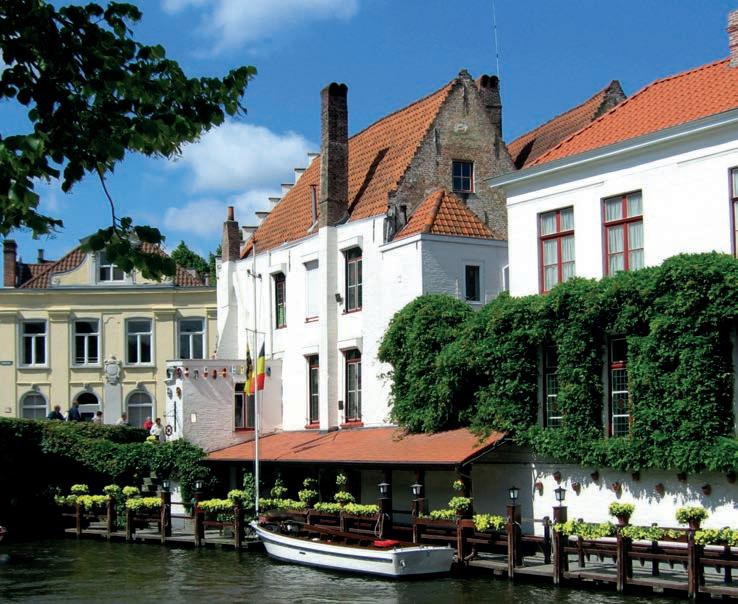
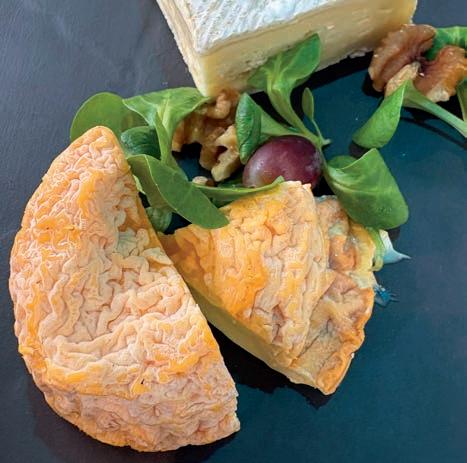

"Barge life is all about serenity – you can't help but slow down"
is consistently superb, with impeccably executed classic French sauces, regional specialities and, at every lunch, a most delicious cheese course that quickly becomes a culinary talking point.
There are quizzes to keep us engaged, along with ample time for reading, and refreshments on tap. On such a small-scale shared adventure, it doesn’t take long for friendships to blossom – it's a convivial journey with fellow ‘bargers’. And seeing the country at this pace is a wonderfully restful way to absorb the sights and regional flavours of Belgium, with historic sights and painterly landscapes that feel as timeless as our delightfully slow-lane trip.
CroisiEurope journeys aboard MS Raymonde for 2026 from £2,783. The seven-day barge trip starts at Halle and stops at Strépy-Thieu, Mons, Péronnes-lez-Antoing, Oudenaarde and Ghent. croisieurope.co.uk







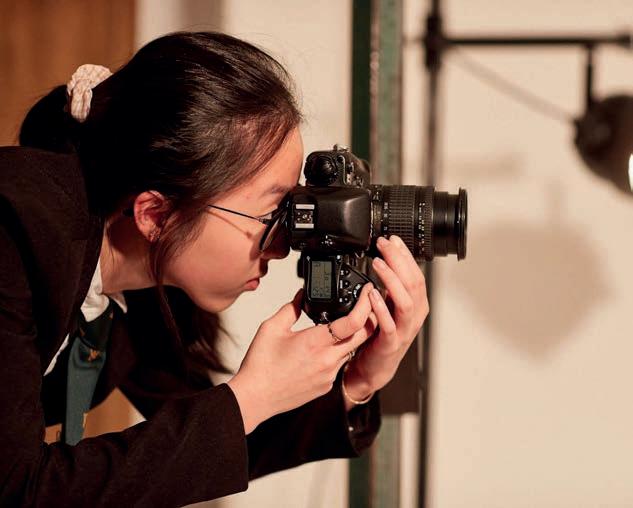




Boarding places from only £5,000 per term* (education is state-funded, fees cover boarding only; 0% VAT on fees)






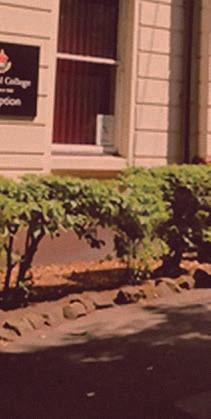

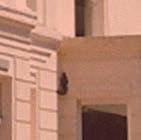
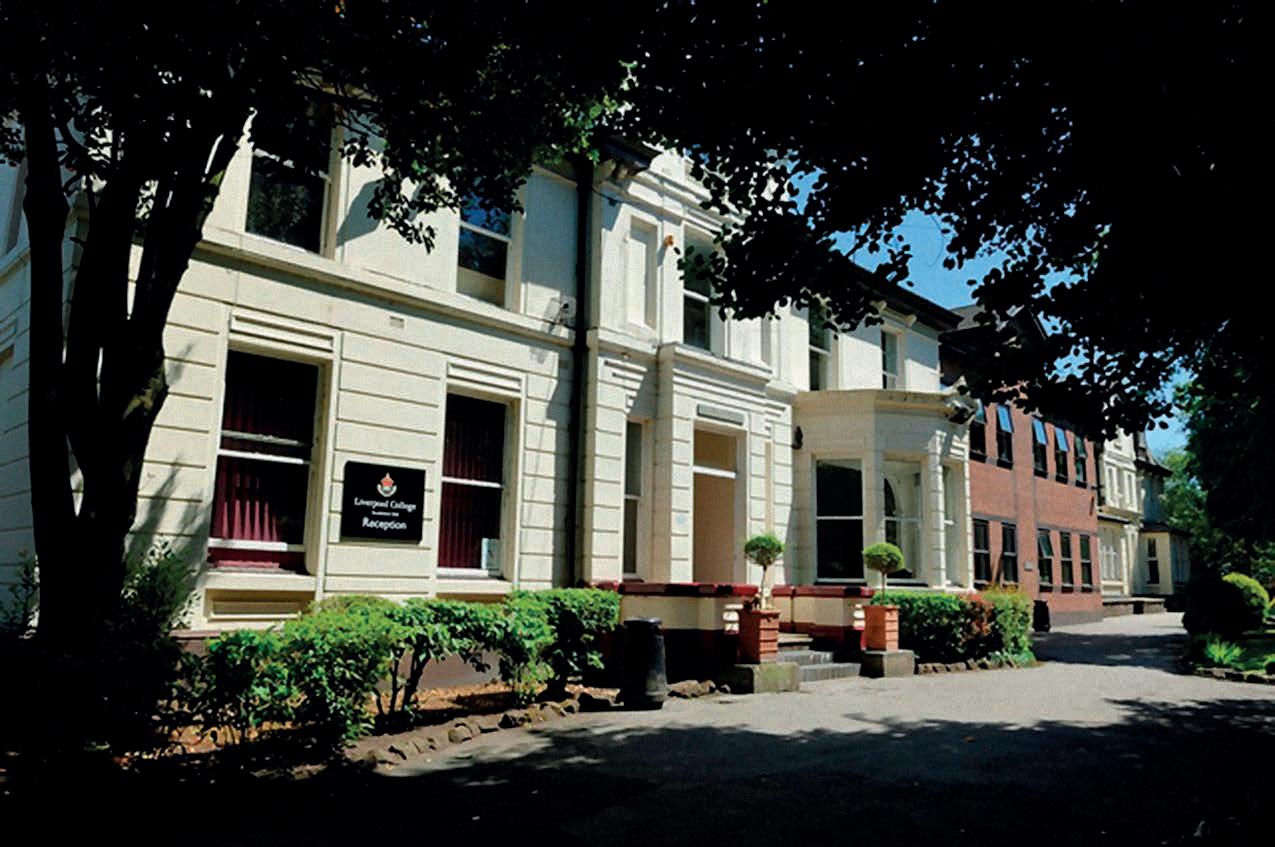





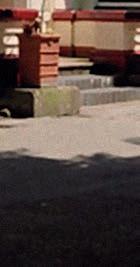
SCAN THE QR CODE FOR MORE INFORMATION


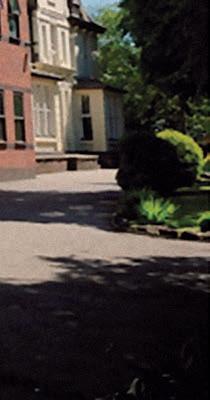
Located in Liverpool, one of the UK’s most vibrant and cultural cities 45 minutes from Manchester International Airport
Co-educational boarding and day school from Year 7–13
Excellent academic outcomes and university progression
Rich programme of sport, music, drama, and leadership opportunities
A warm, family-style boarding community with strong pastoral care
Diverse and inclusive — welcoming students from across the UK and worldwide
www.liverpoolcollege.org.uk |





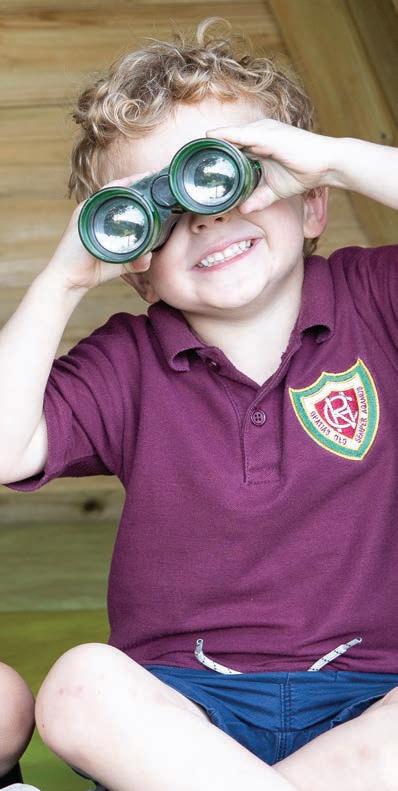



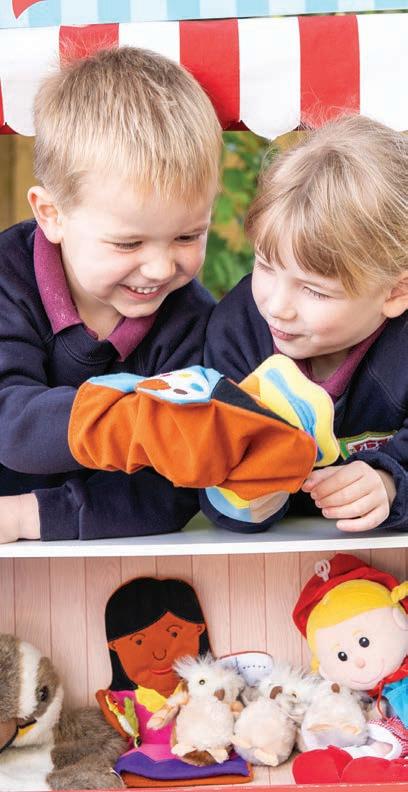










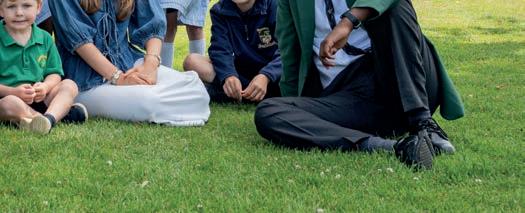






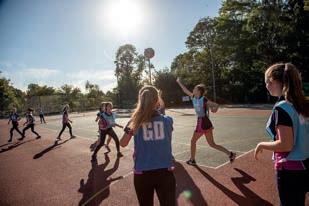













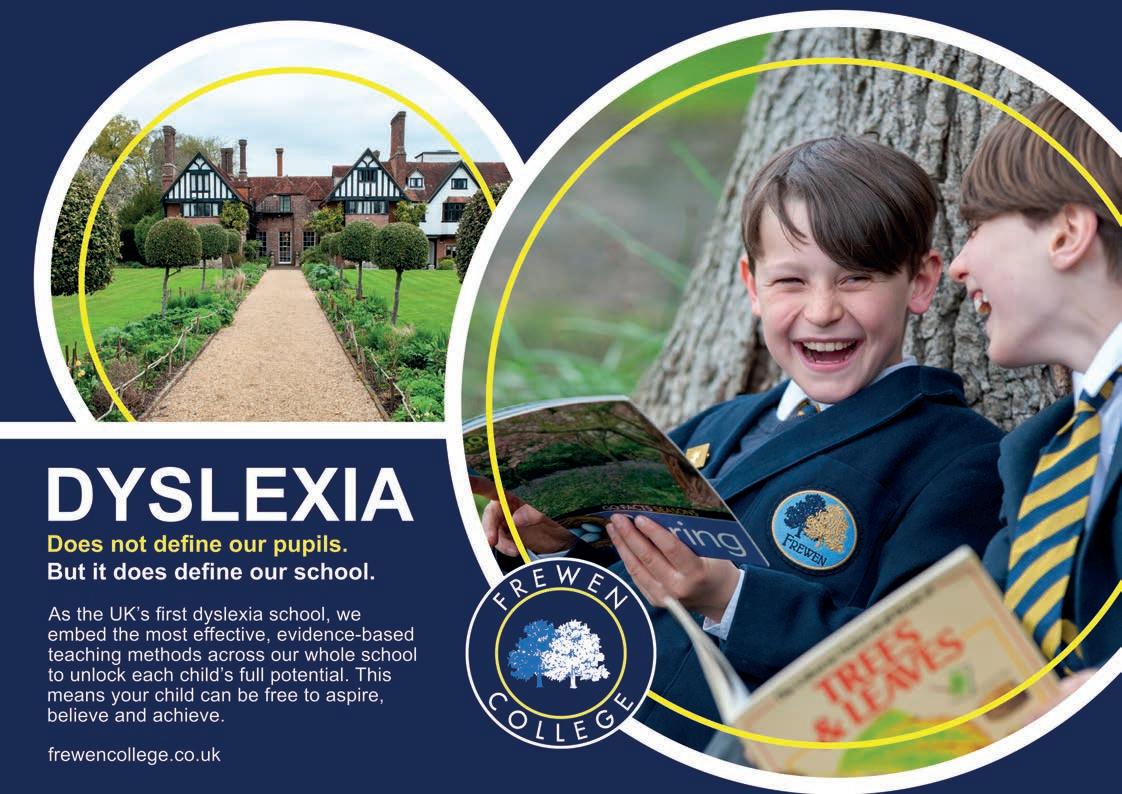

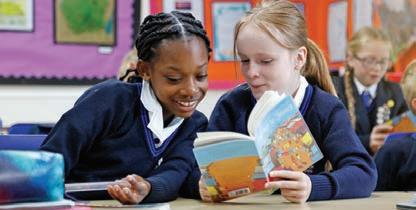
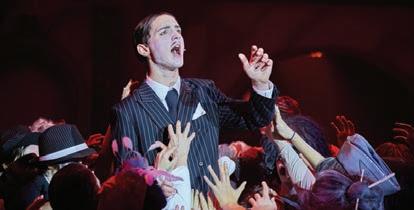
We warmly invite students to discover the benefits of an inspiring education here at Taunton School and apply for our scholarship opportunities with 2026 entry into Year 7, Year 9 and Sixth Form.





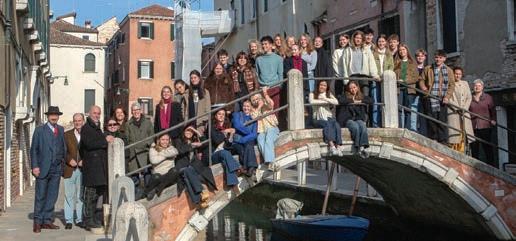
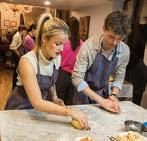






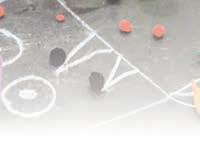




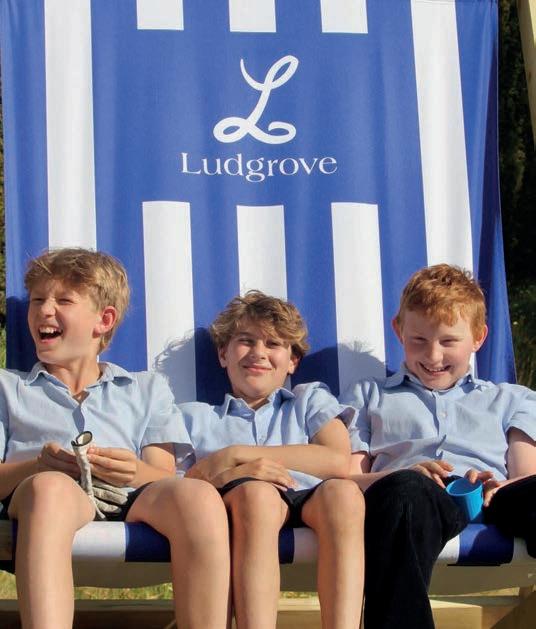

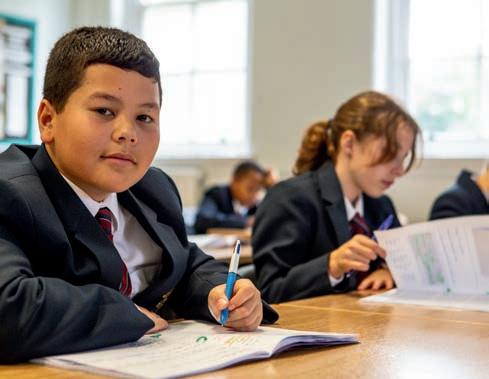
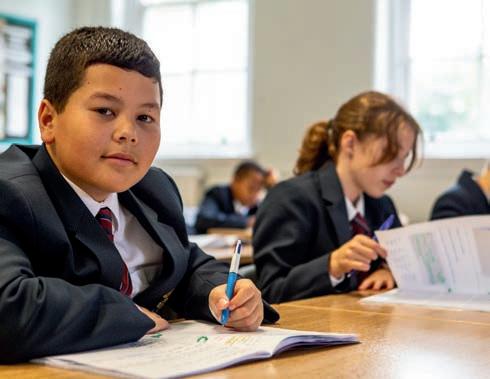



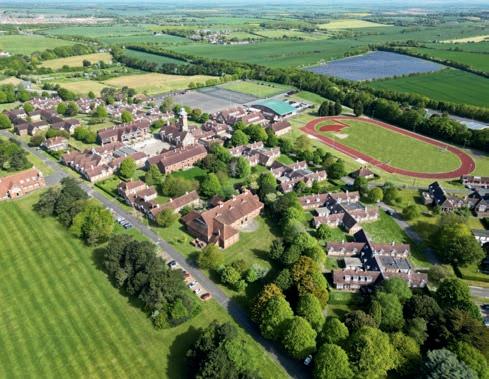


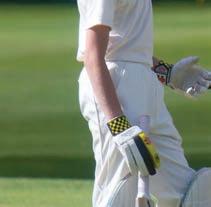
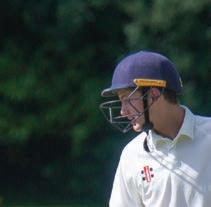



seconds with 60
The Headmaster of Royal Hospital School in Suffolk on his background and educational philosophy
What is your background?
I was educated at Emanuel School in London, where my passion for Chemistry was first ignited (pun very much intended!). I went on to study the subject at King’s College, London and began my career teaching Chemistry at The Haberdashers’ Aske’s School for Boys. Very quickly, I realised that education is about far more than the subjects we teach – it is about shaping lives. Since then, I have held senior roles in both day and boarding schools, including Senior Housemaster at Whitgift, Head of Science at St Benedict’s, Deputy Head (Academic) at Bedford School, and Headmaster at Sexey’s. Before joining the Royal Hospital School in September 2024, I spent several years leading DLD College London.
What is your school’s approach and what sets it apart?
The Royal Hospital School is unique in blending tradition with innovation. We have a proud naval heritage but we are also forward-looking, equipping pupils with the skills to thrive in the 21st century. Our pupils can be found excelling in the sciences, on stage, in the concert hall, at sea or even in e-sports. Our optional Saturday programme ensures that weekends are as enriching and exciting as the weekdays. Community is central at RHS: respect, honour and service are the values that bind us together.
What excites you most about your role at the Royal Hospital School?
No two days are ever the same. Whether I’m talking to a Year 7 on their first day, cheering from the touchline or debating strategy with senior staff, I am constantly inspired by the energy of our pupils and the dedication of our teachers. The best part is seeing young people surprise themselves with what they can achieve.
What is your academic philosophy?
Exams matter, of course, but education is about much more than grades. We want every pupil to leave us with intellectual curiosity, resilience,
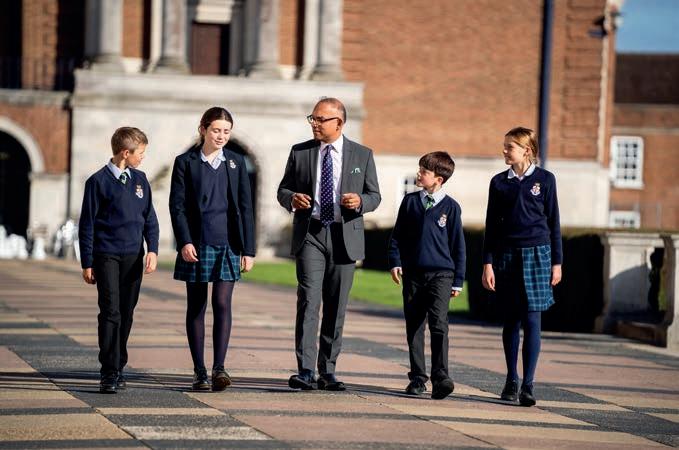
and empathy. Our aim is to nurture not only scholars but also musicians, sailors, athletes, artists, actors and, above all, good citizens. True education transforms the individual and, in turn, the communities they go on to serve.
Can you describe one pivotal moment in your career?
It was as Principal of DLD College London. Leading a school in the heart of a global city taught me the true importance of diversity, inclusion and innovation. I saw firsthand how transformative education can be when it embraces every kind of learner and celebrates difference. That belief continues to shape my leadership today.
What makes a great student?
Someone with curiosity, kindness, and
the courage to have a go – whether that’s answering a tough question in class, singing solo in Chapel, or trying a sport for the first time. Enthusiasm and openness will take a young person further than any single grade.
What makes a great school?
A great school knows its pupils as individuals. It challenges them, yes, but also supports them through the inevitable ups and downs of growing up. Culture is key. The very best schools create a sense of belonging where pupils feel seen, heard, and encouraged to take risks. It’s an atmosphere where ambition sits comfortably alongside warmth, humour and genuine care – helping young people to thrive academically and personally, while developing the confidence and integrity to guide them in life beyond school.
“I saw firsthand how transformative education can be when it embraces every kind of learner – that belief continues to shape my leadership today”





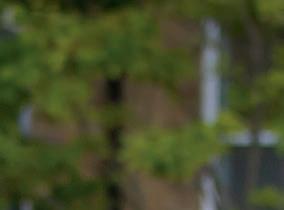





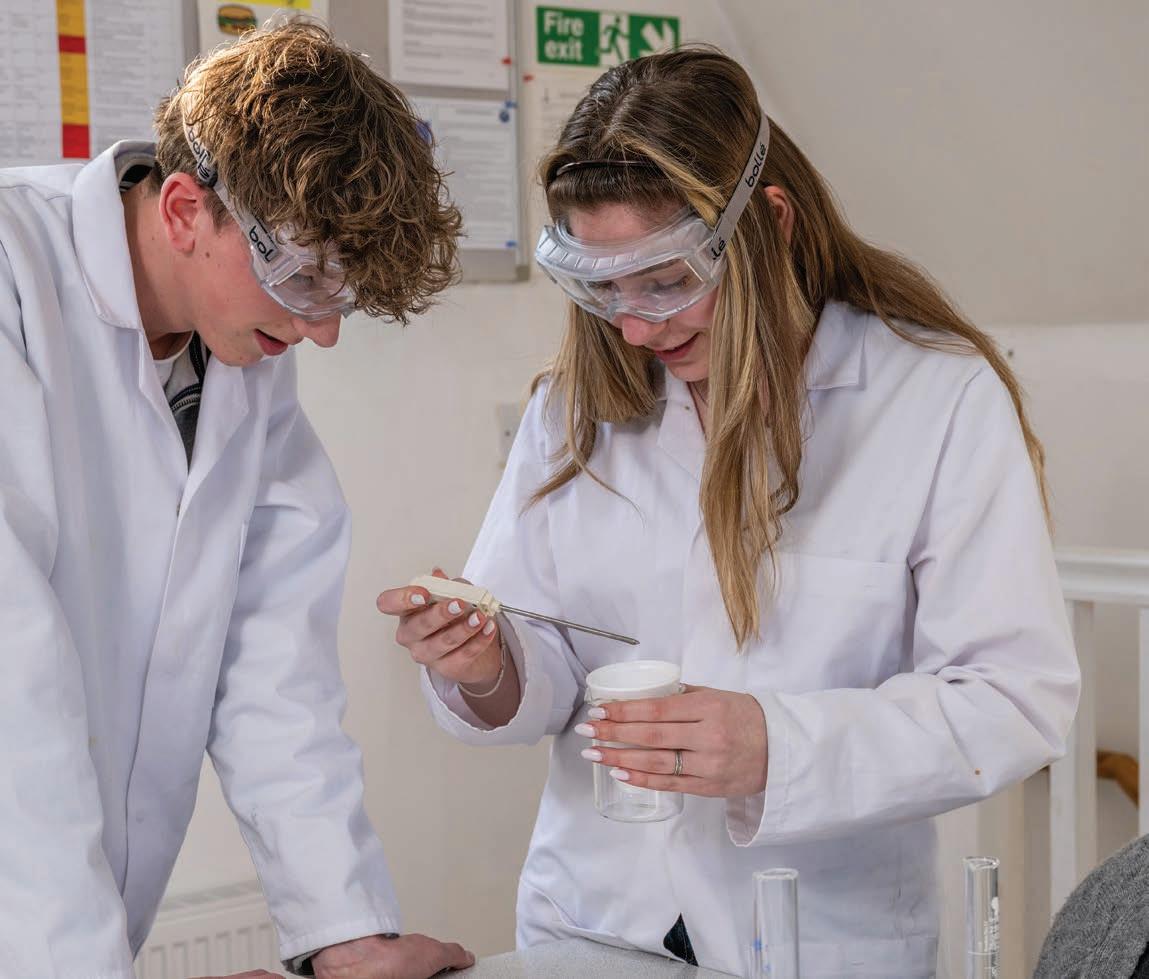
When it comes to a good education, one size does not necessarily fit all. At MPW, one of the UK’s best-known names in fifth and sixth-form education, we have been offering a distinctive alternative to traditional schools for 50 years.
A levels and GCSEs in over 40 subjects, plus retakes and Year 12 transfers
Personal tutors providing individual academic and pastoral support
Oxbridge-style tutorial groups with nine students or fewer
Excellent results and progression to top tier universities
Best in class inspection reports from the ISI and Ofsted
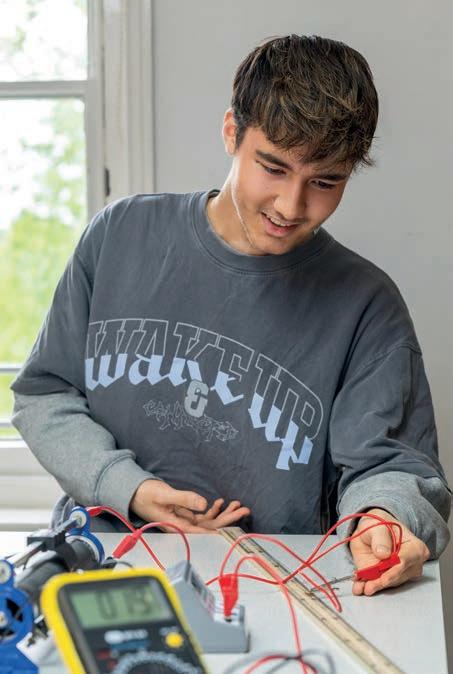
The small class sizes were hugely beneficial to my learning, providing an excellent foundation for a strong professional relationship between students and teachers.
James achieved A*A*A* at A level and is now reading English Literature at the University of York